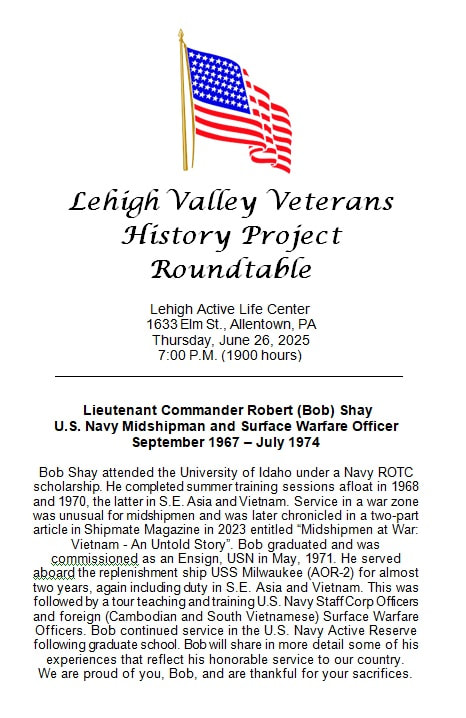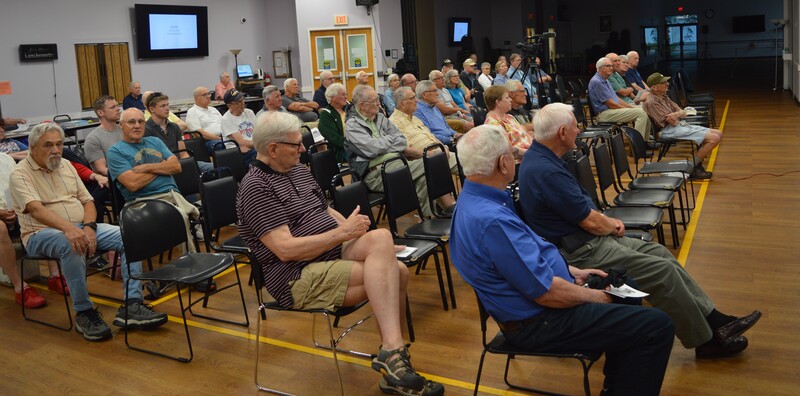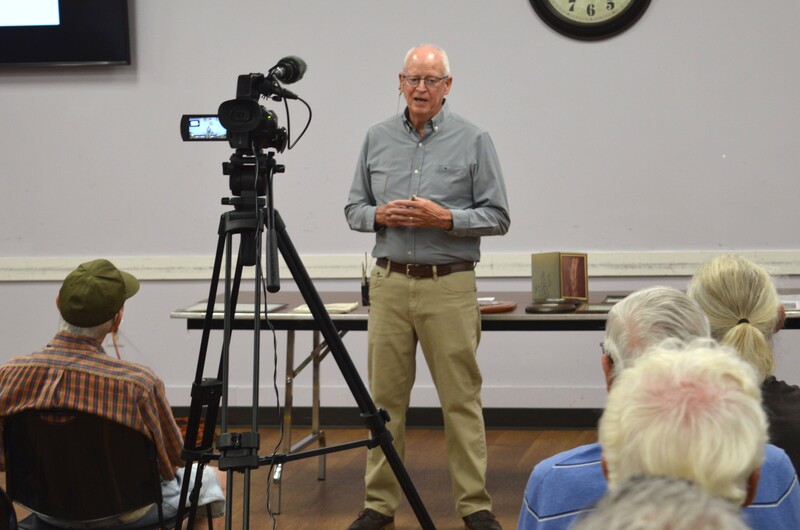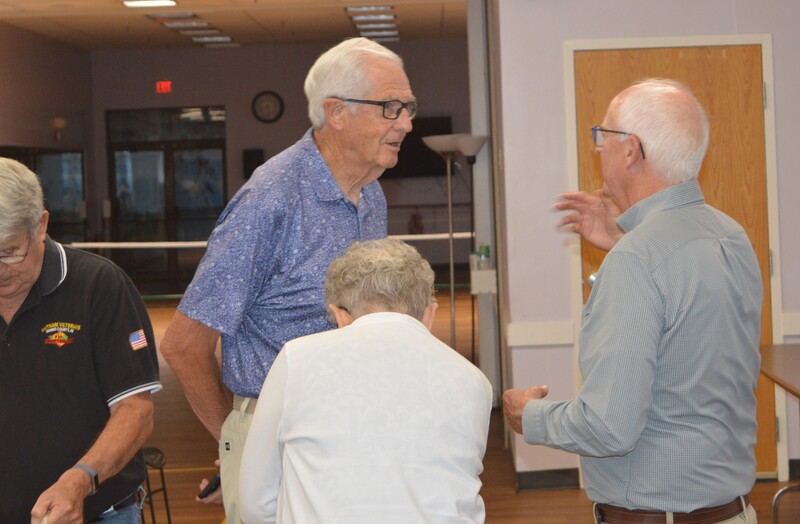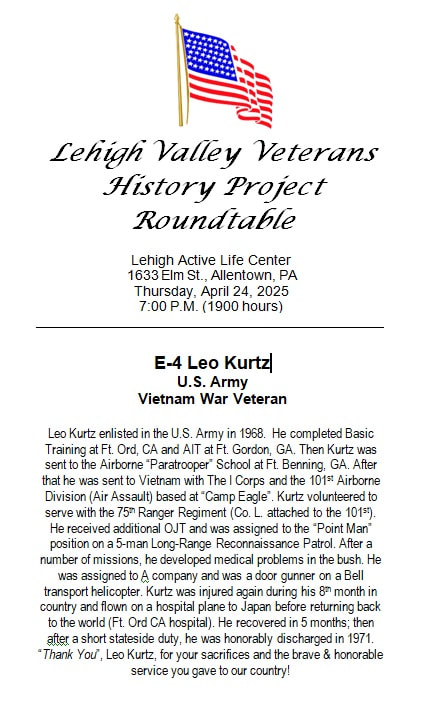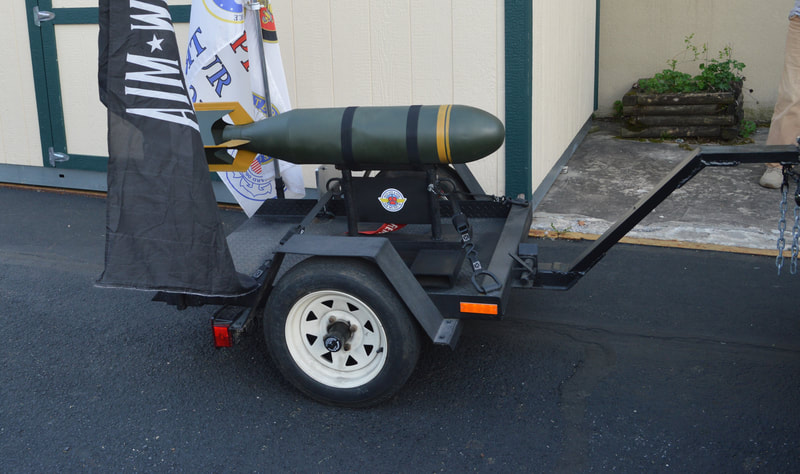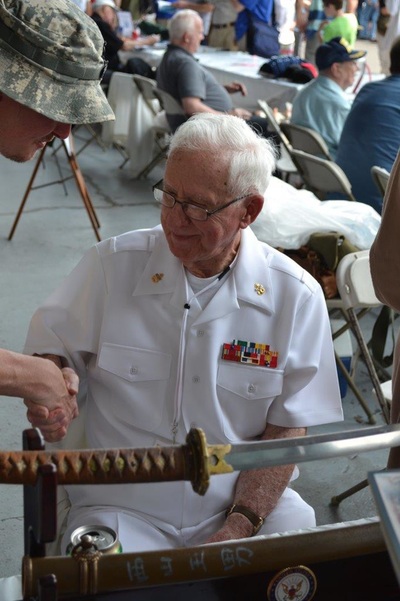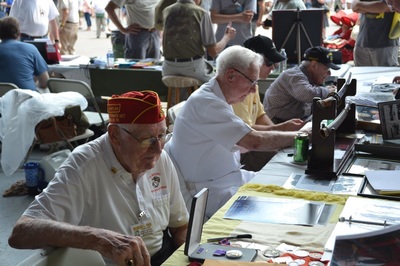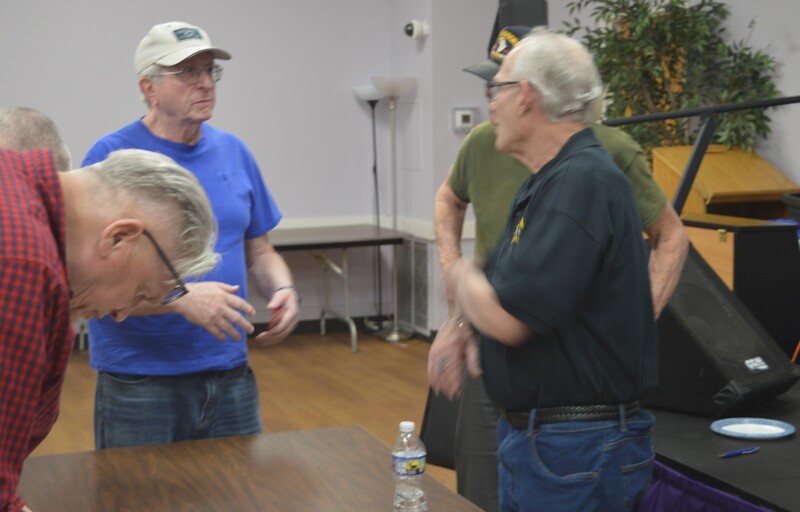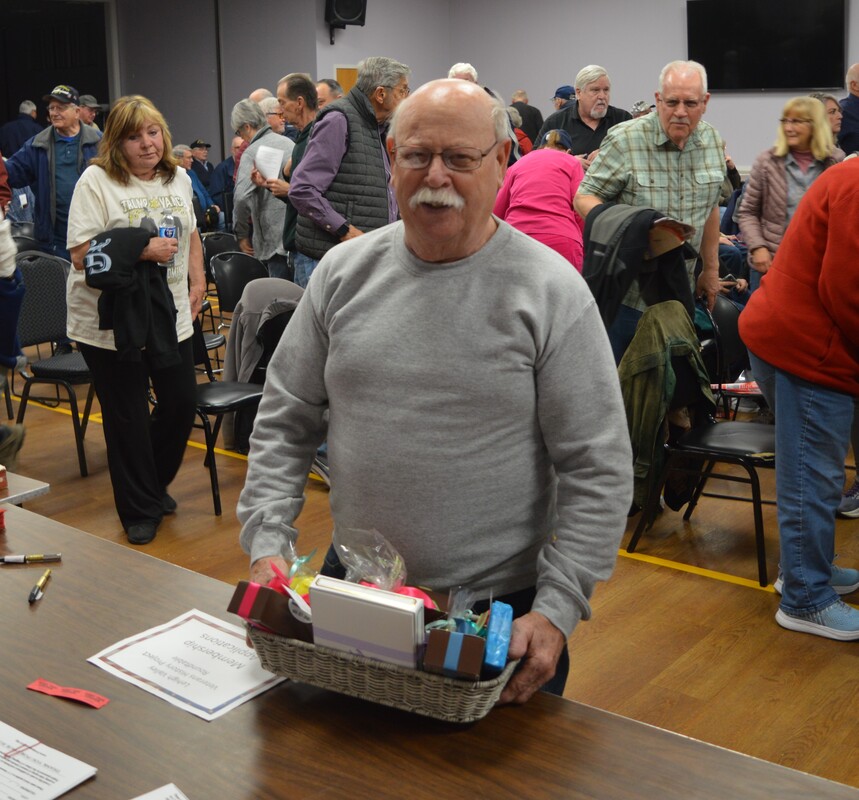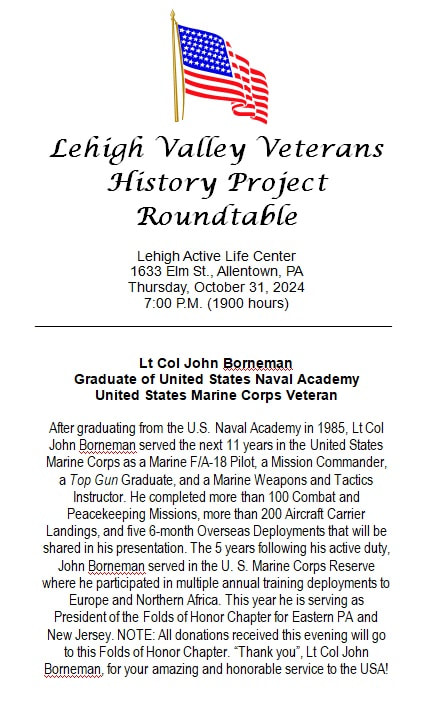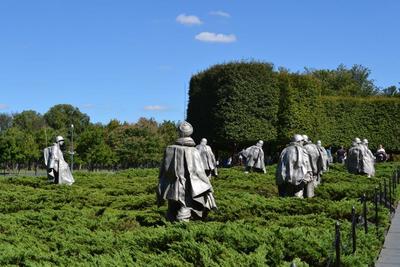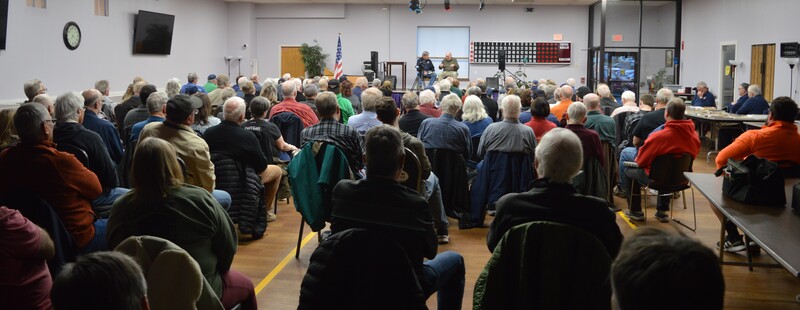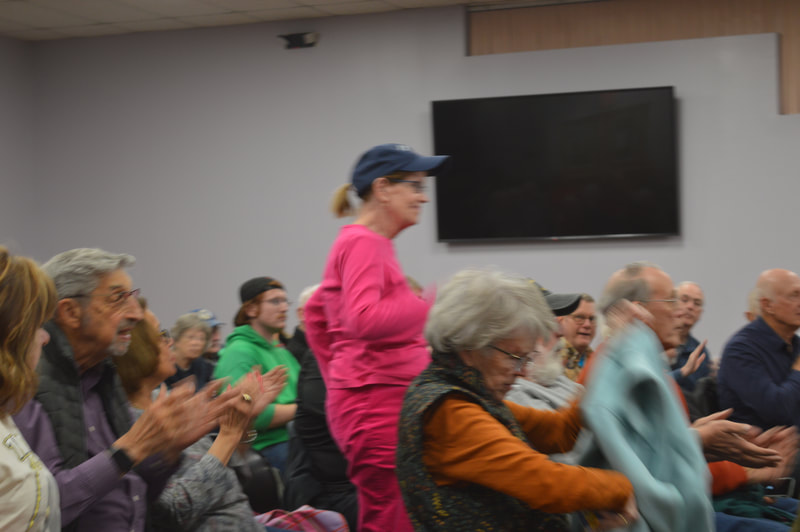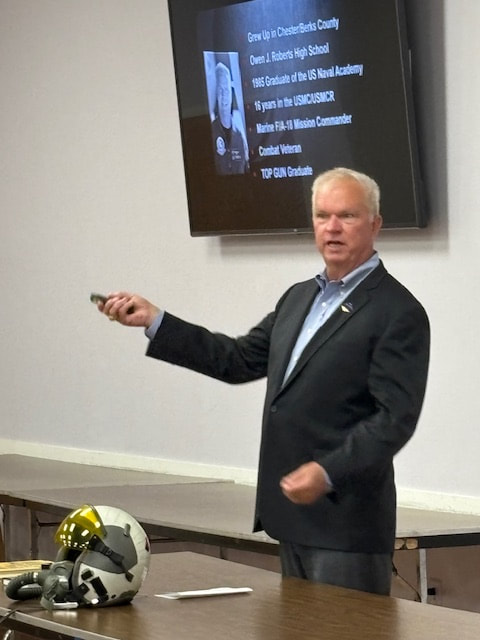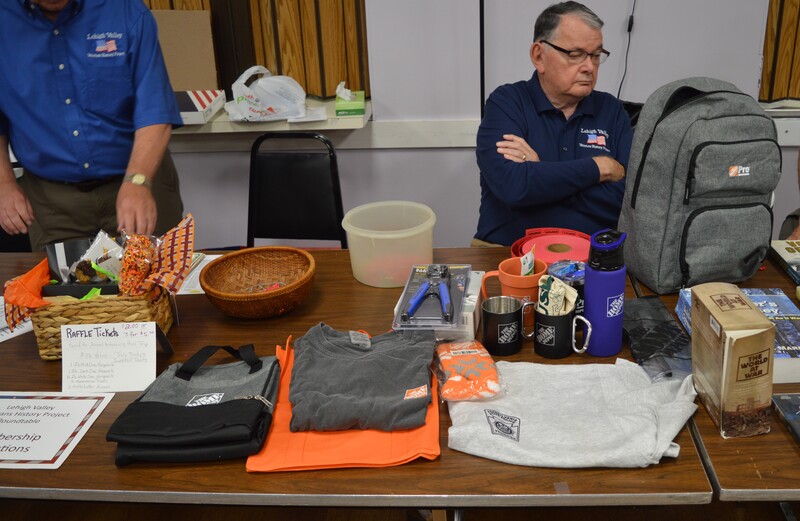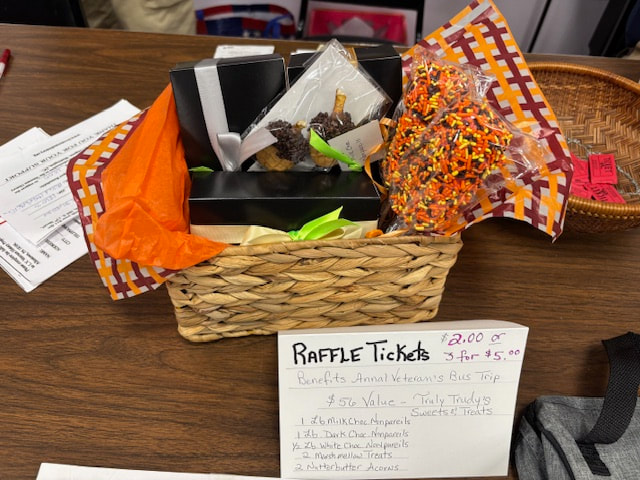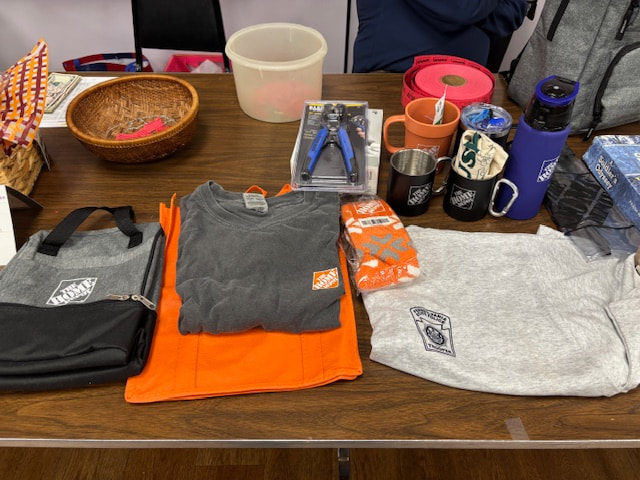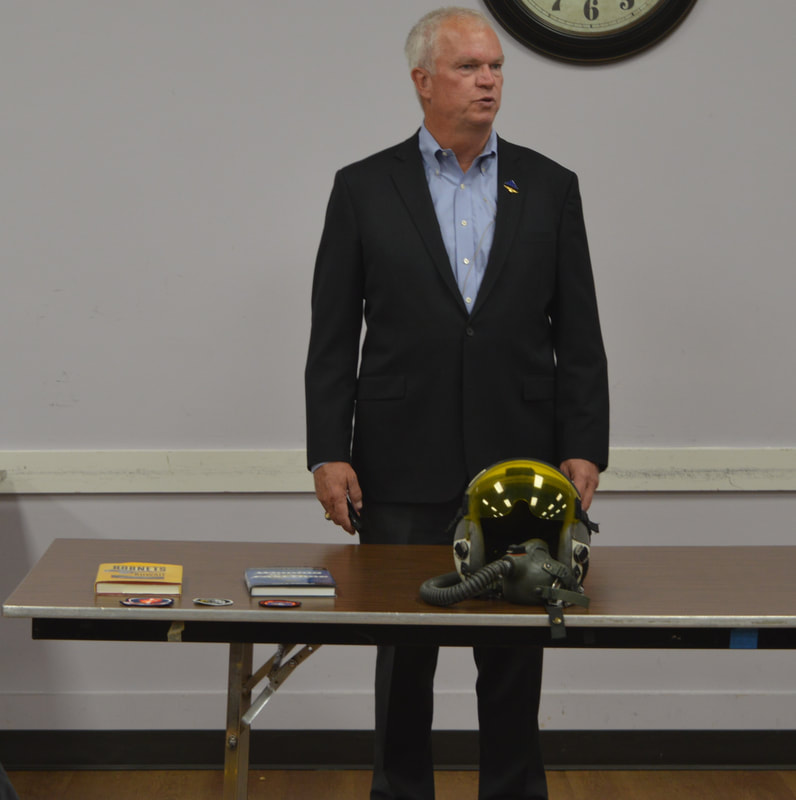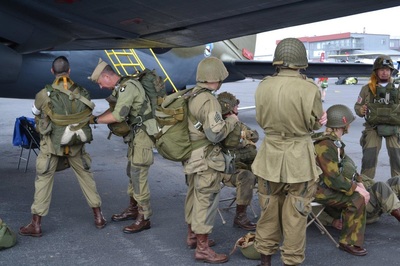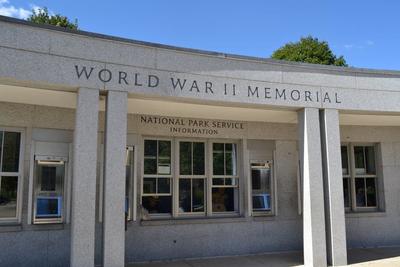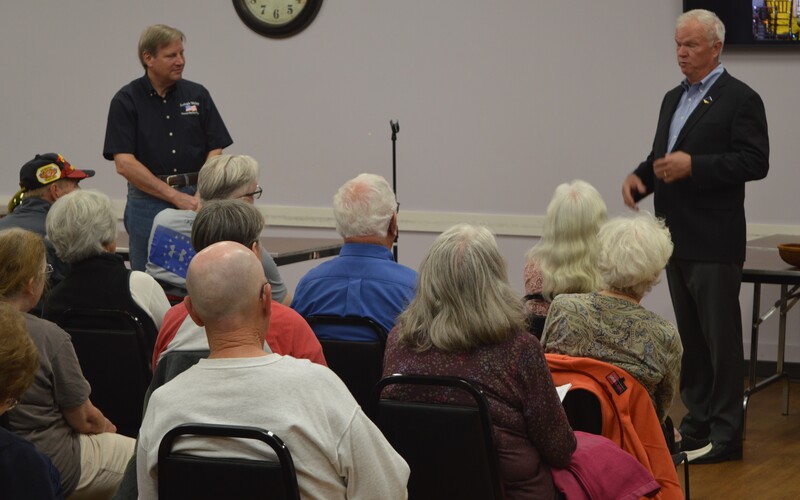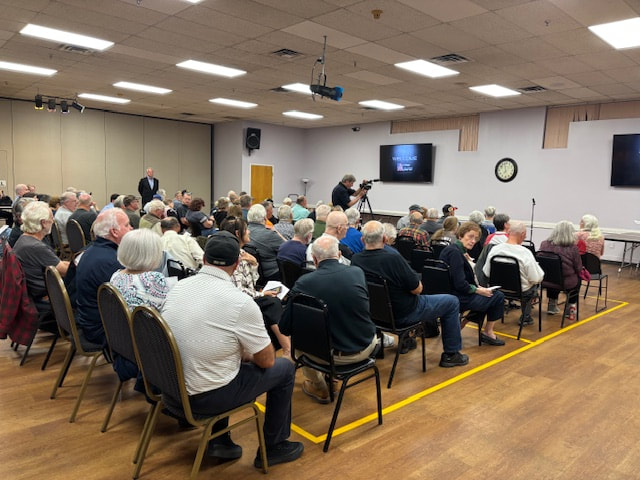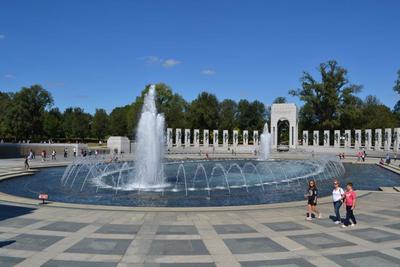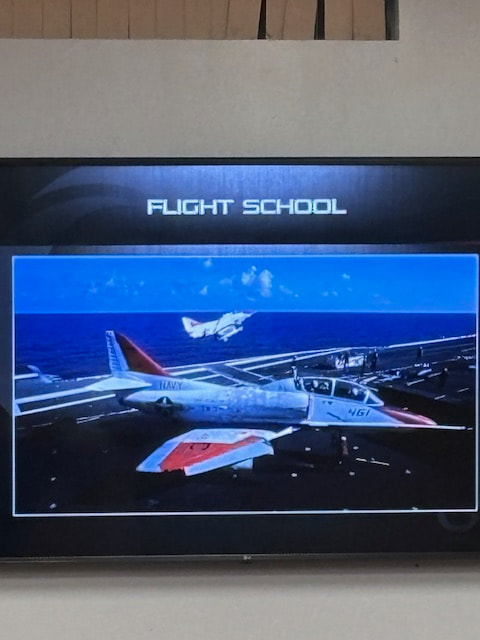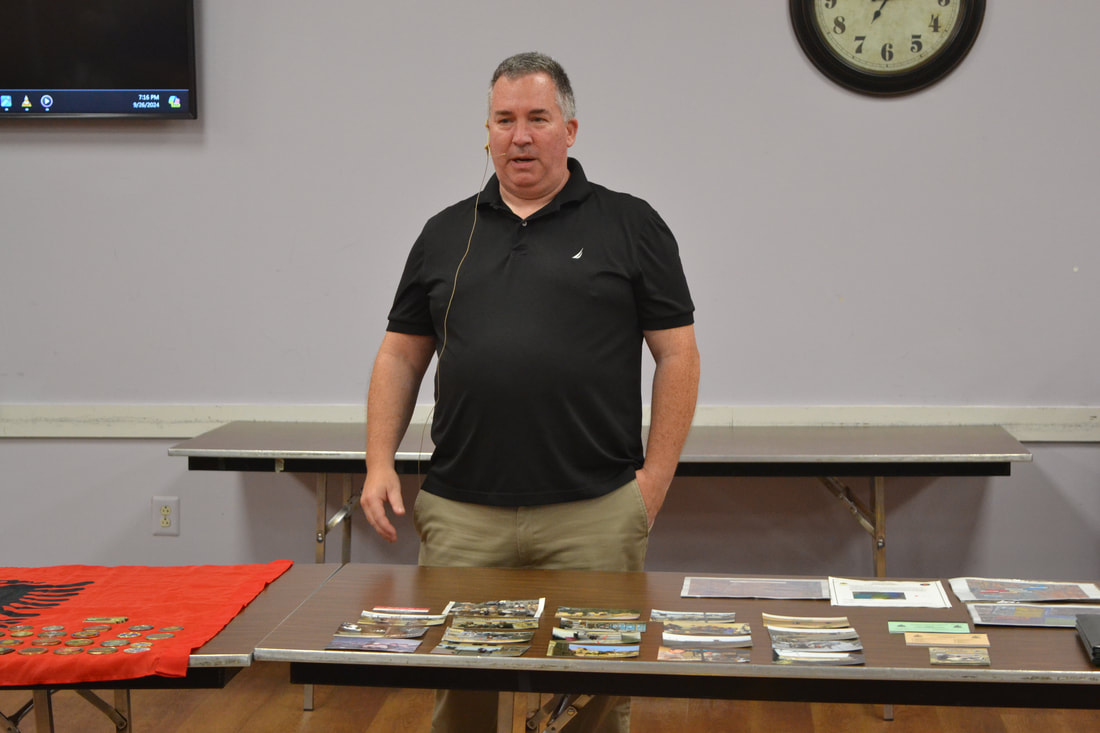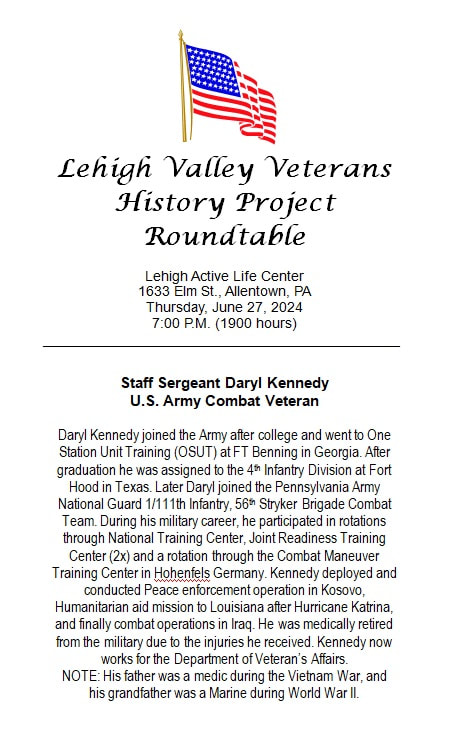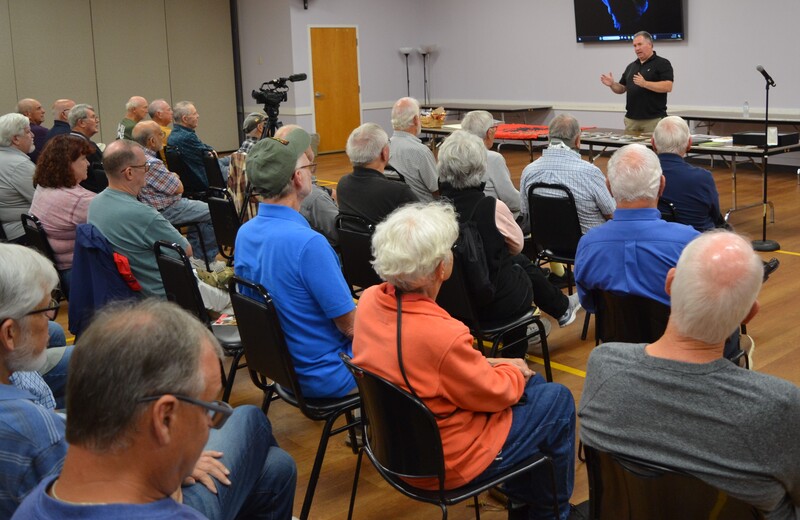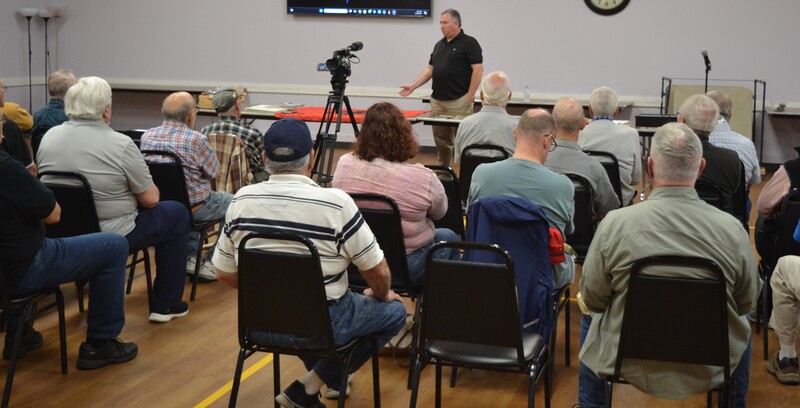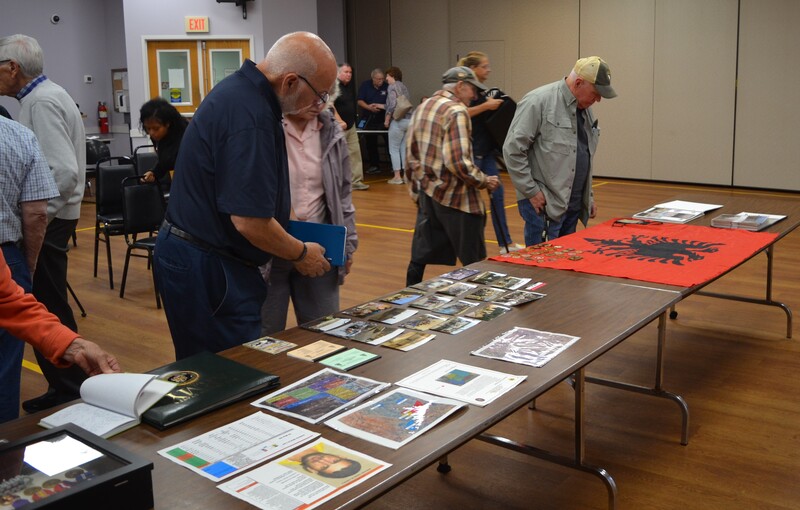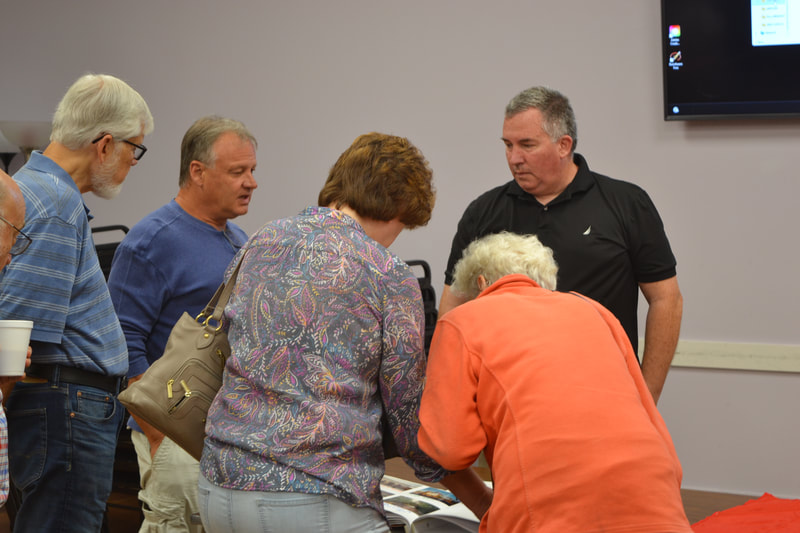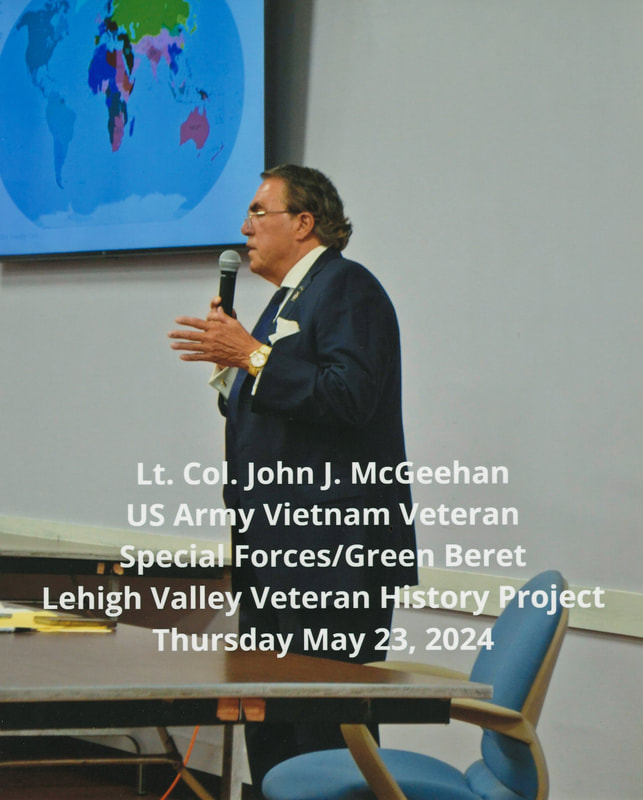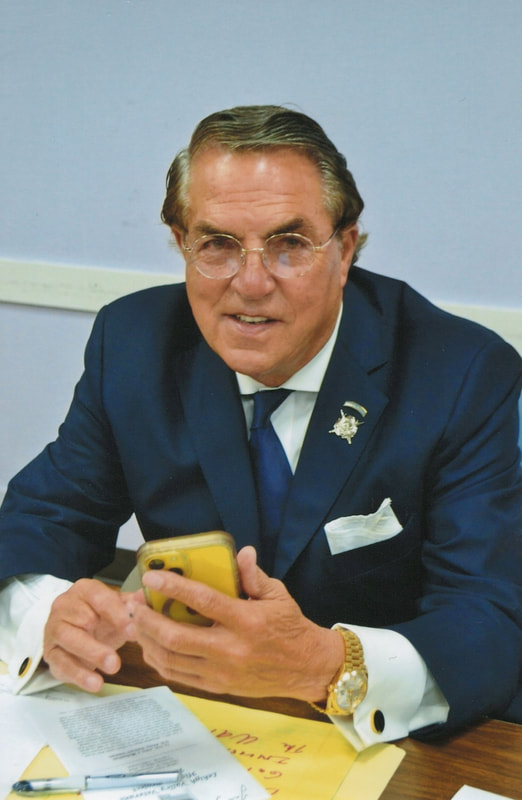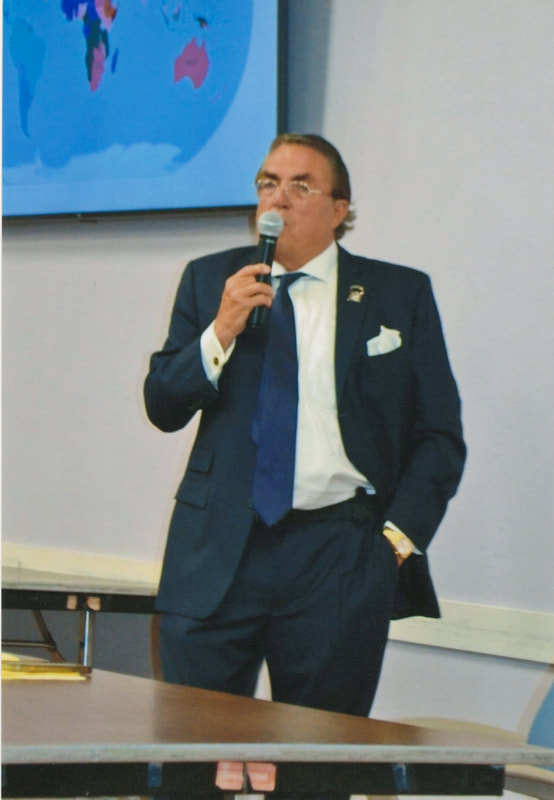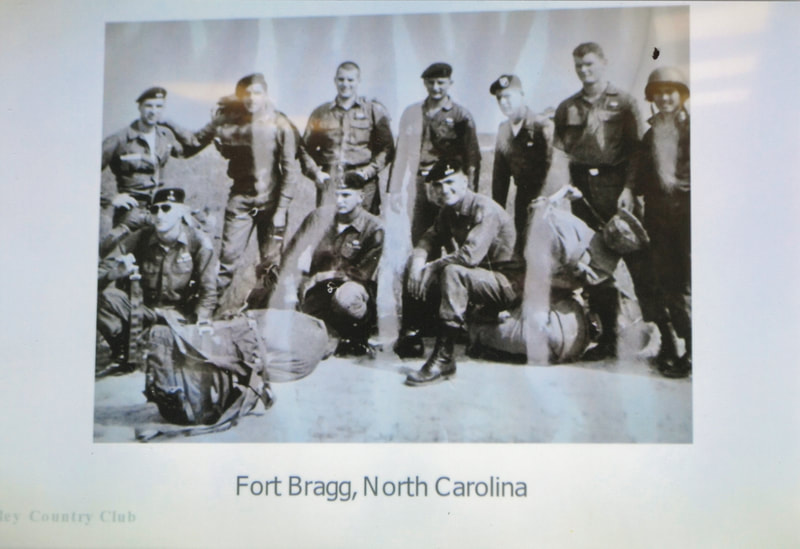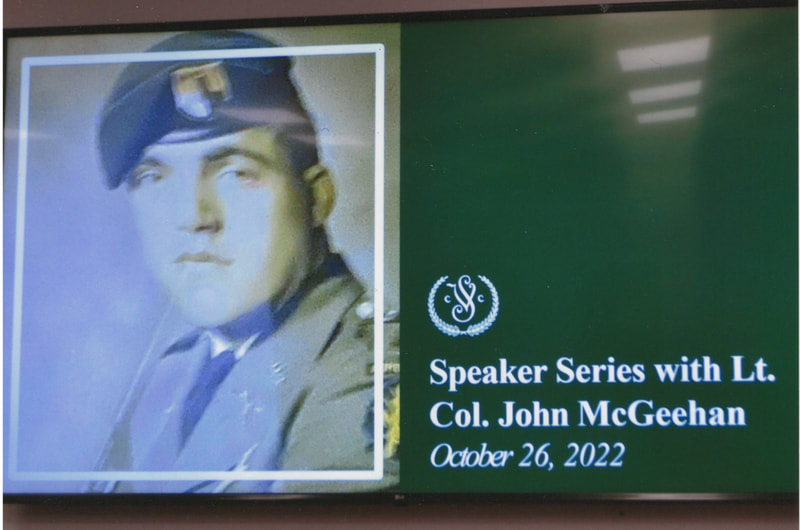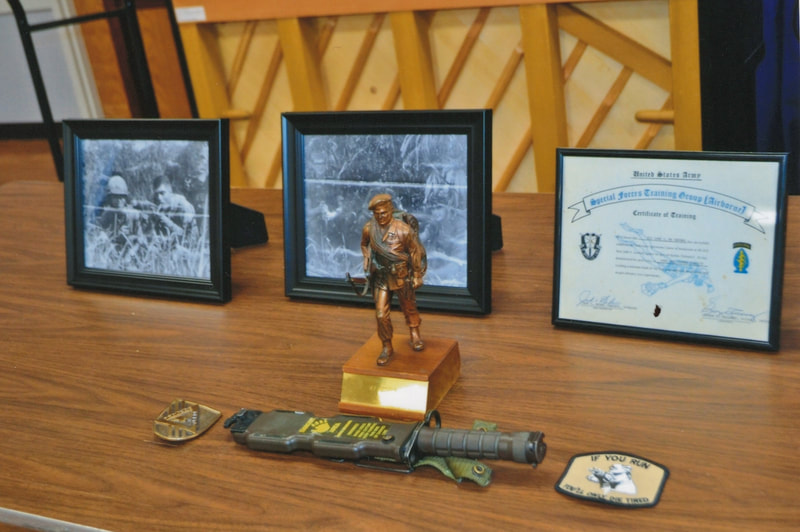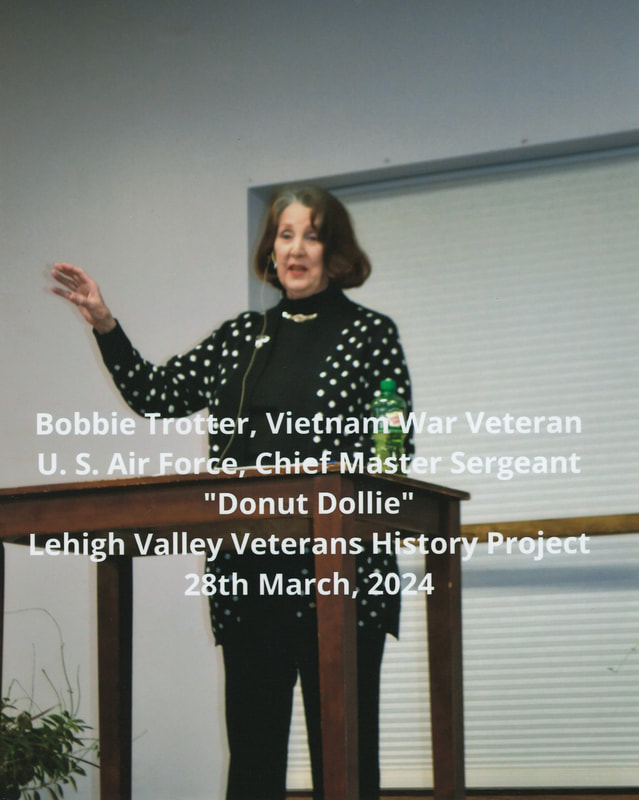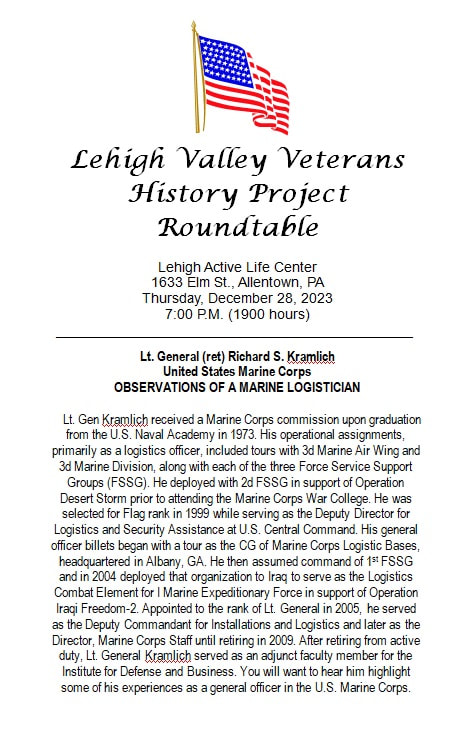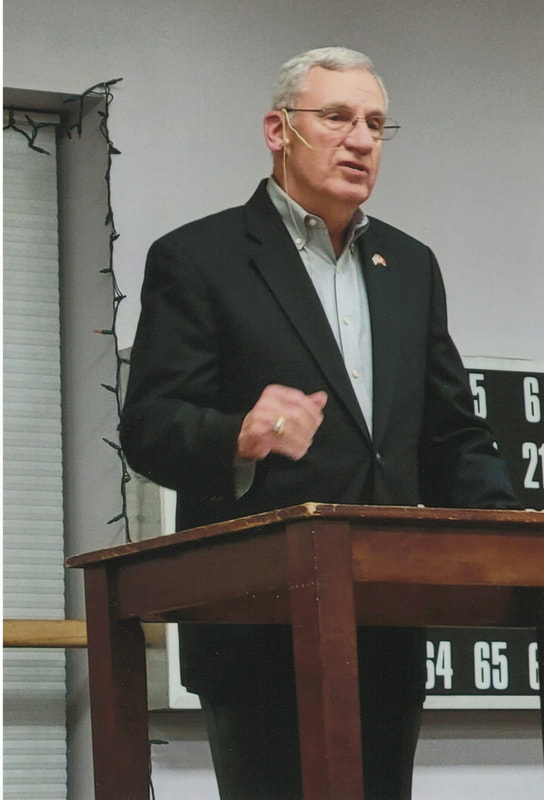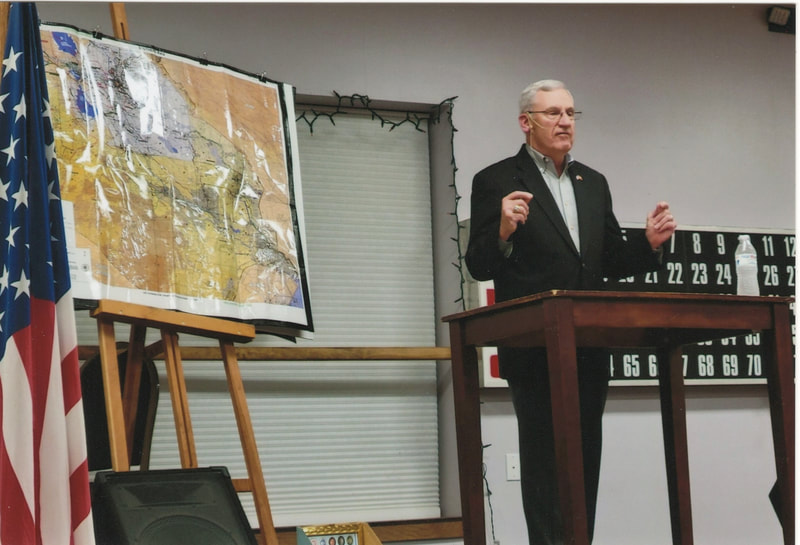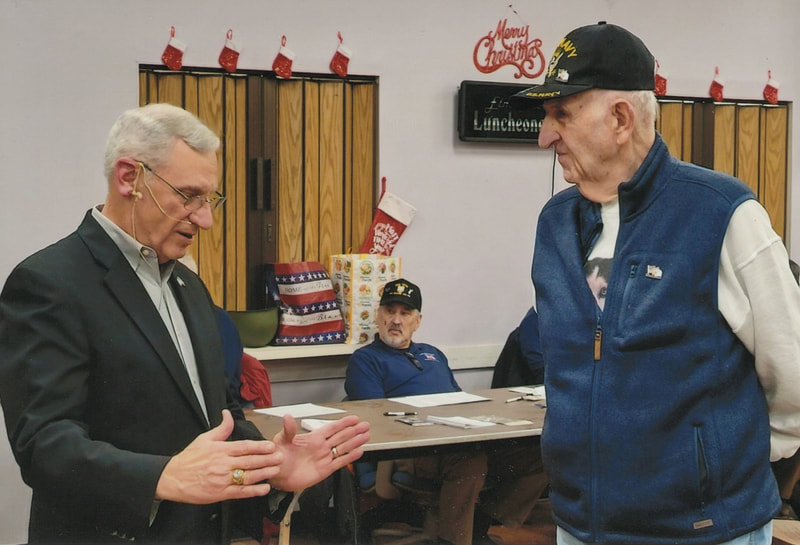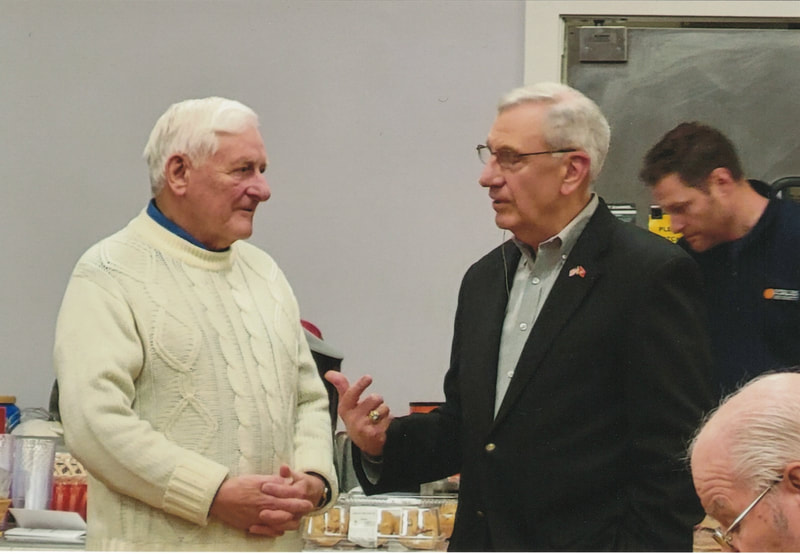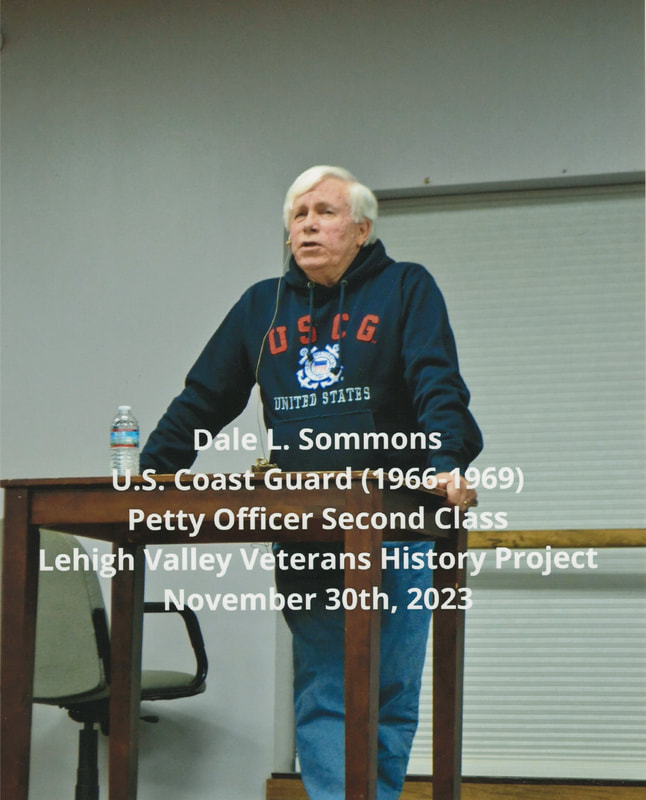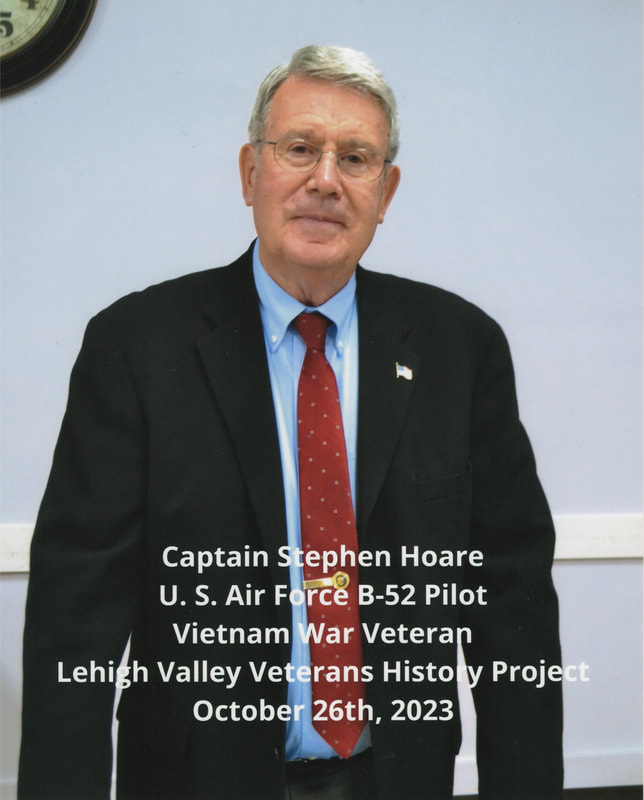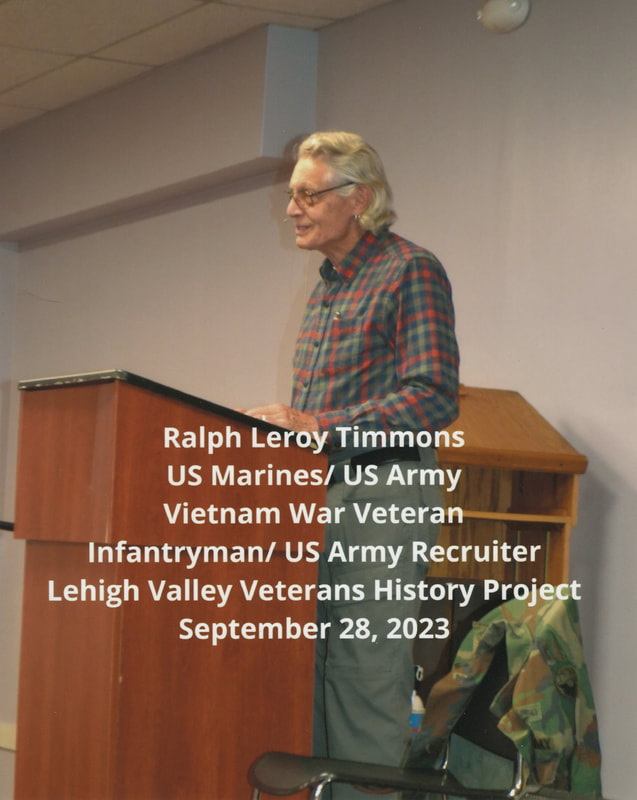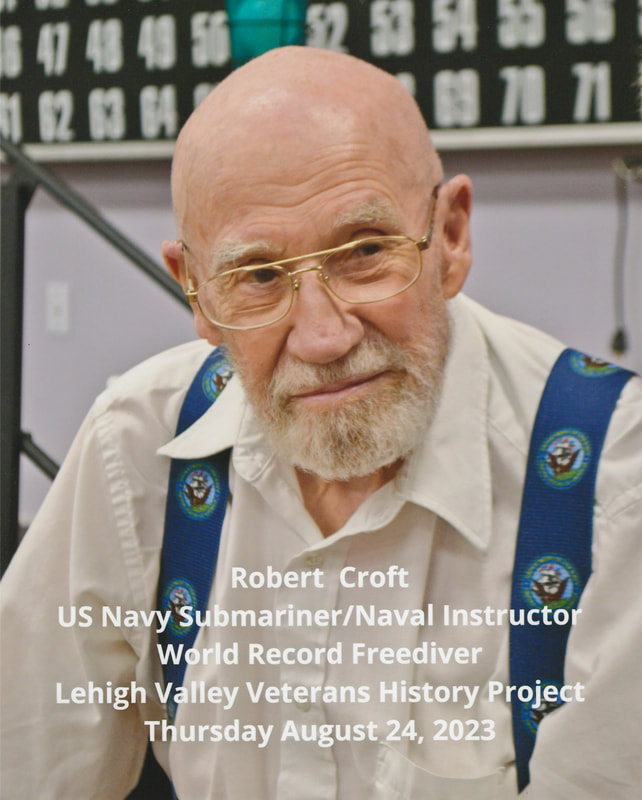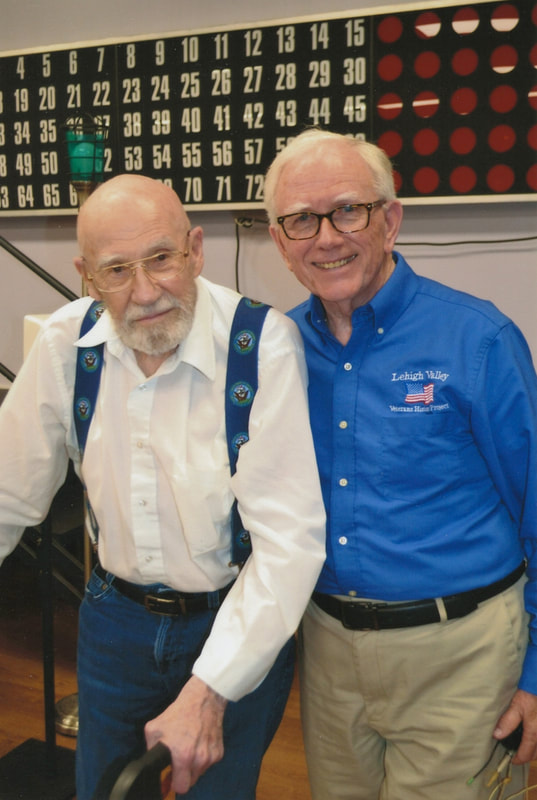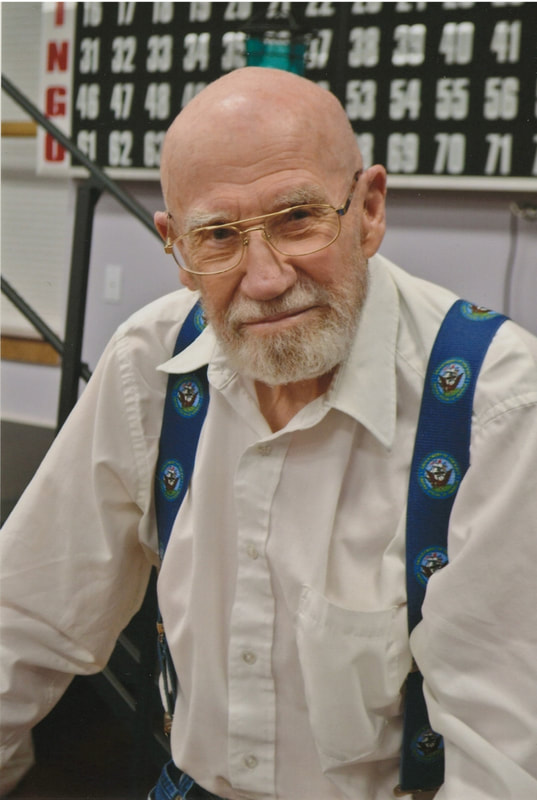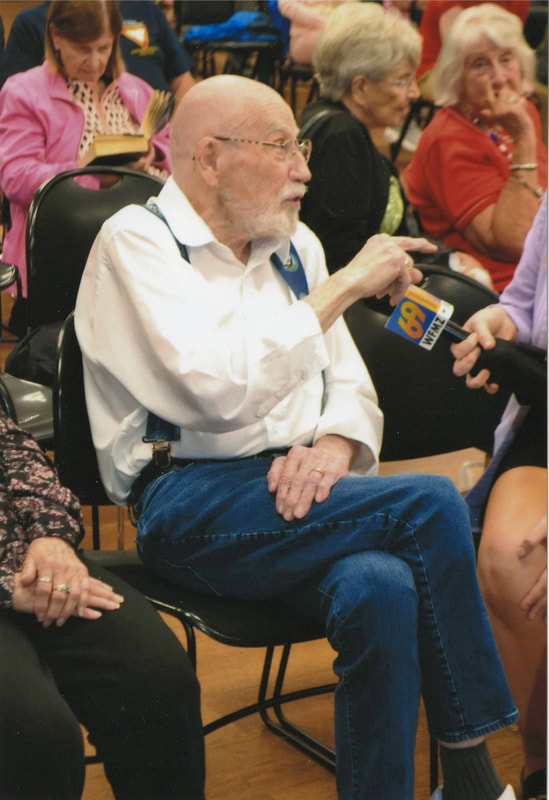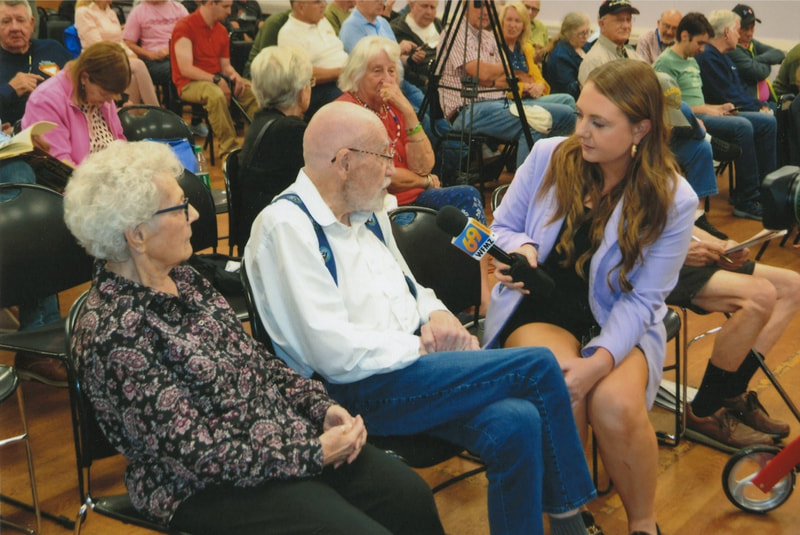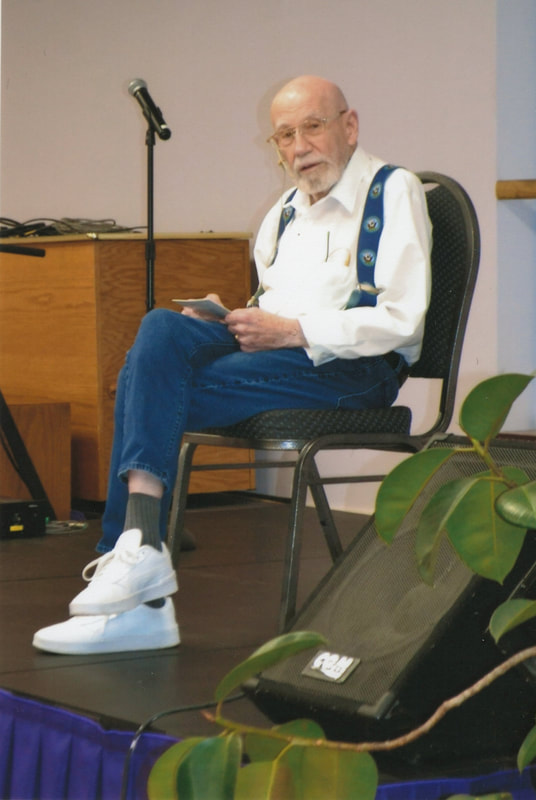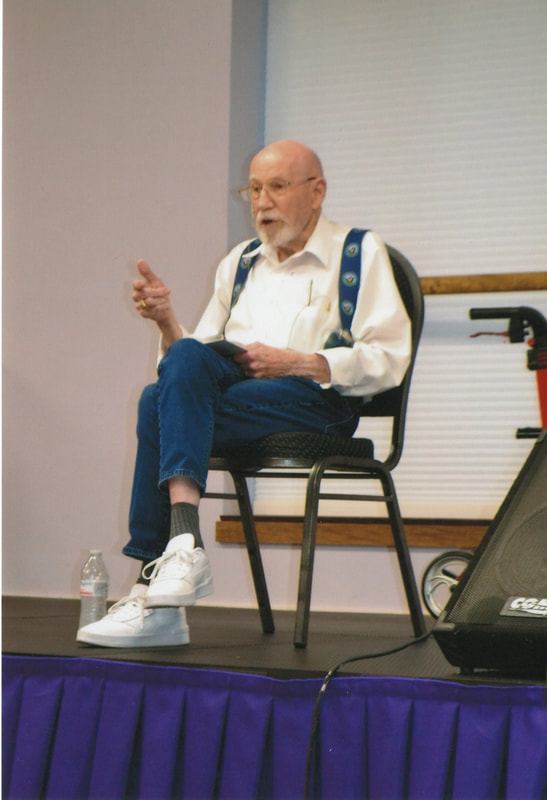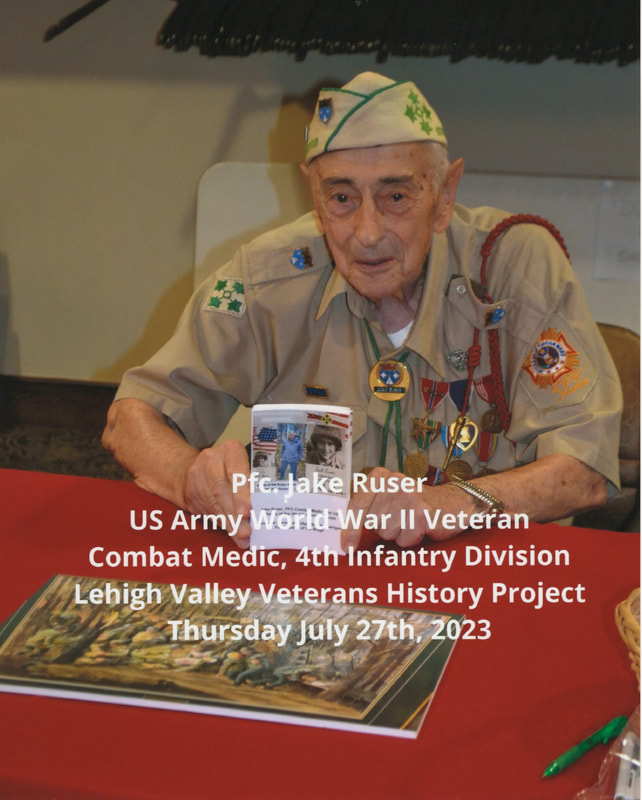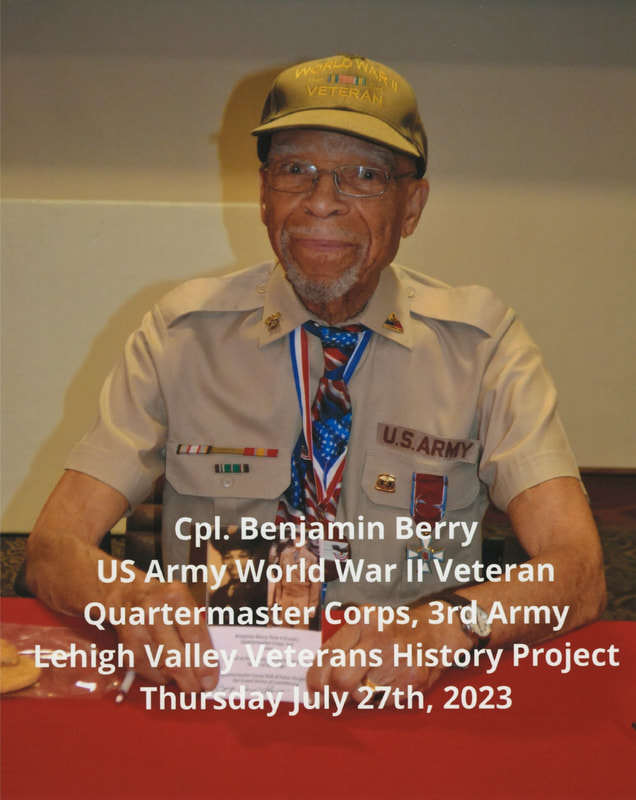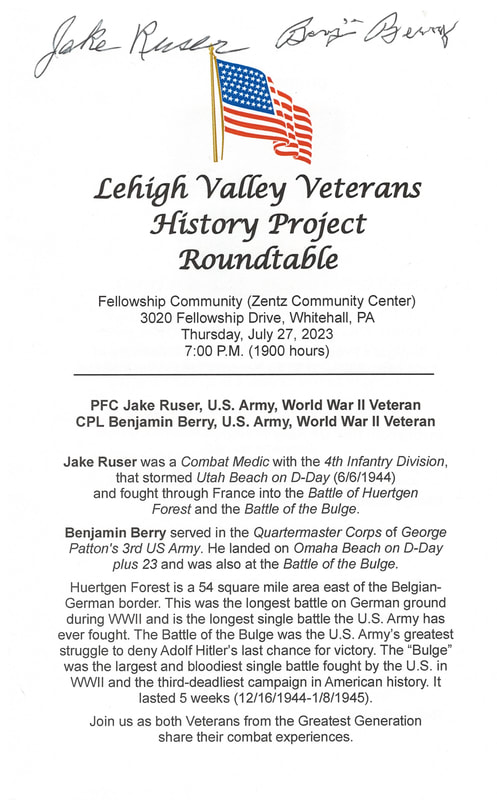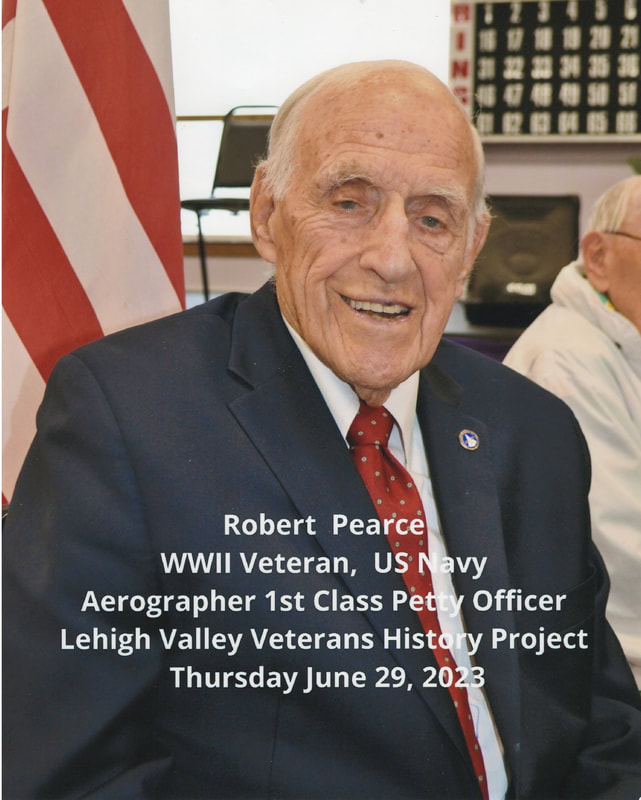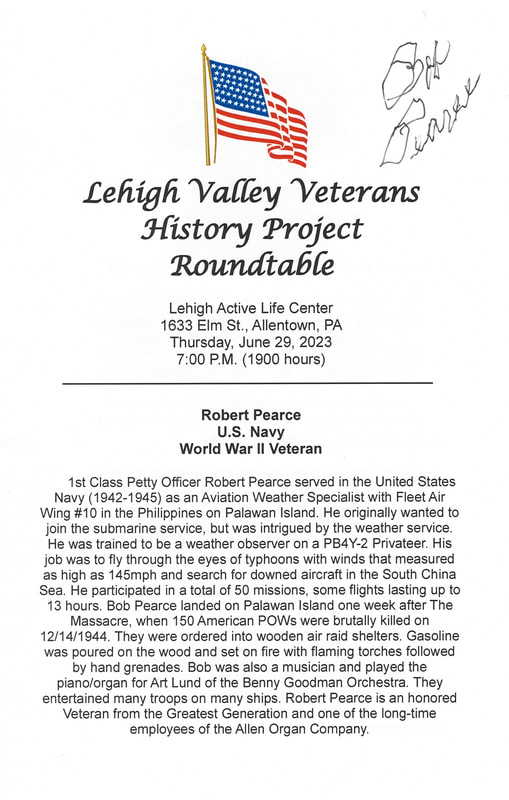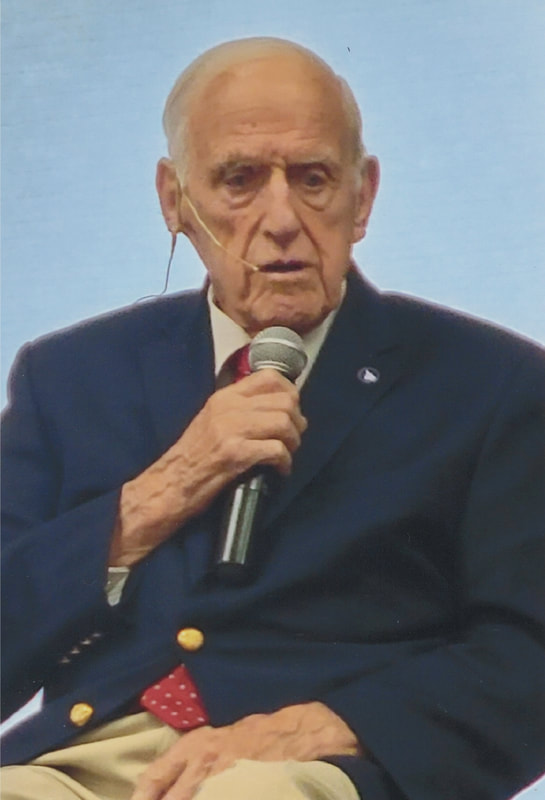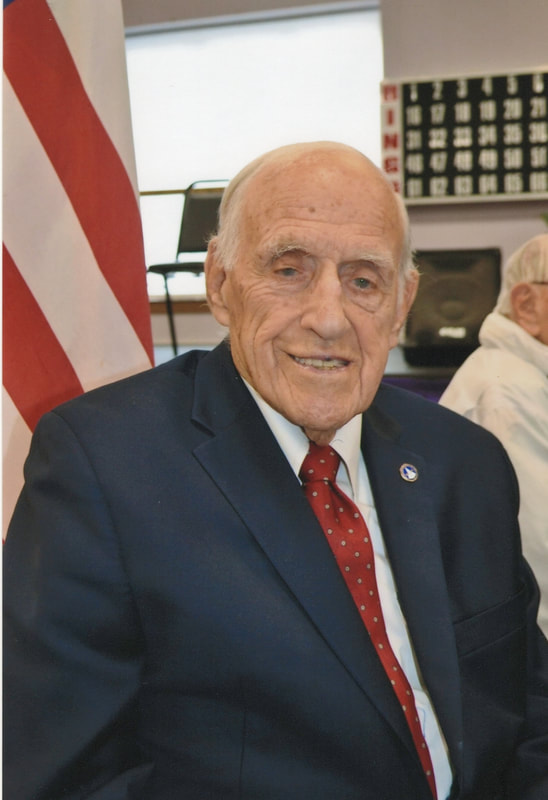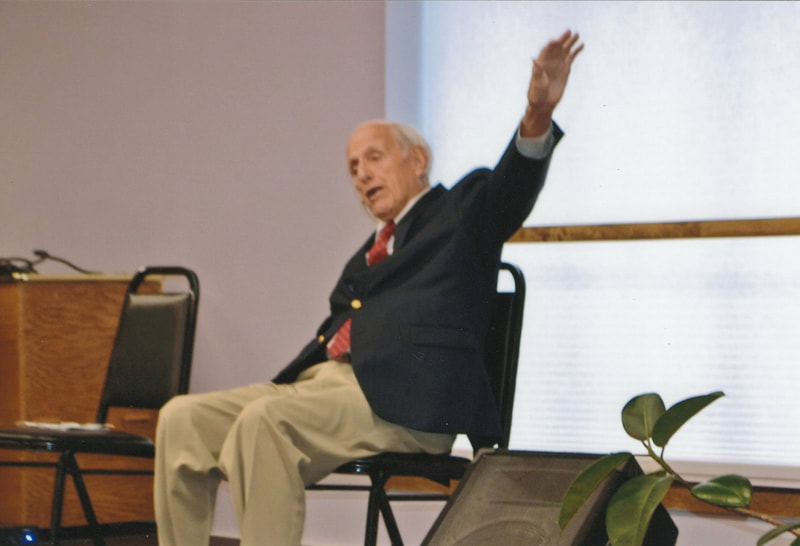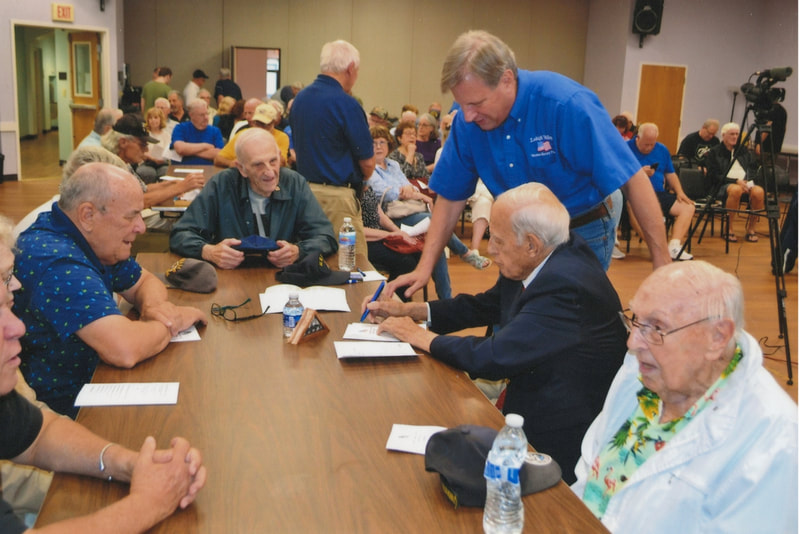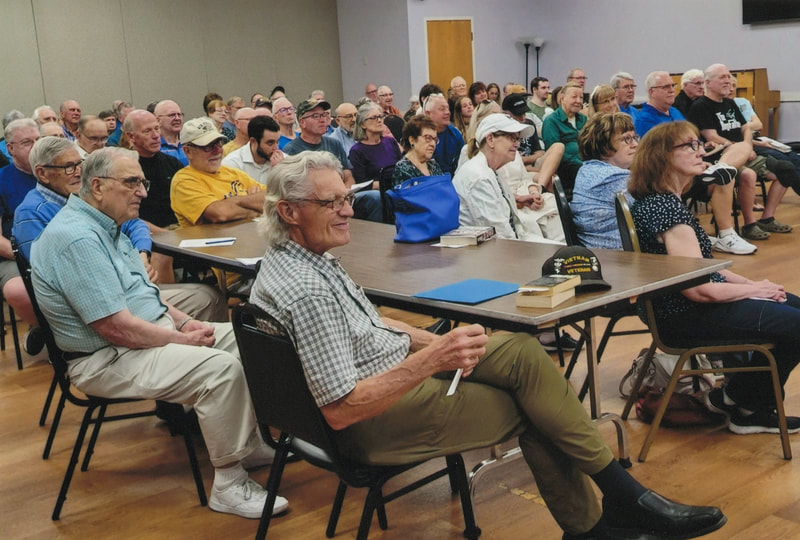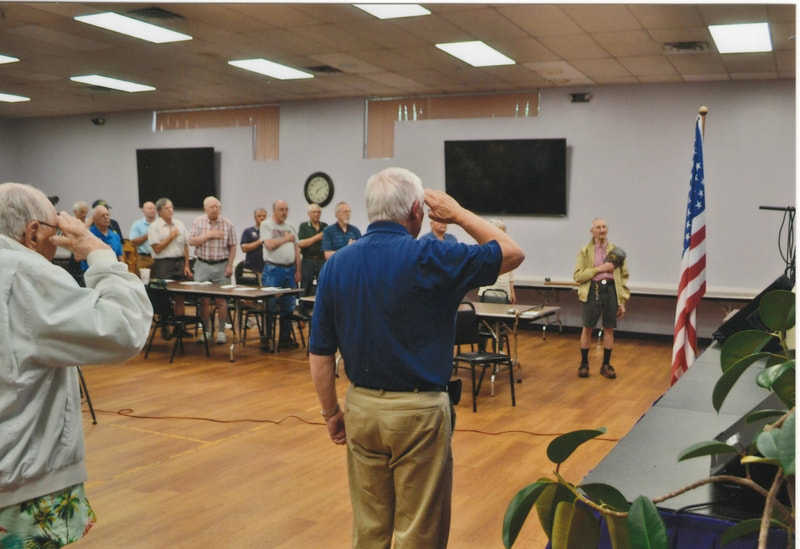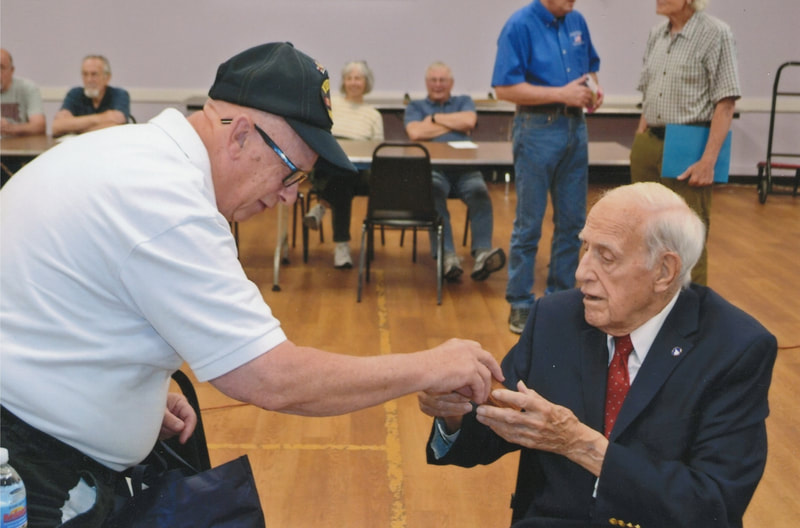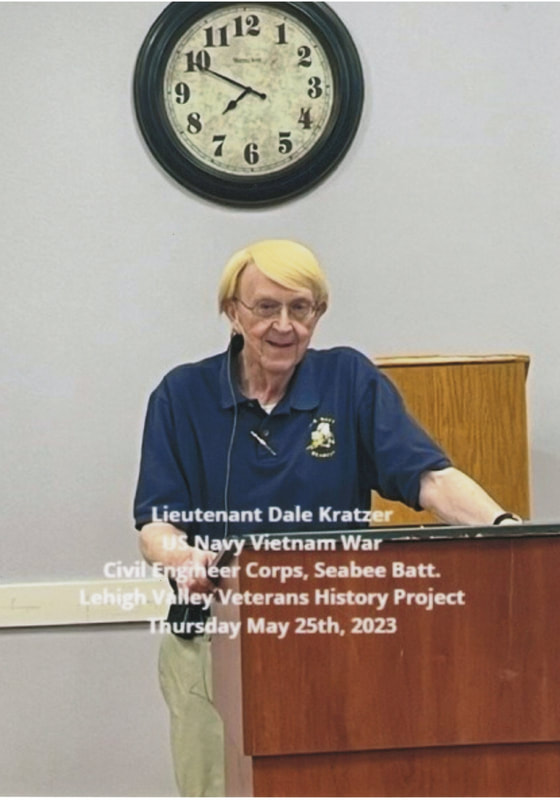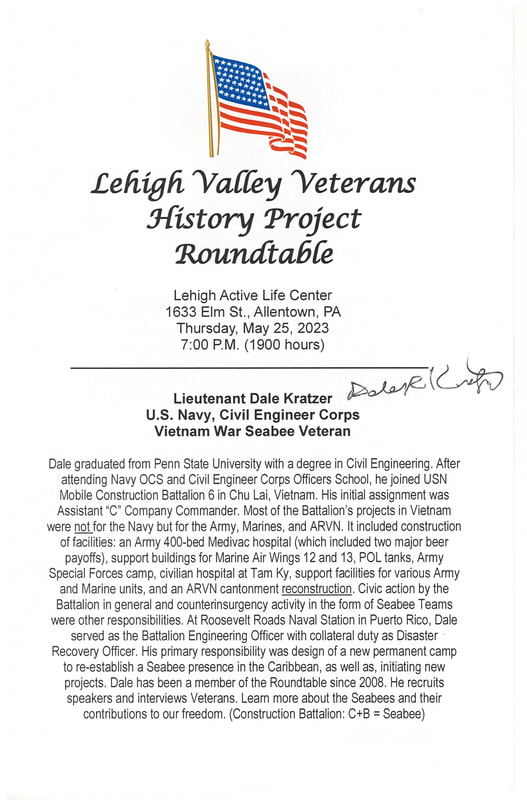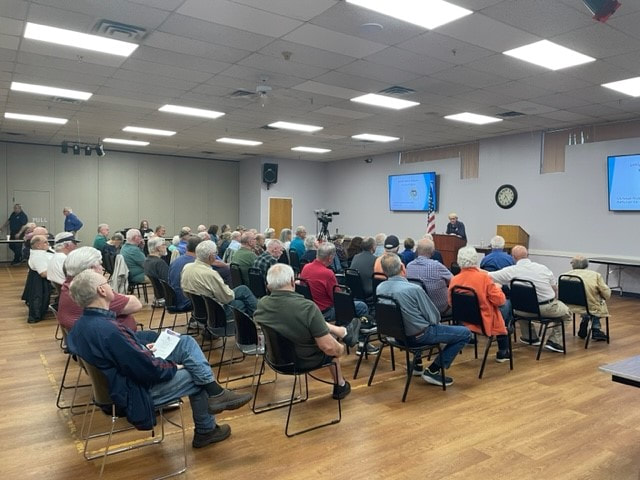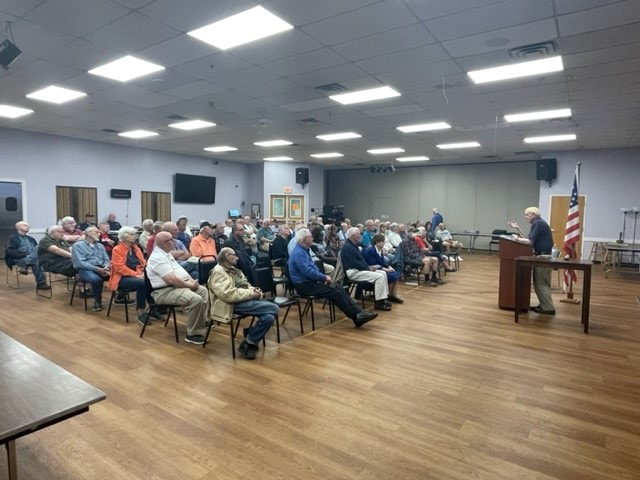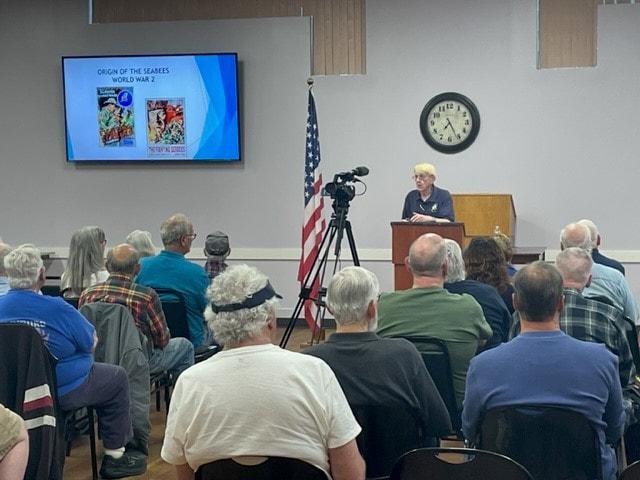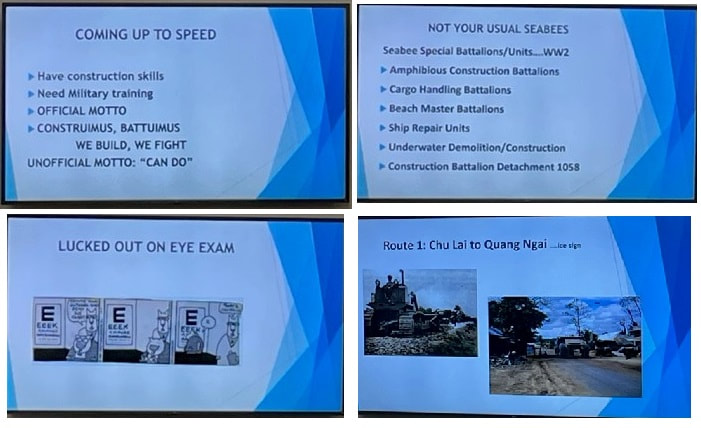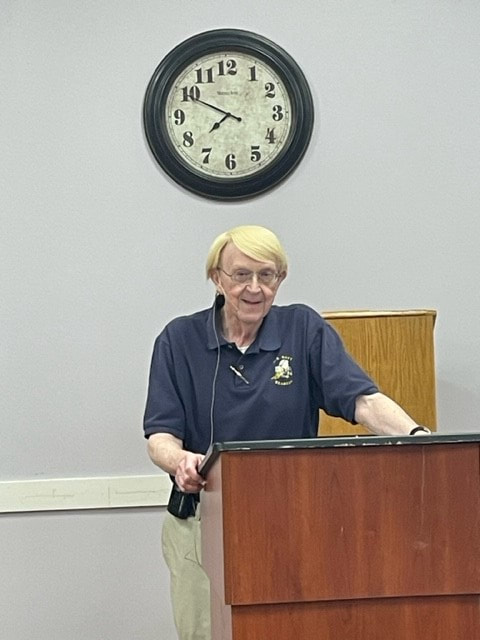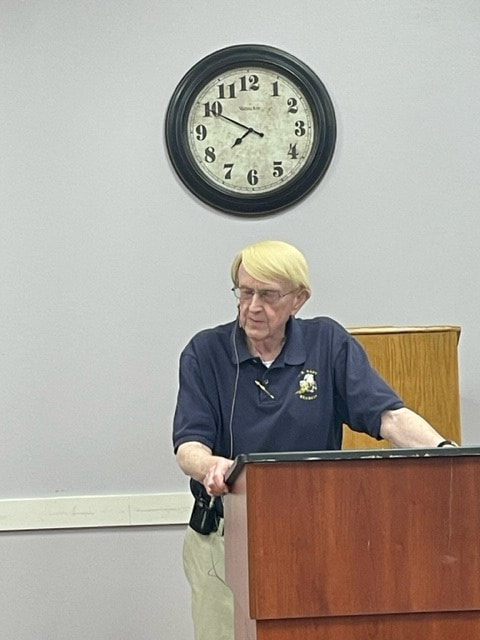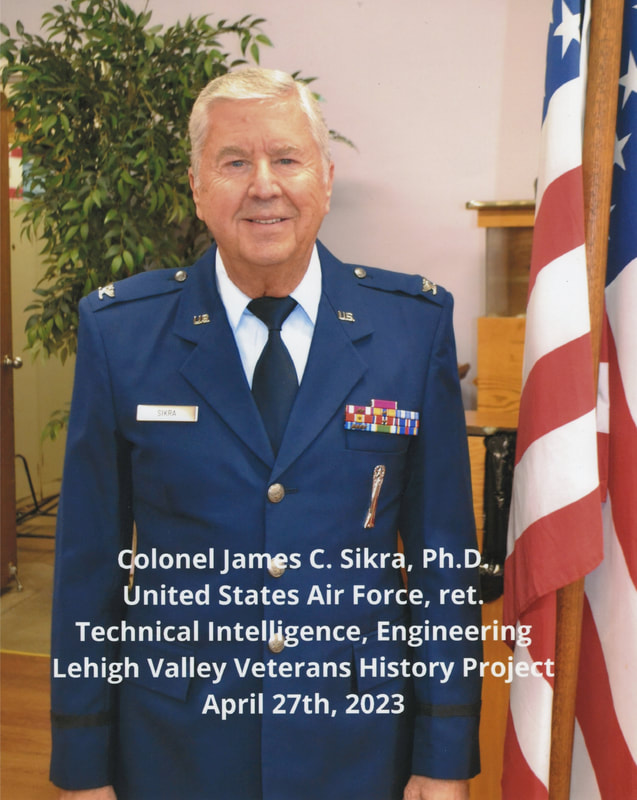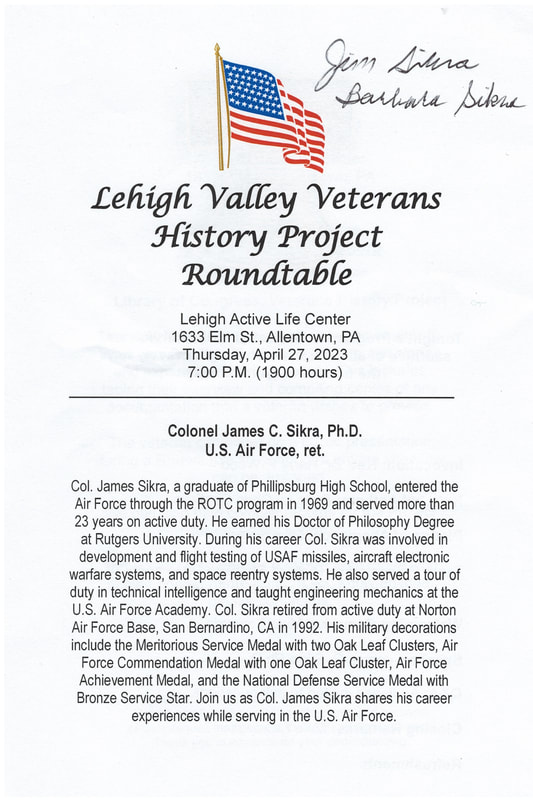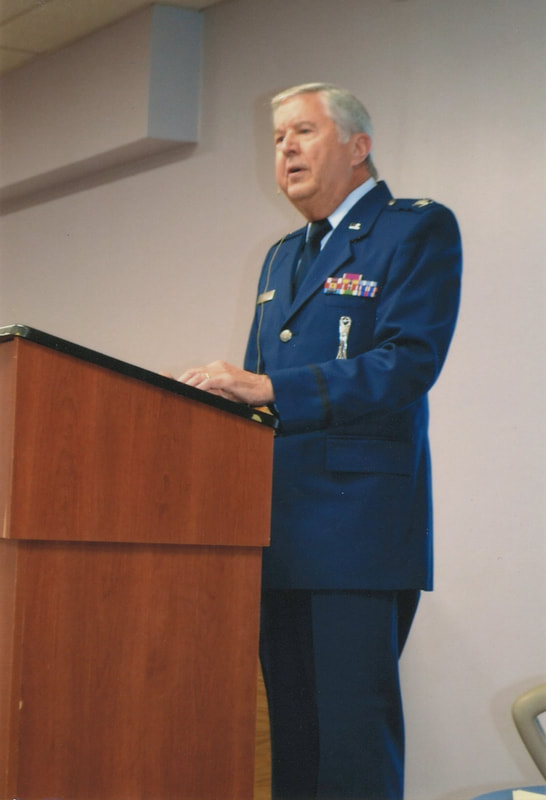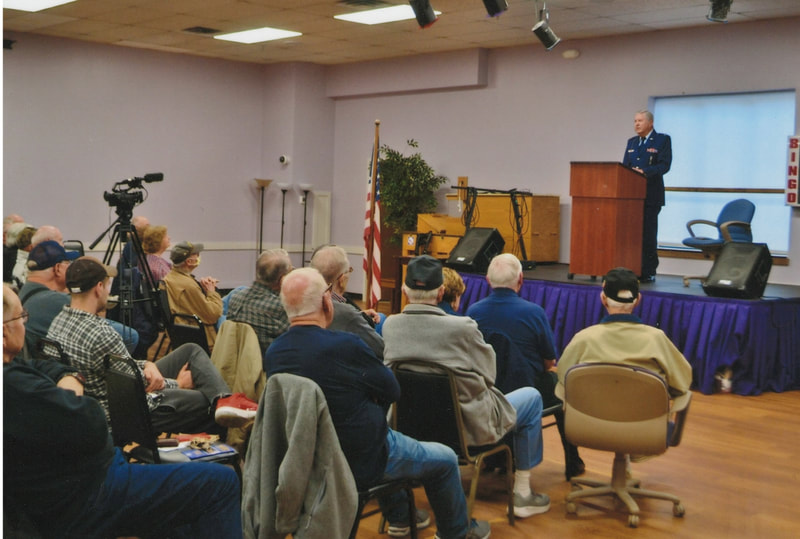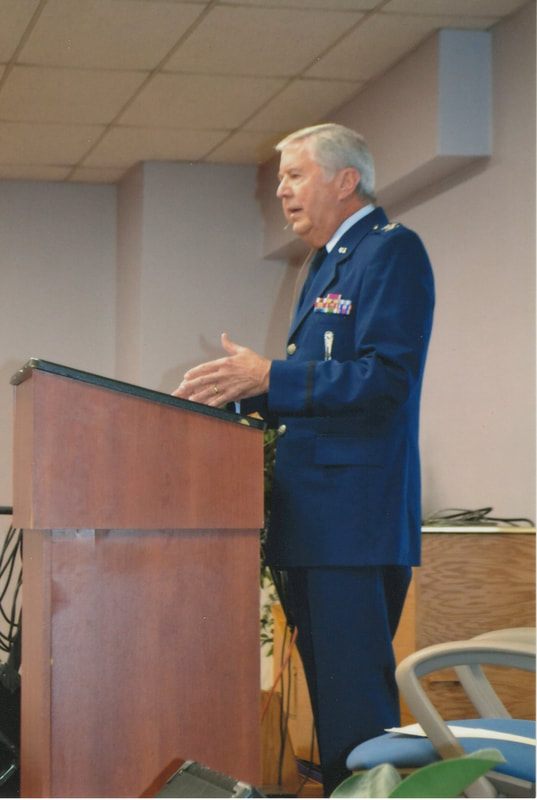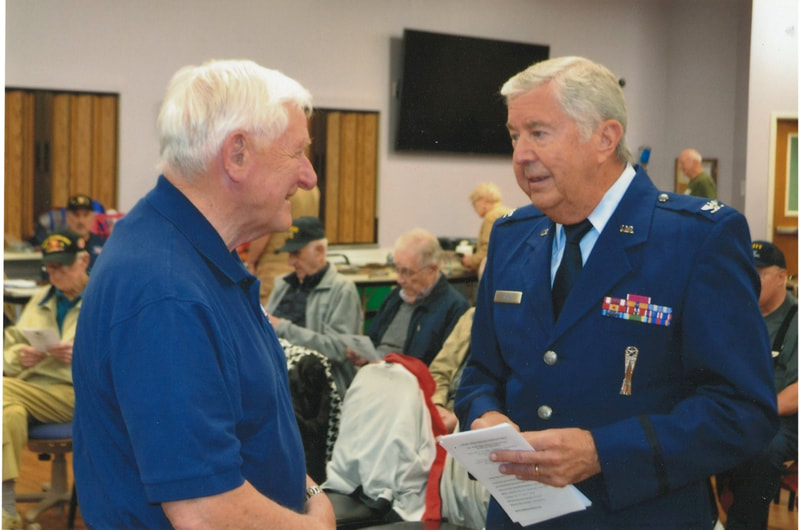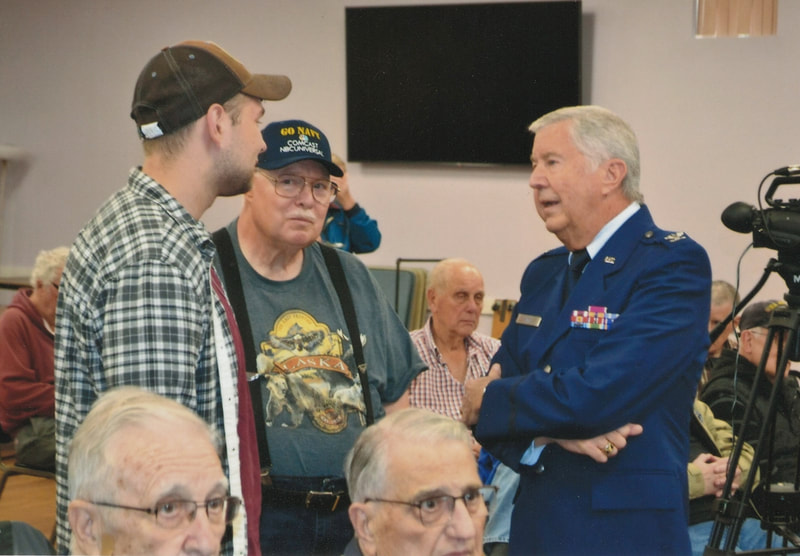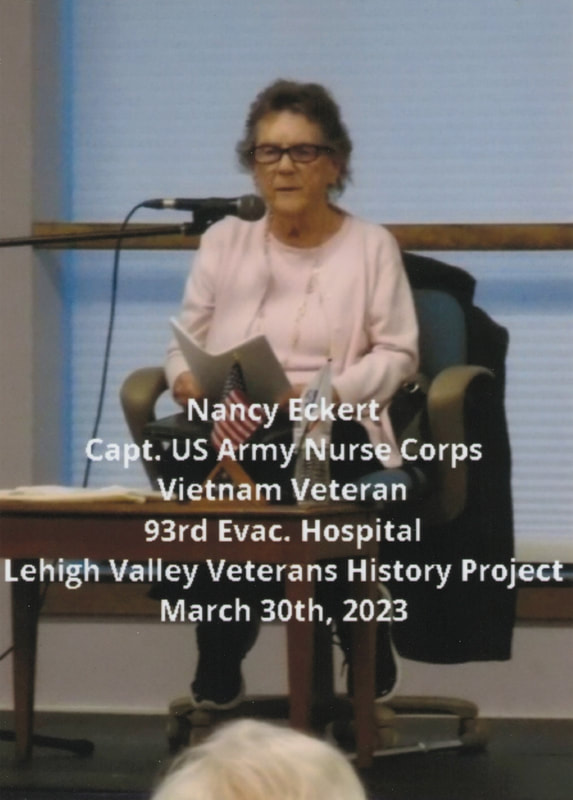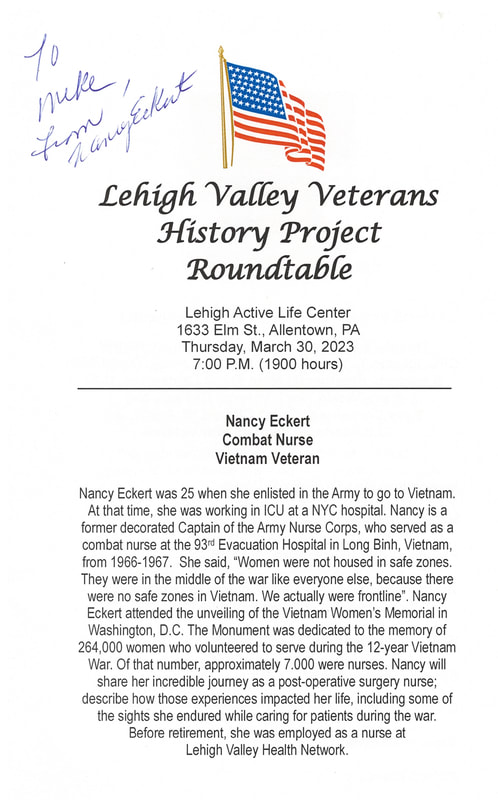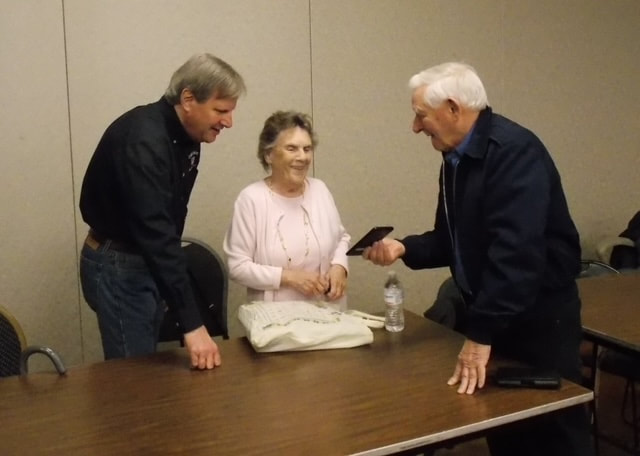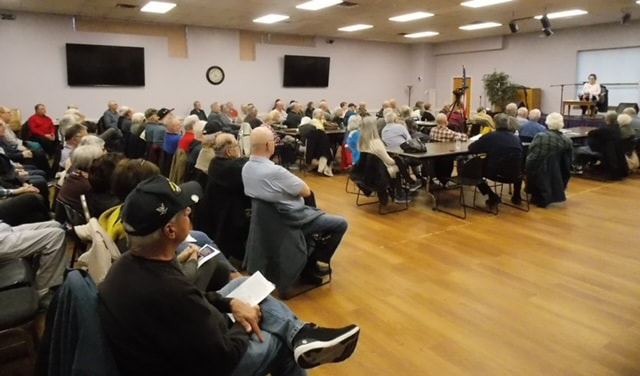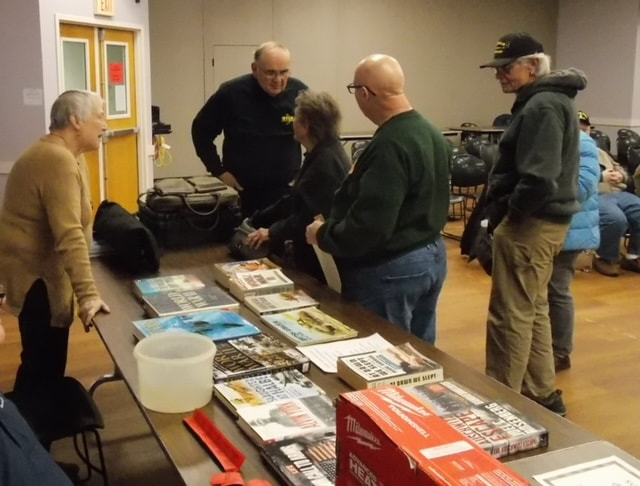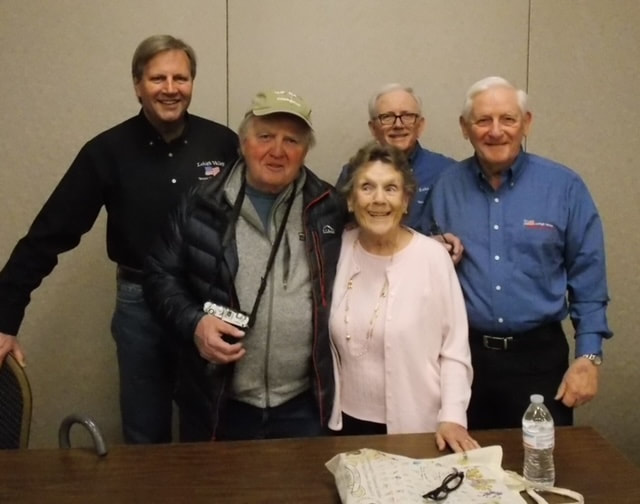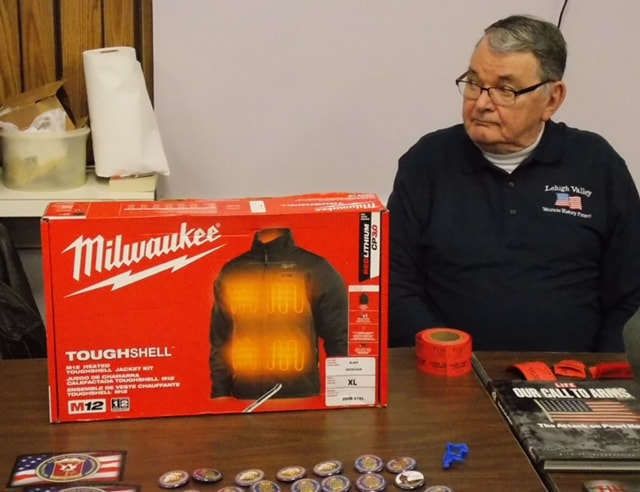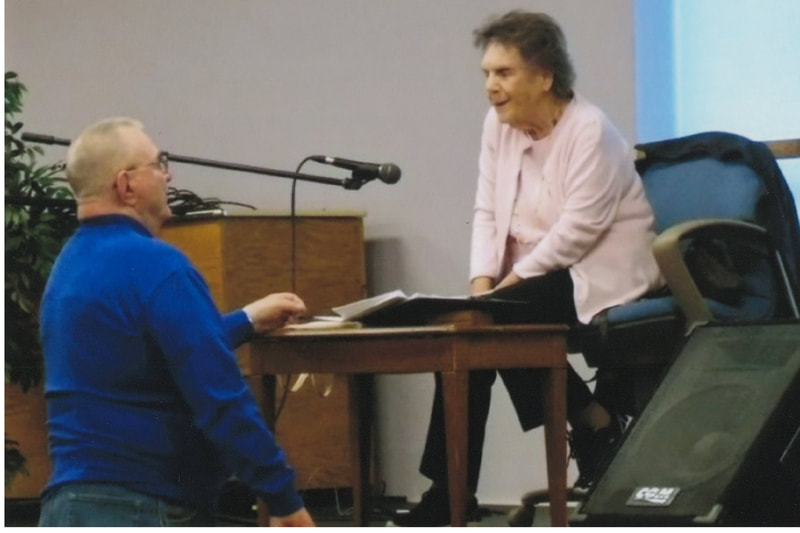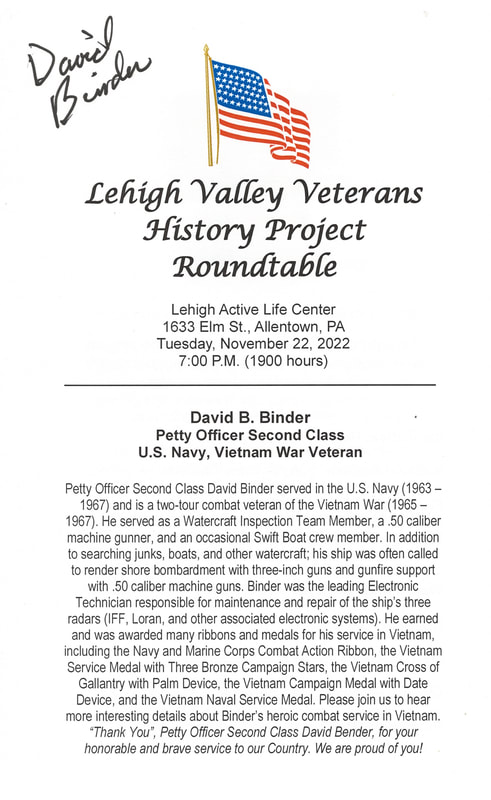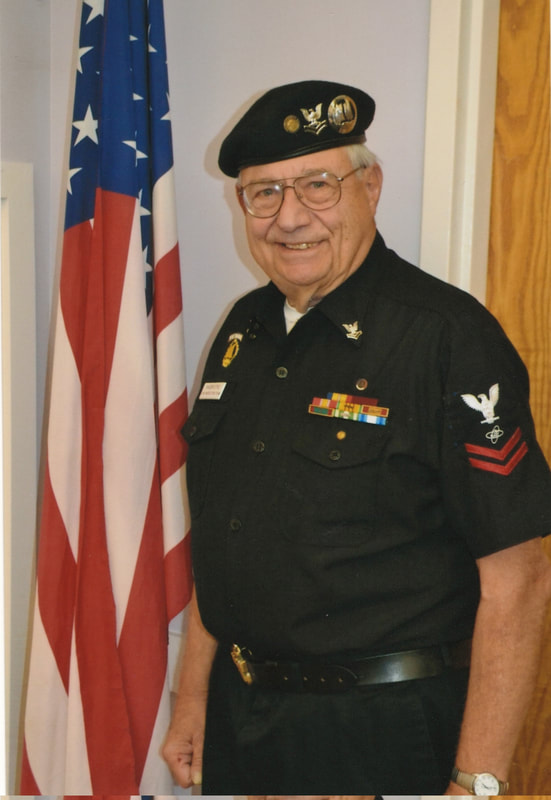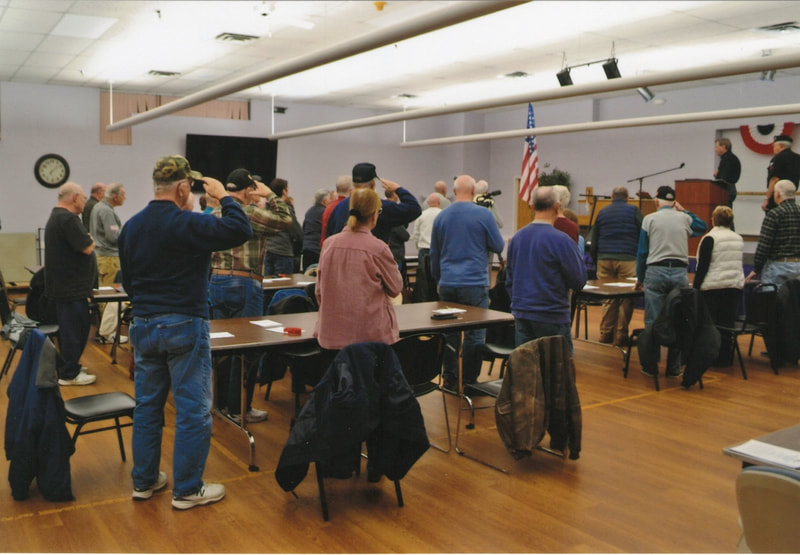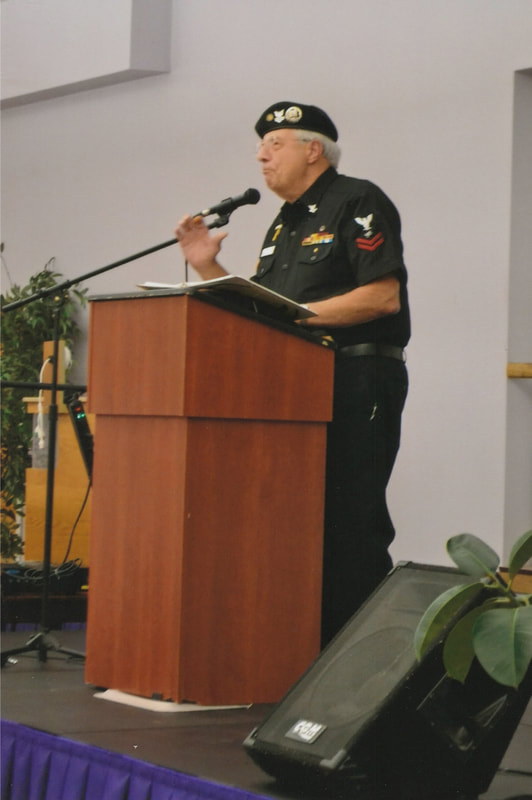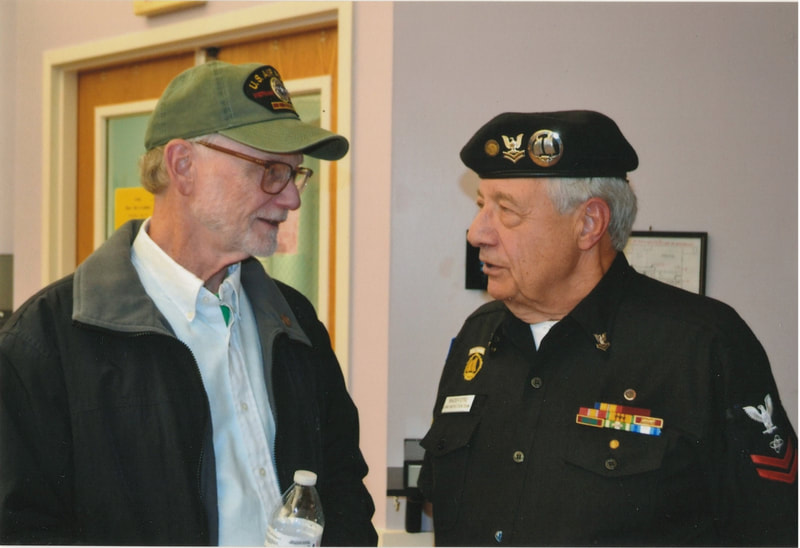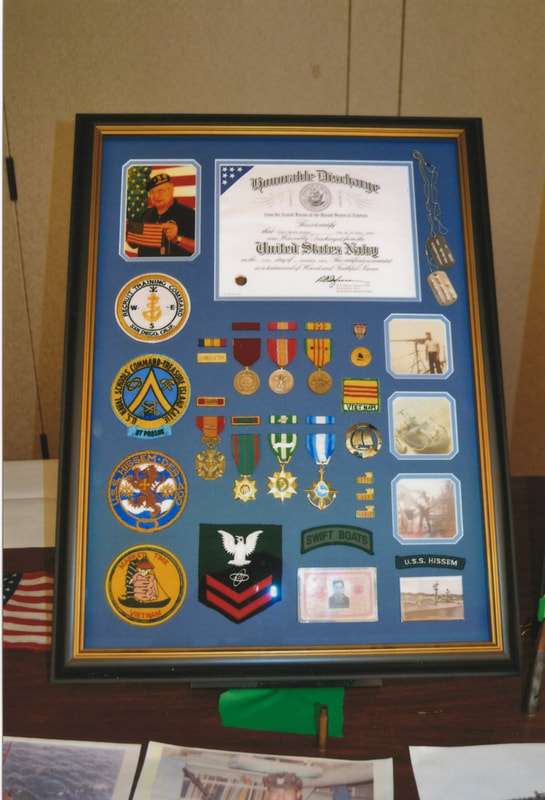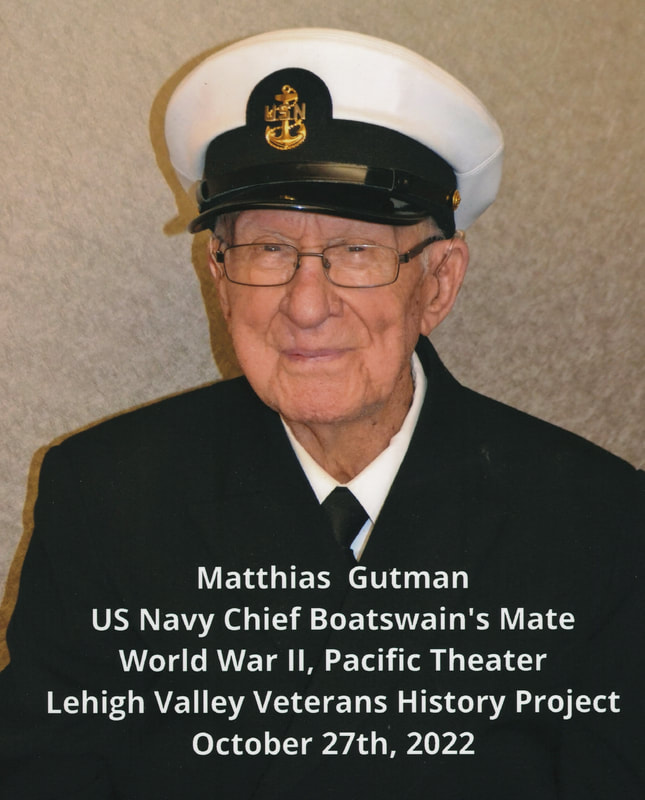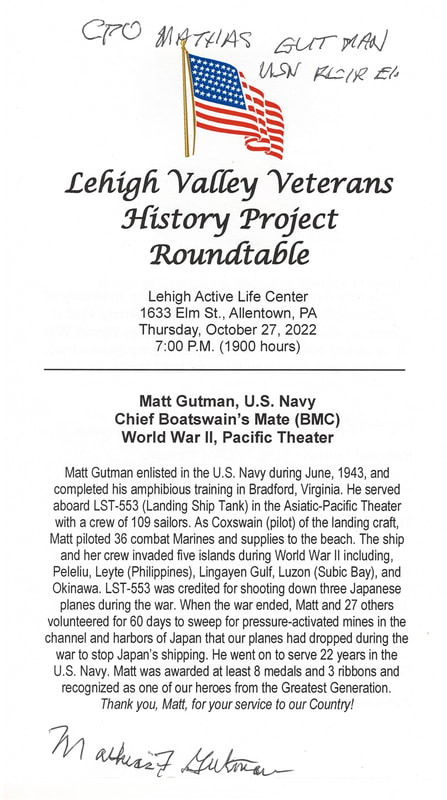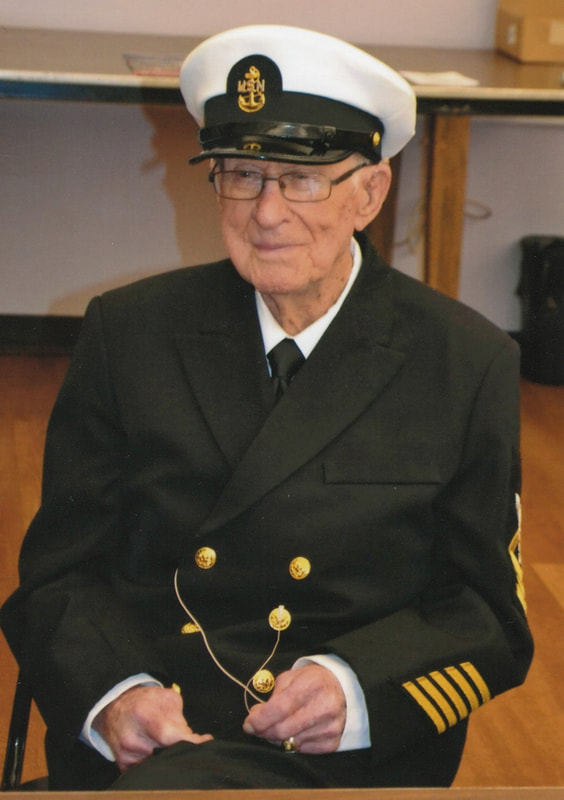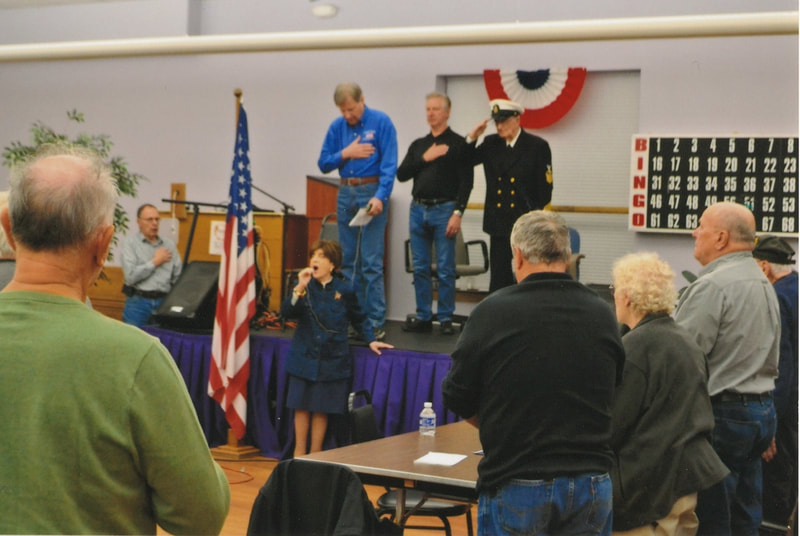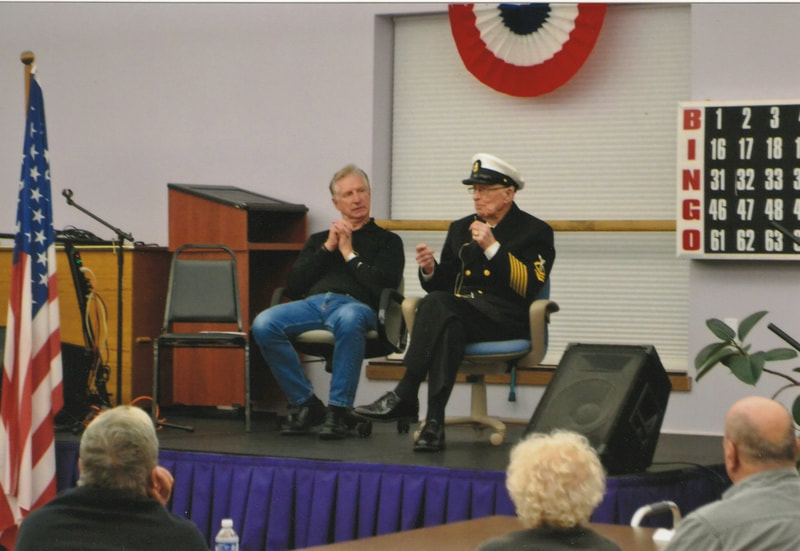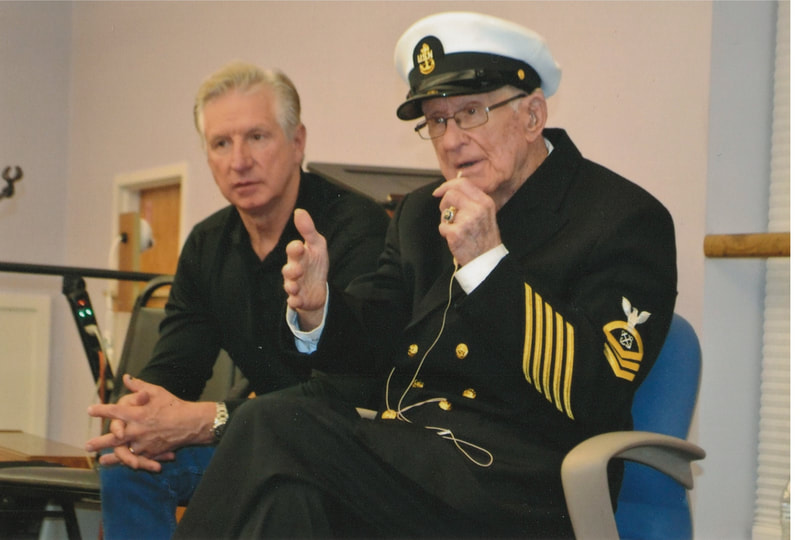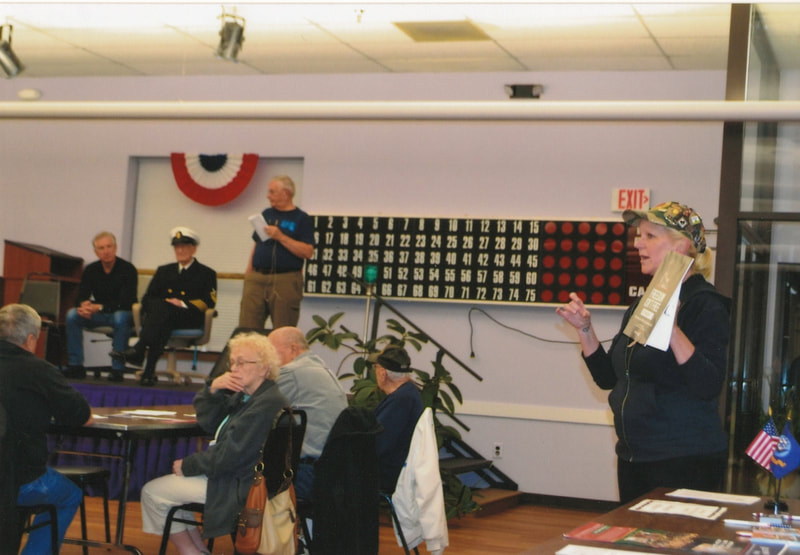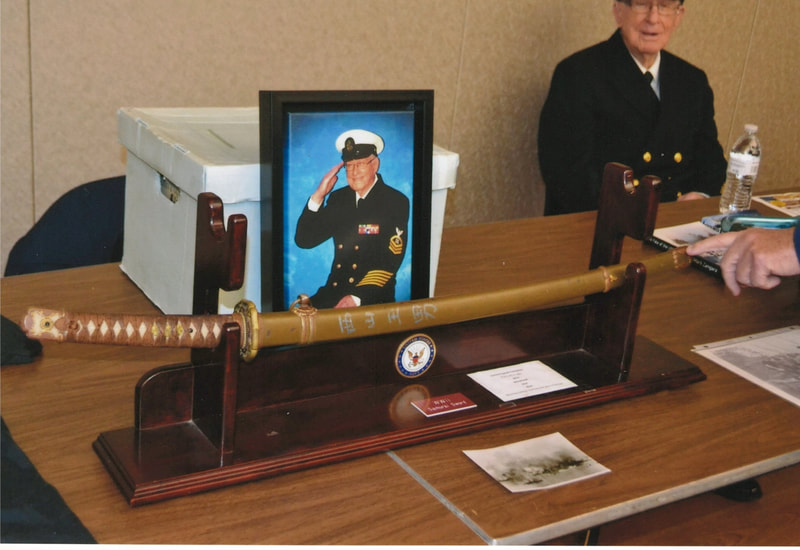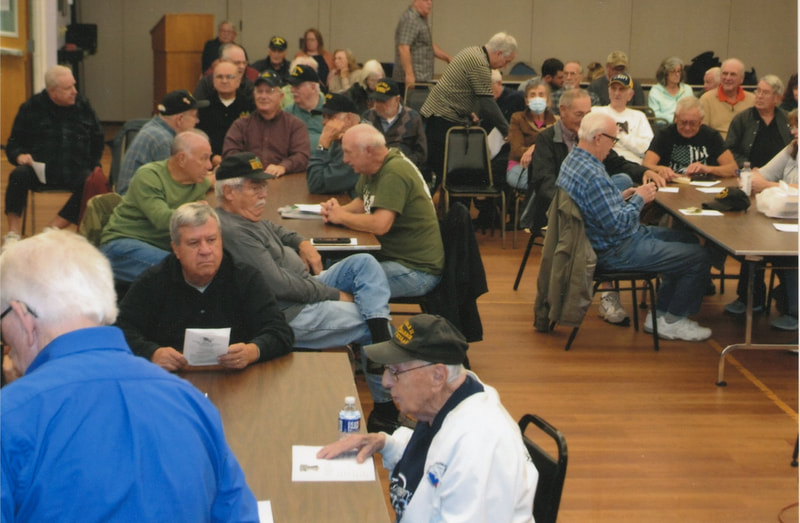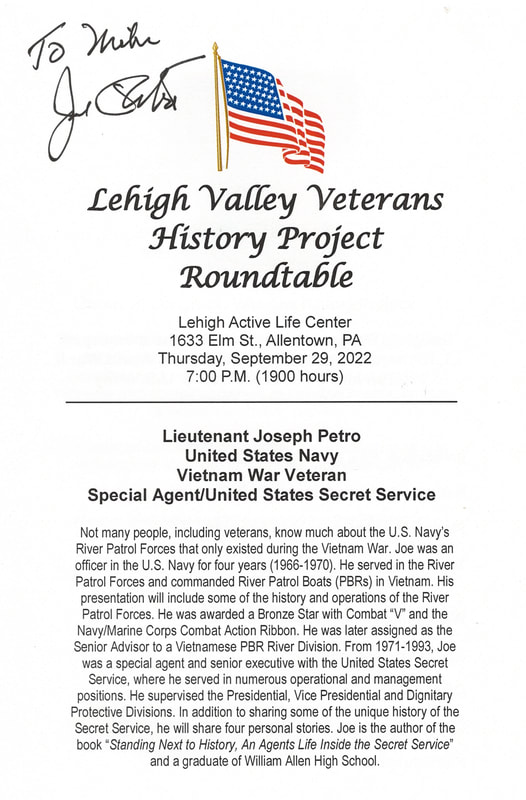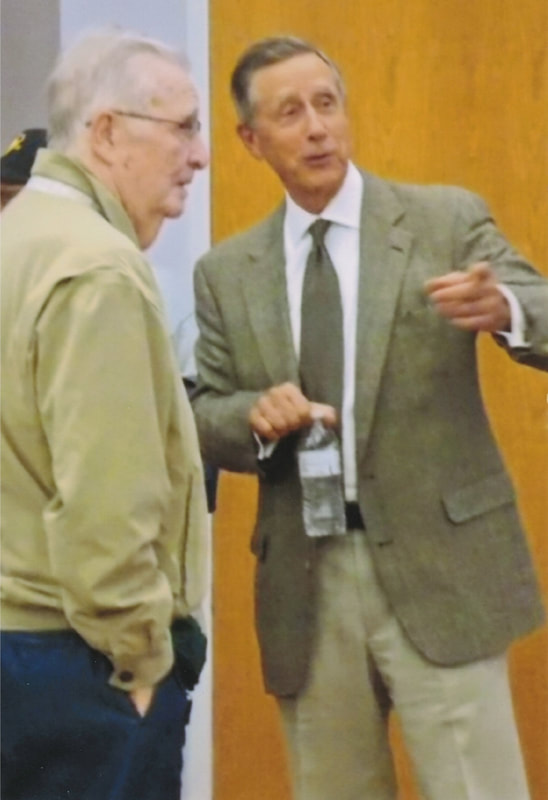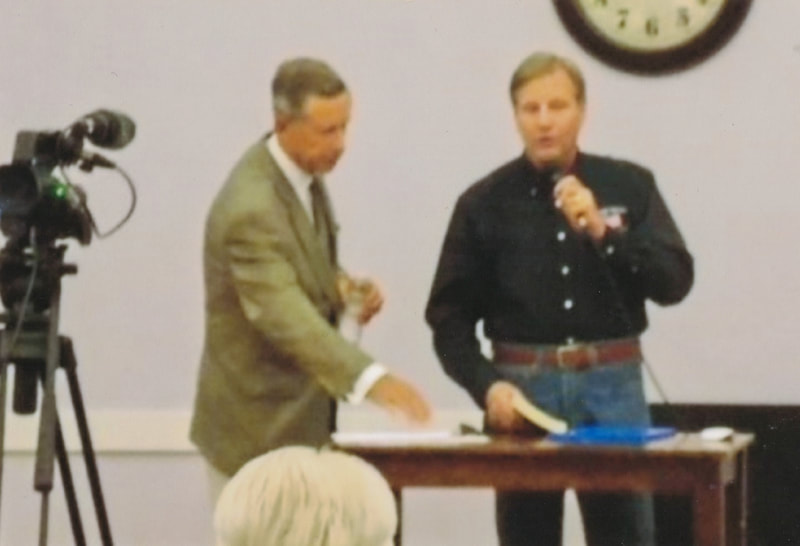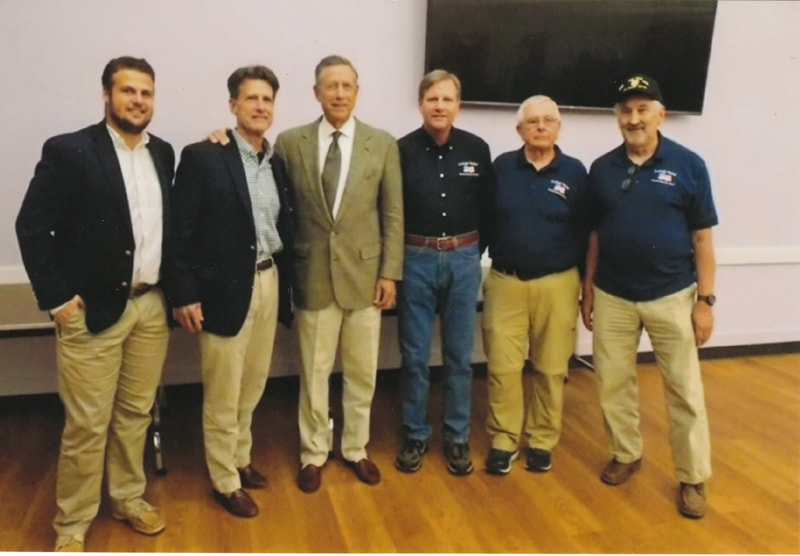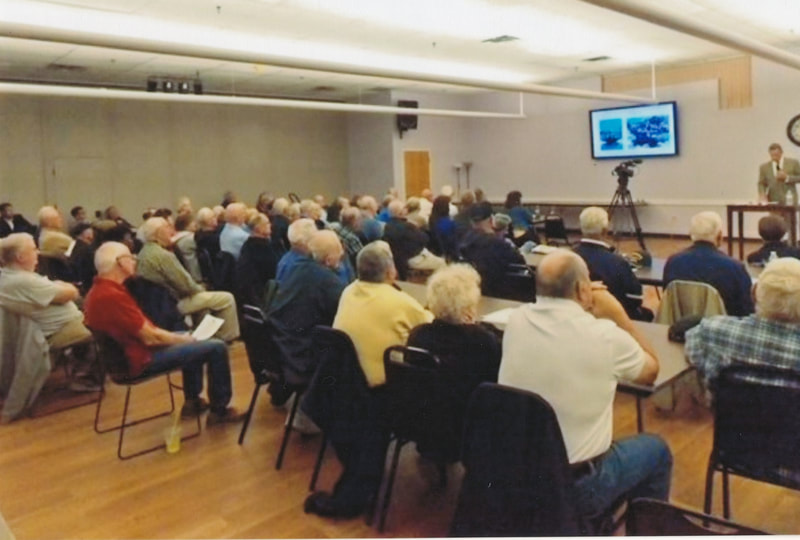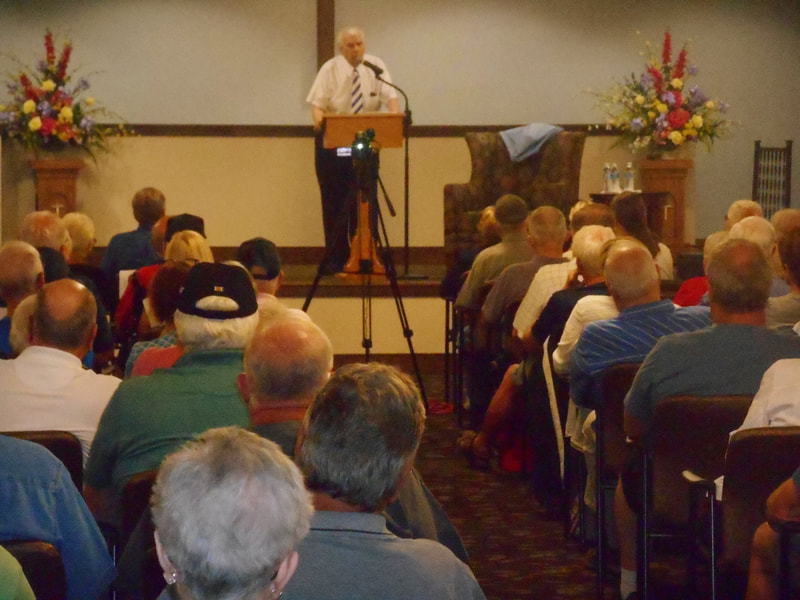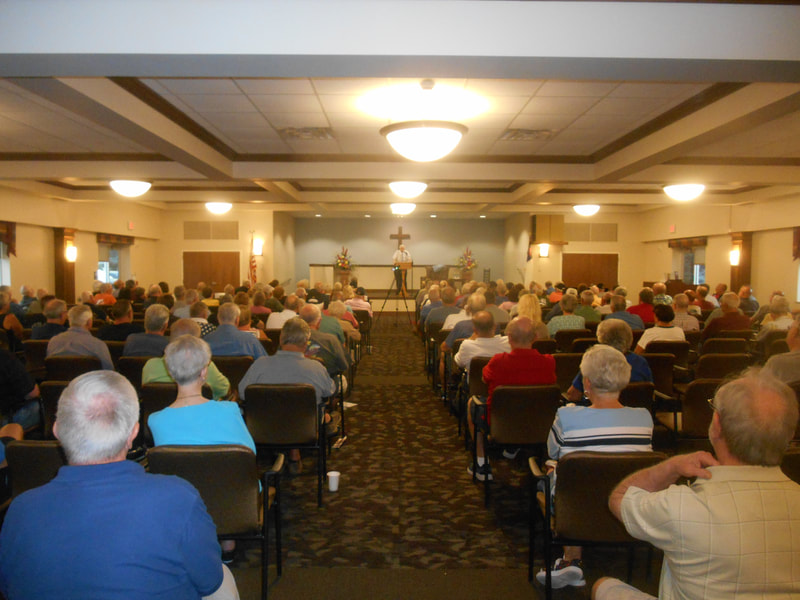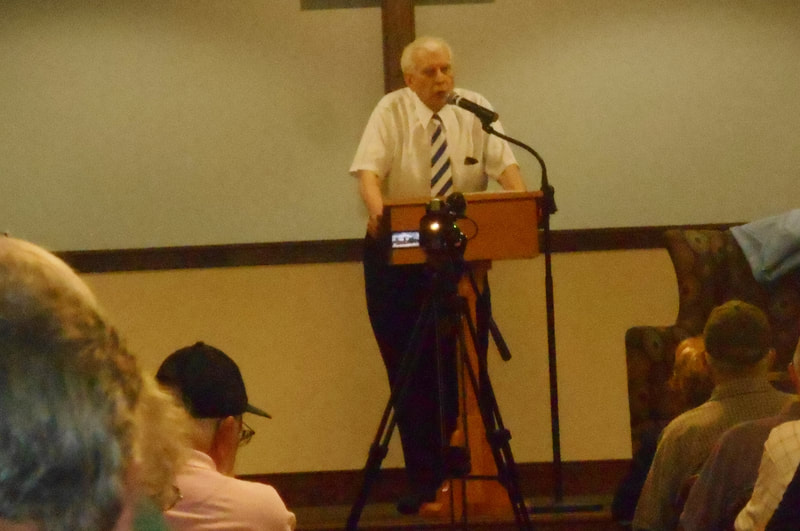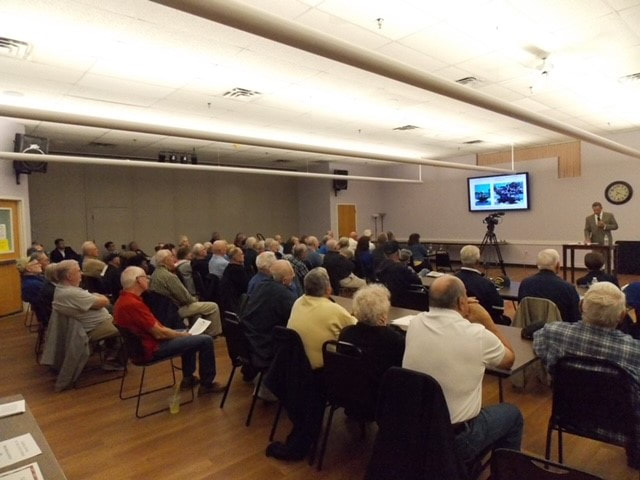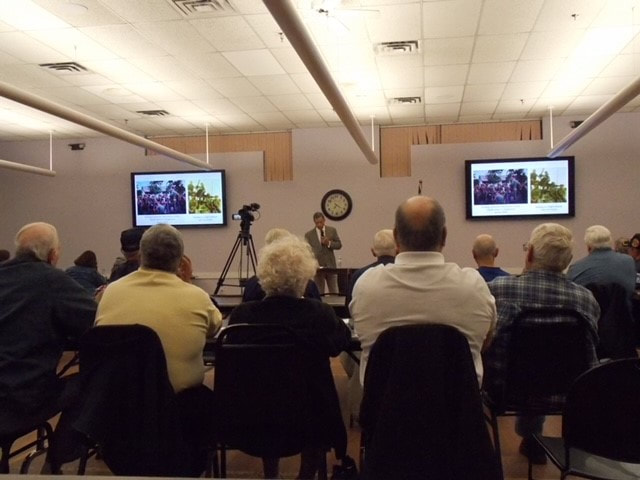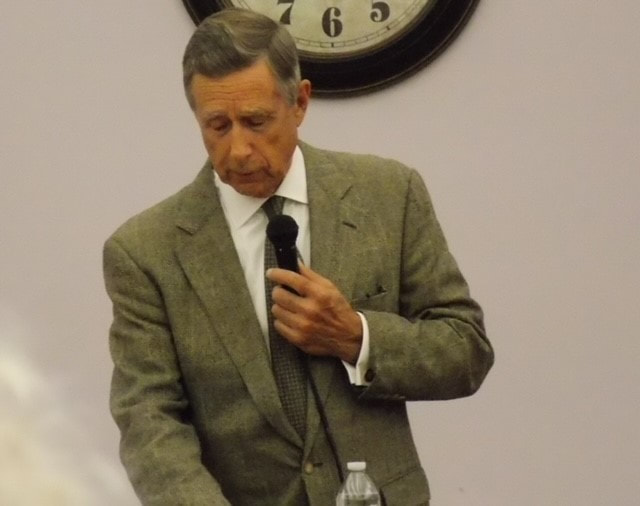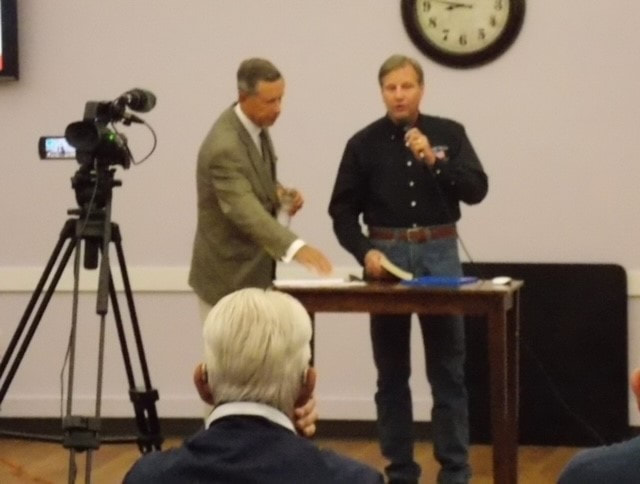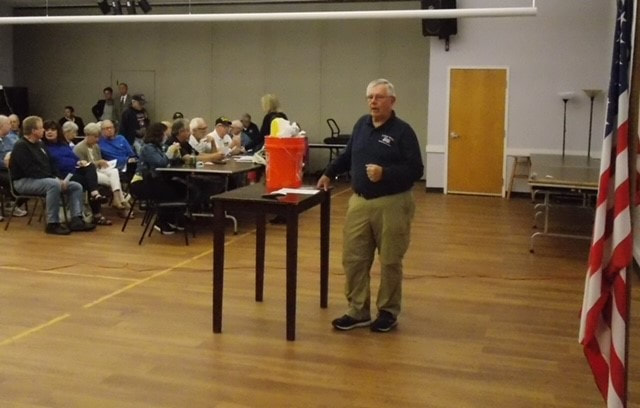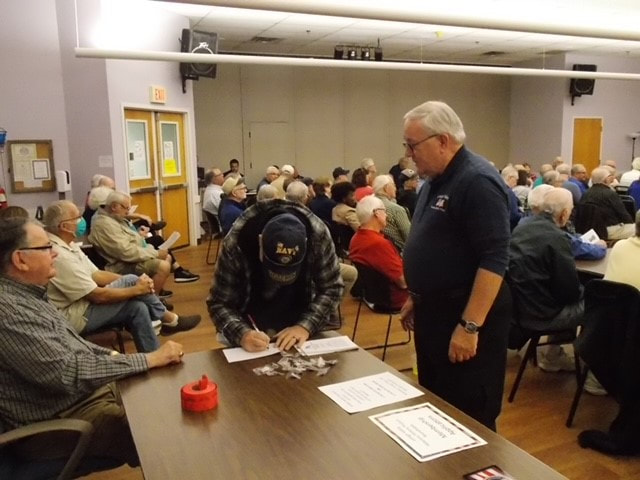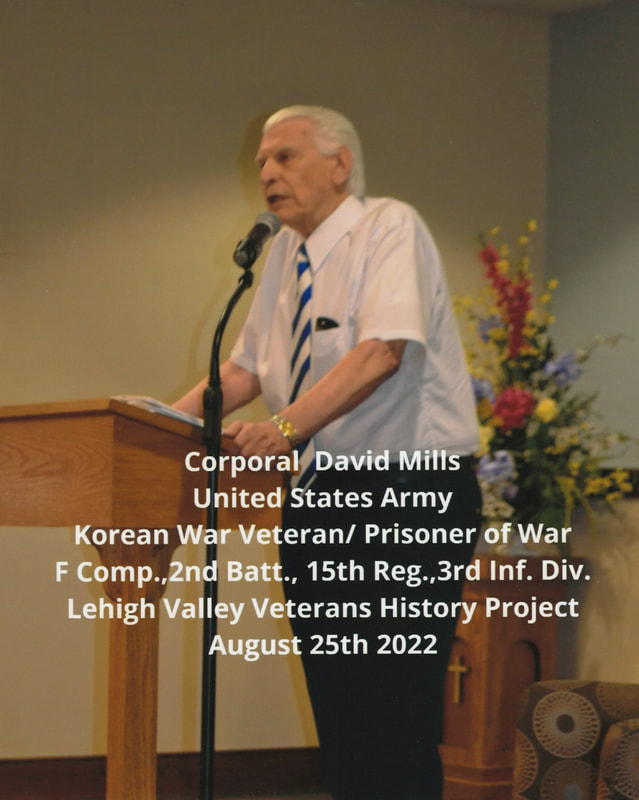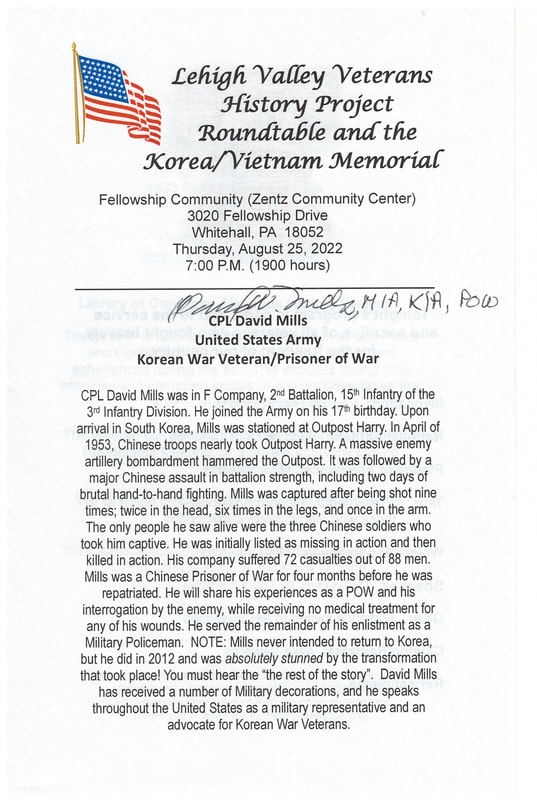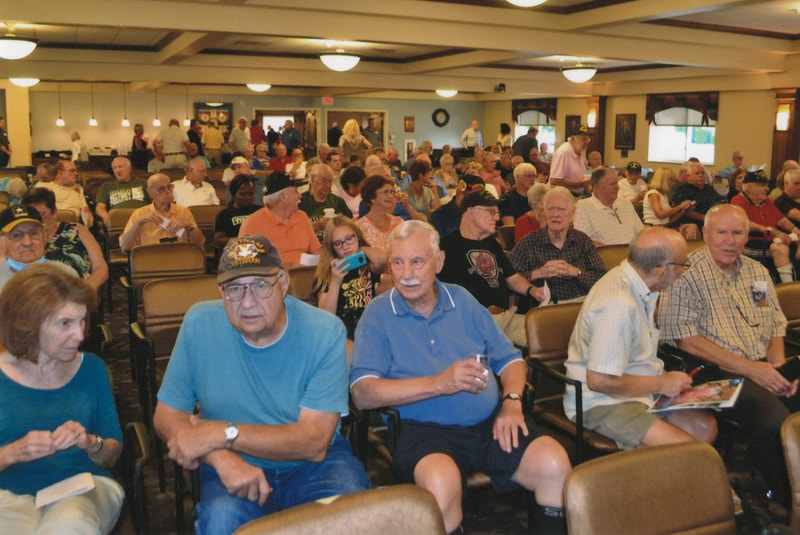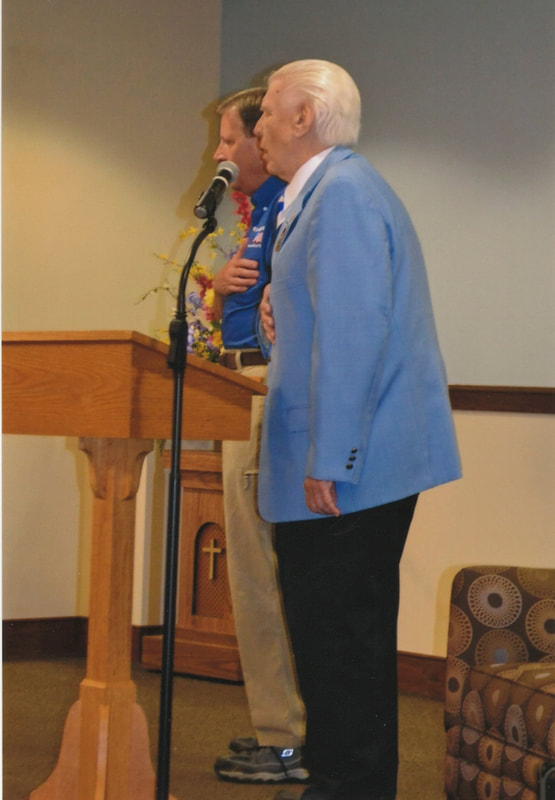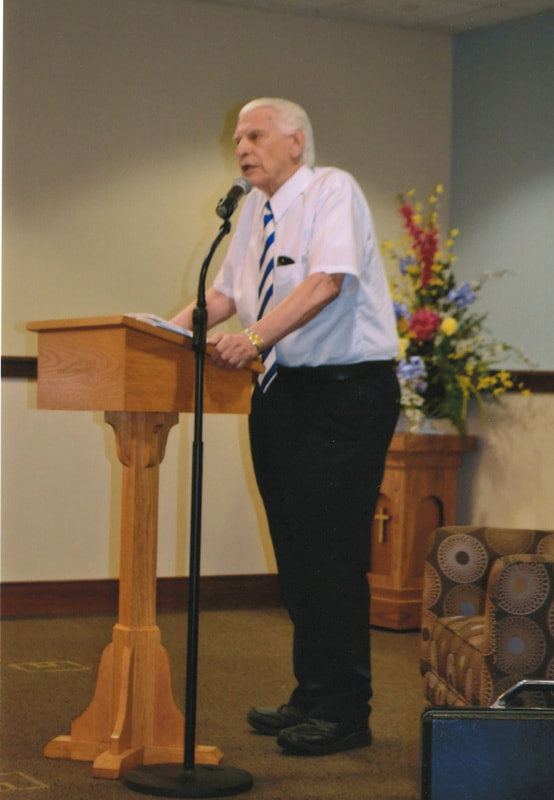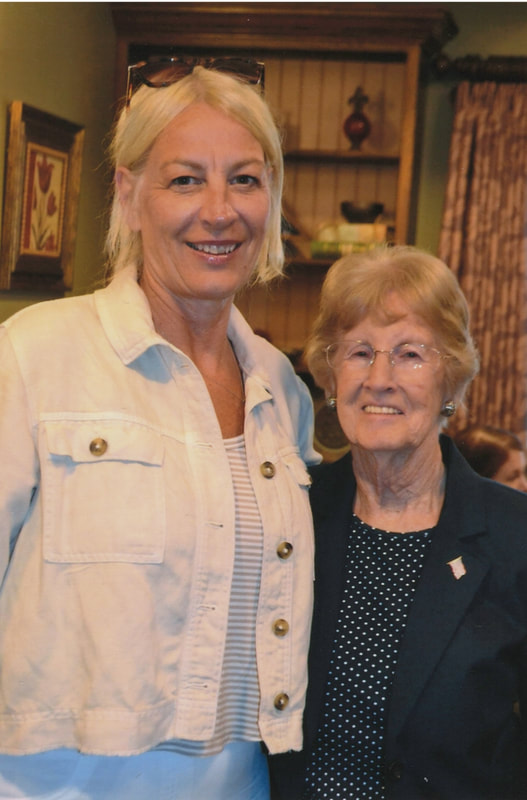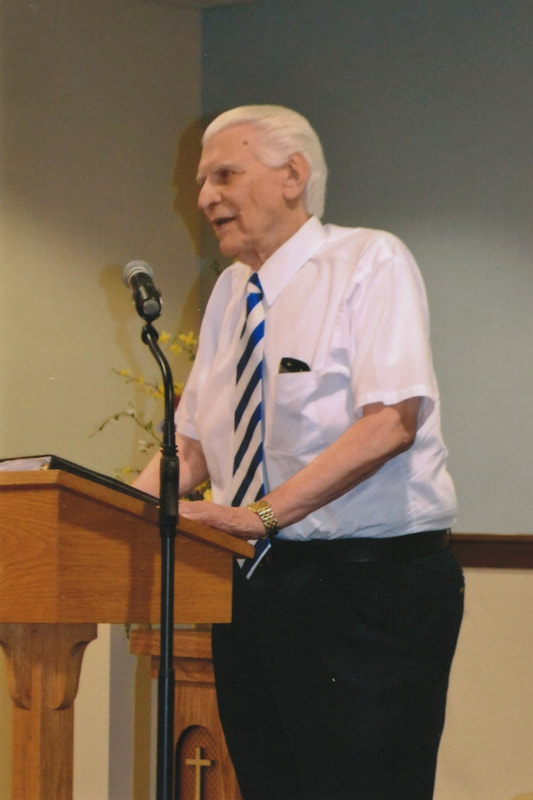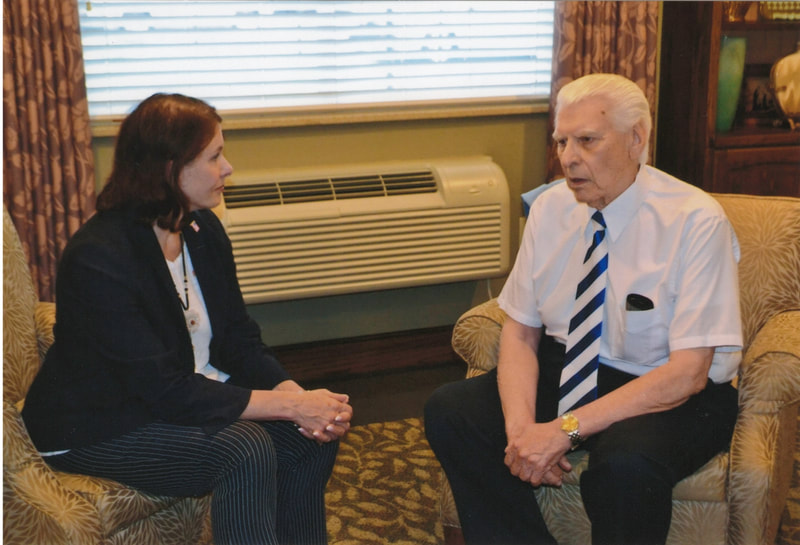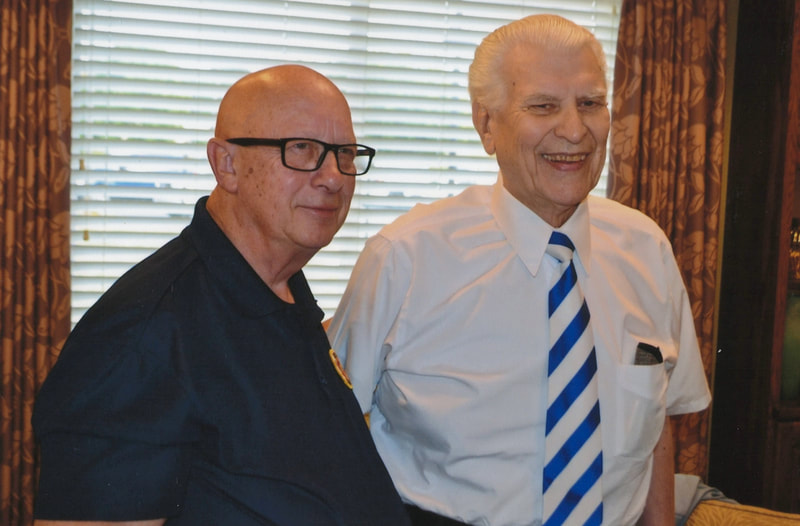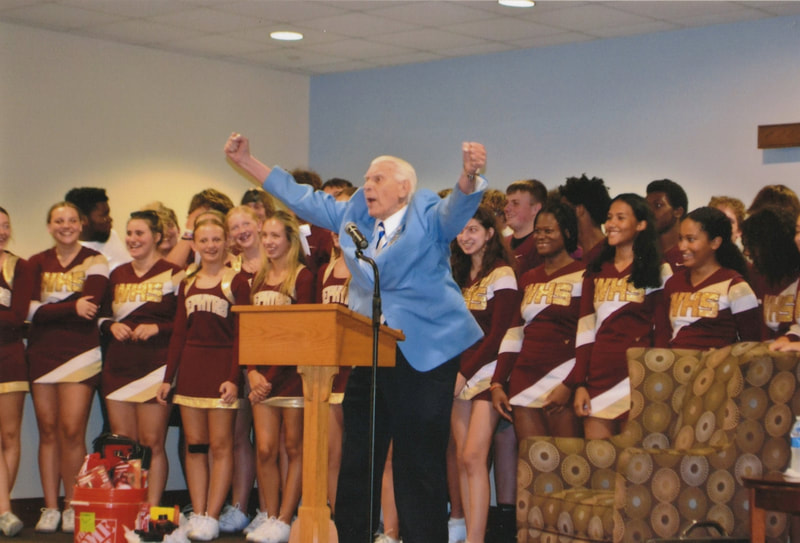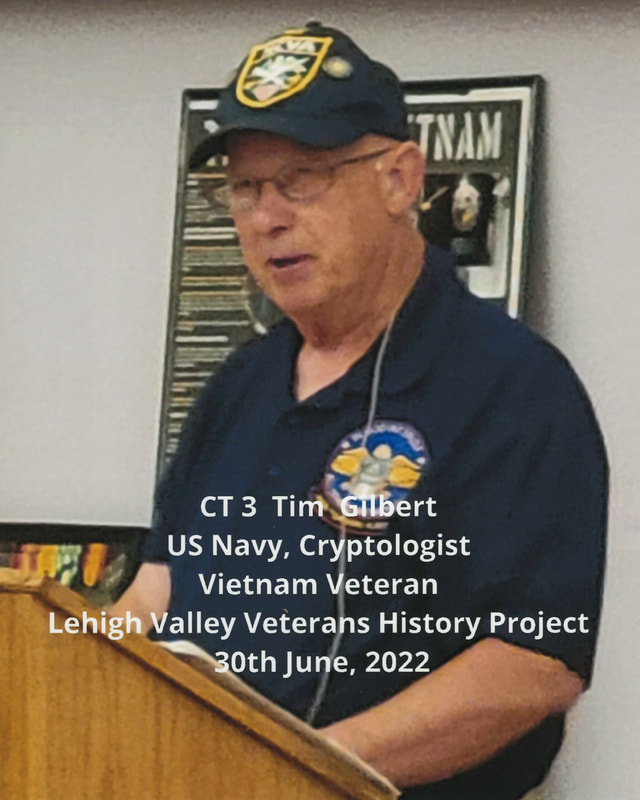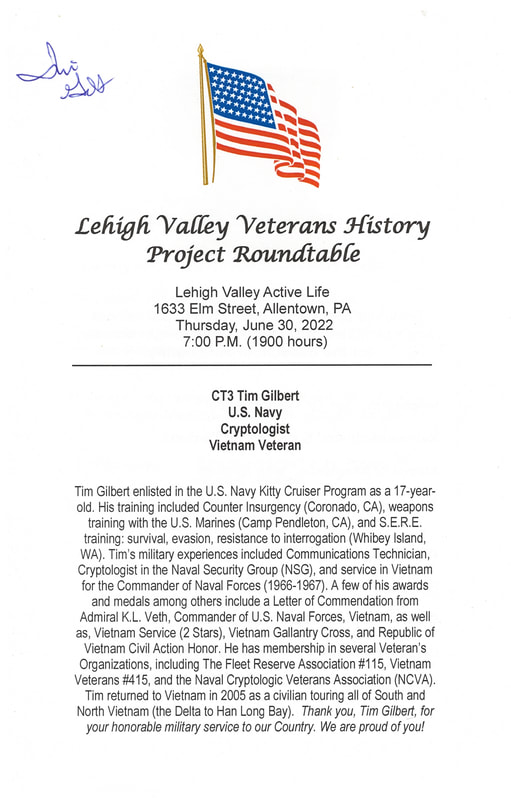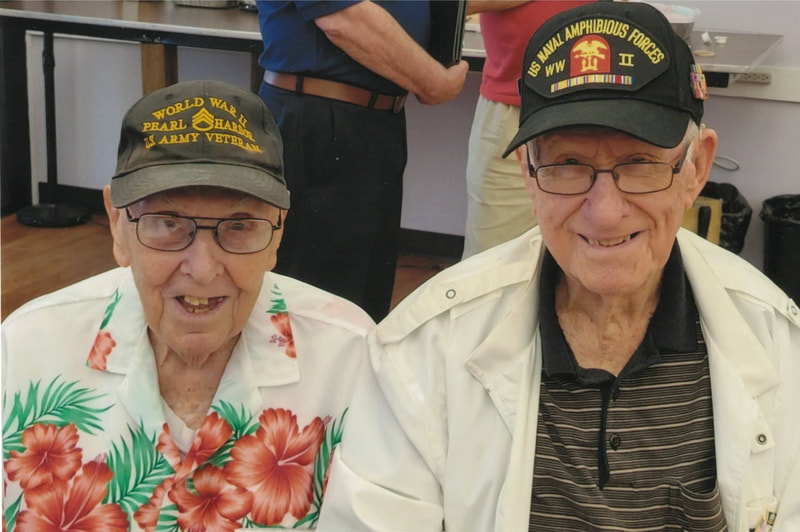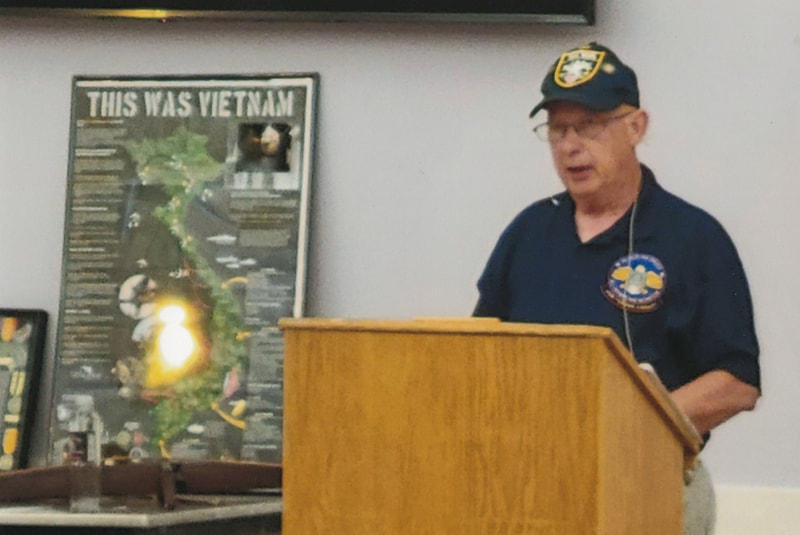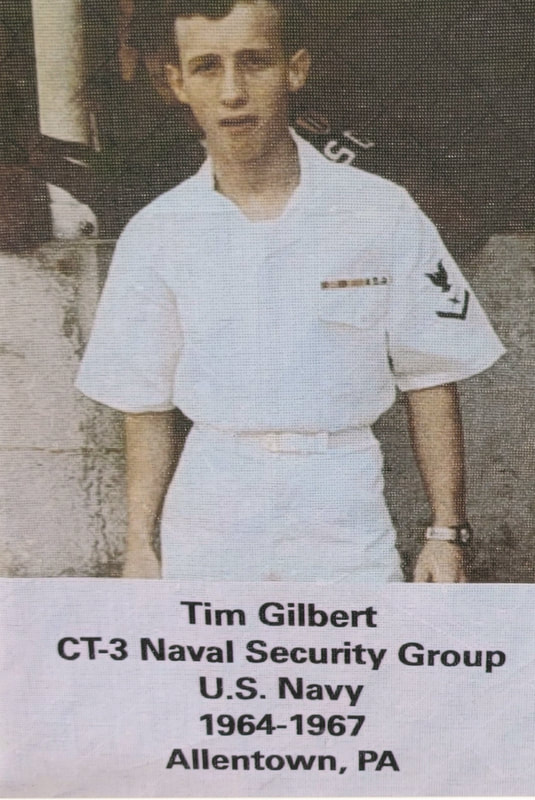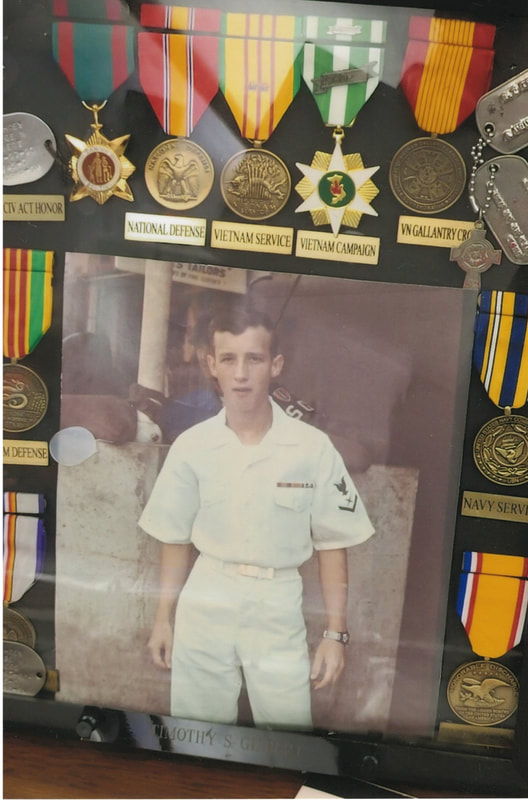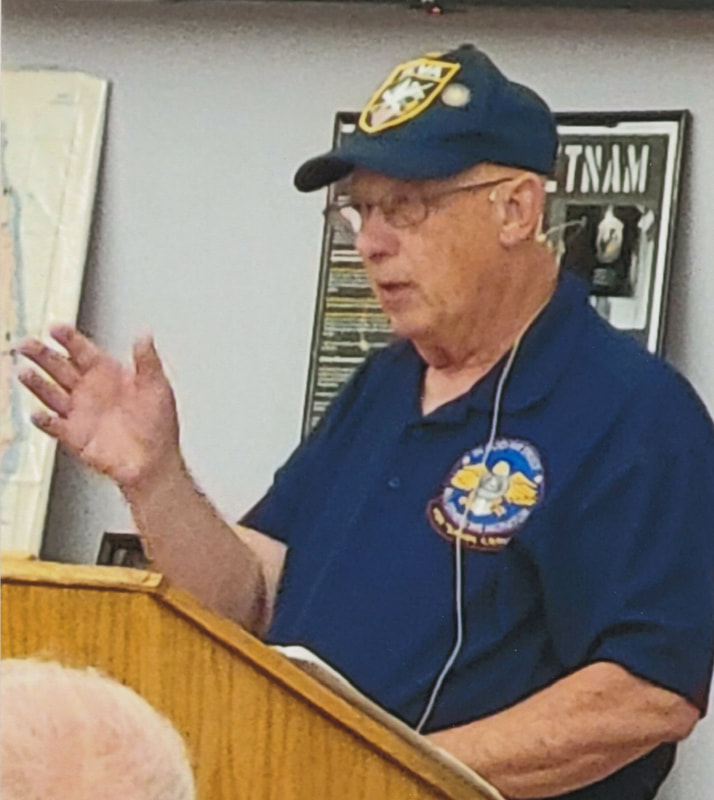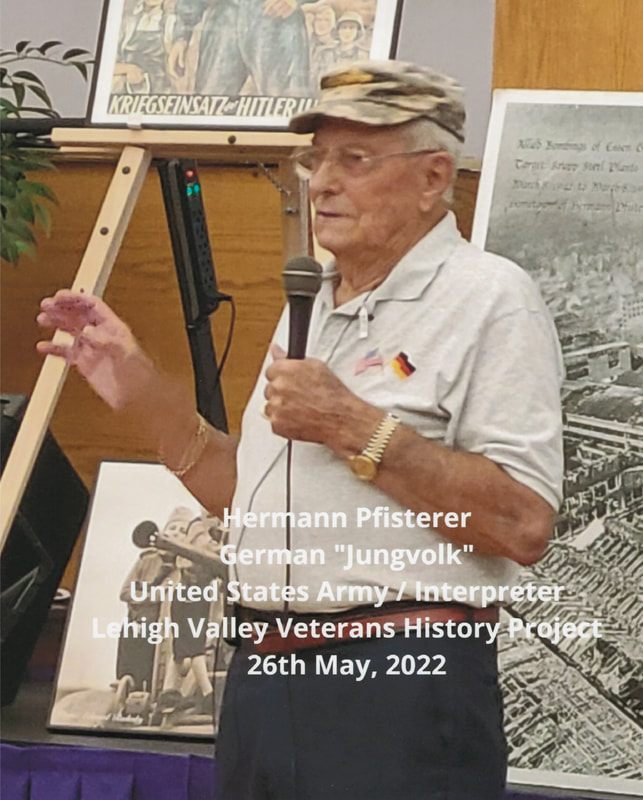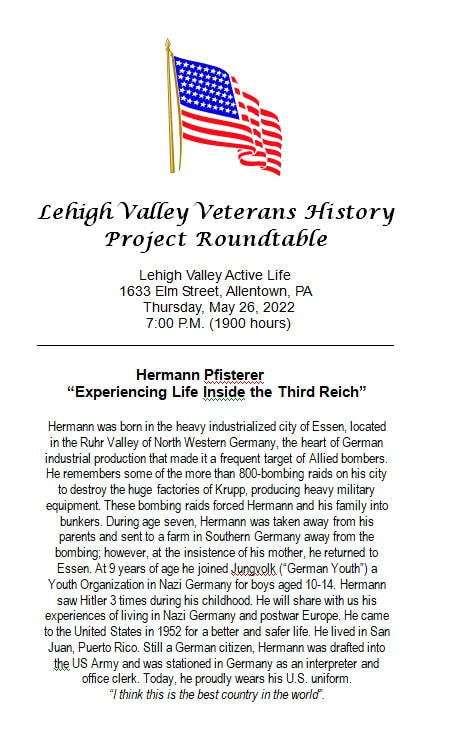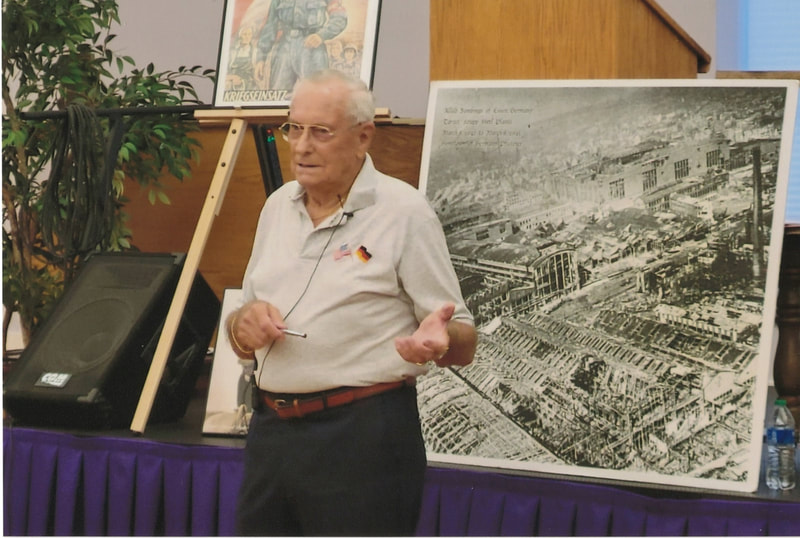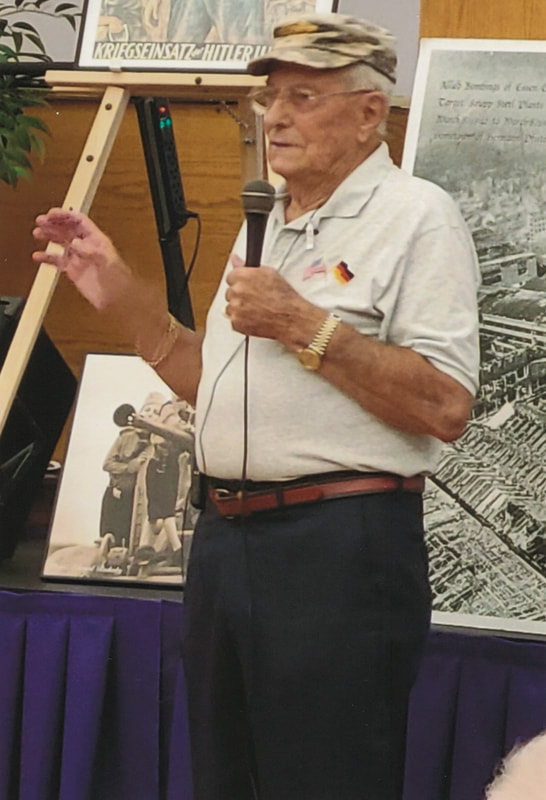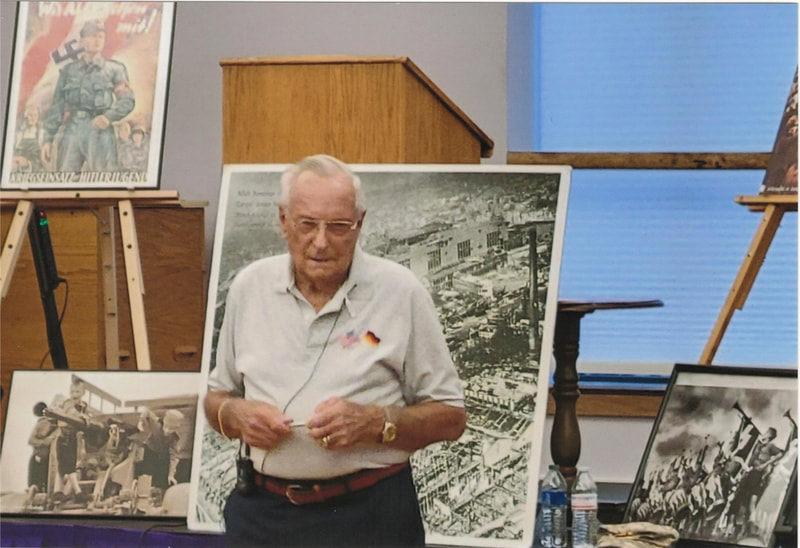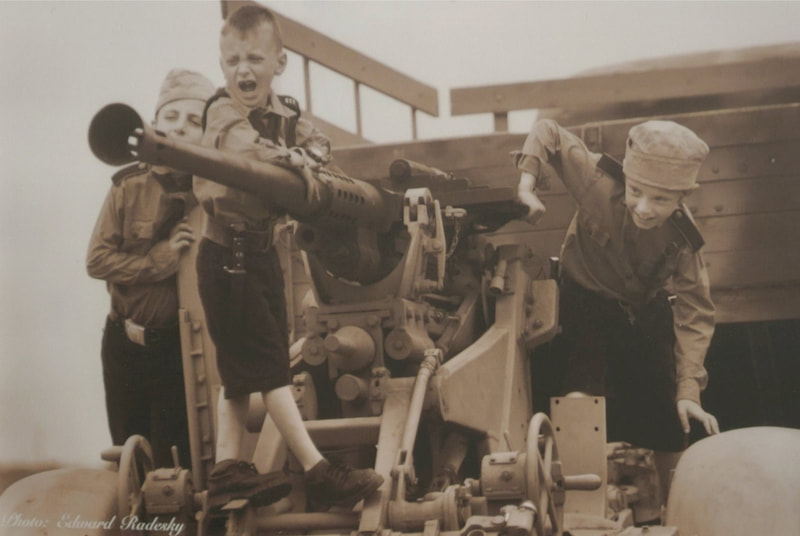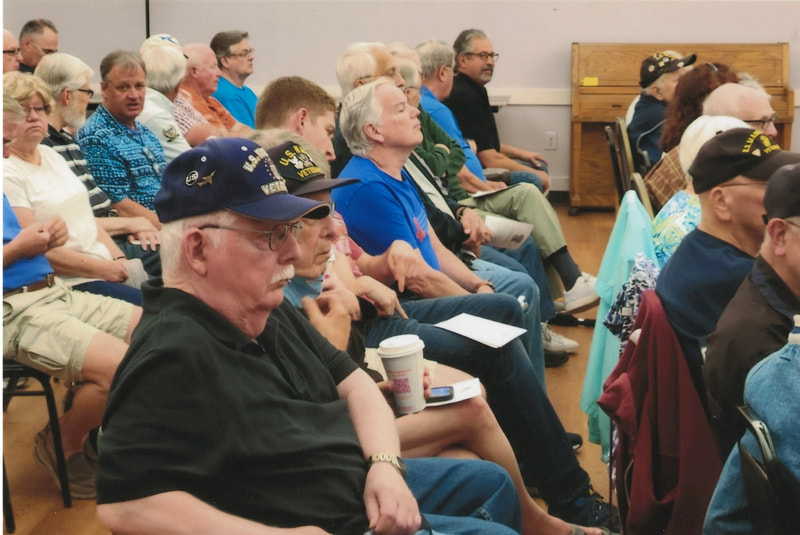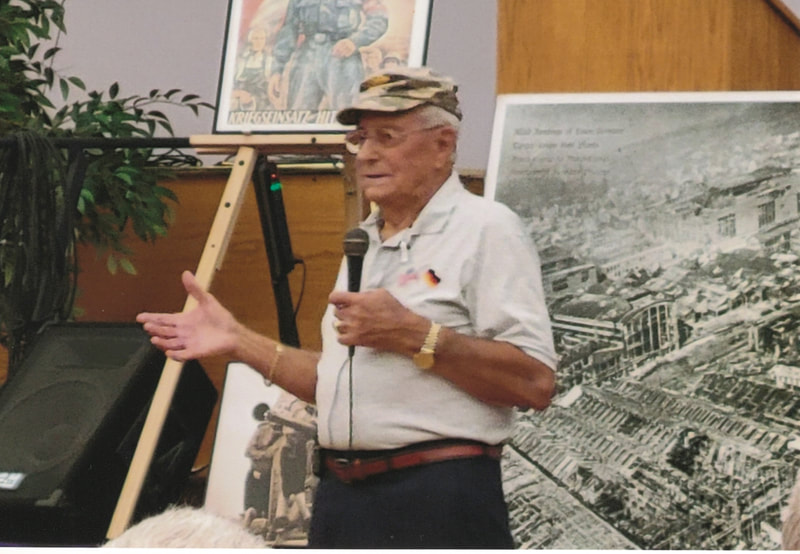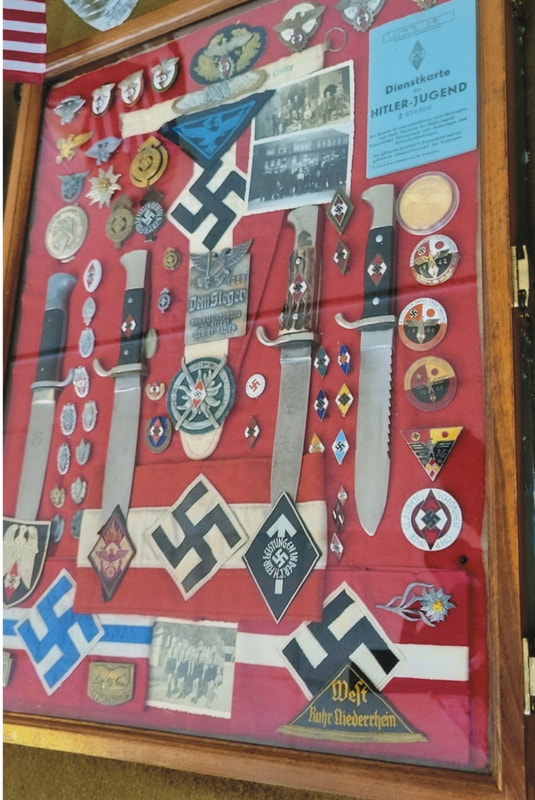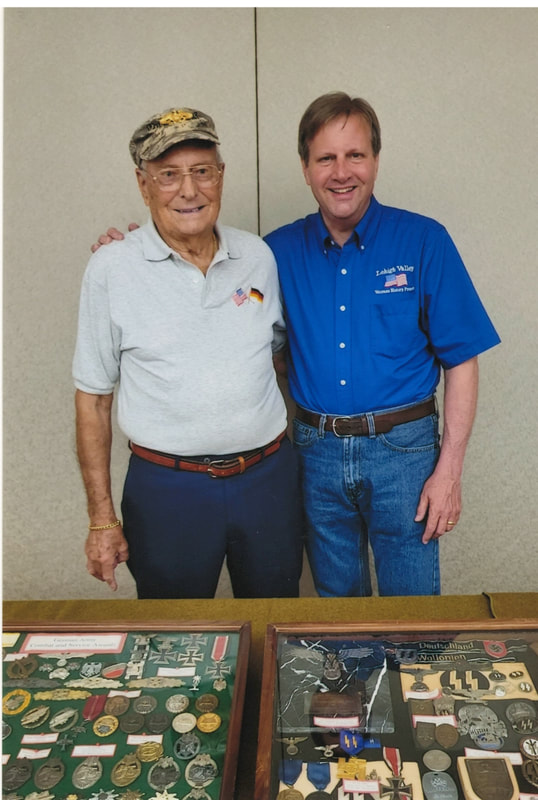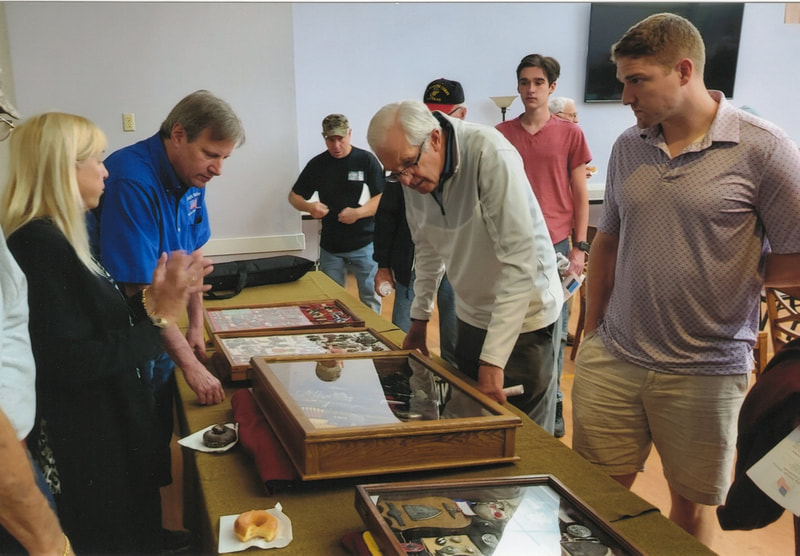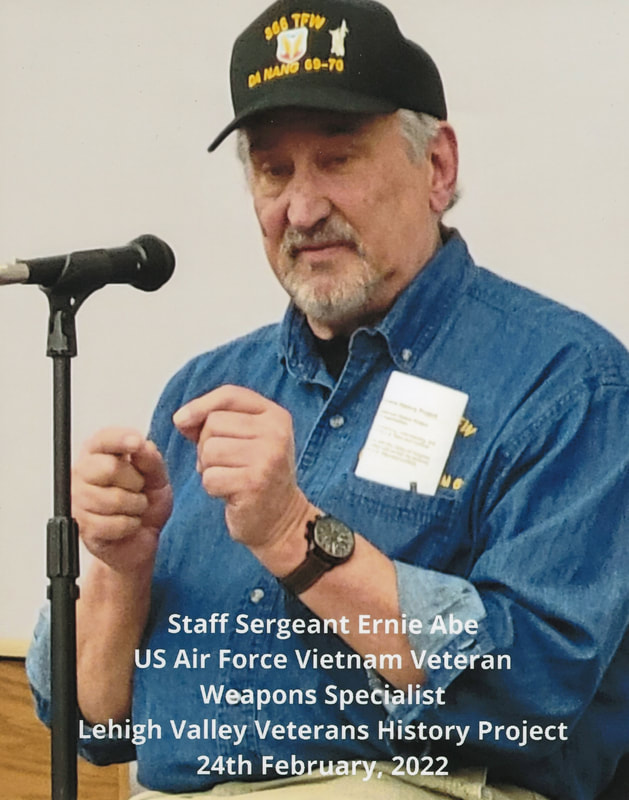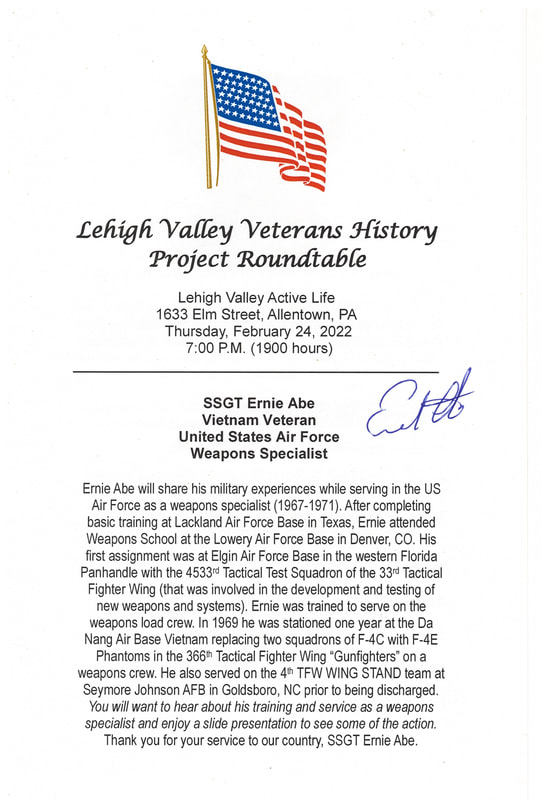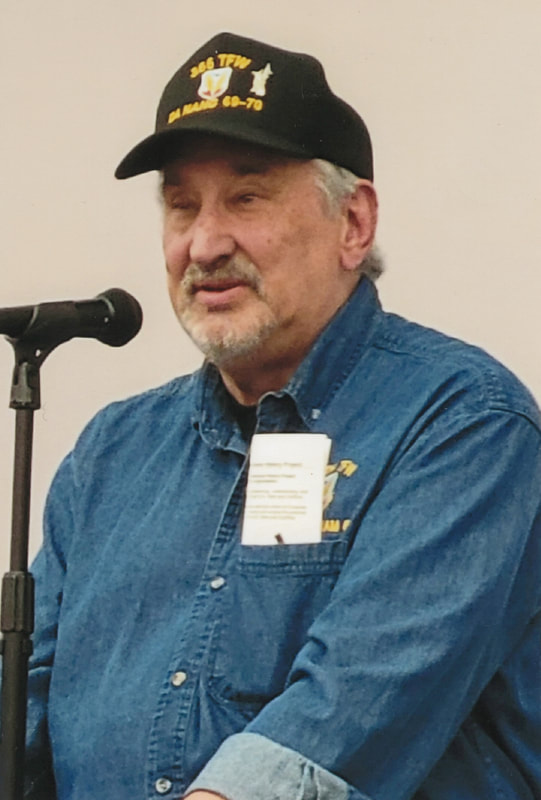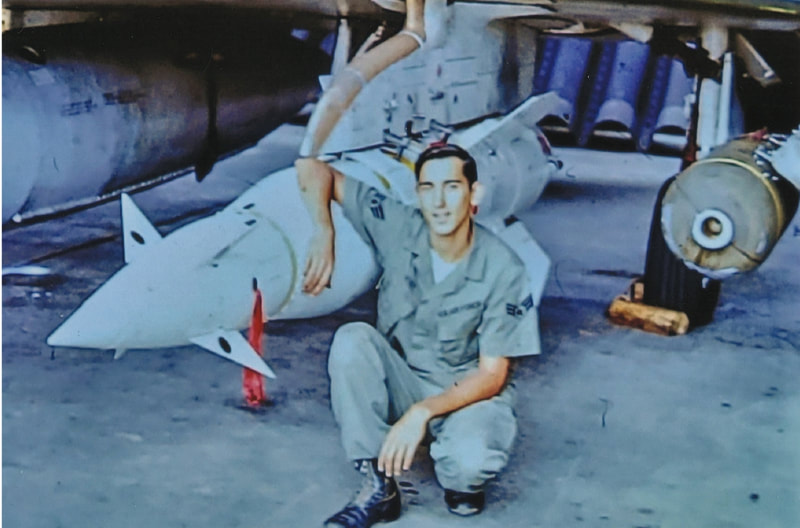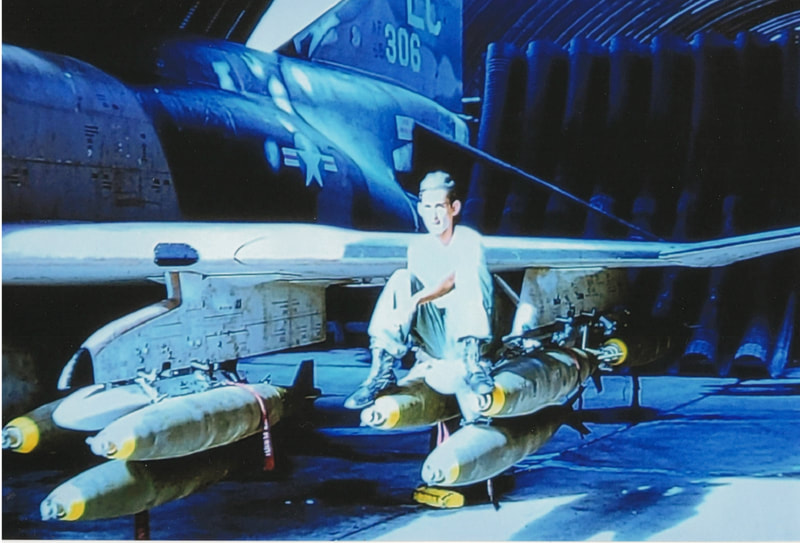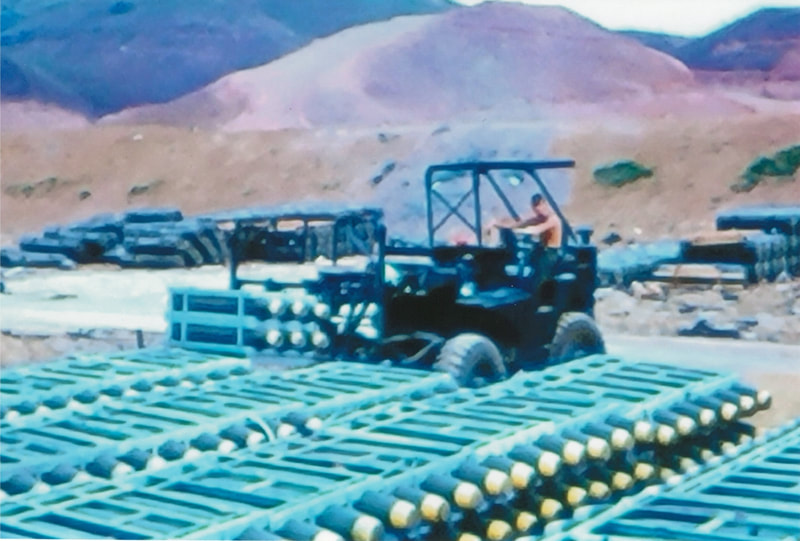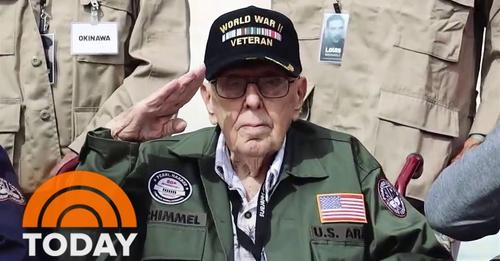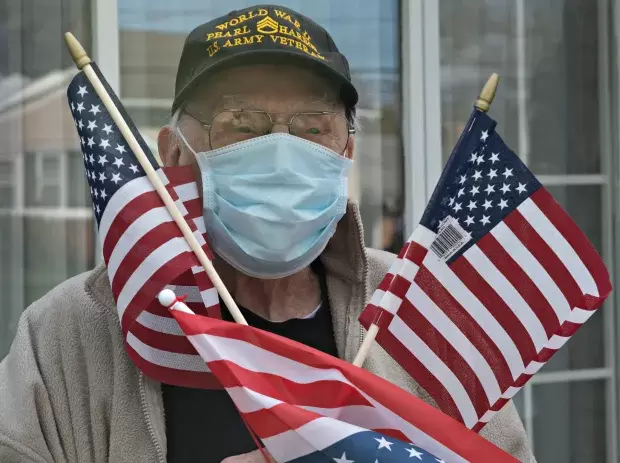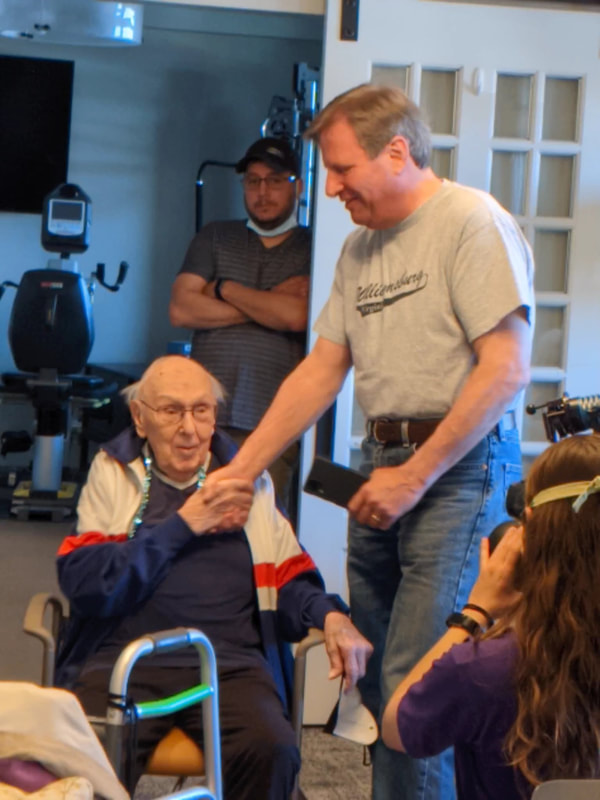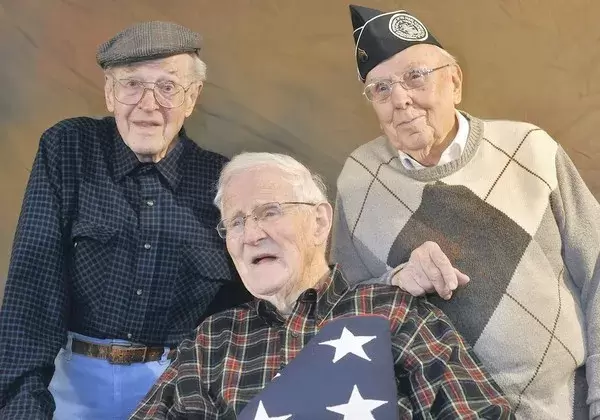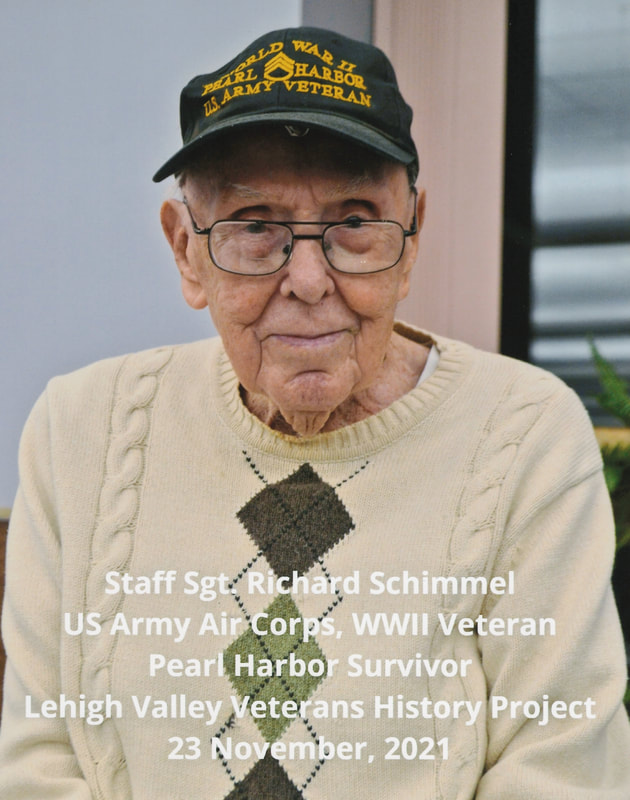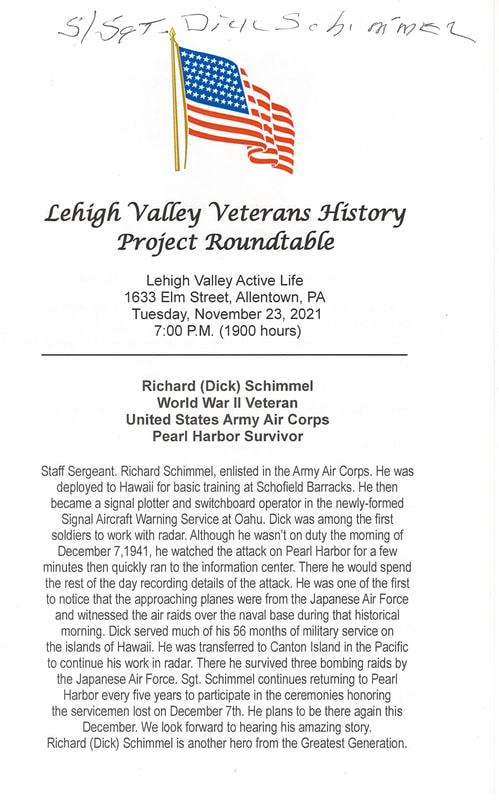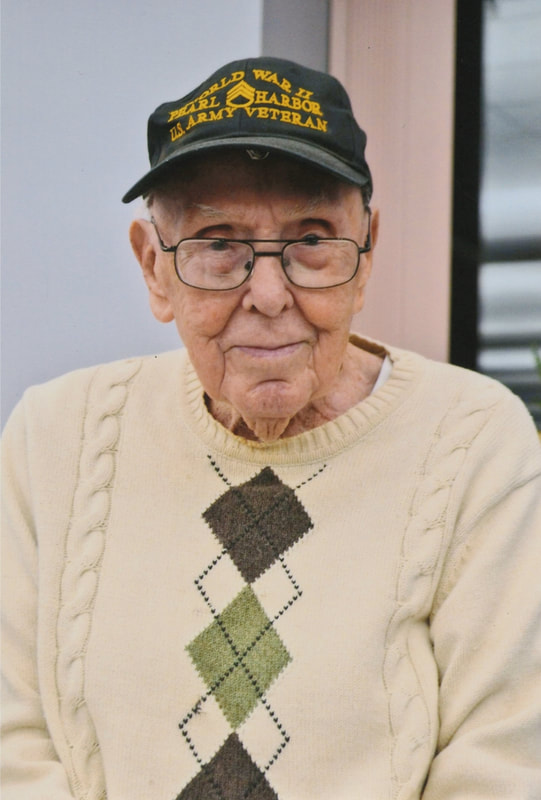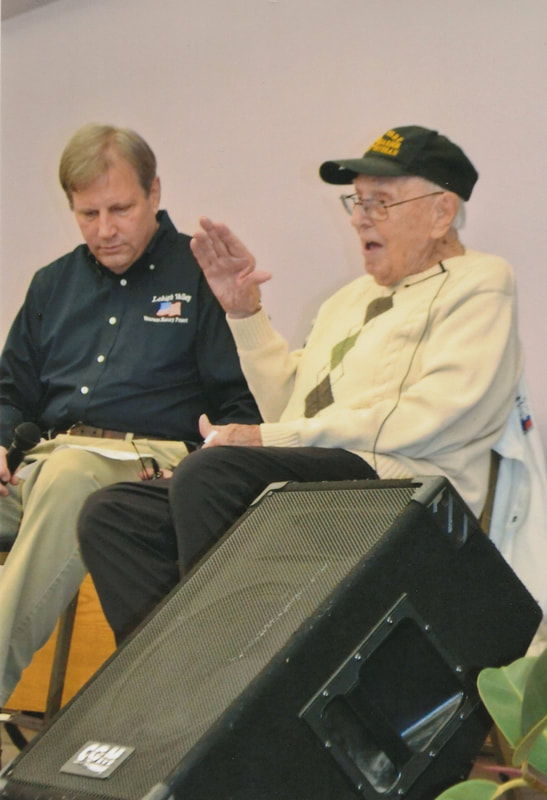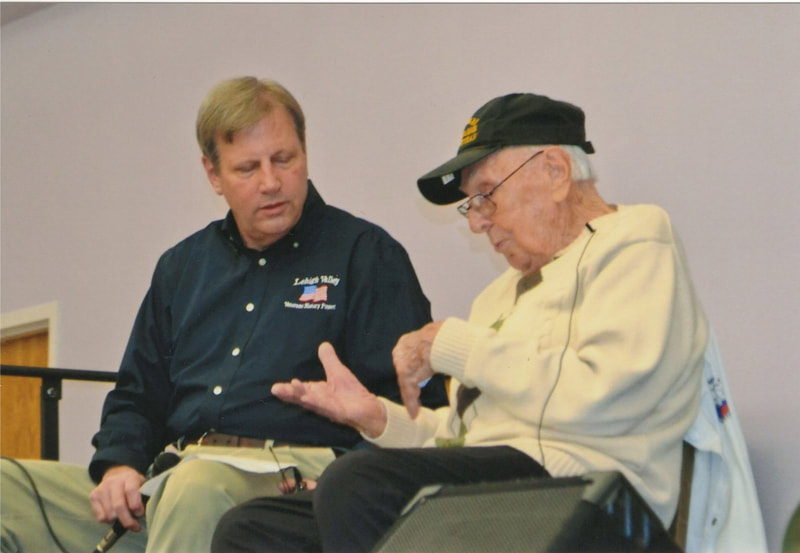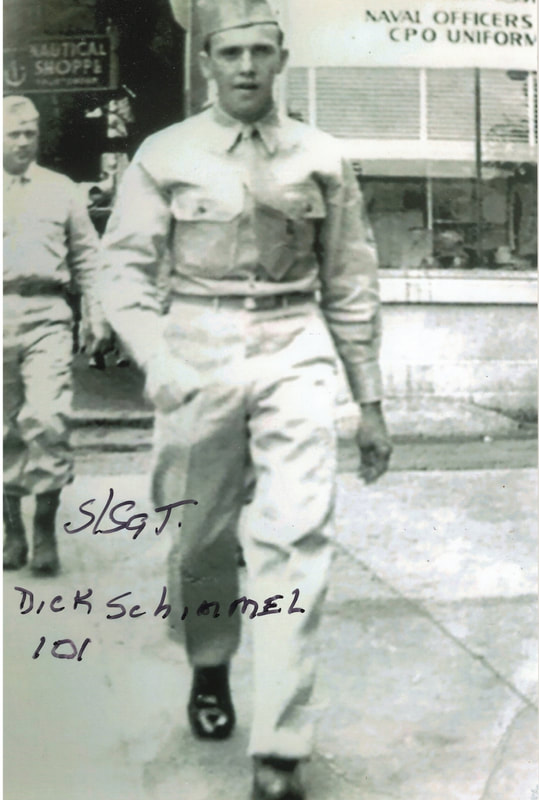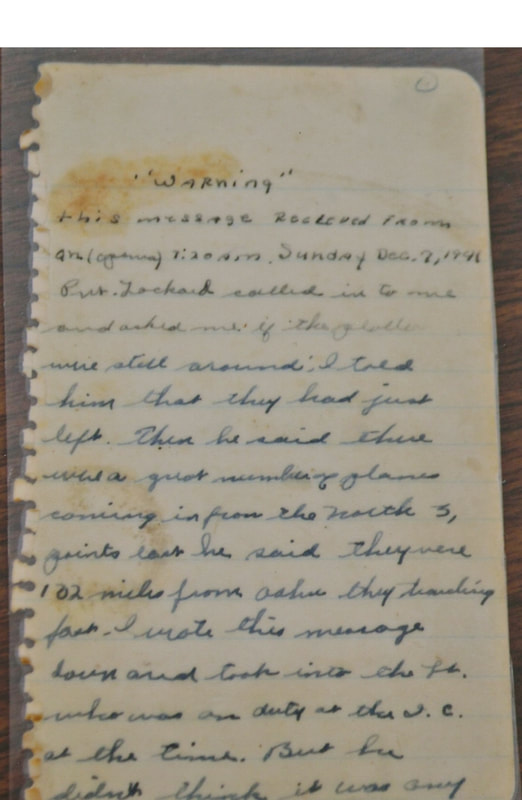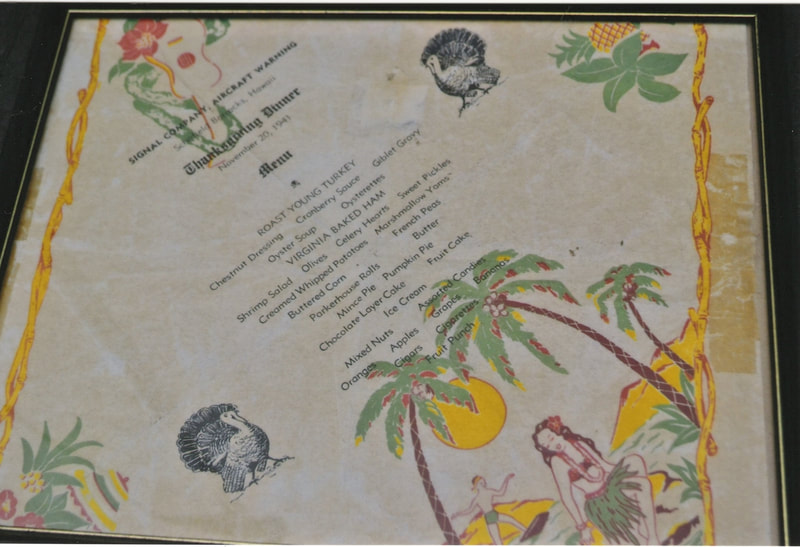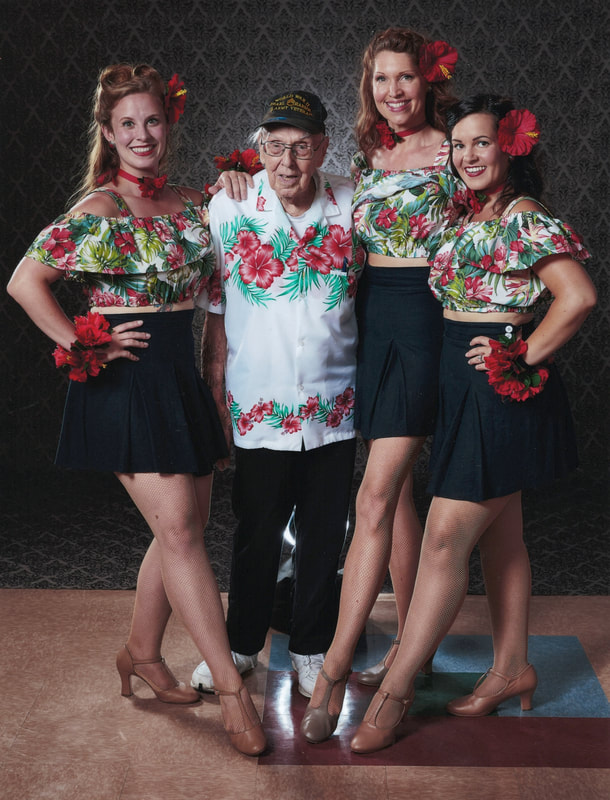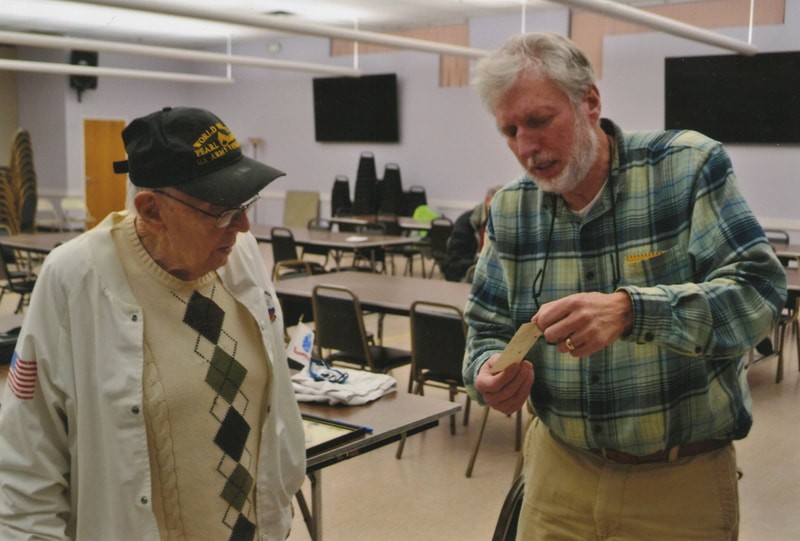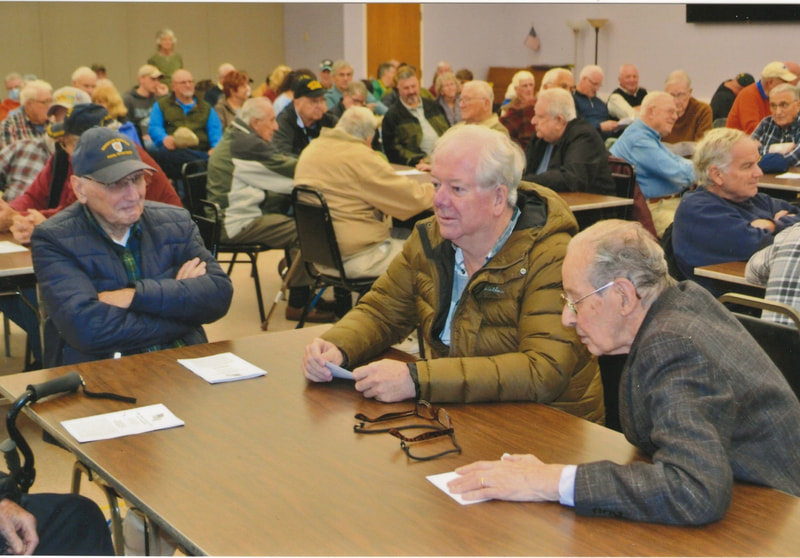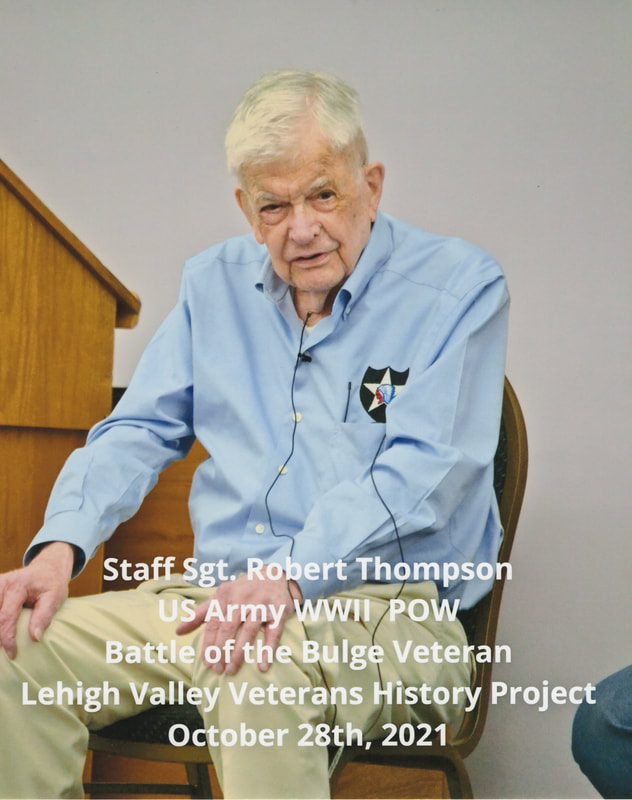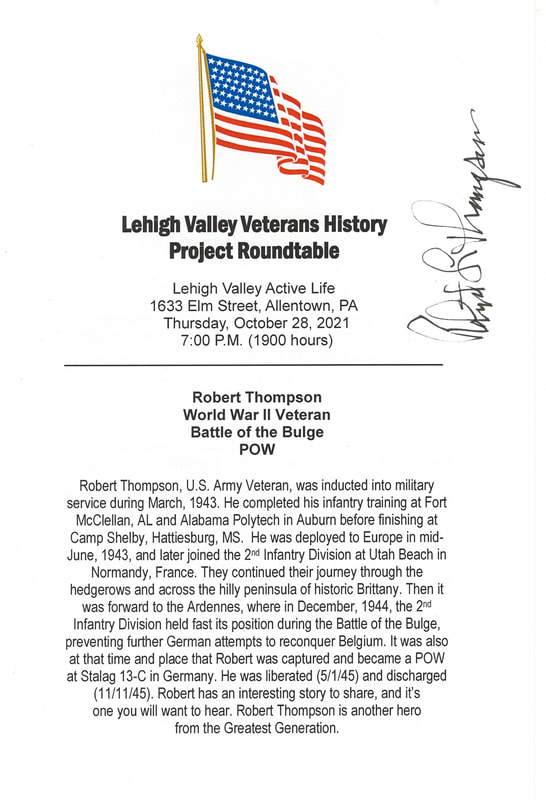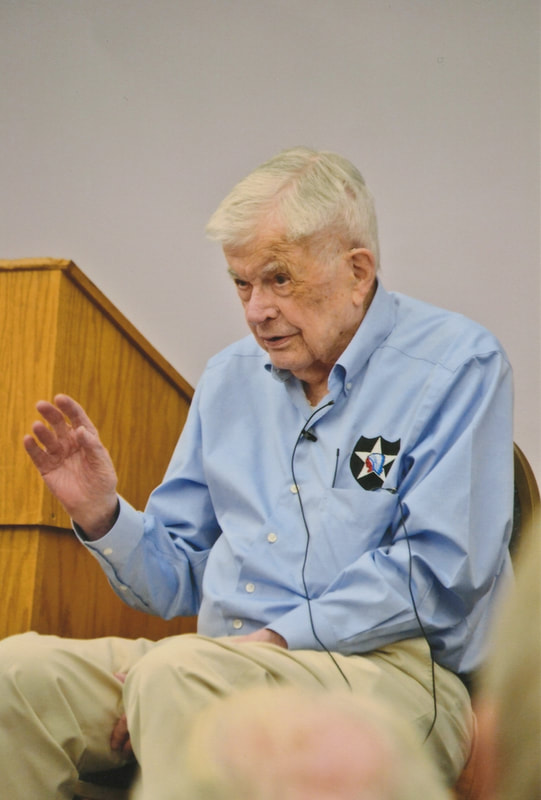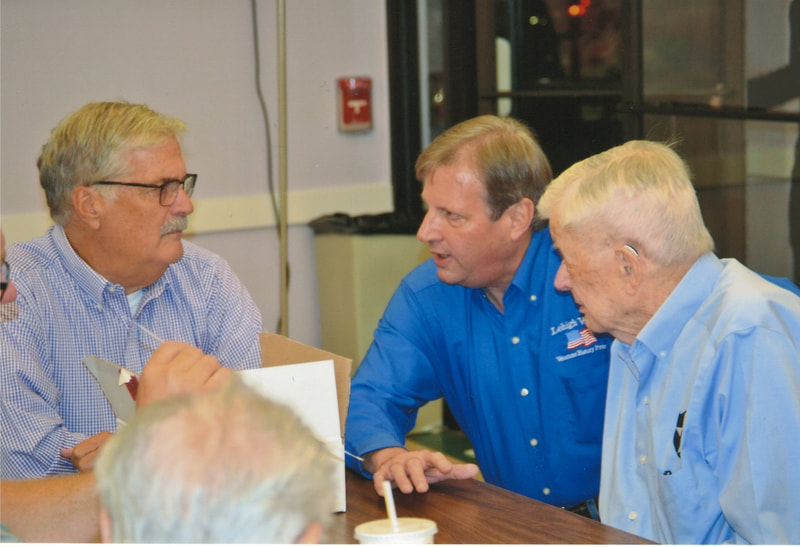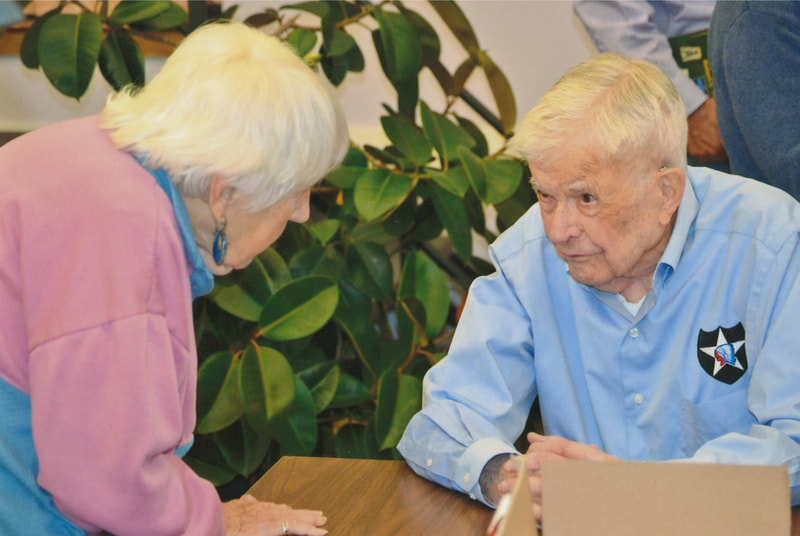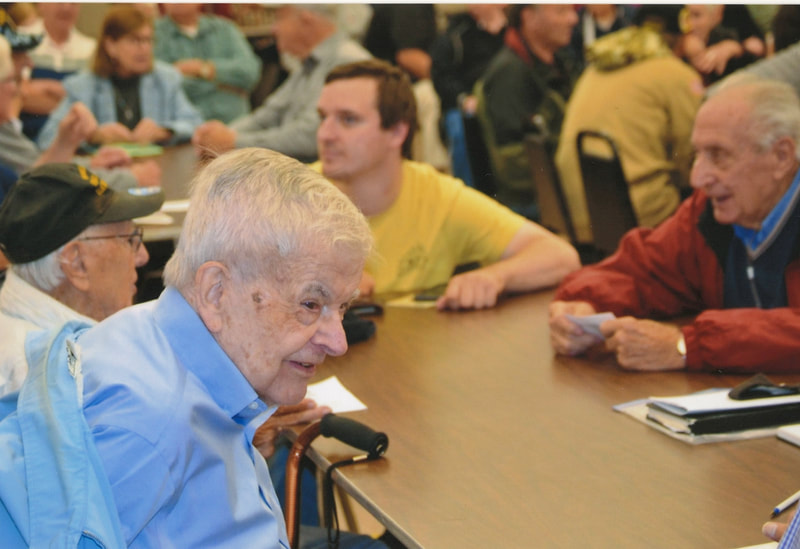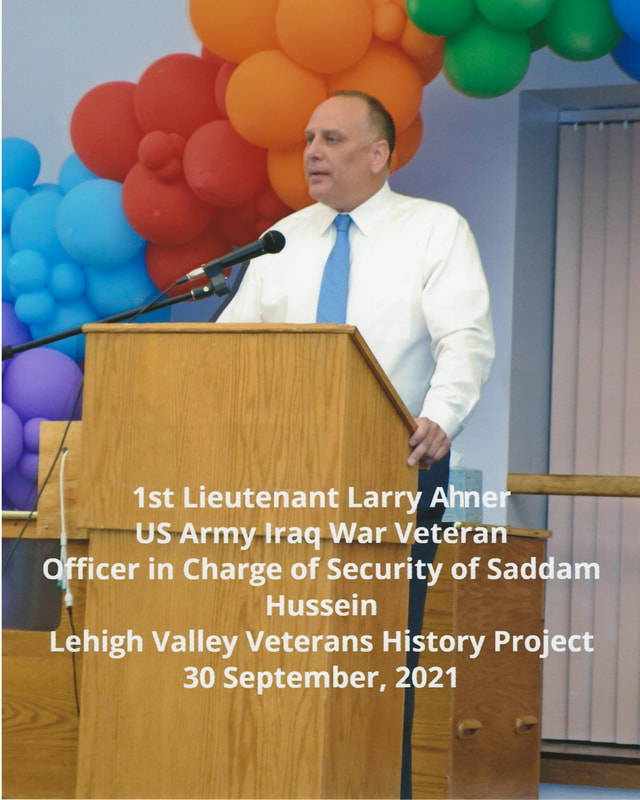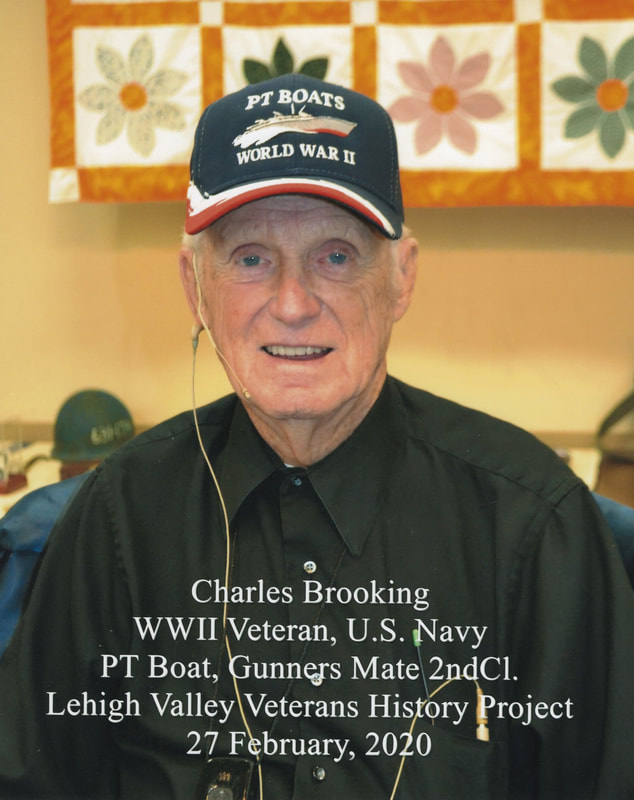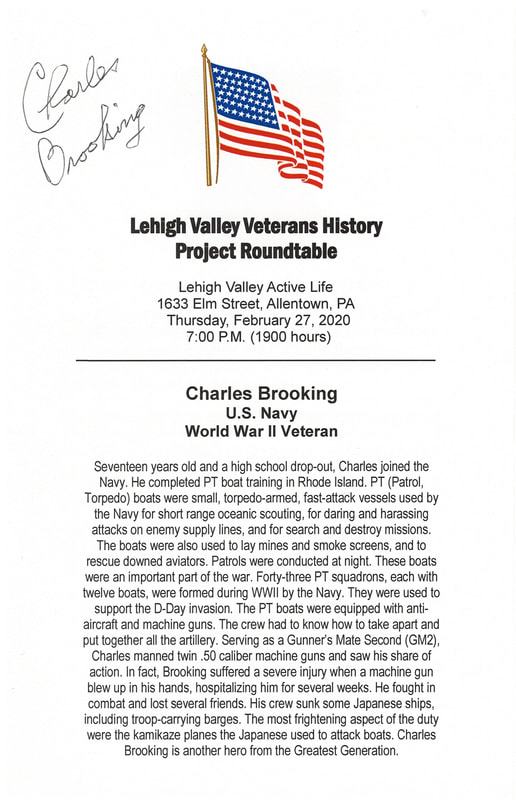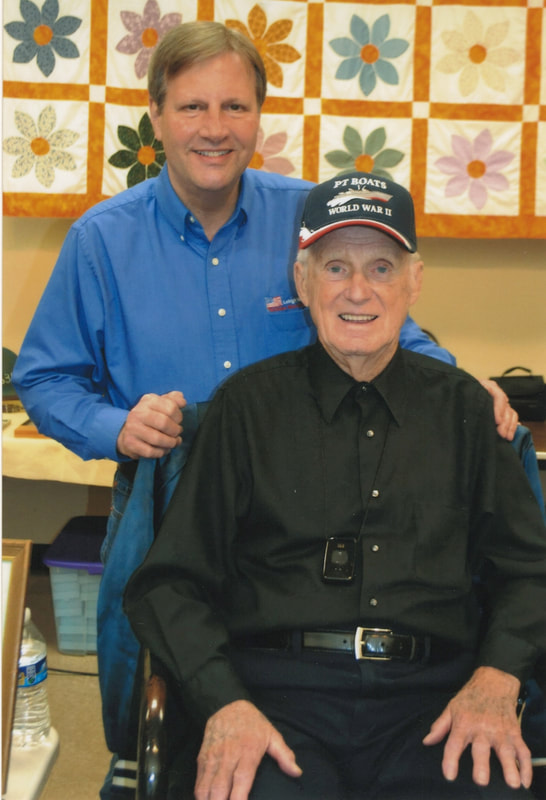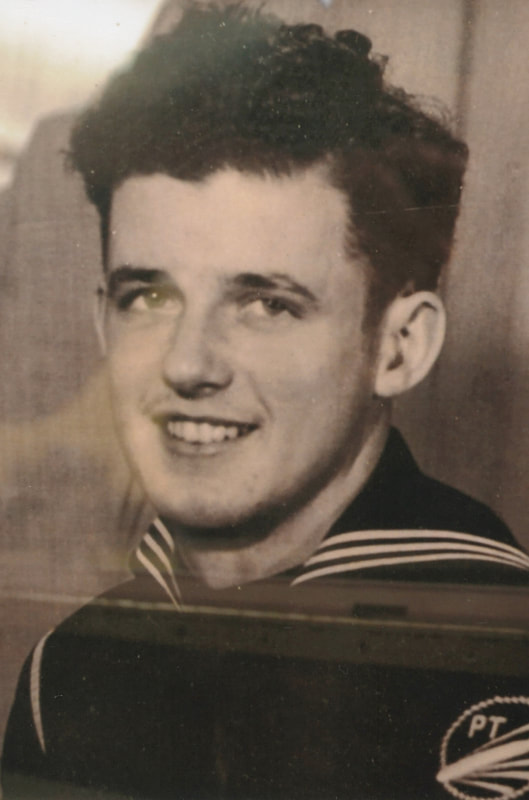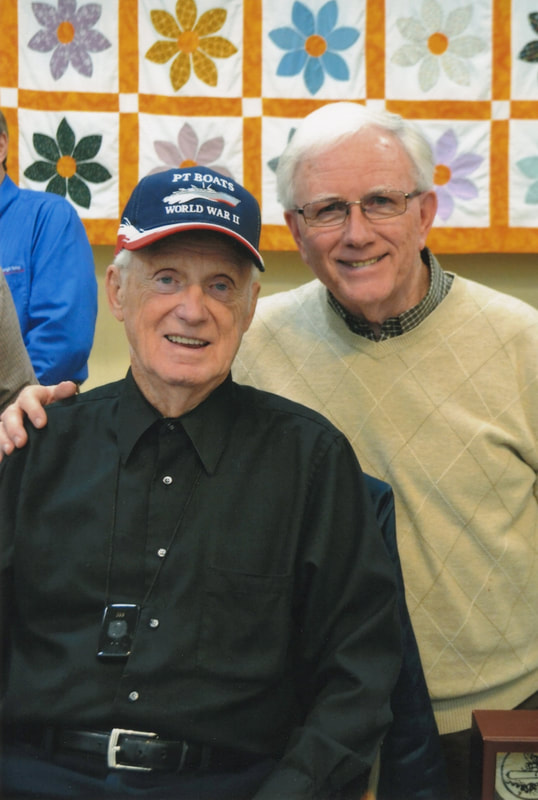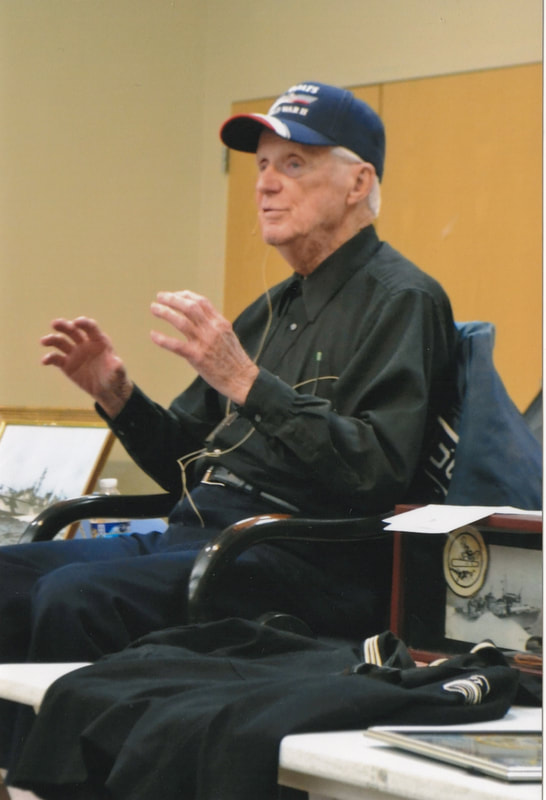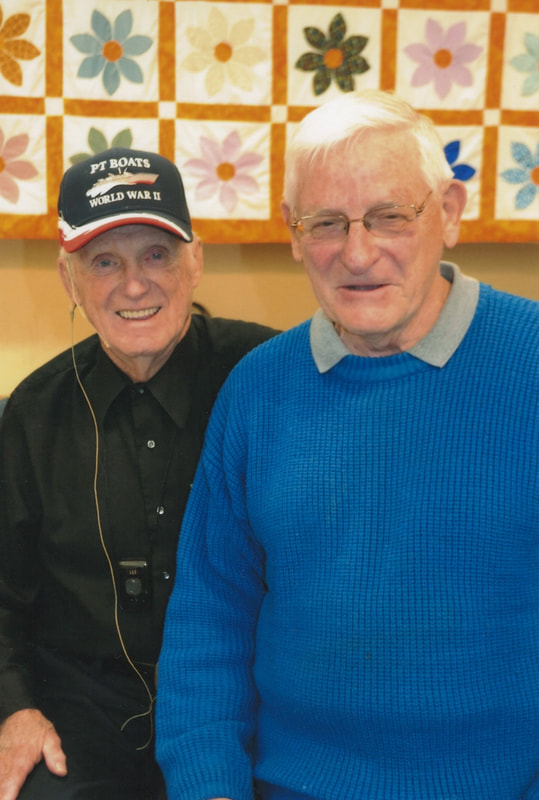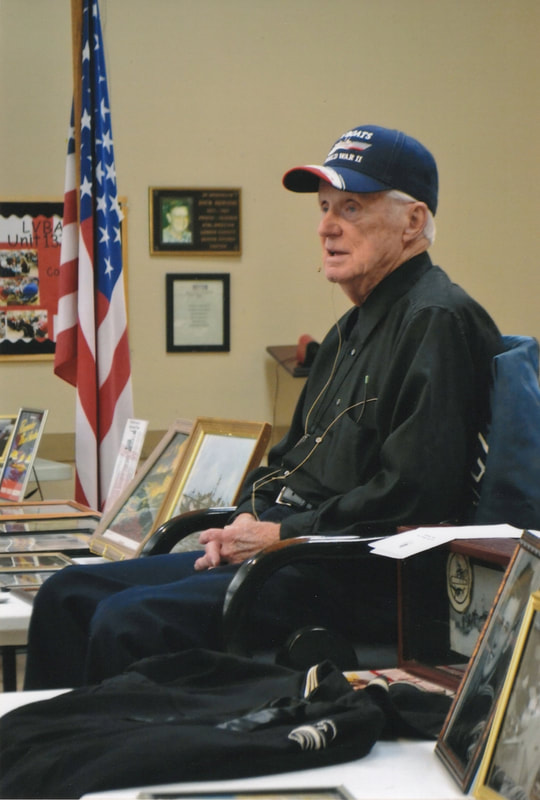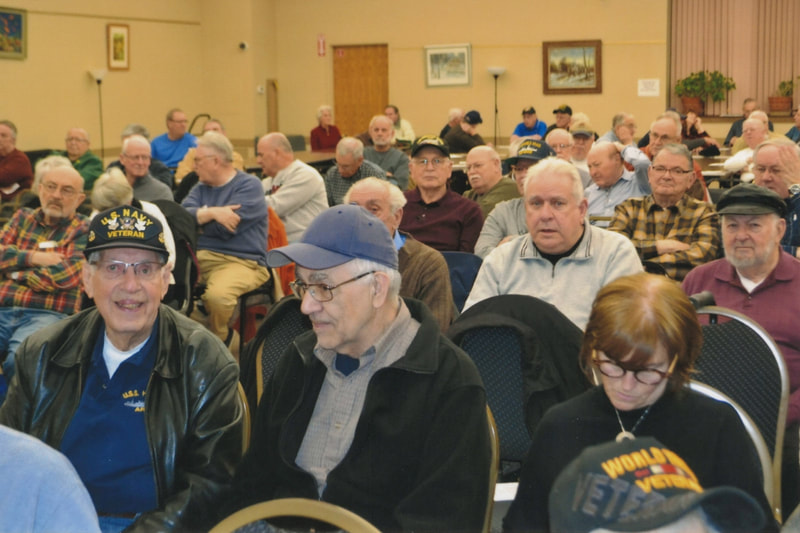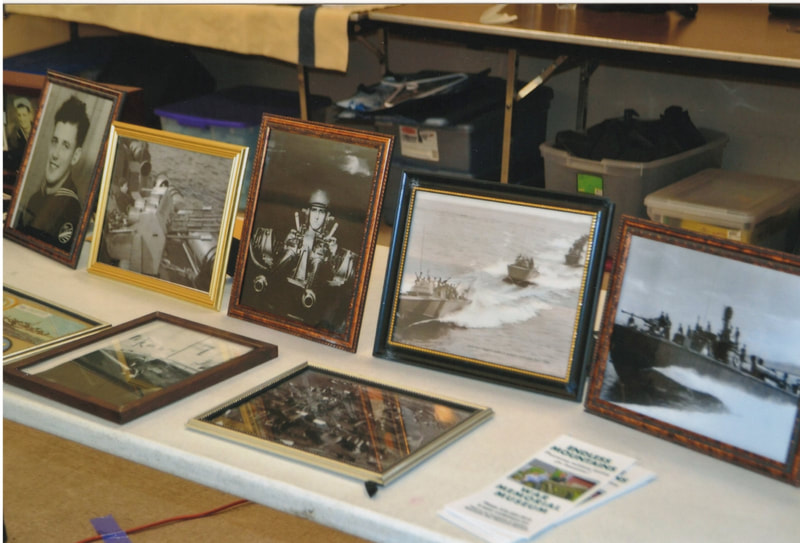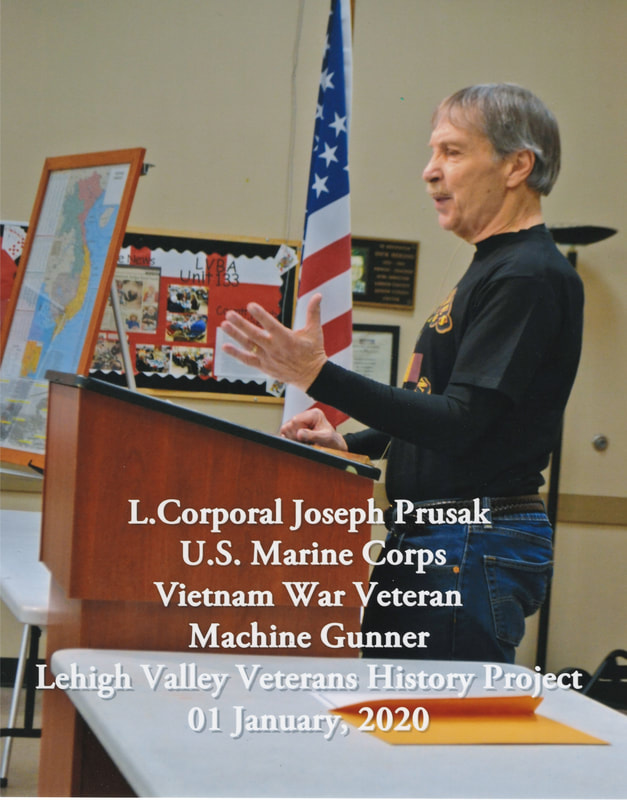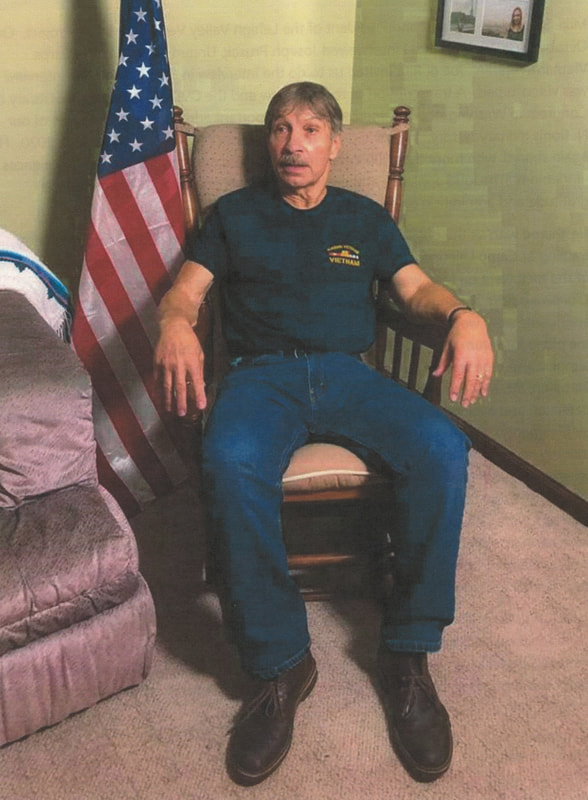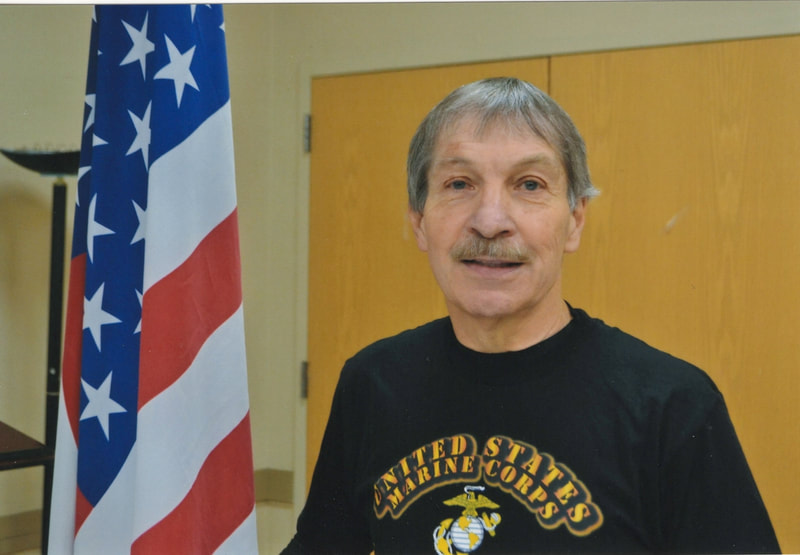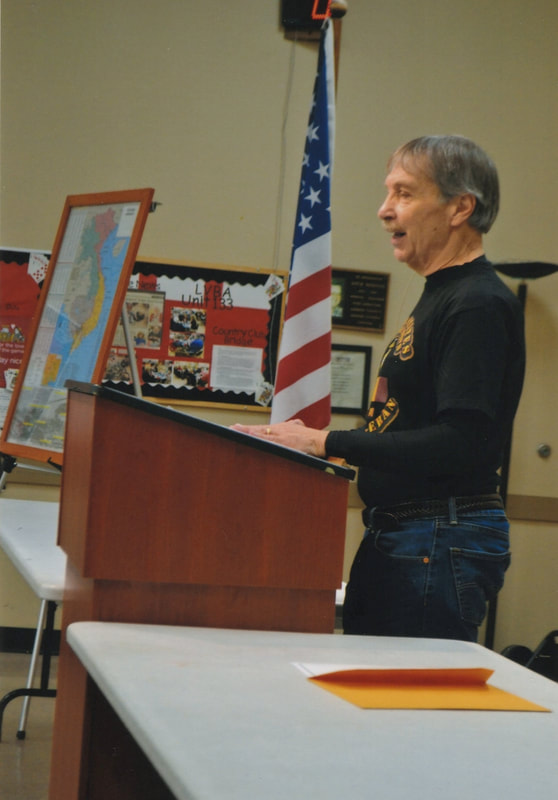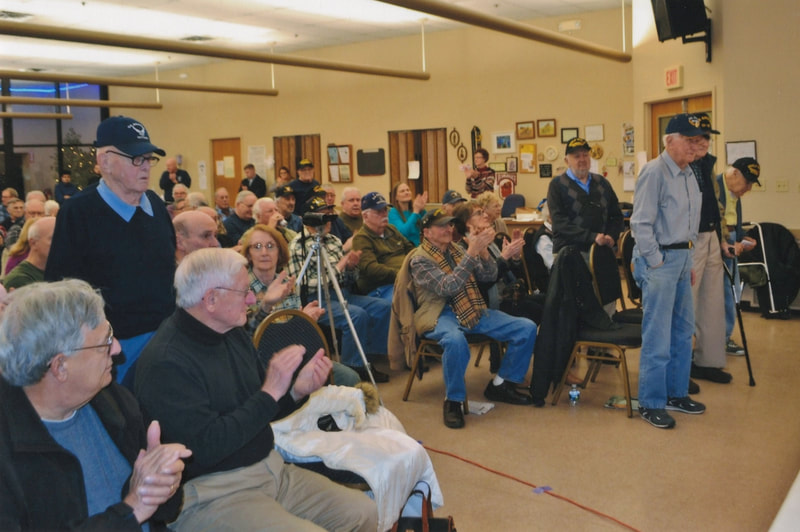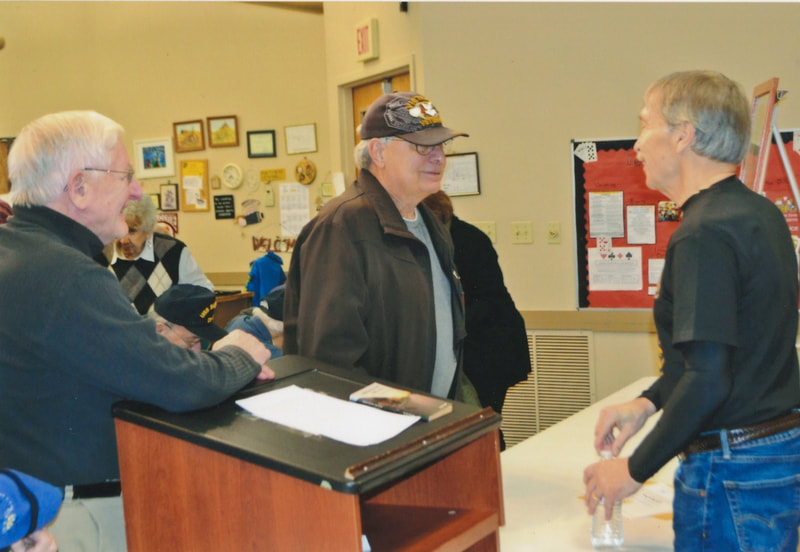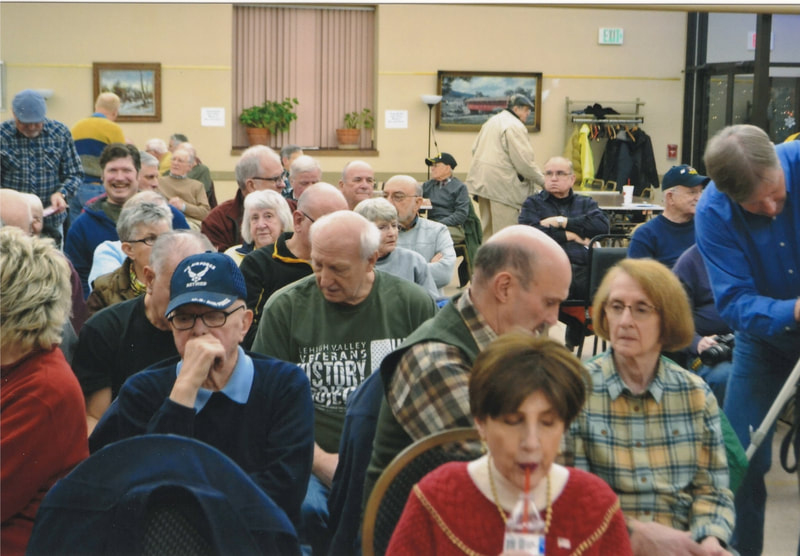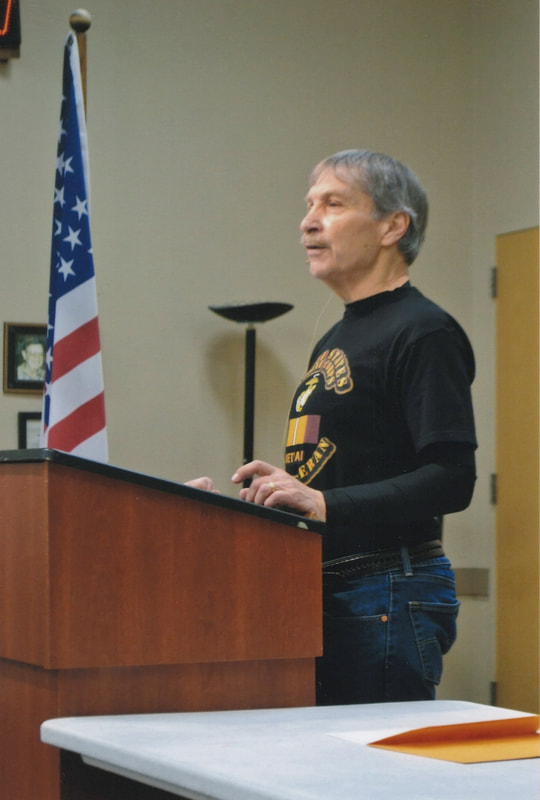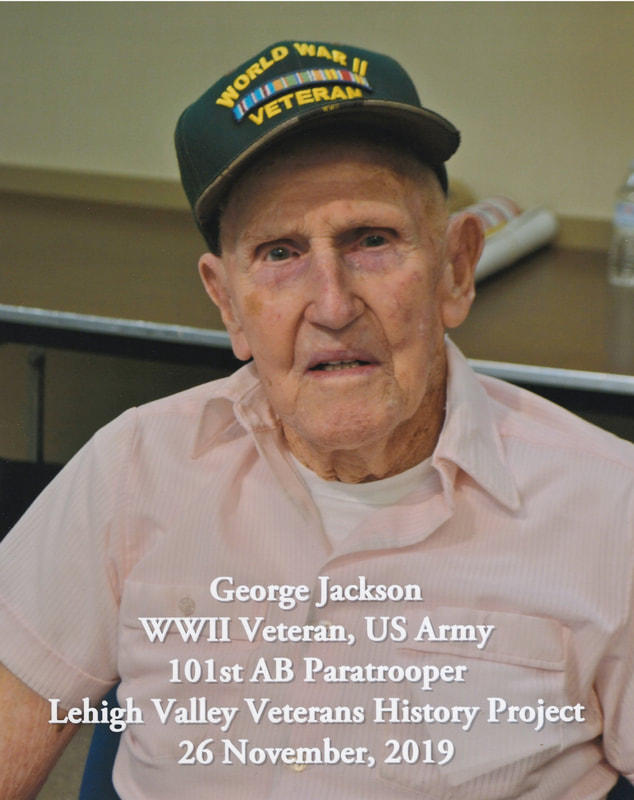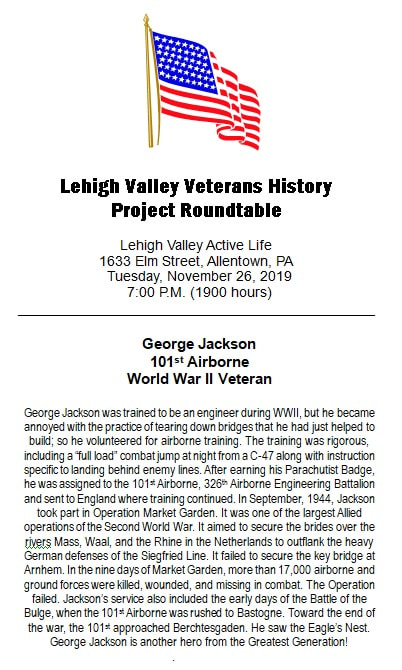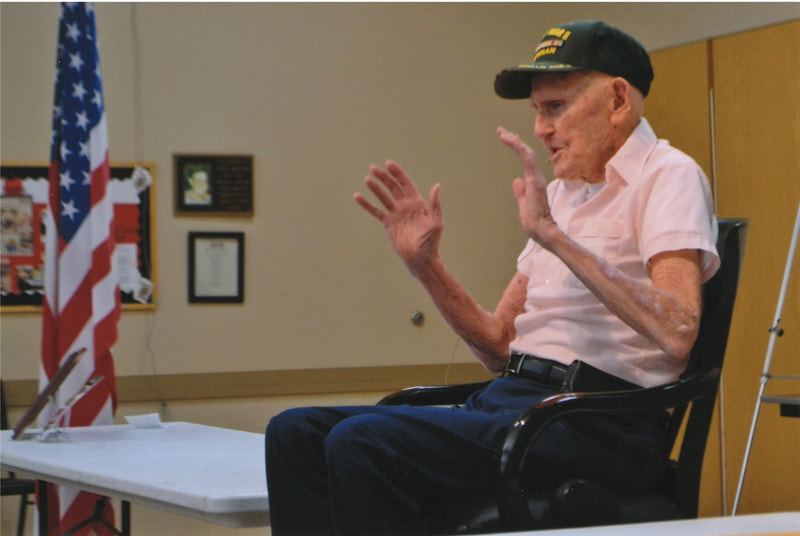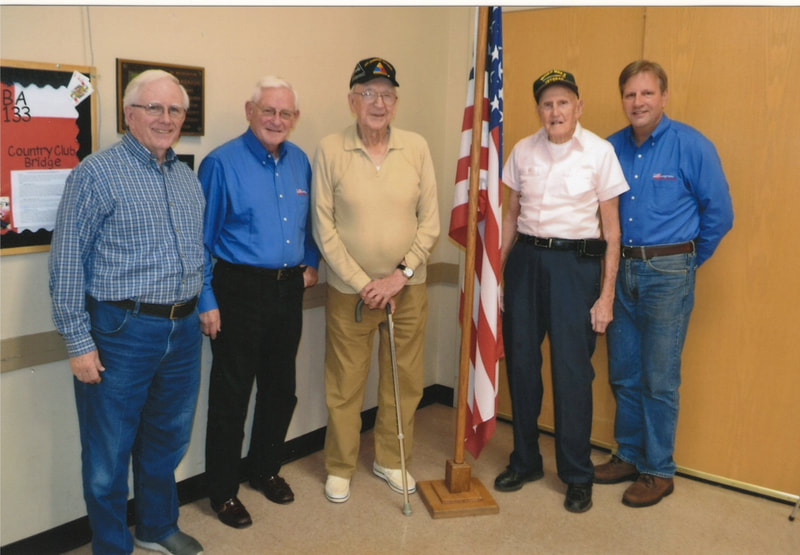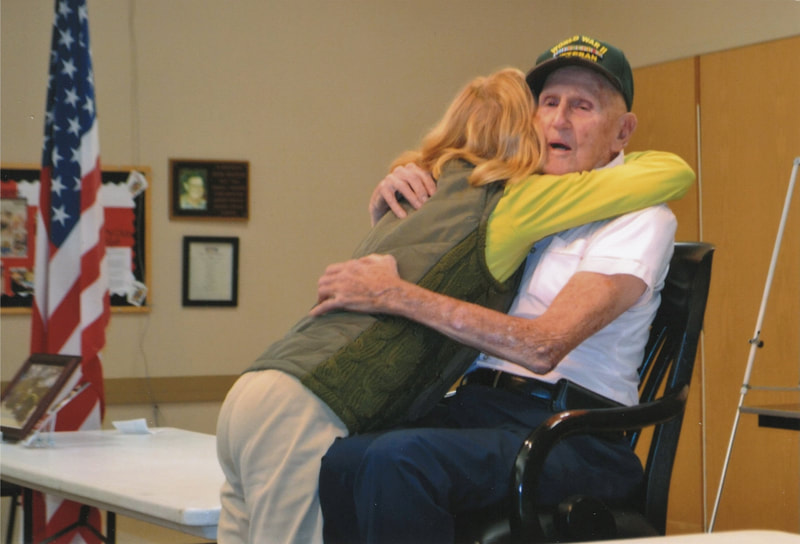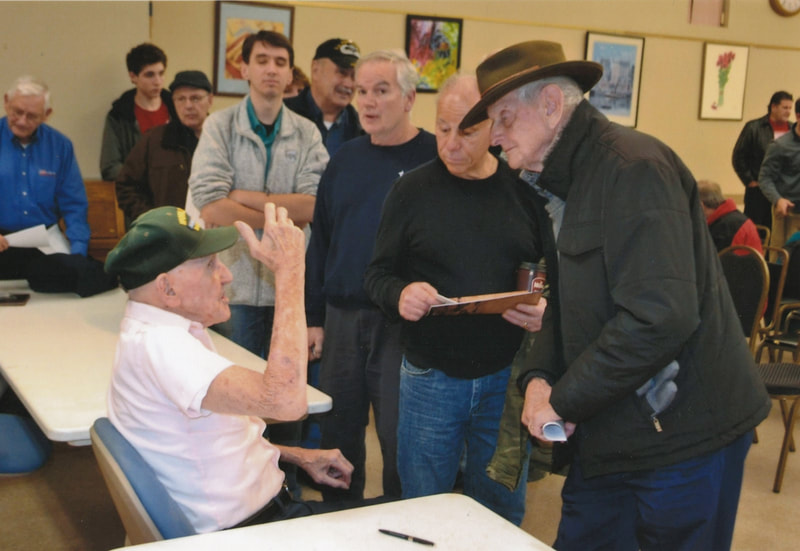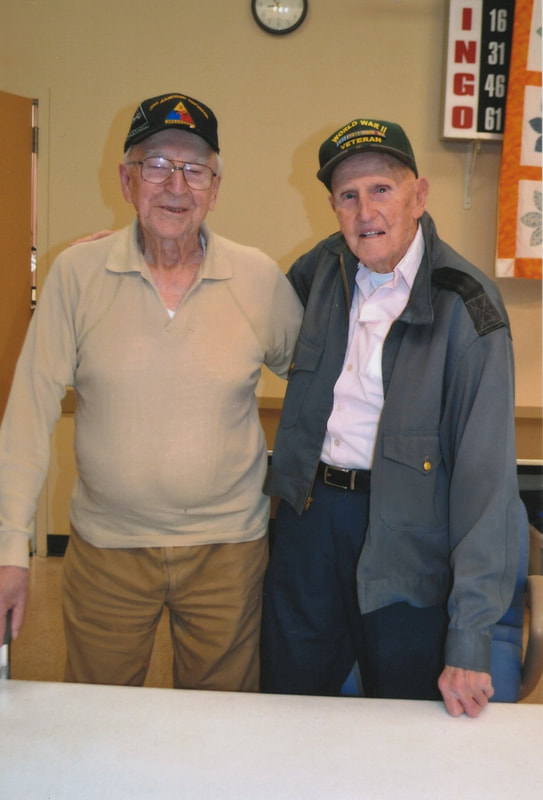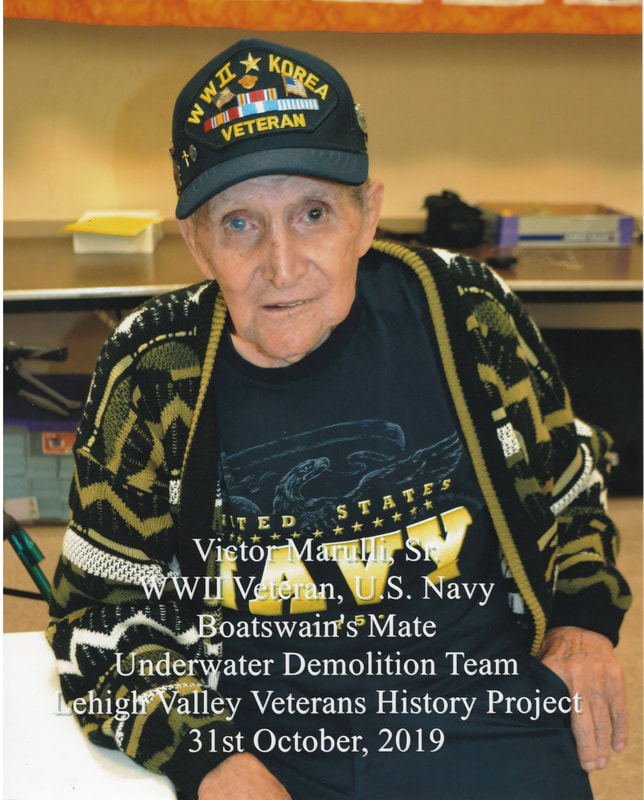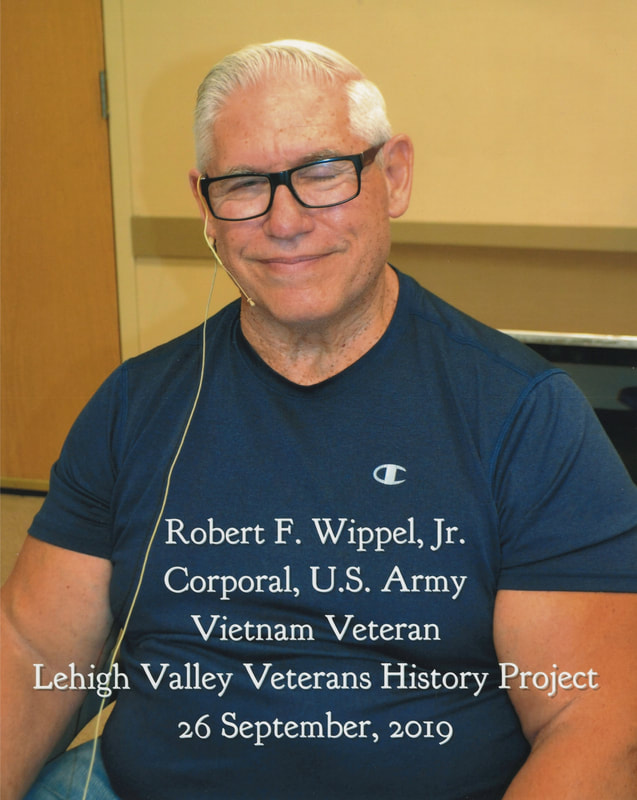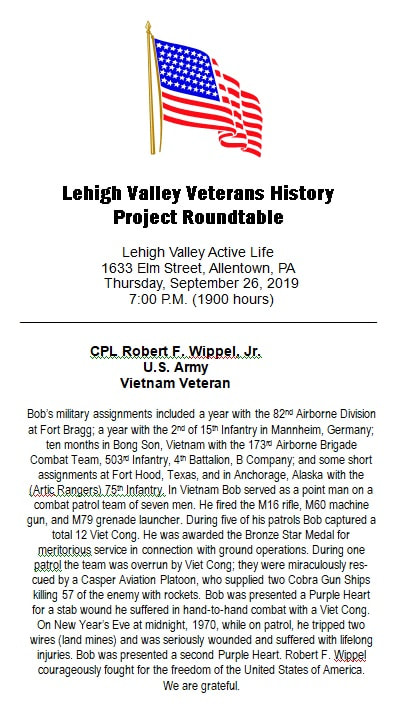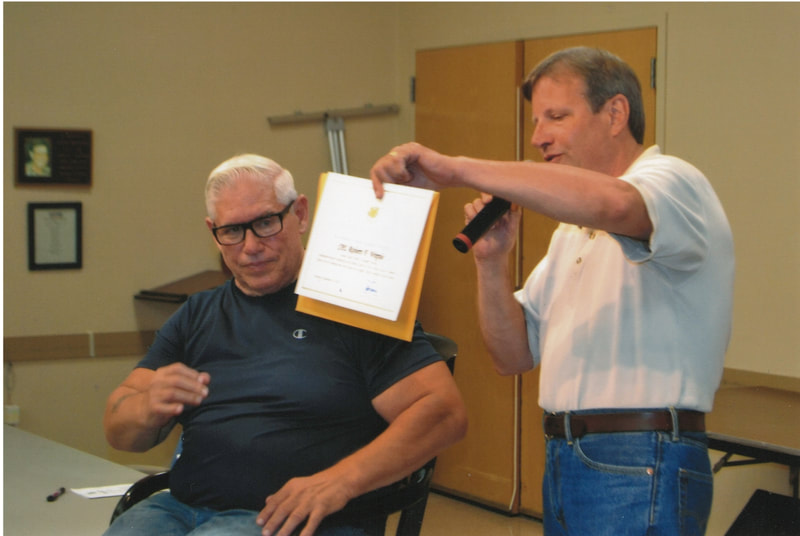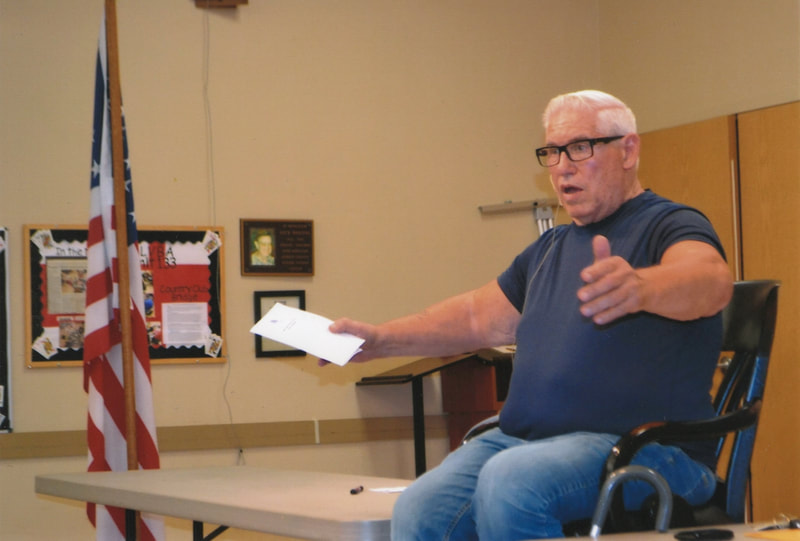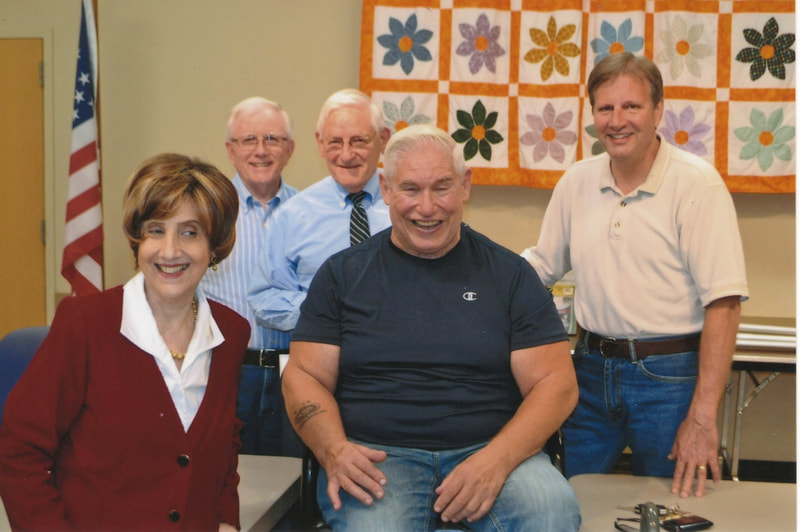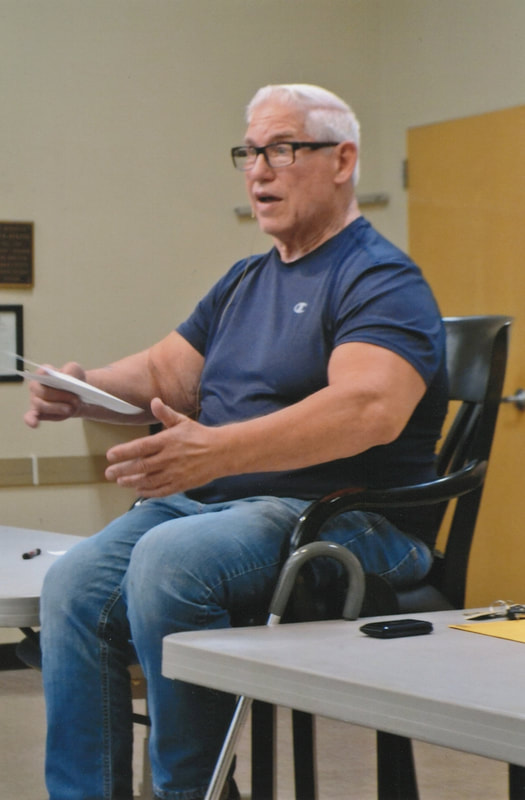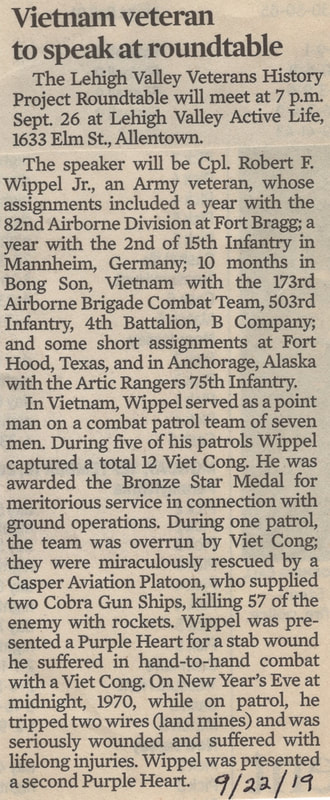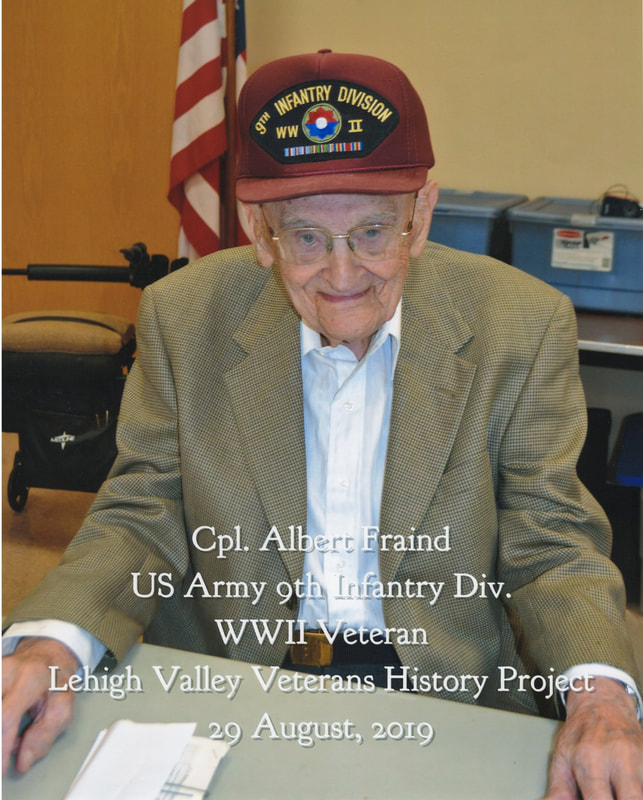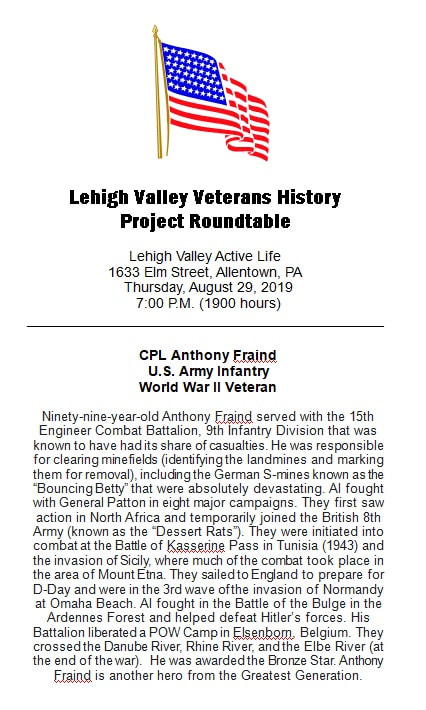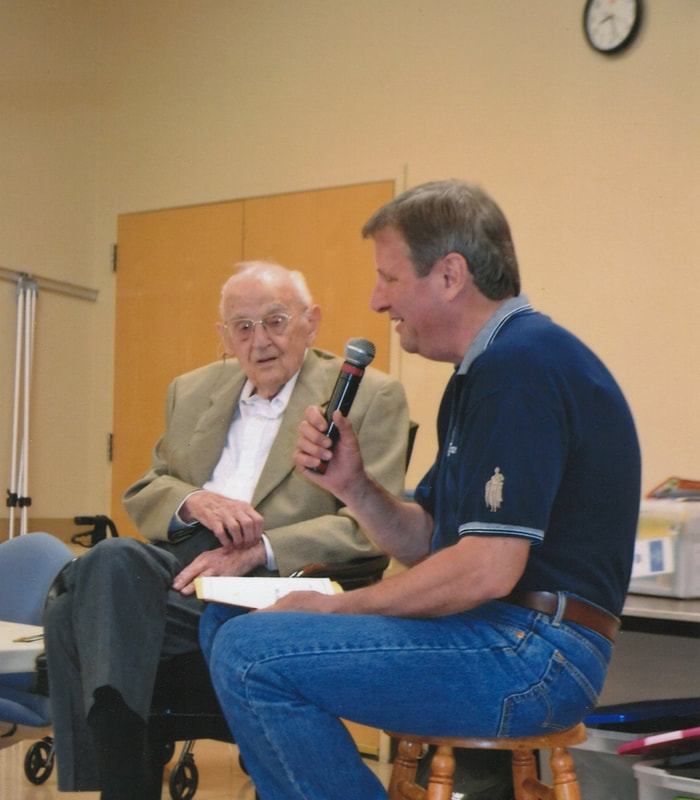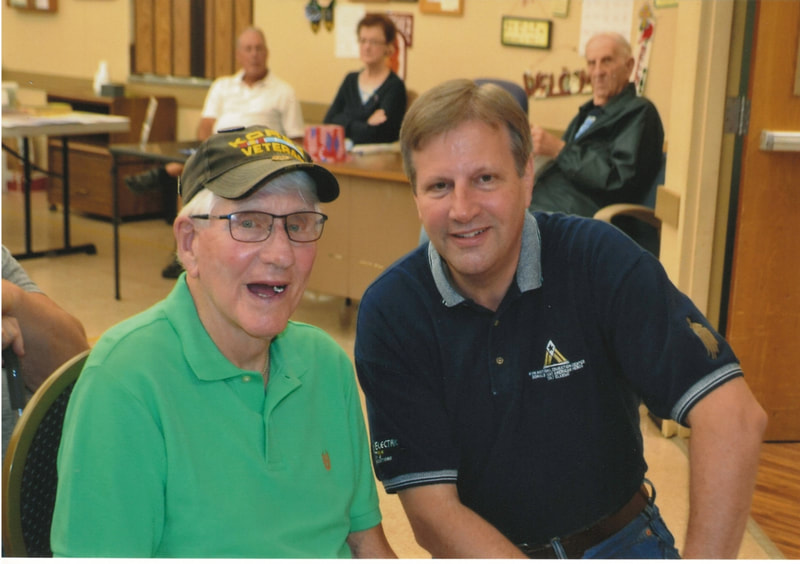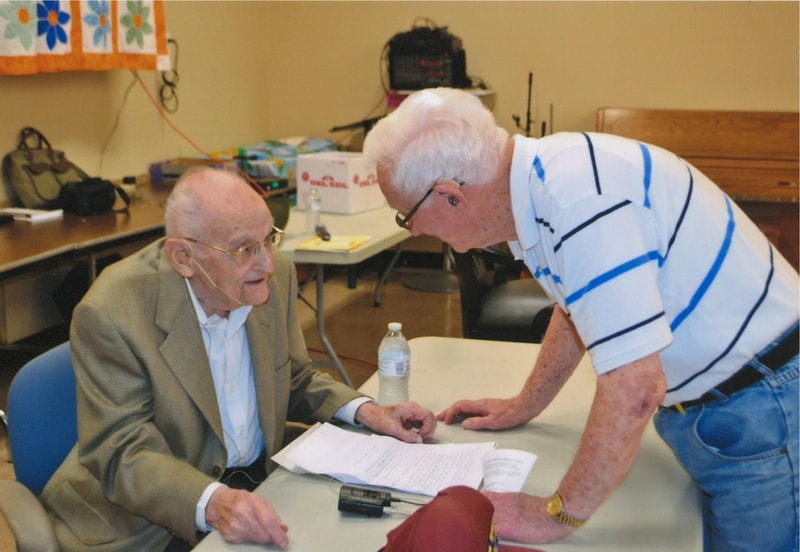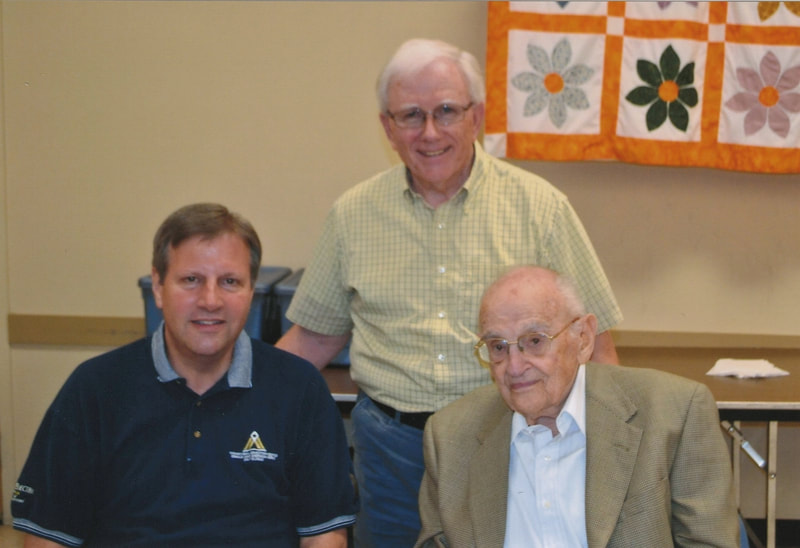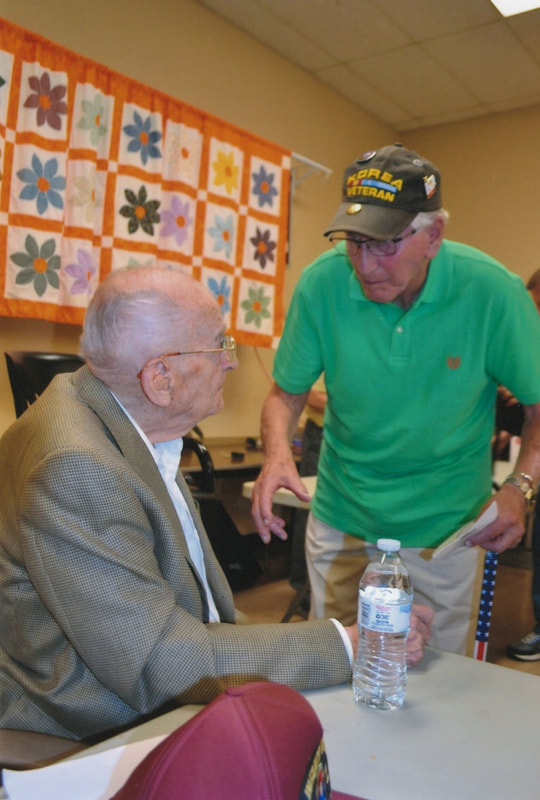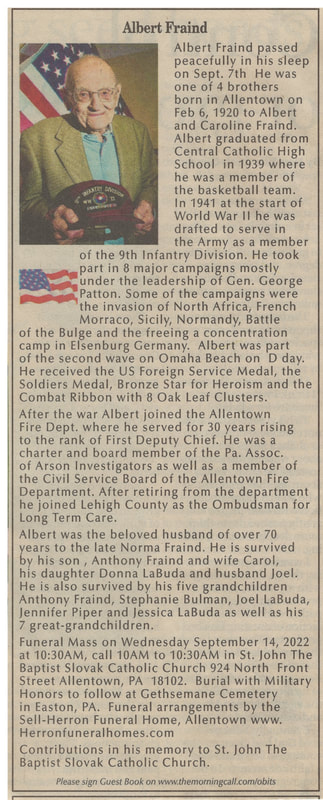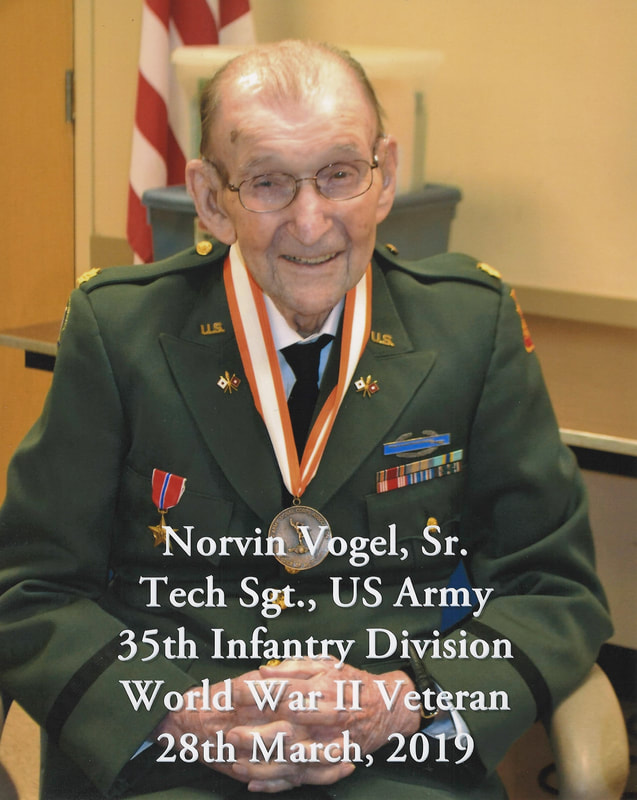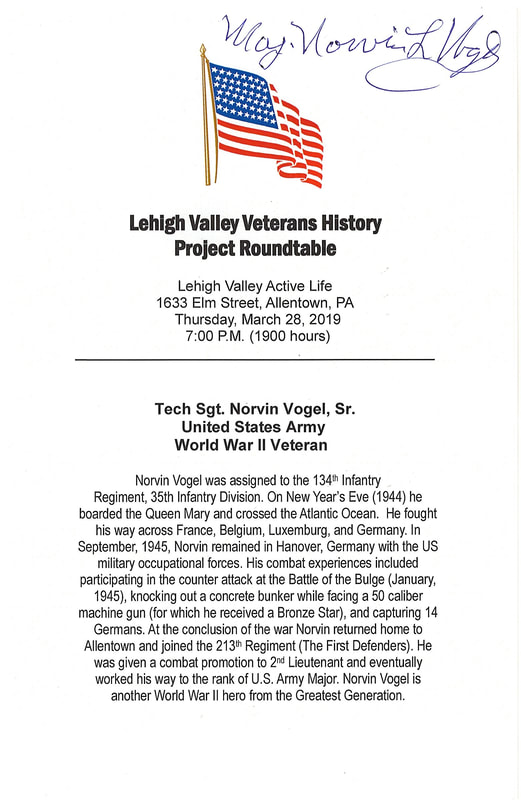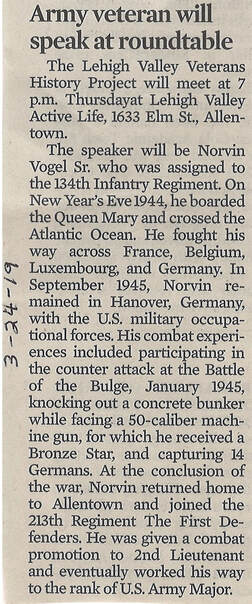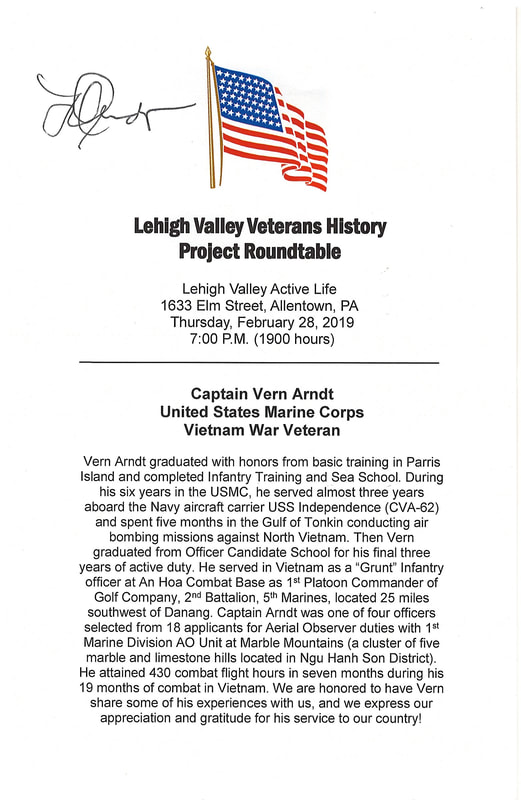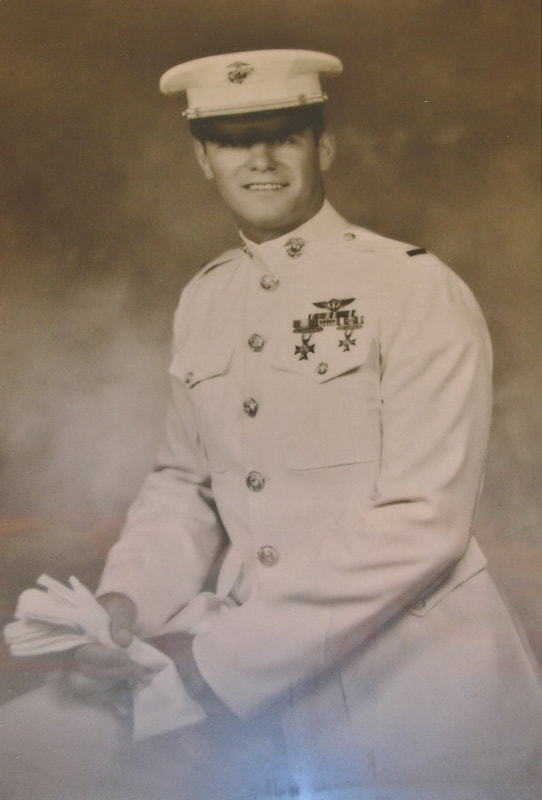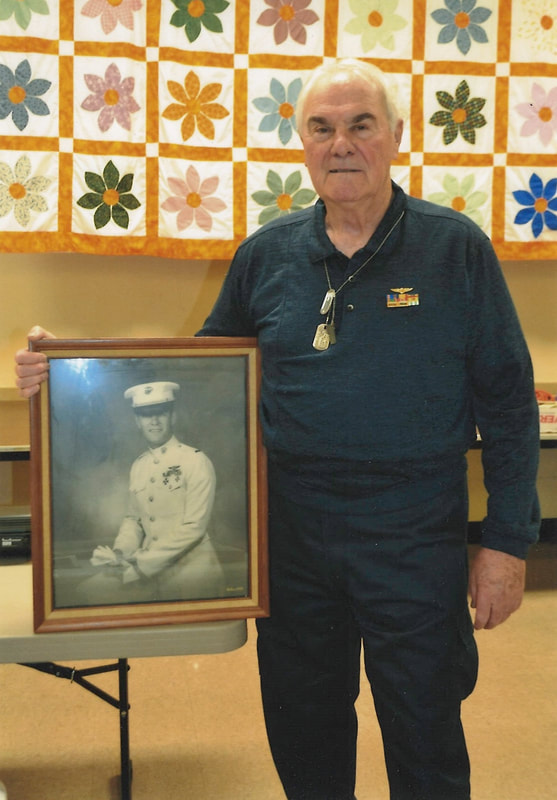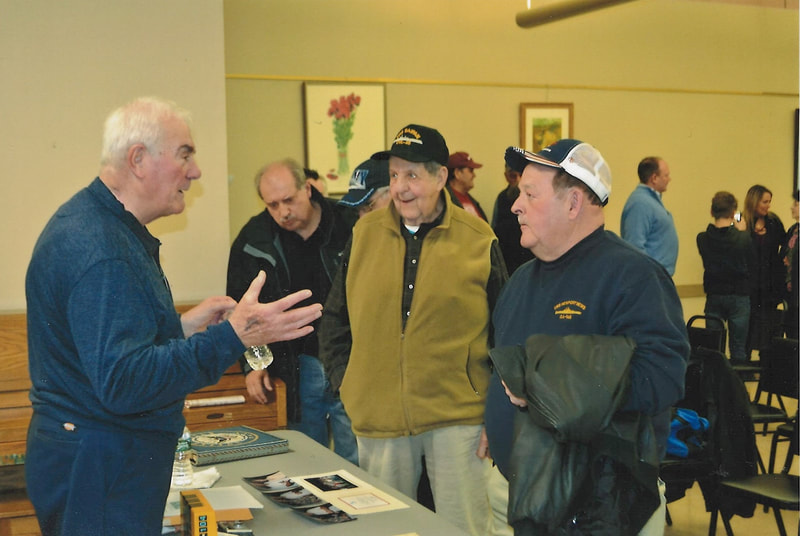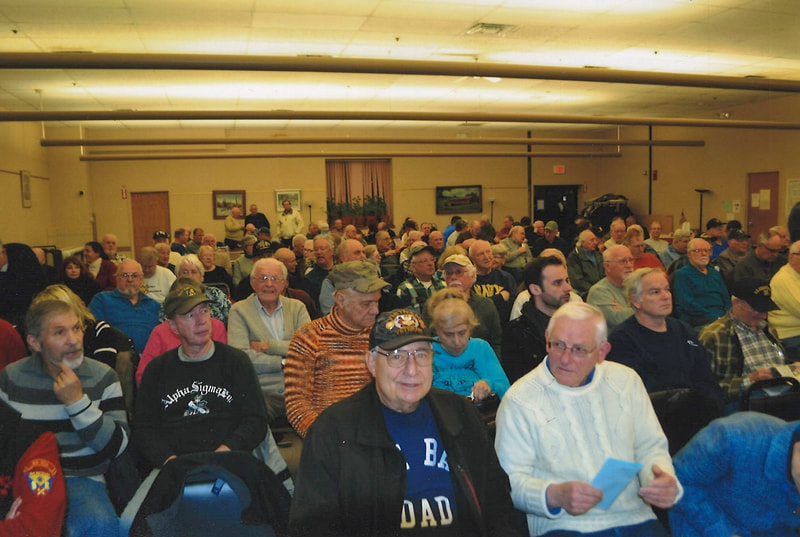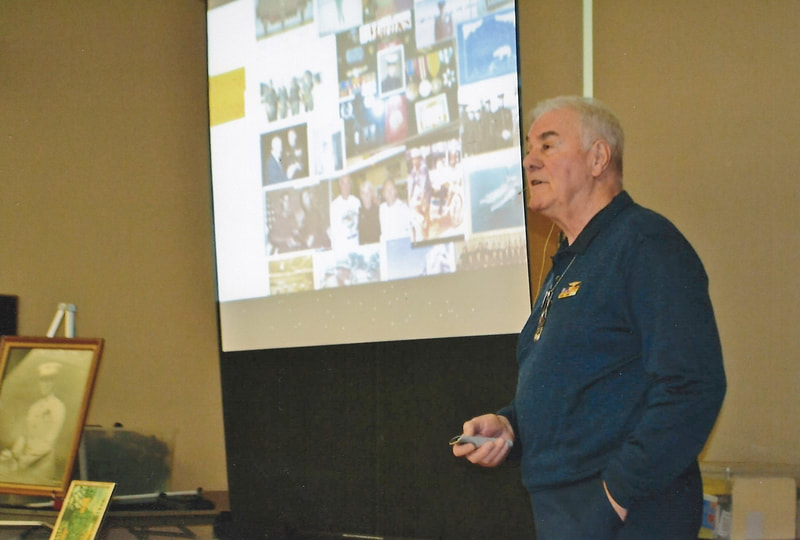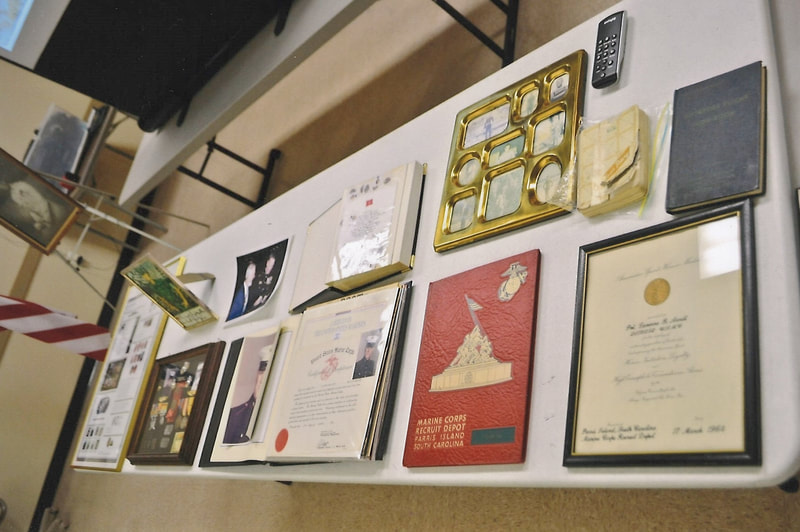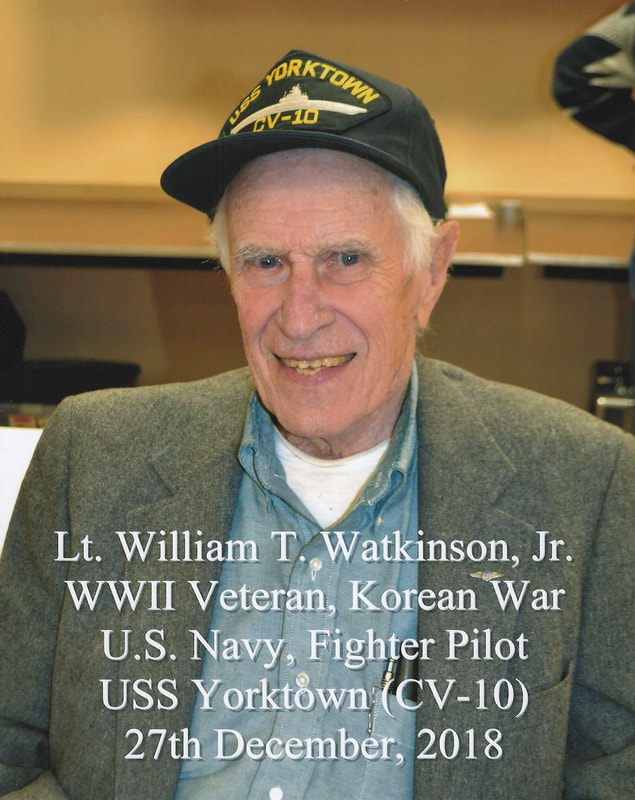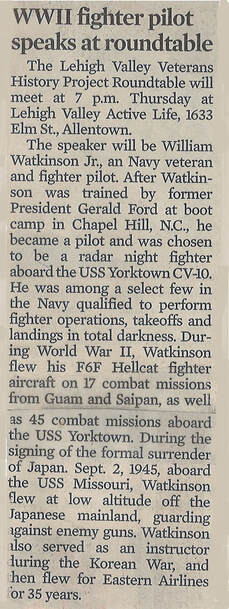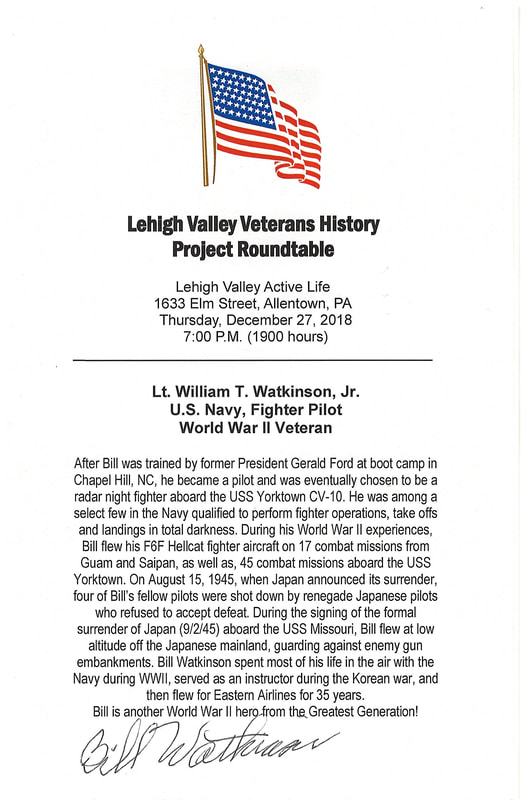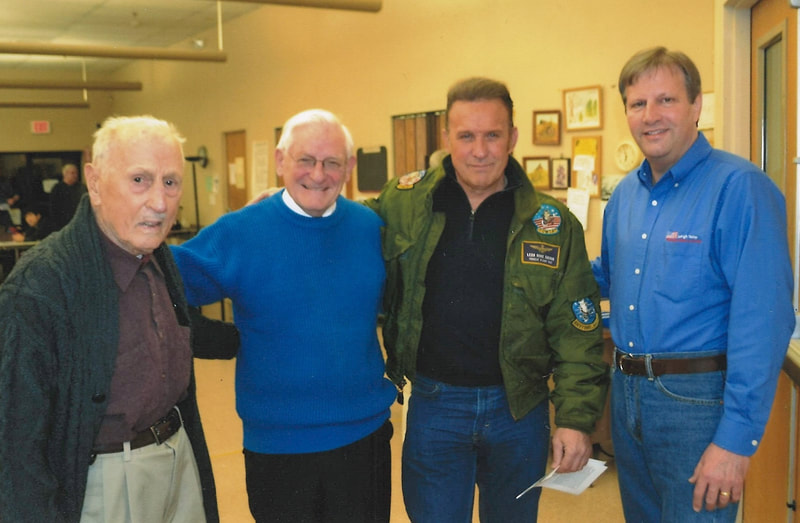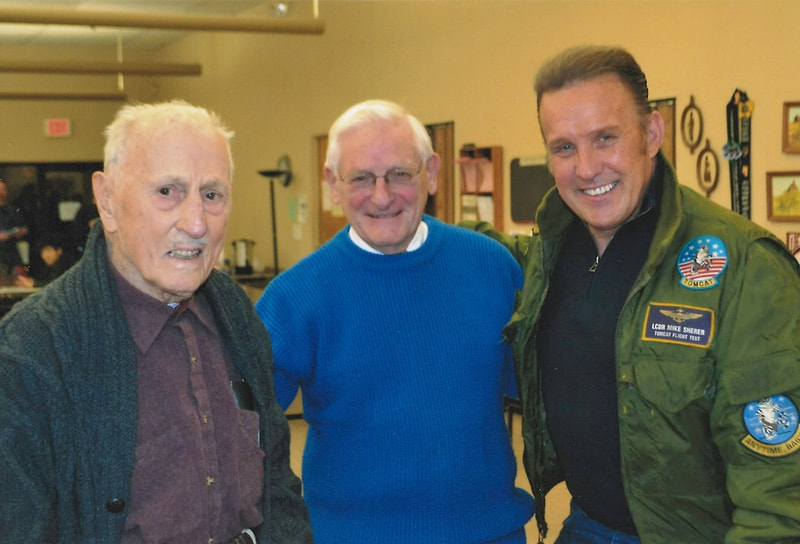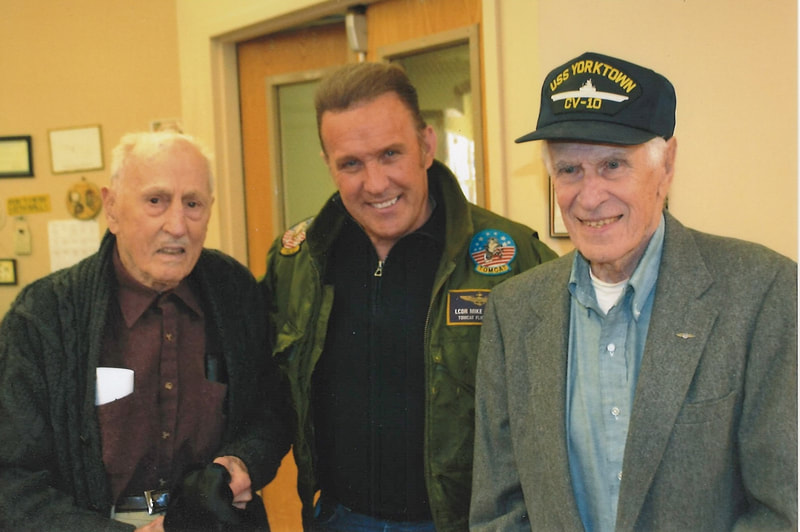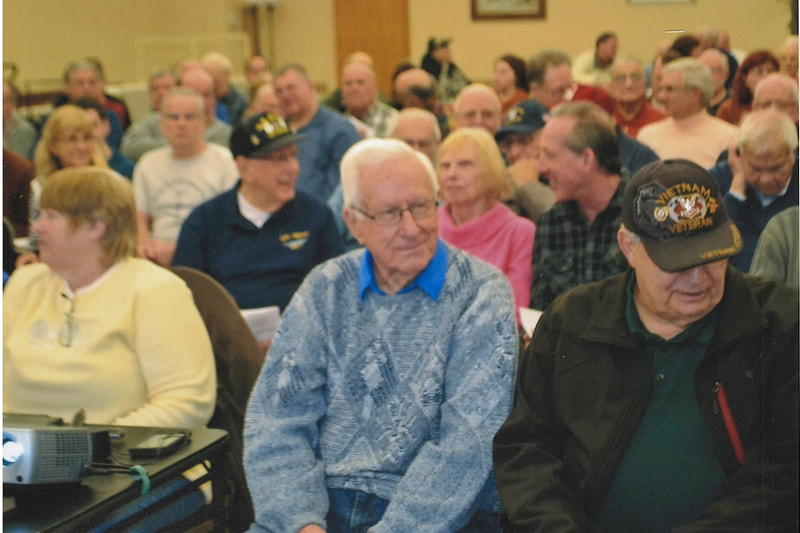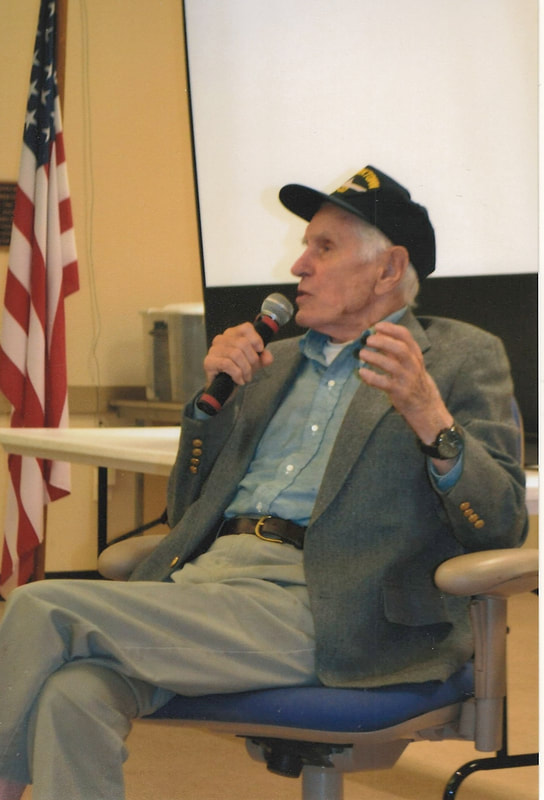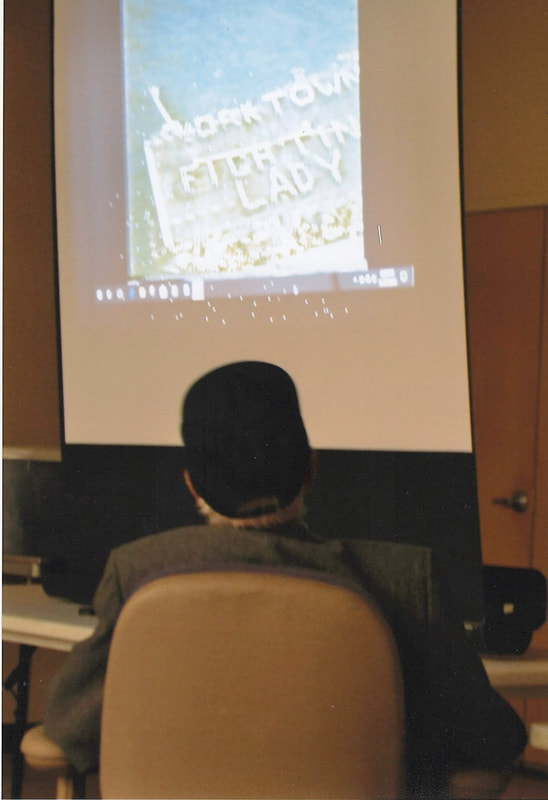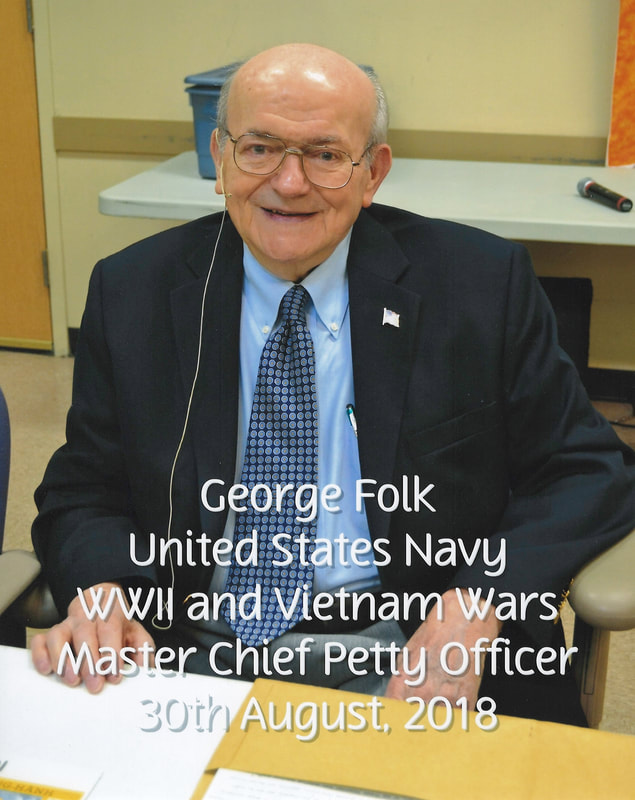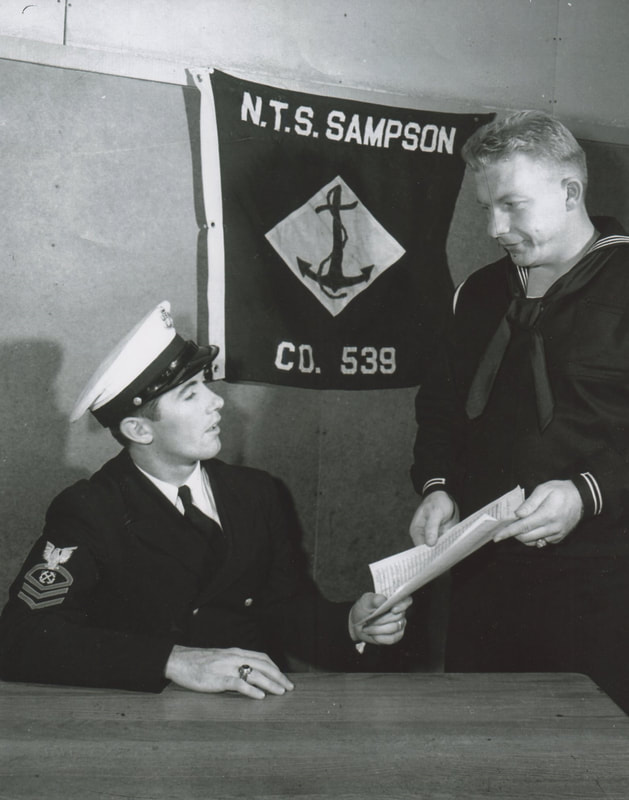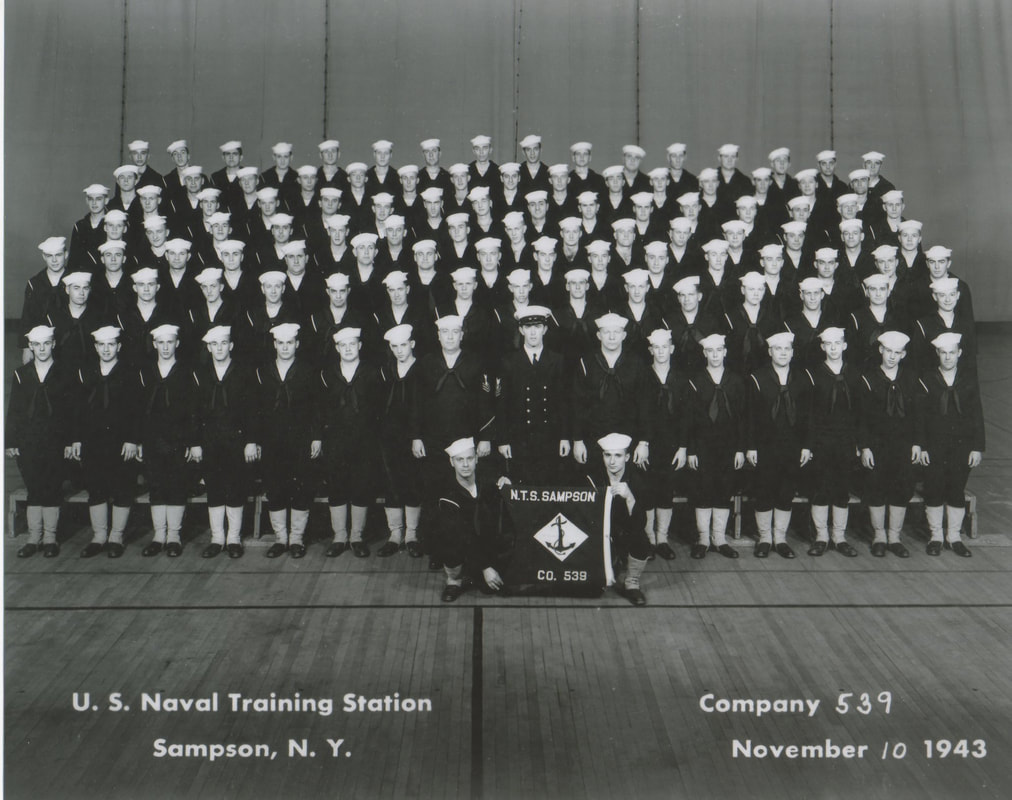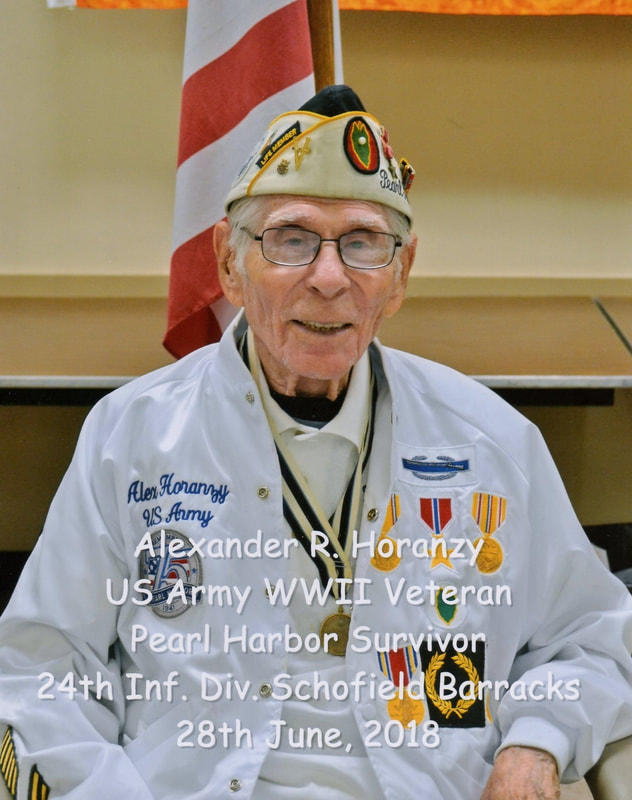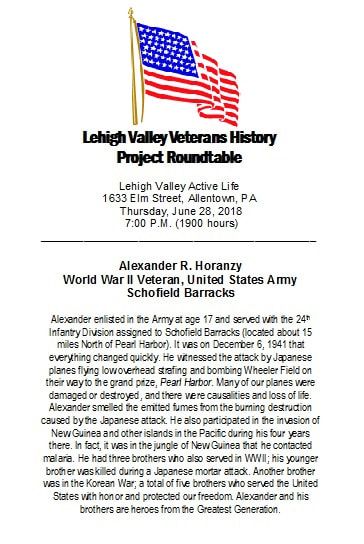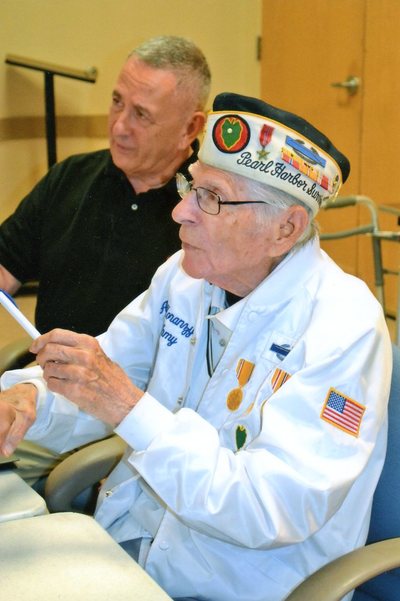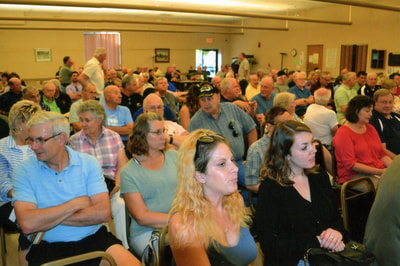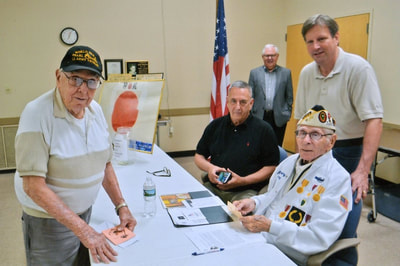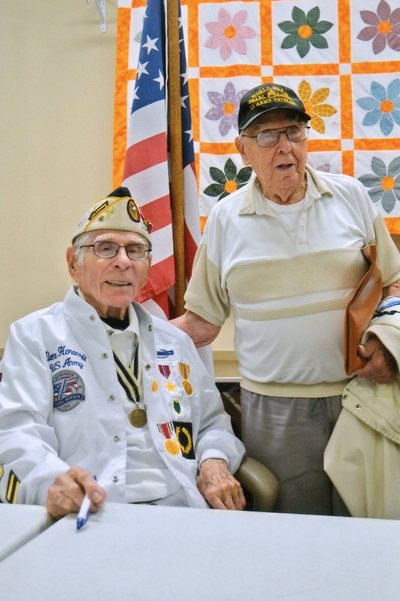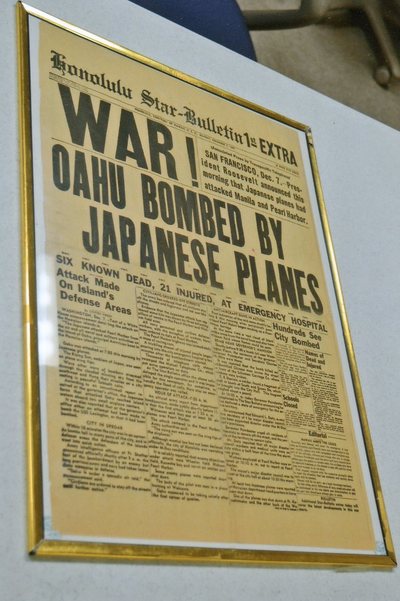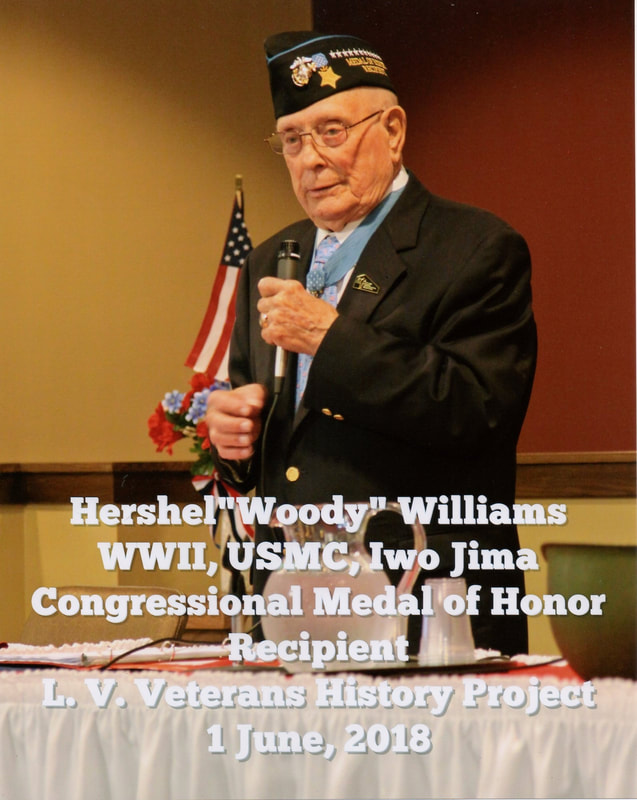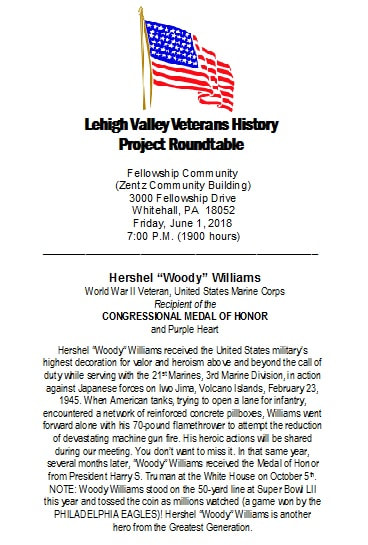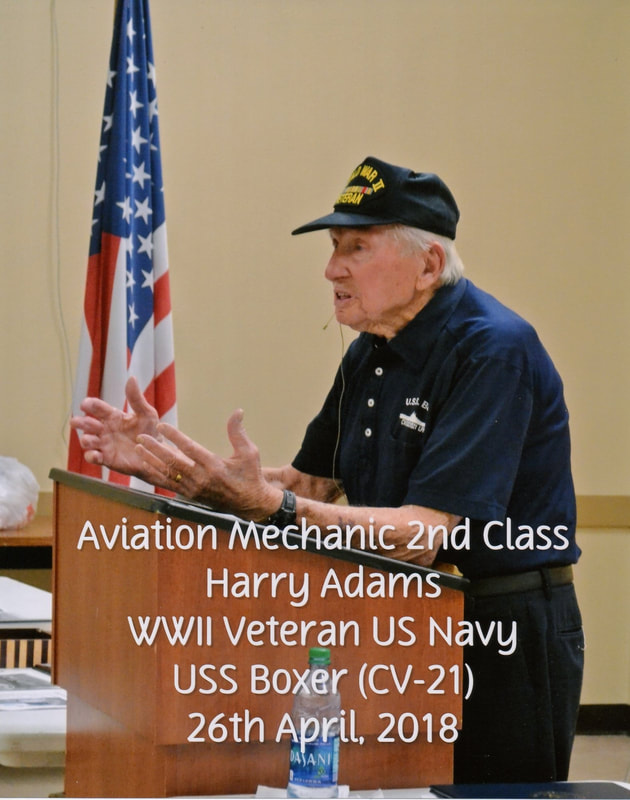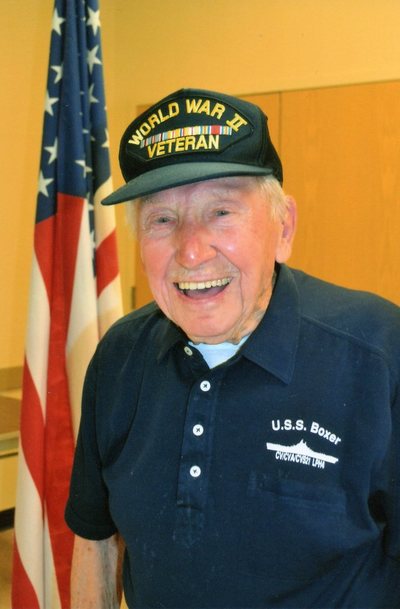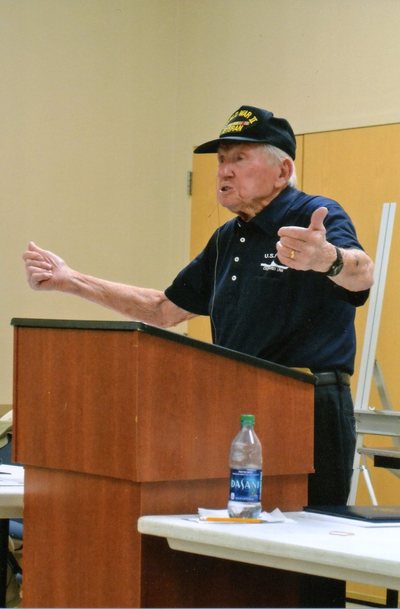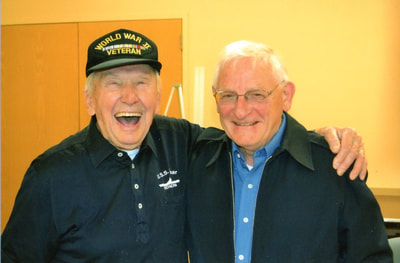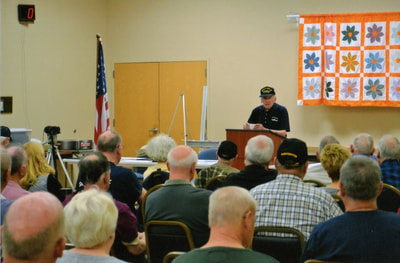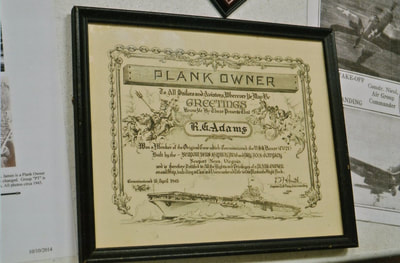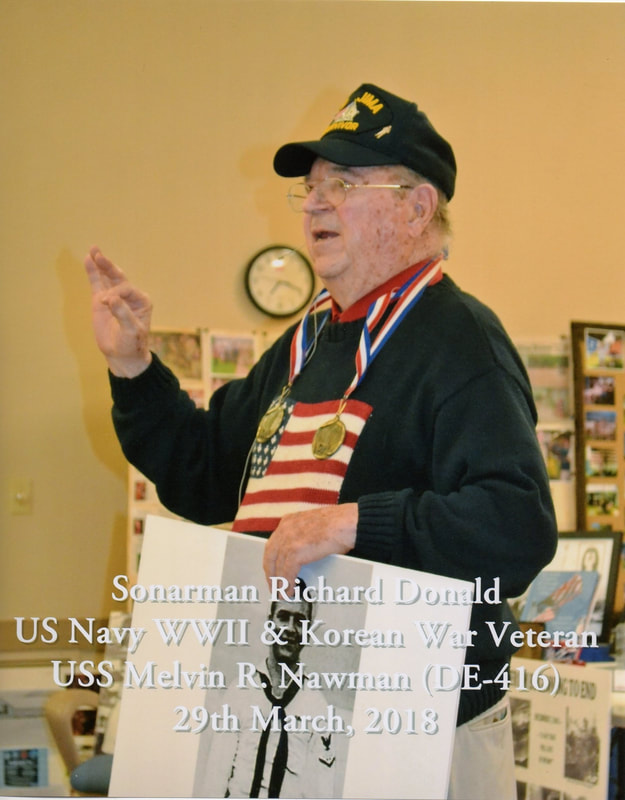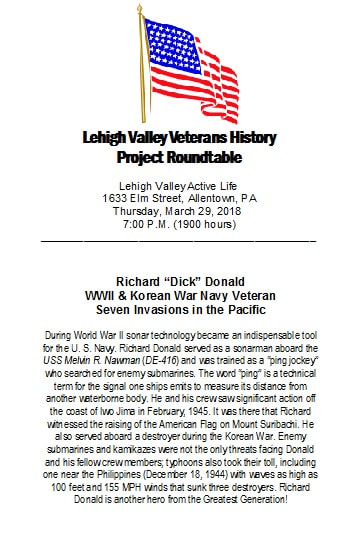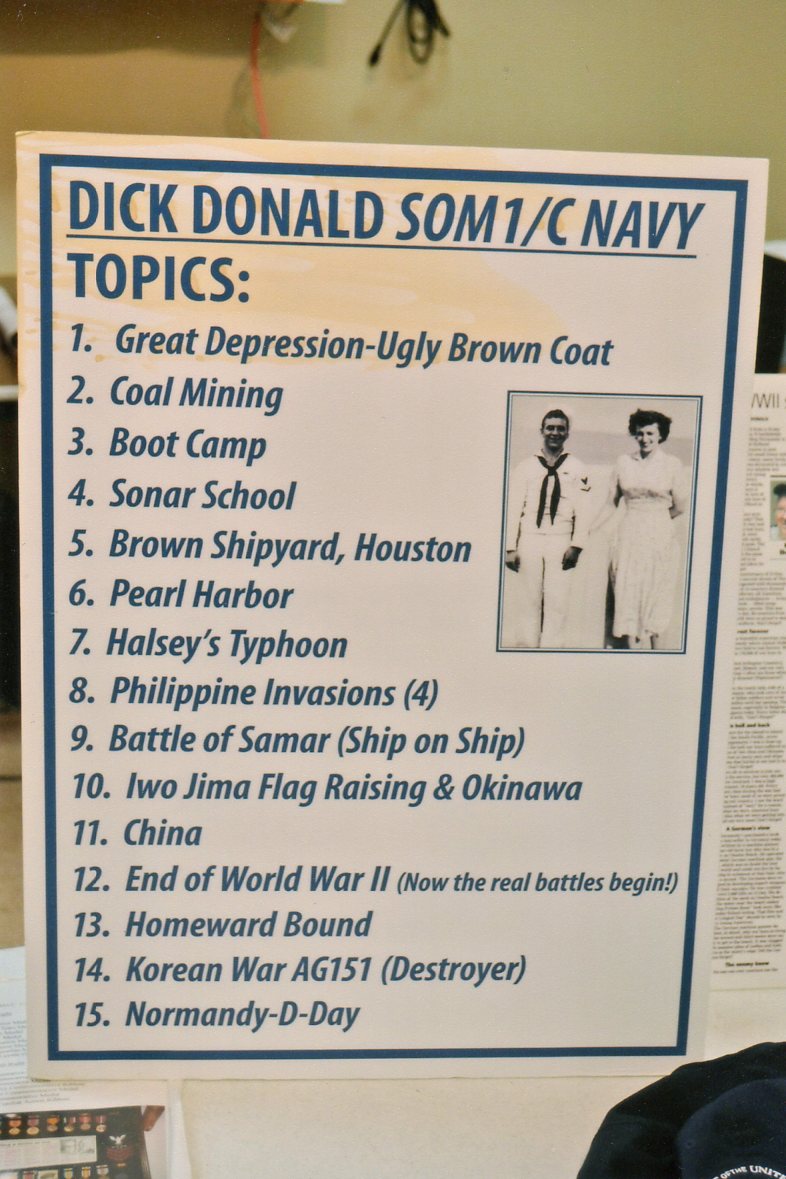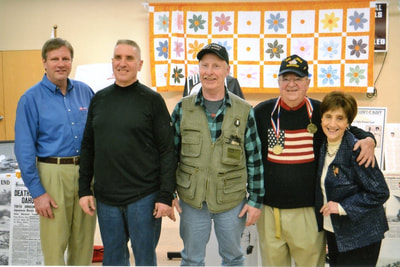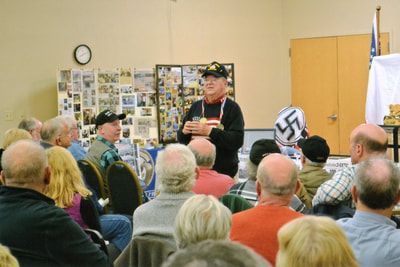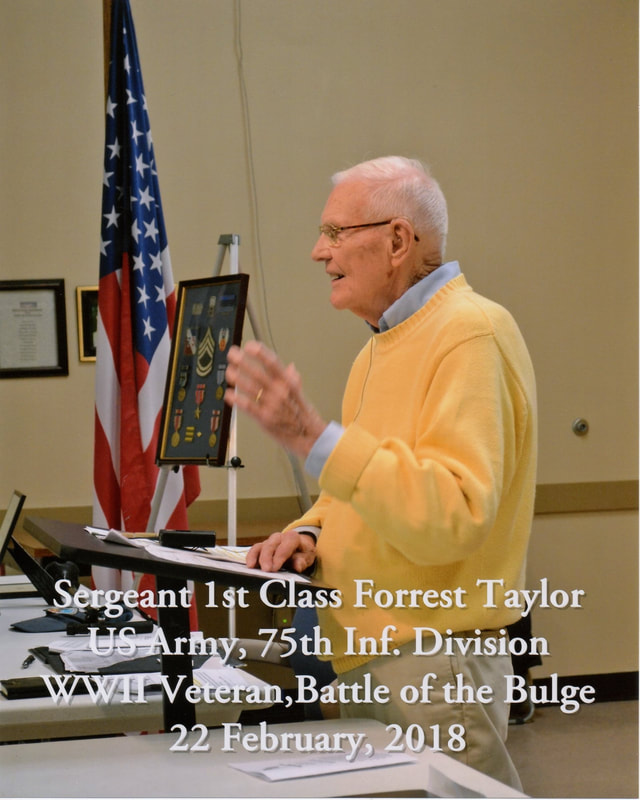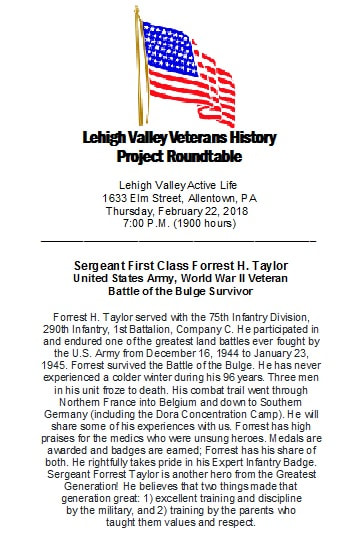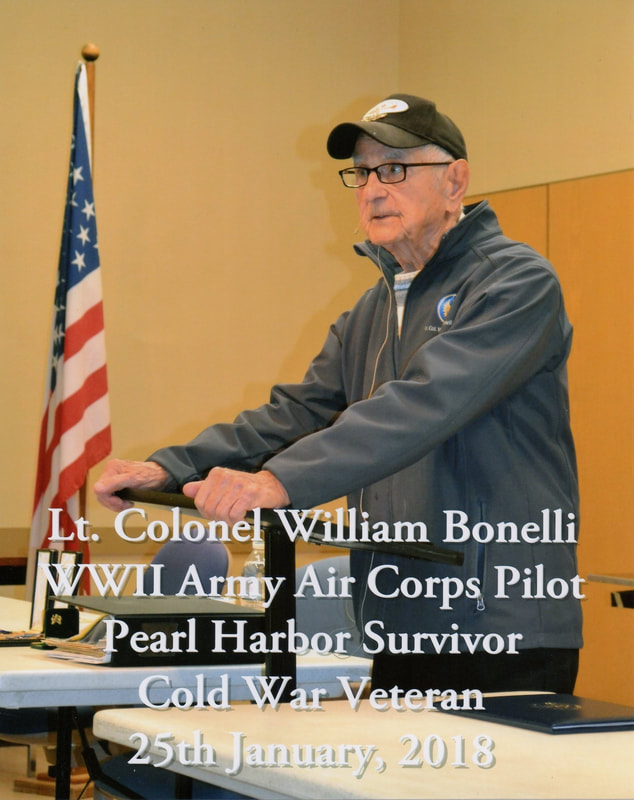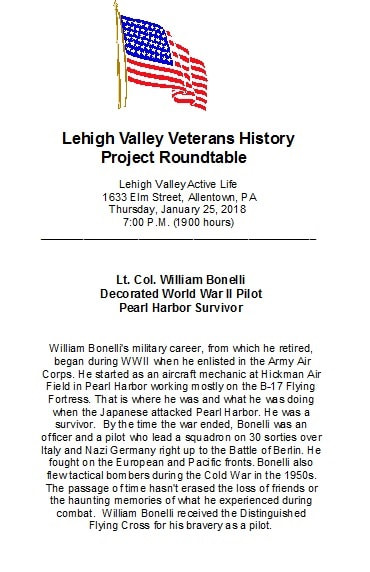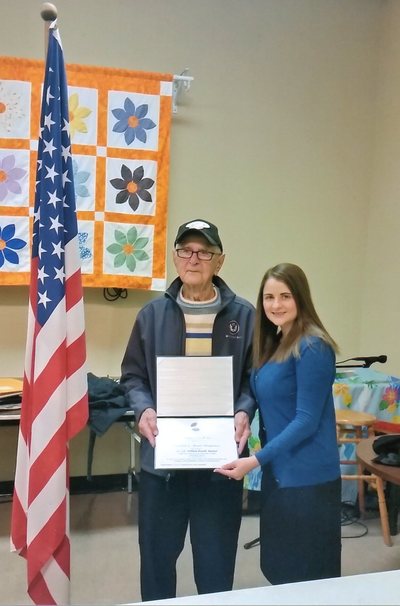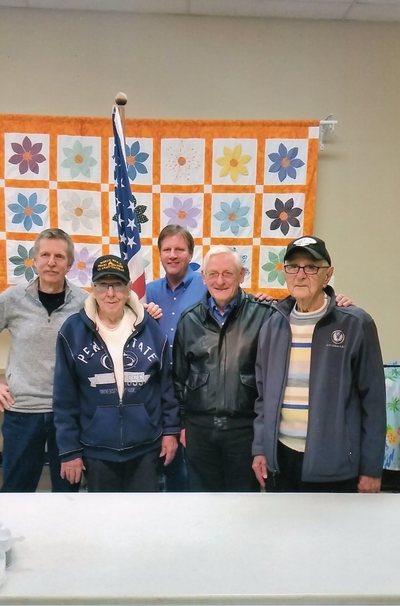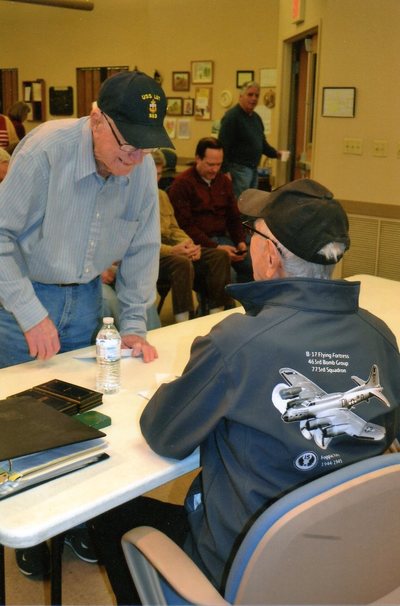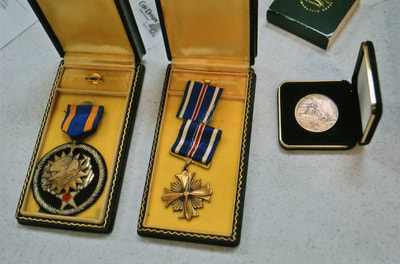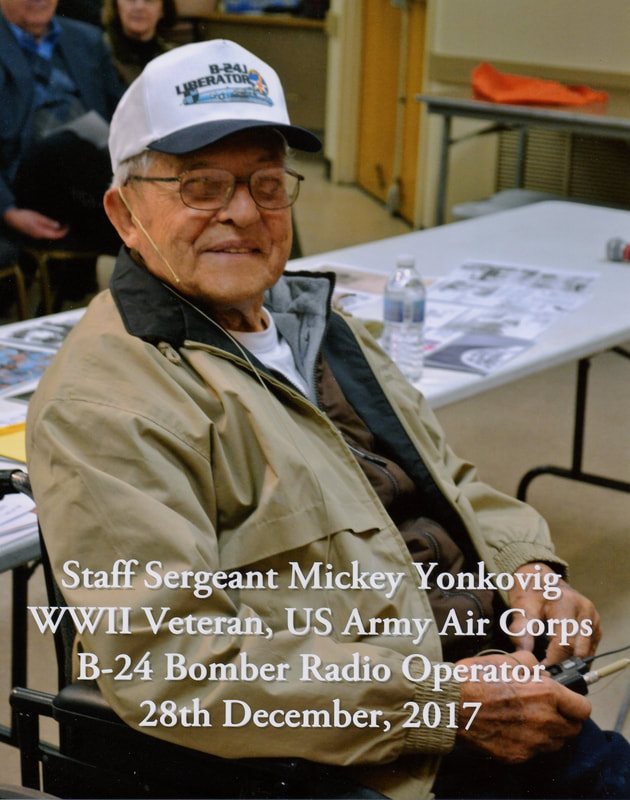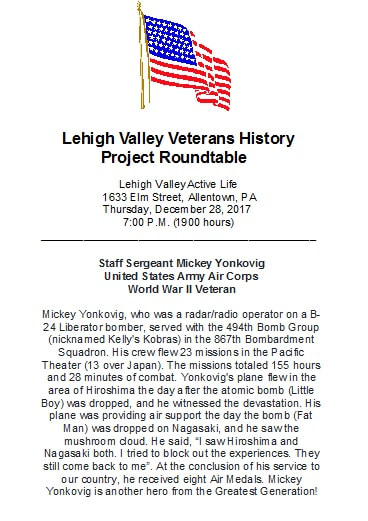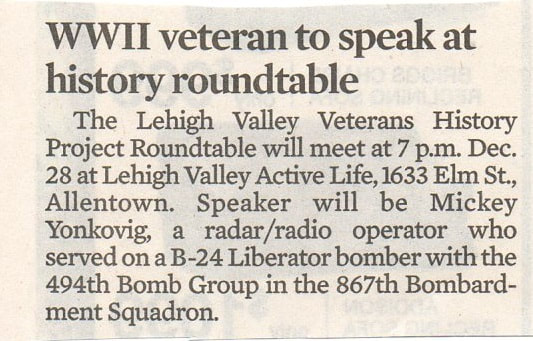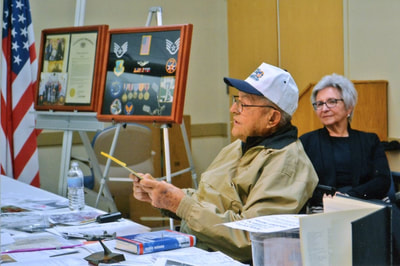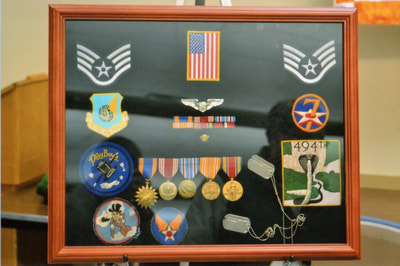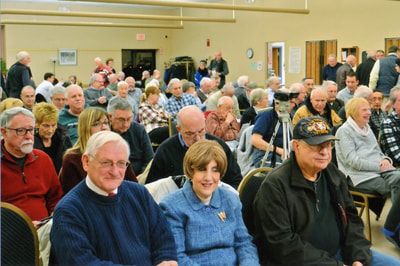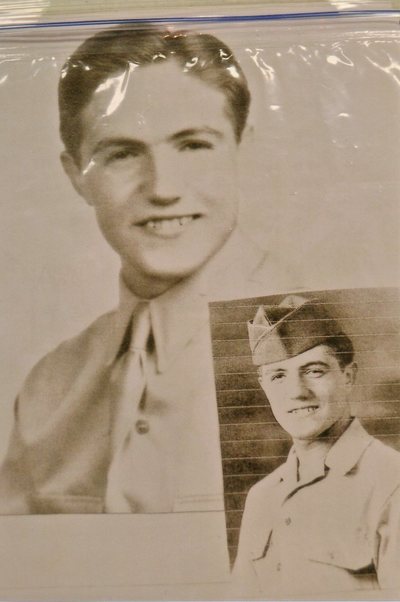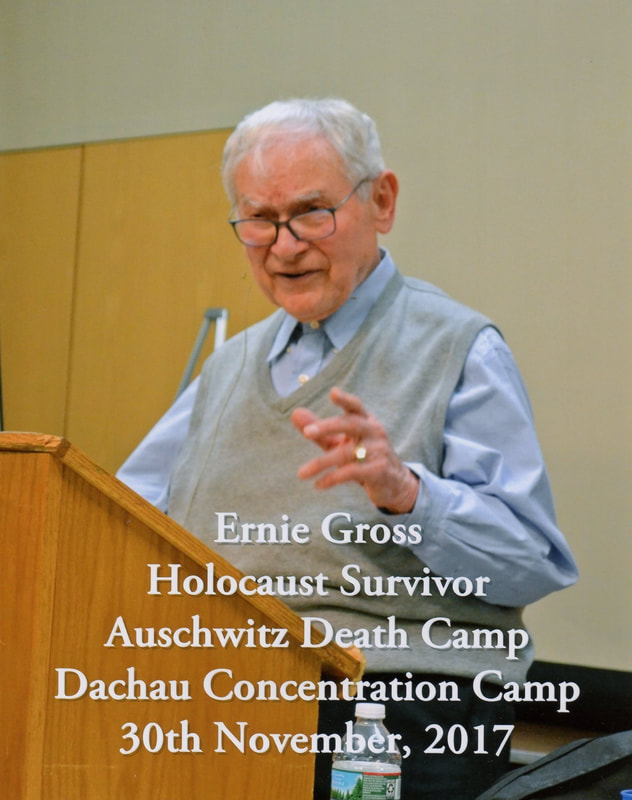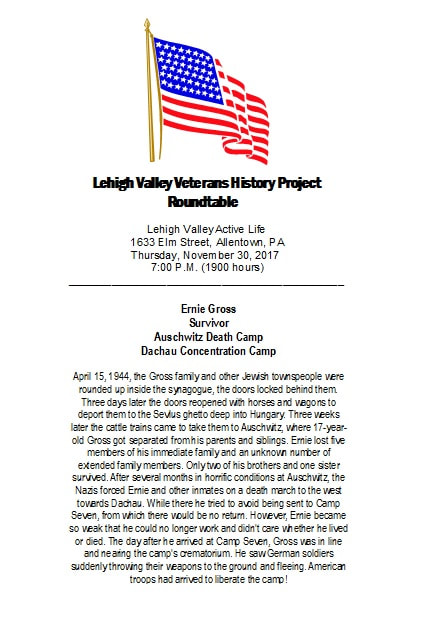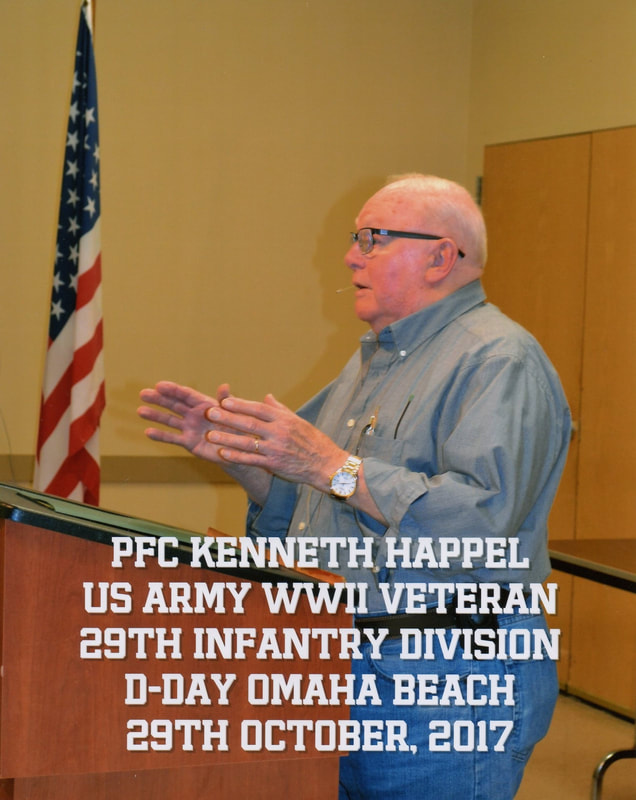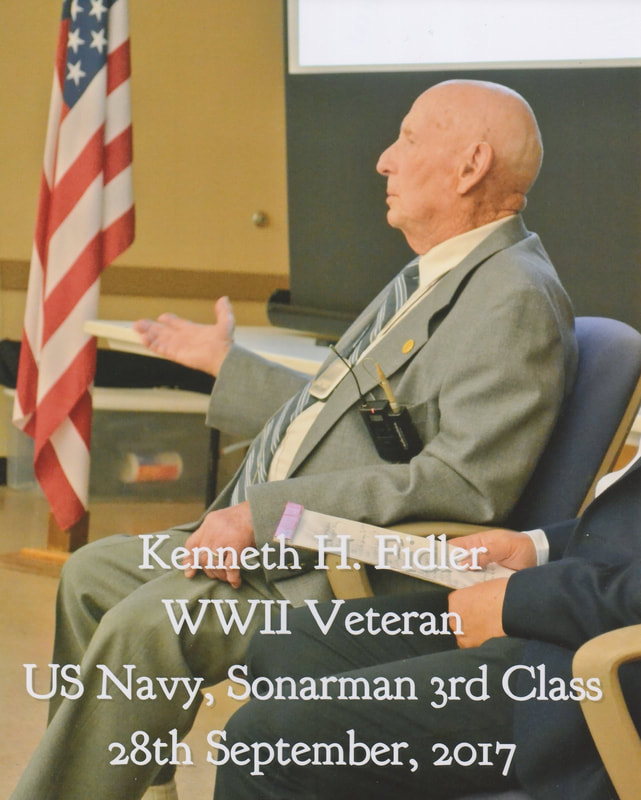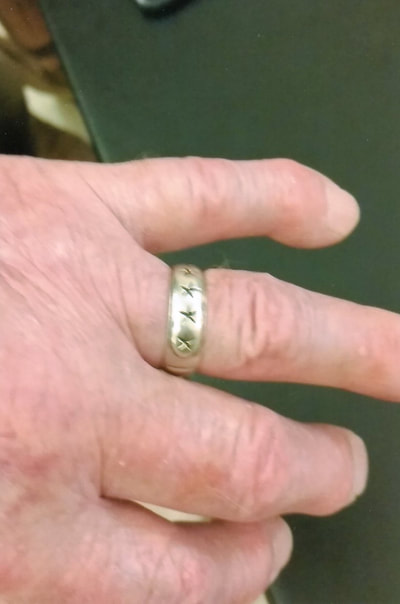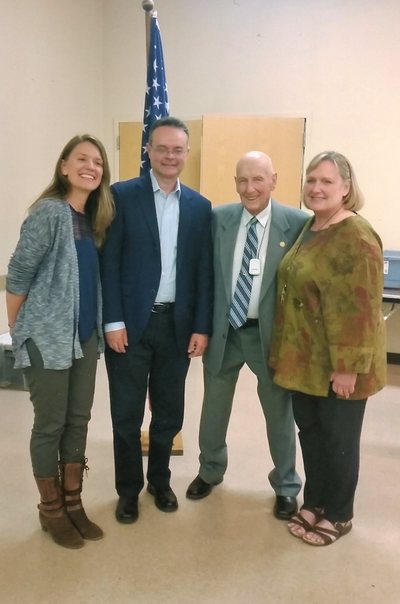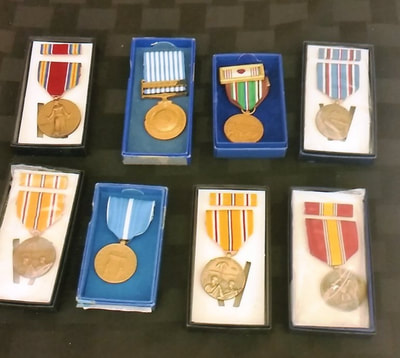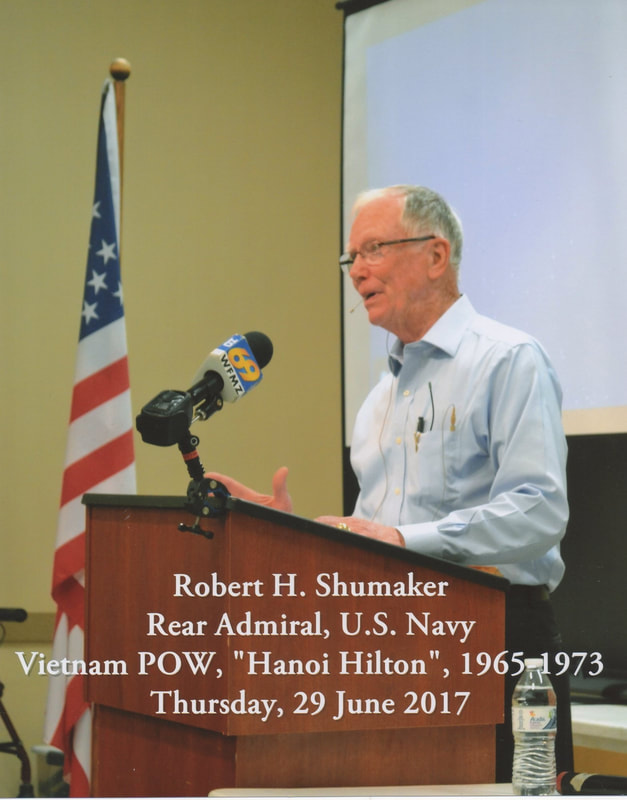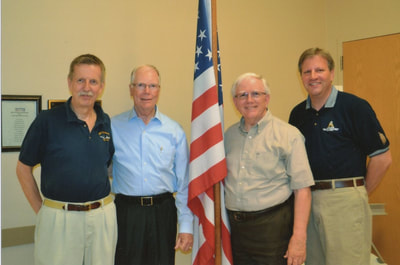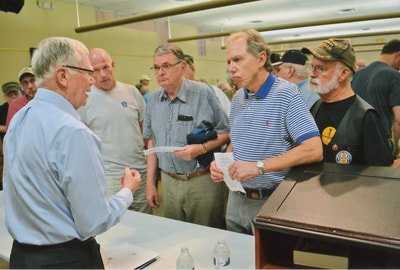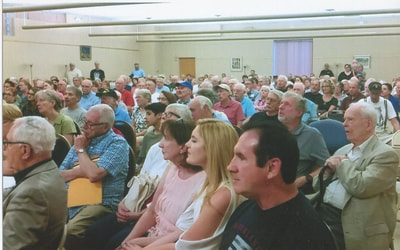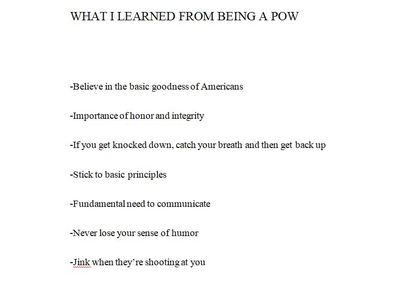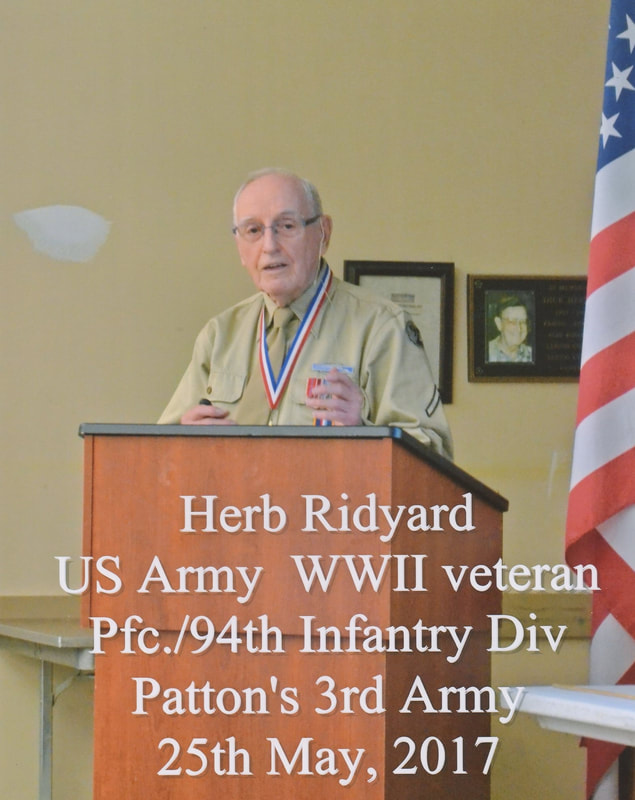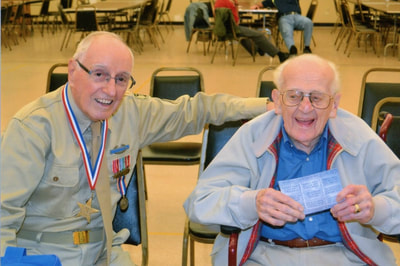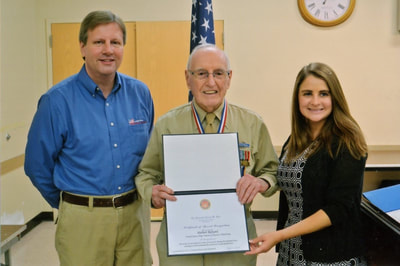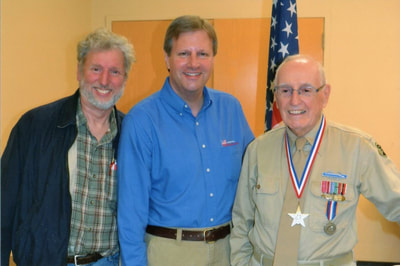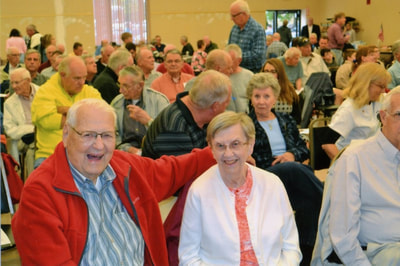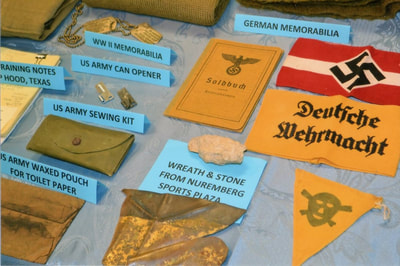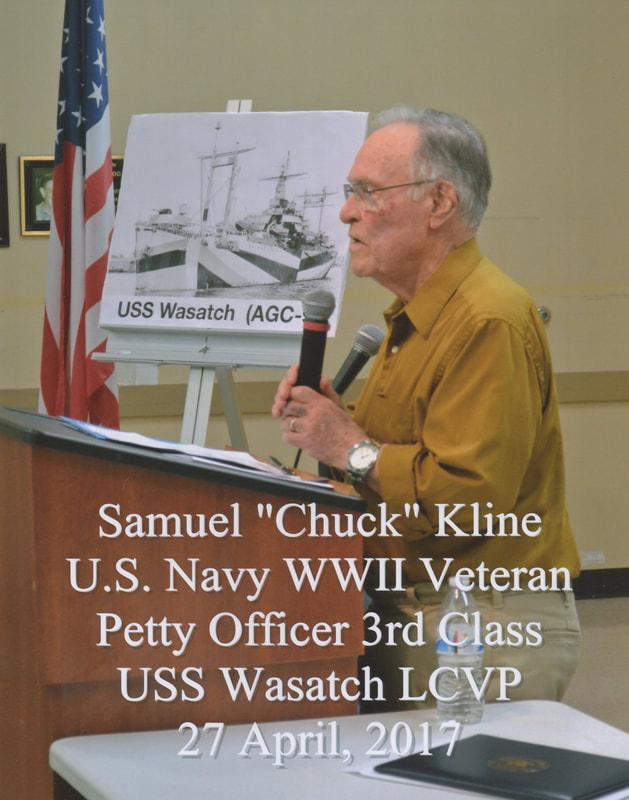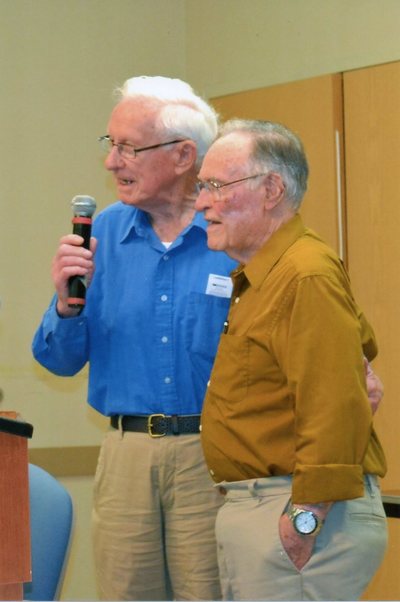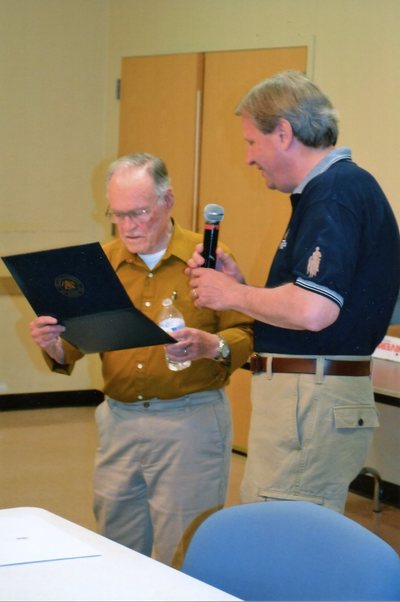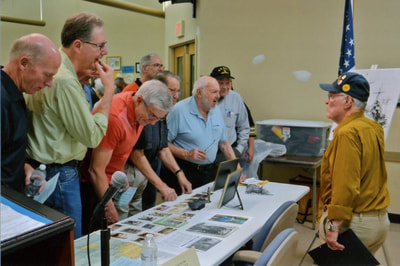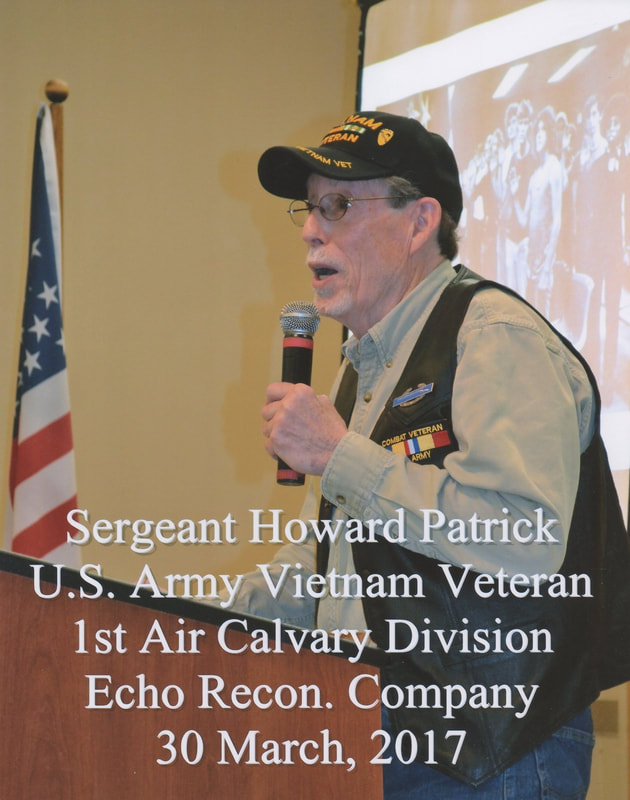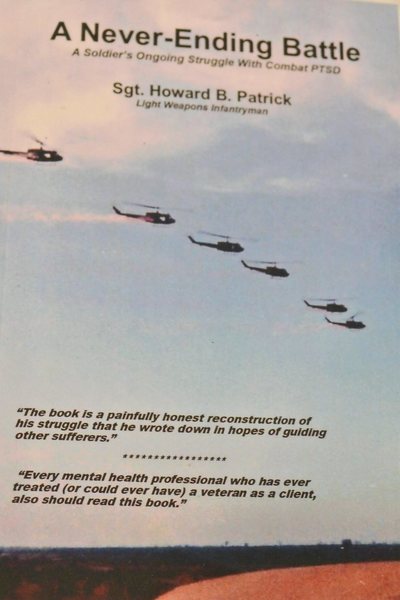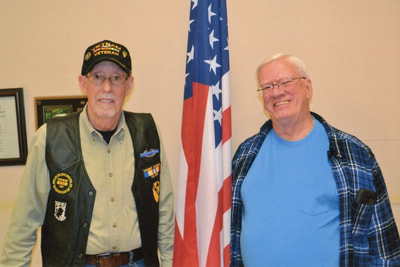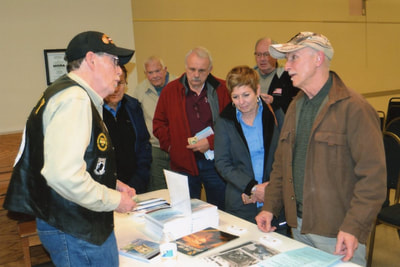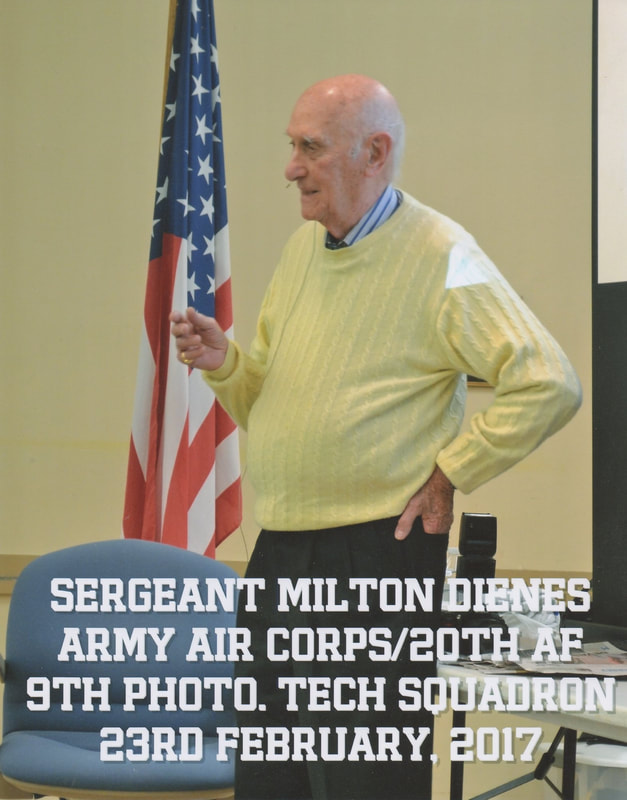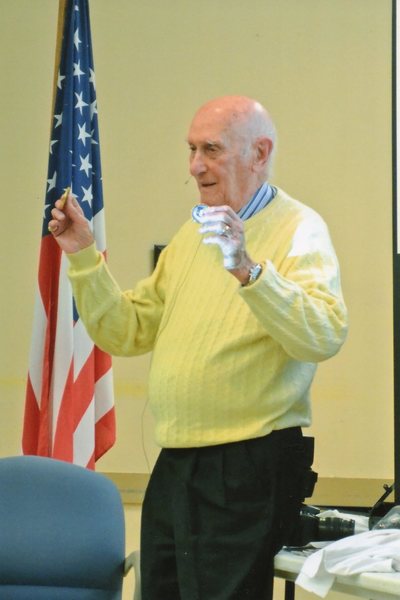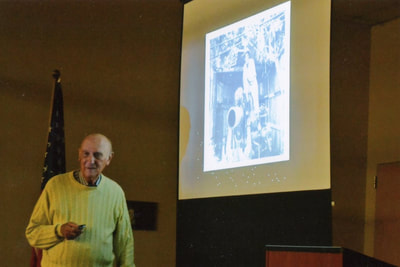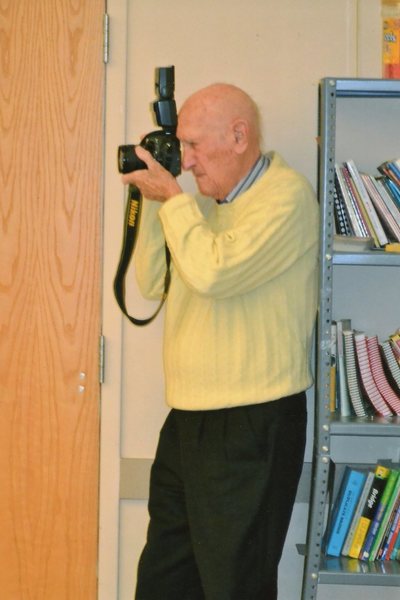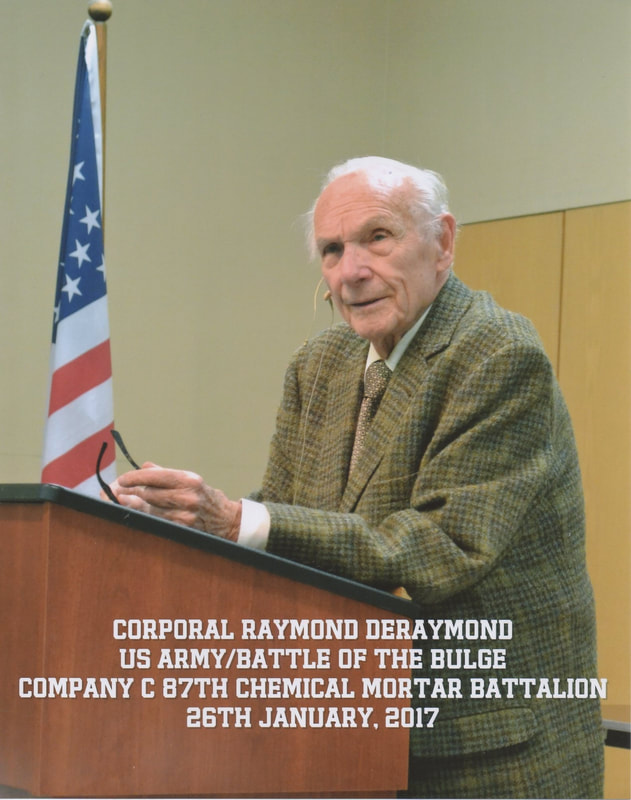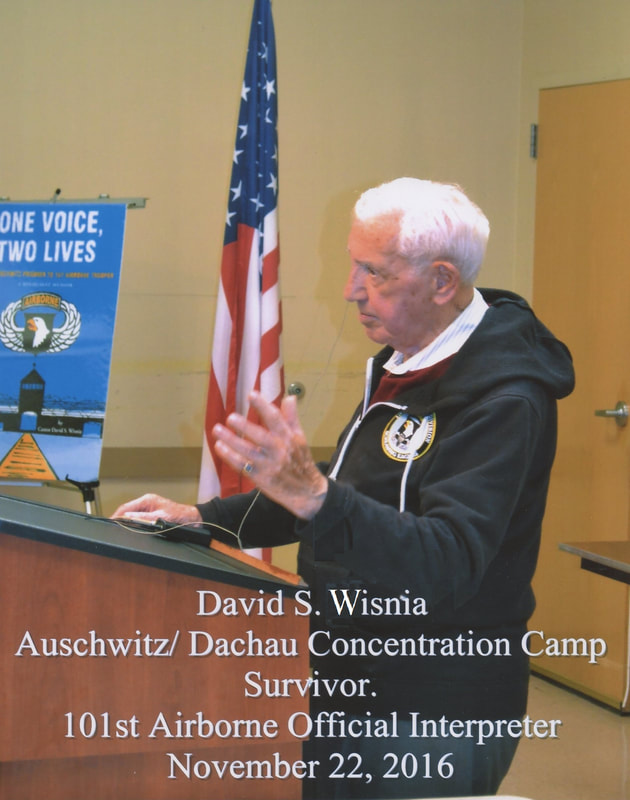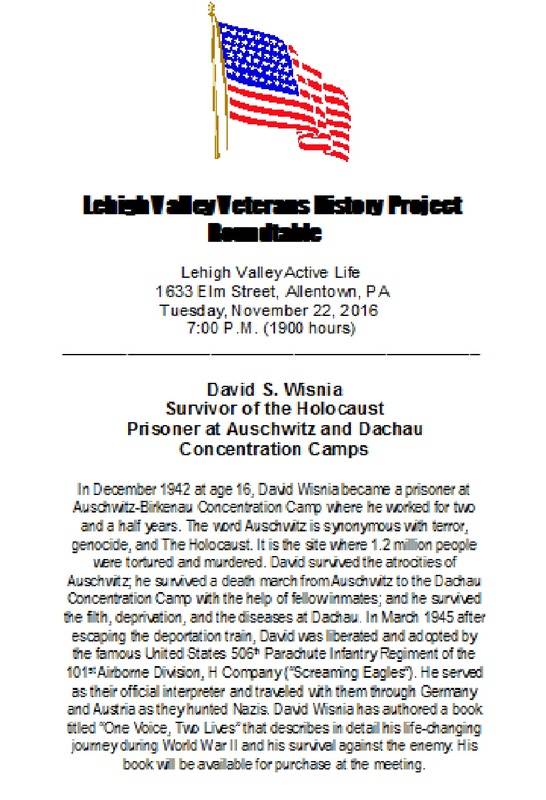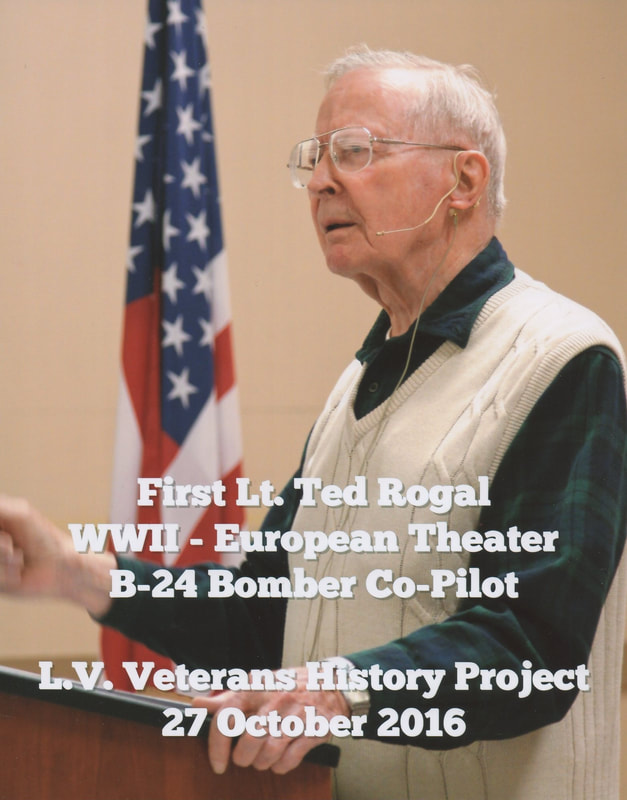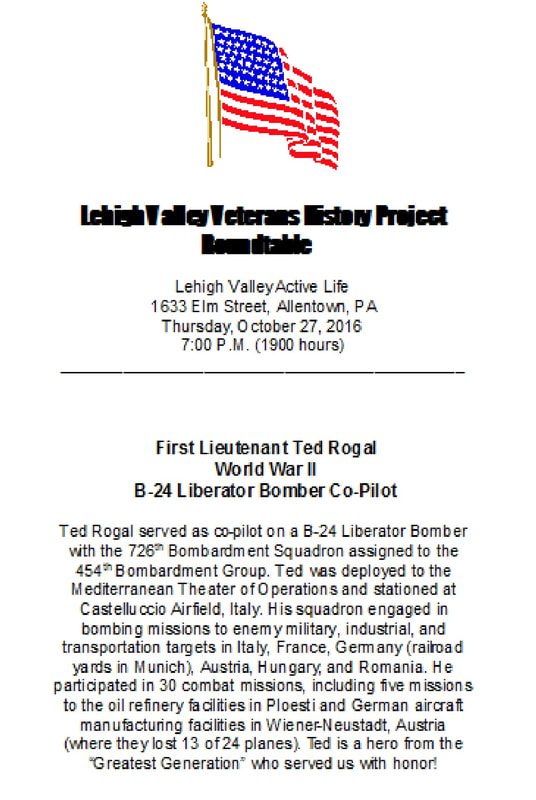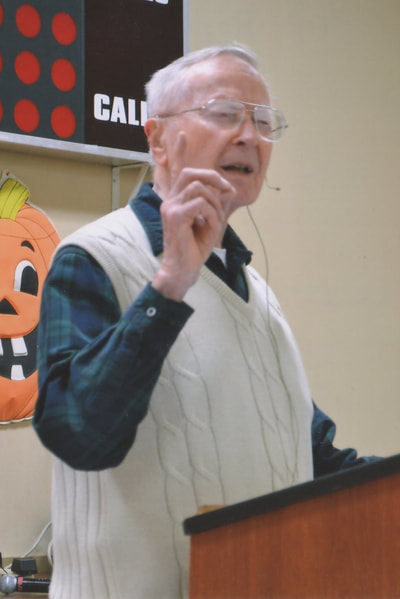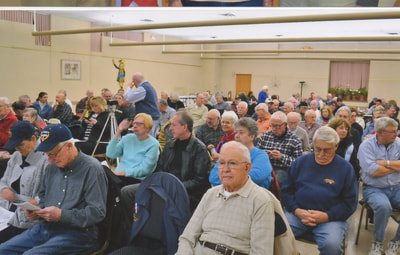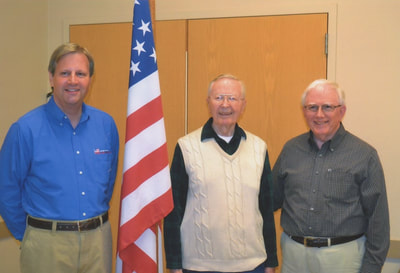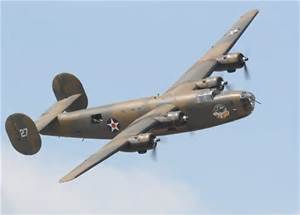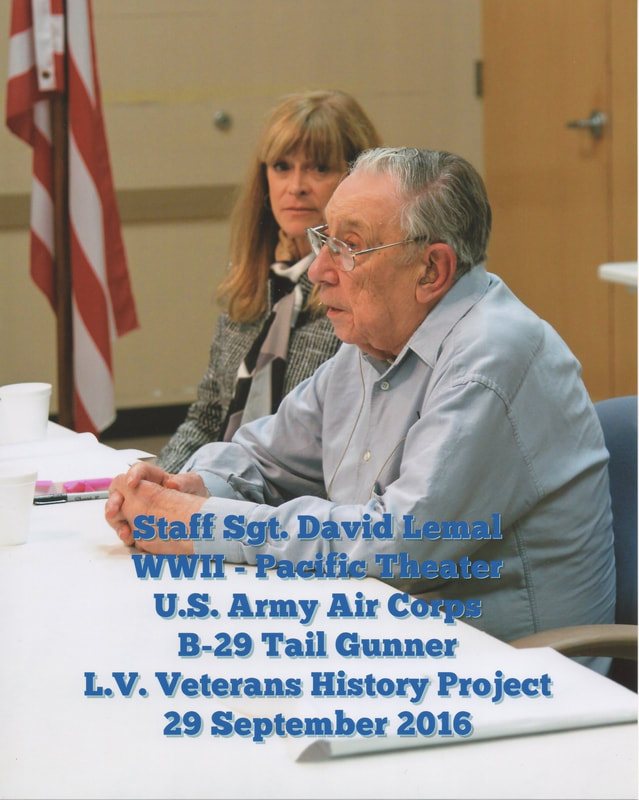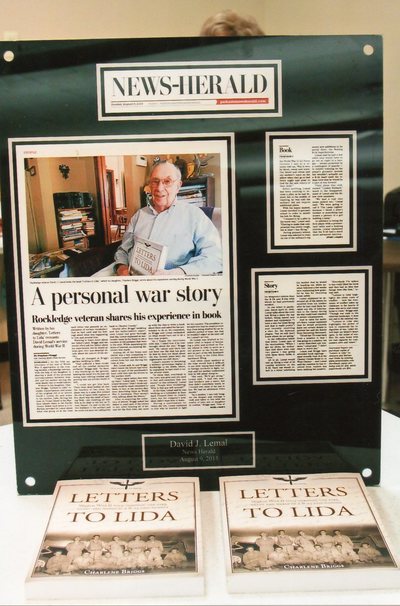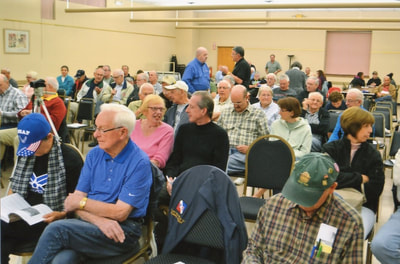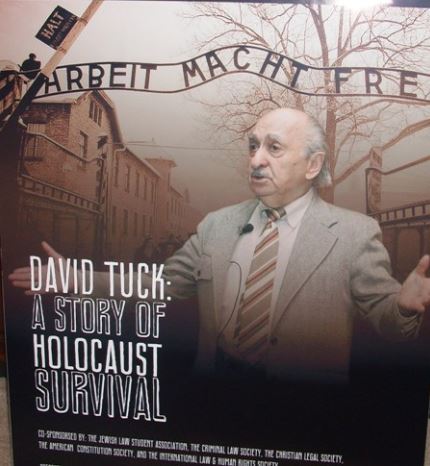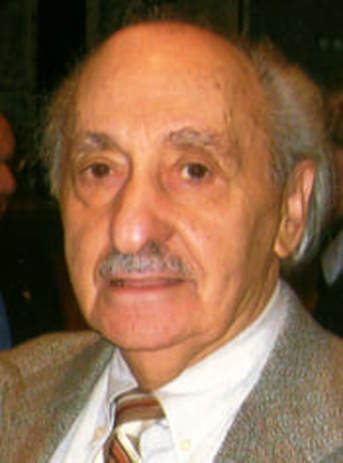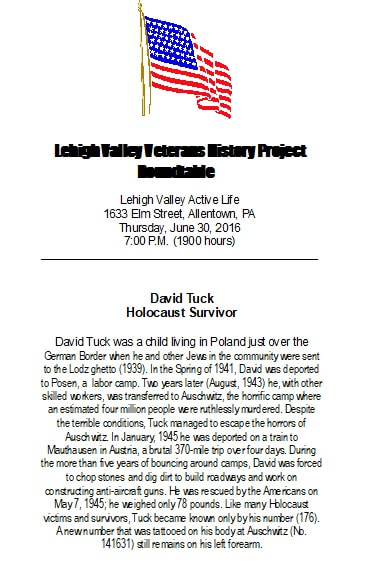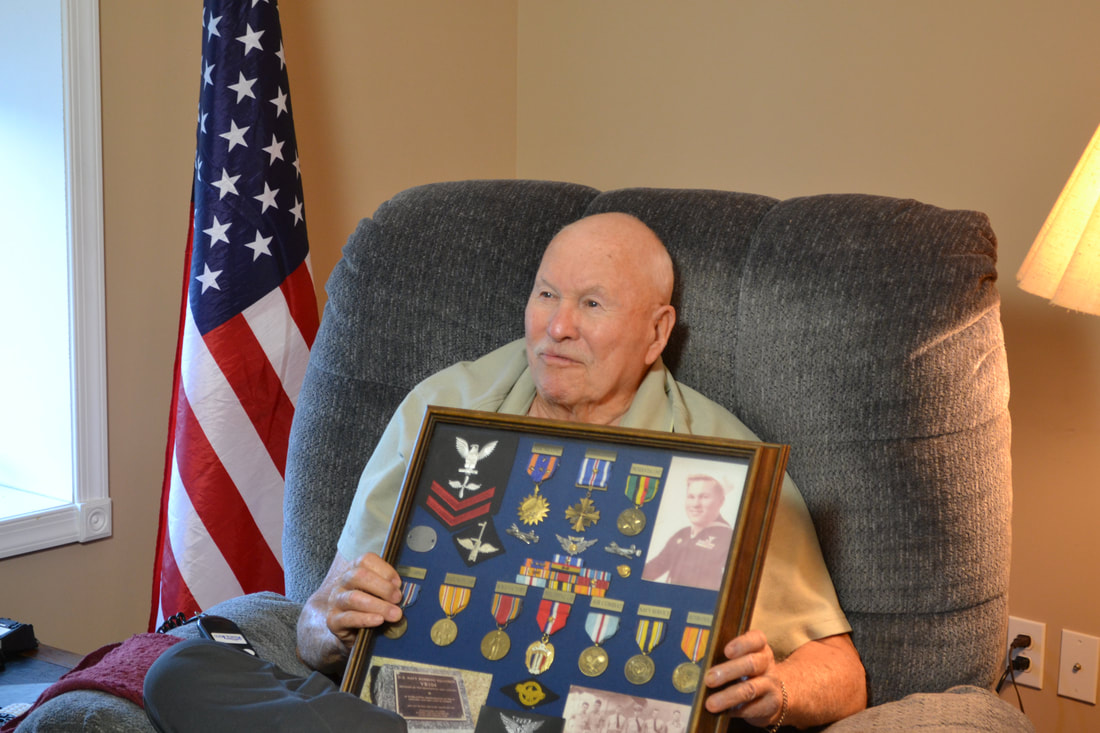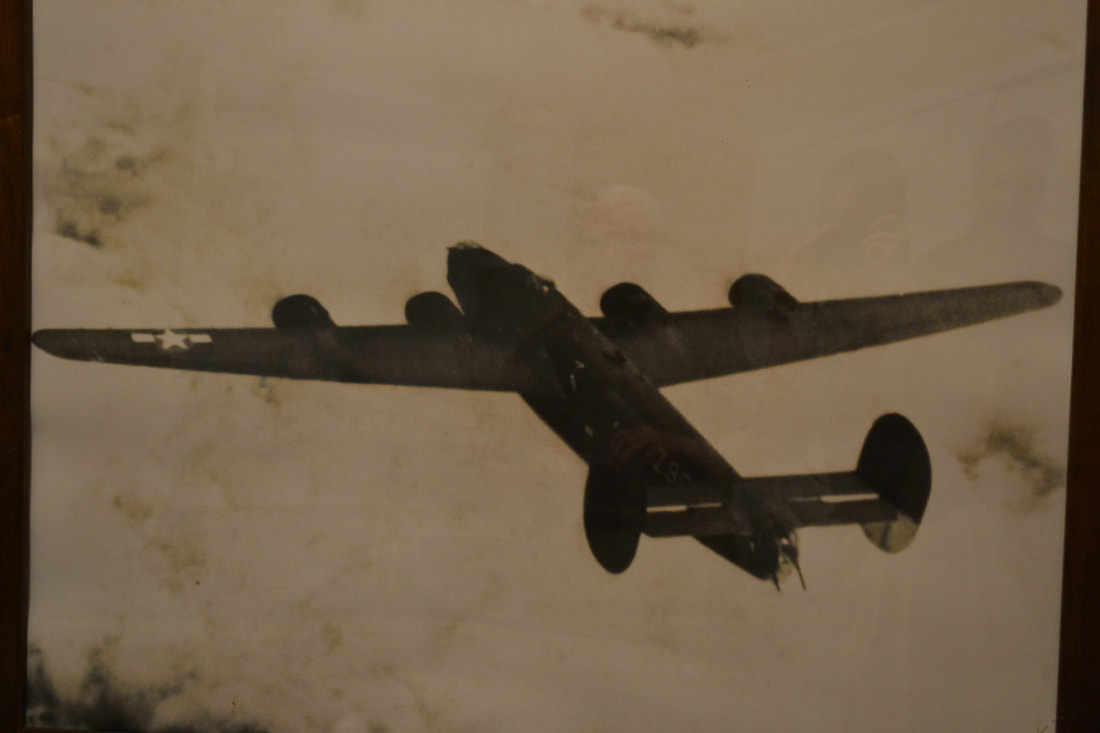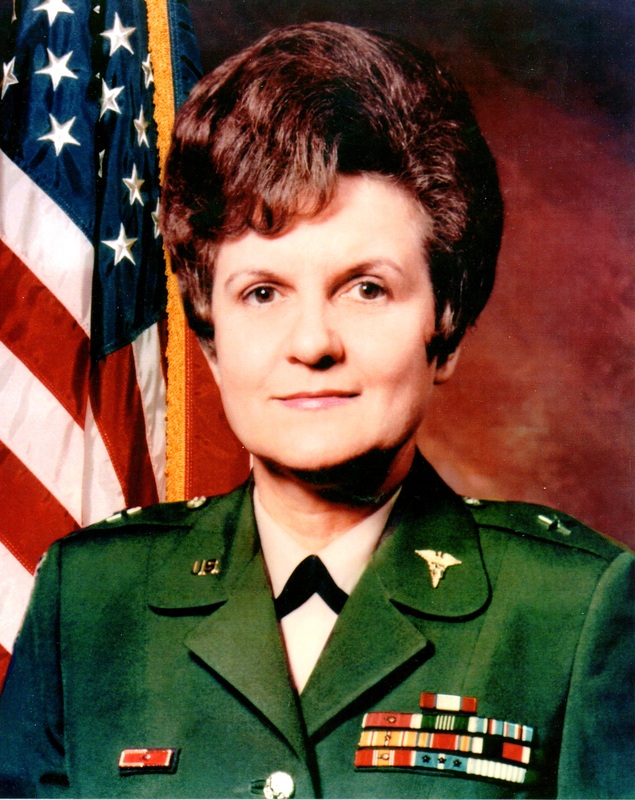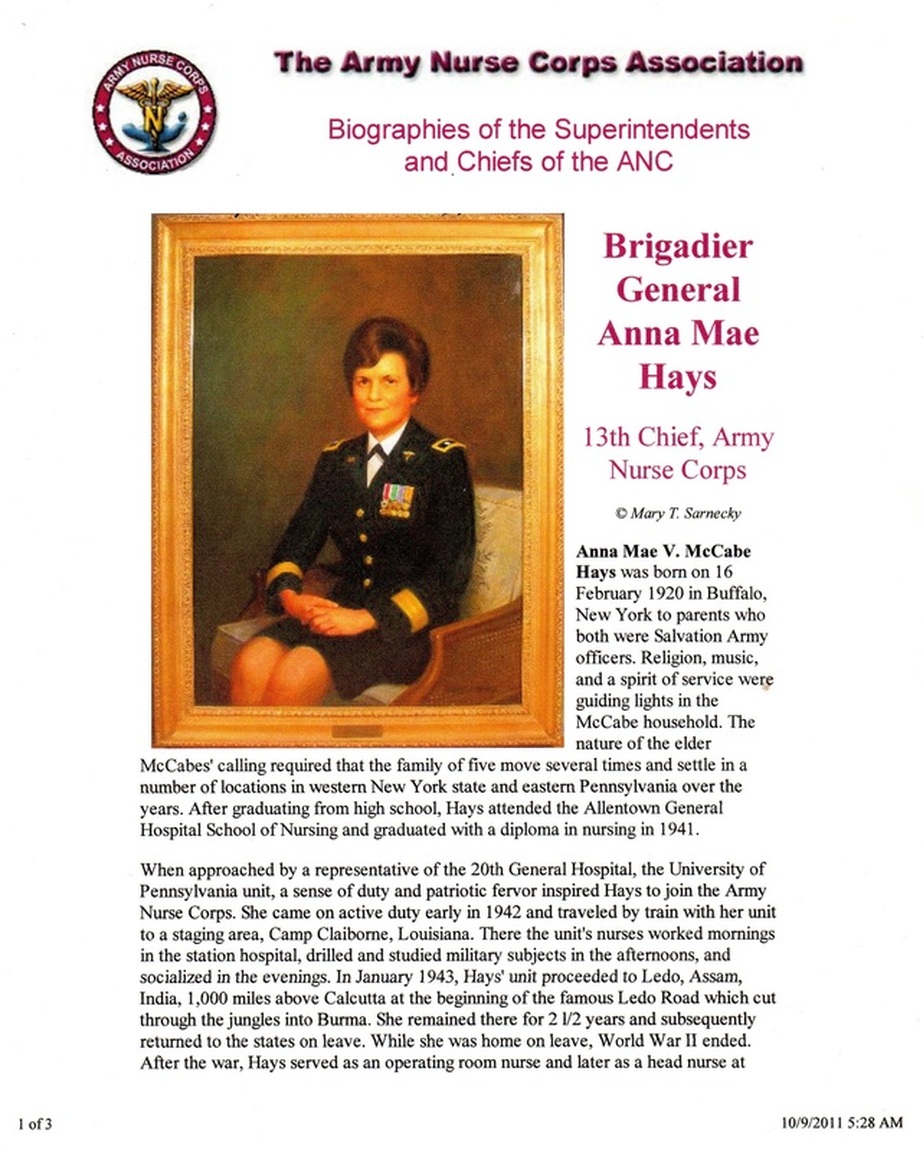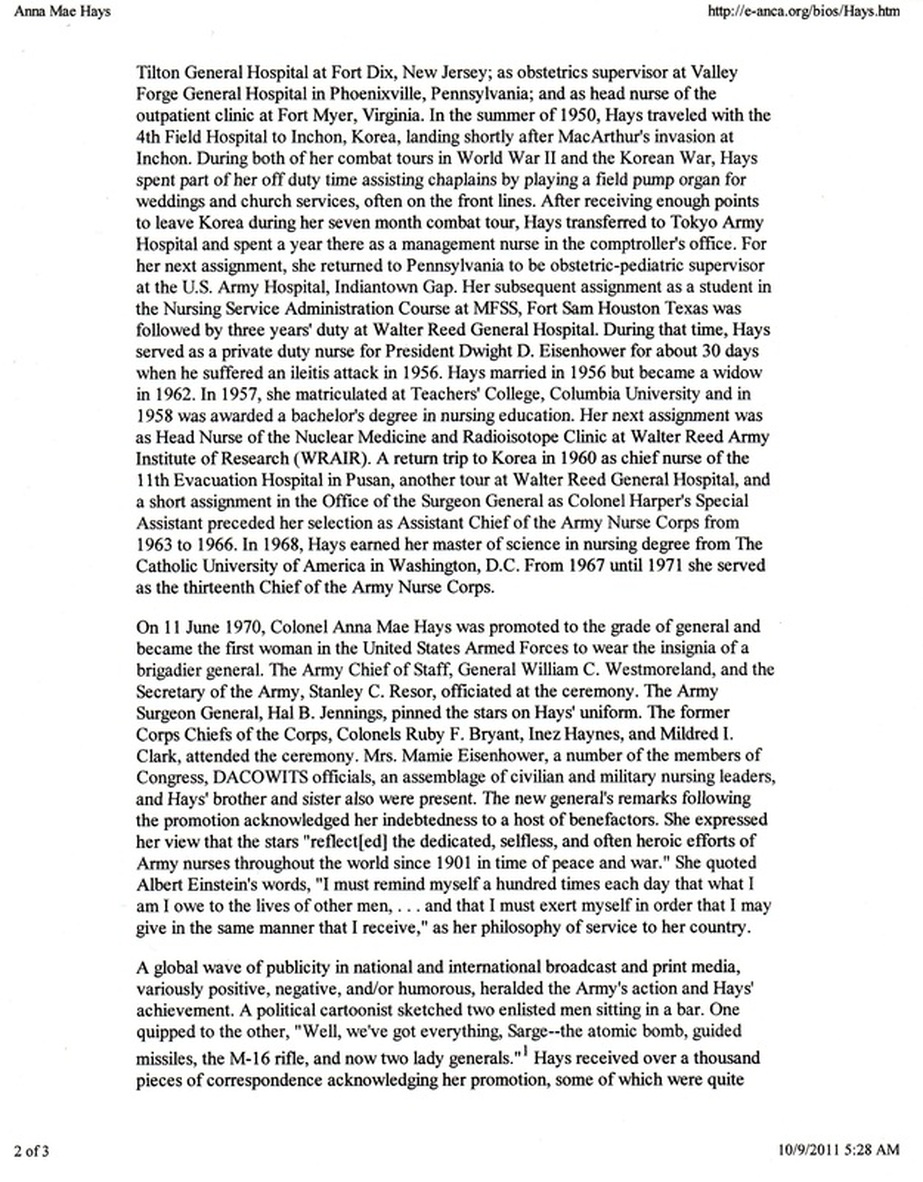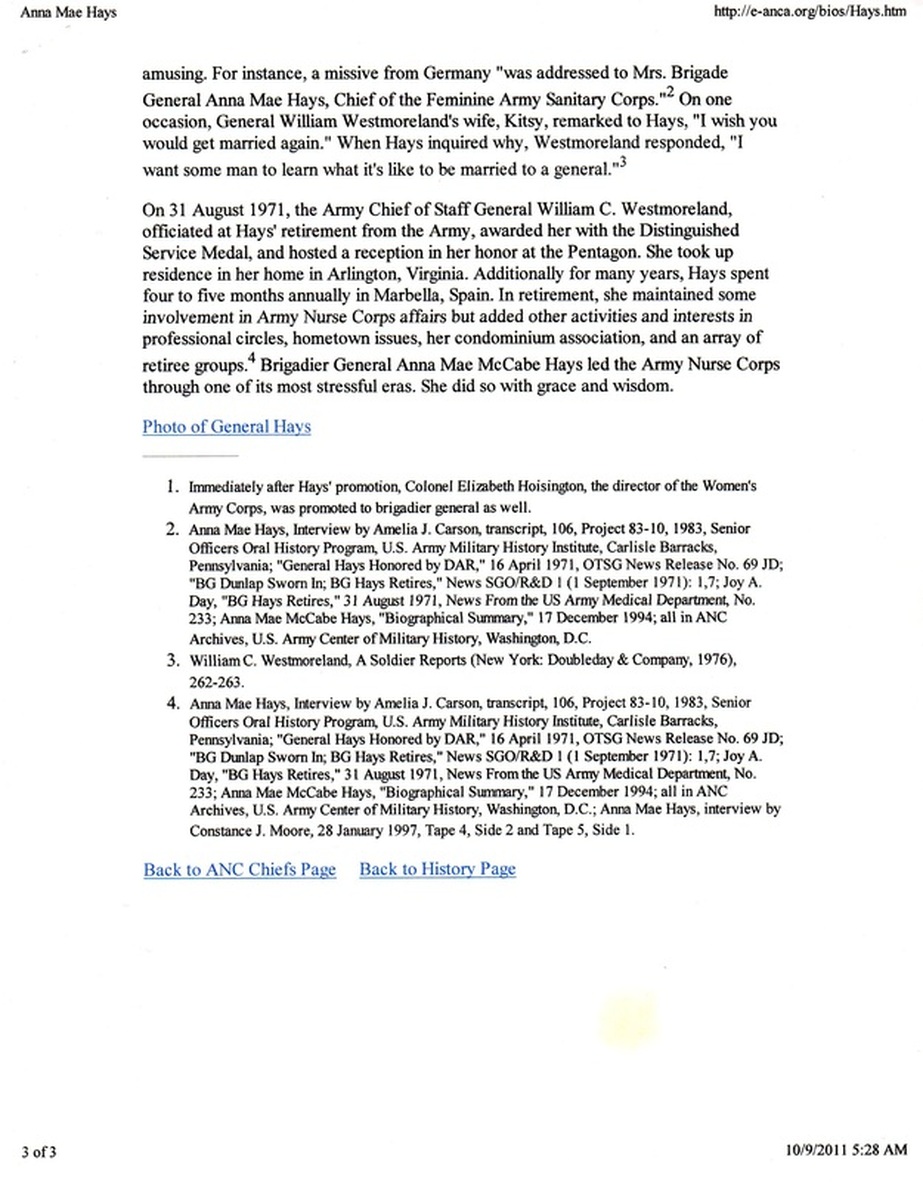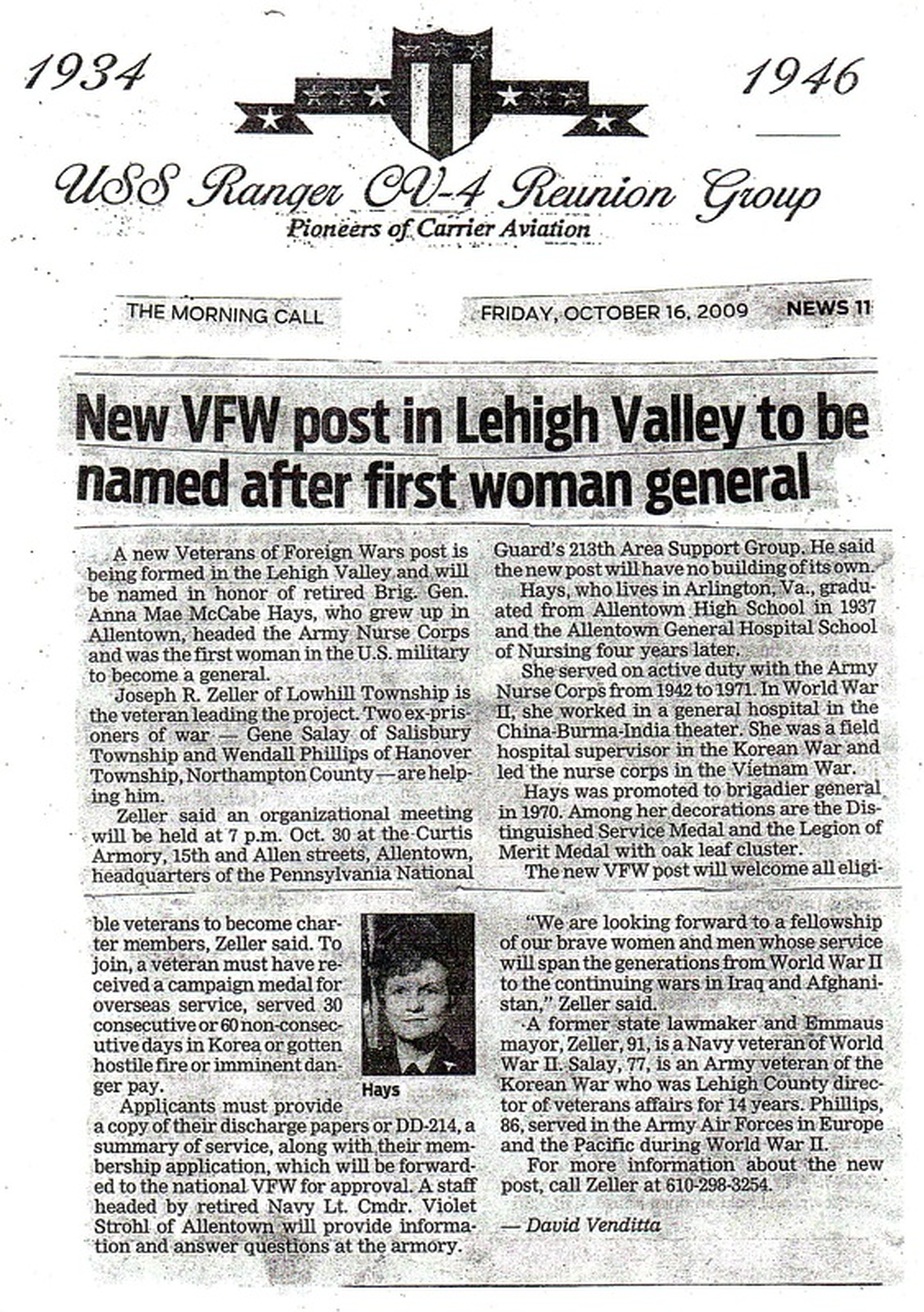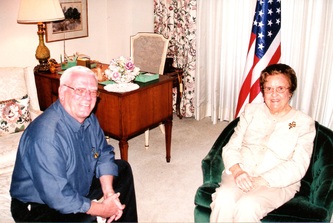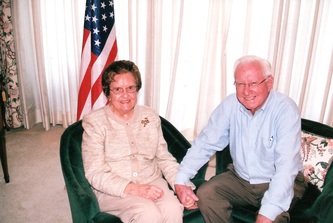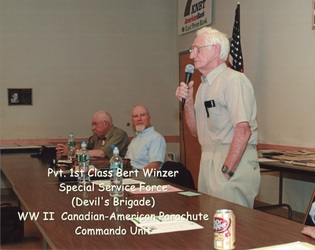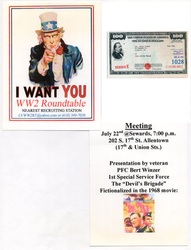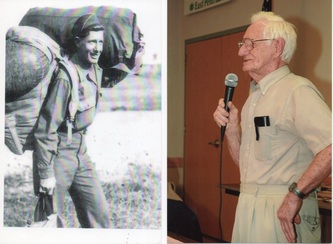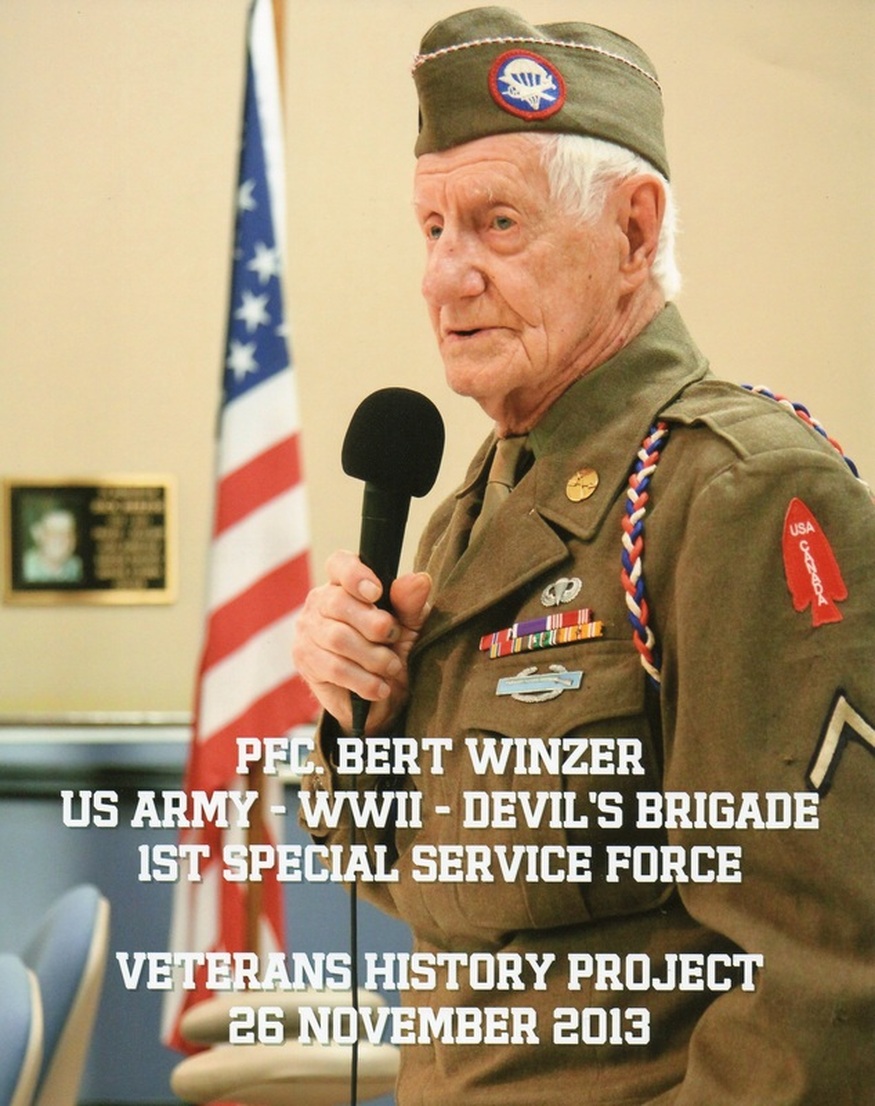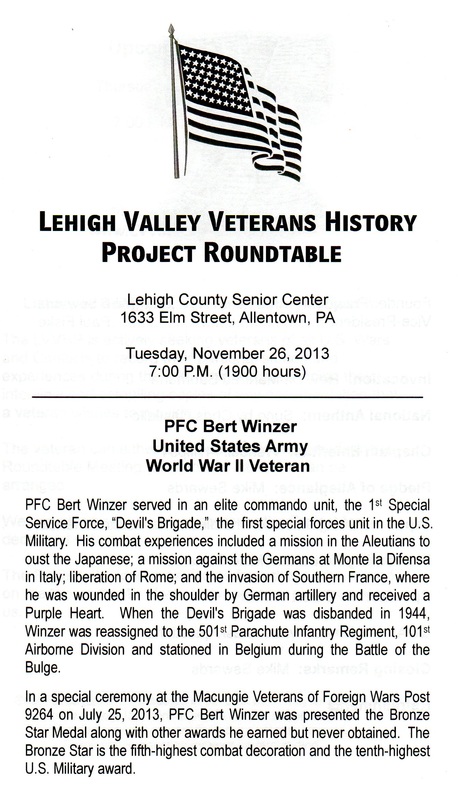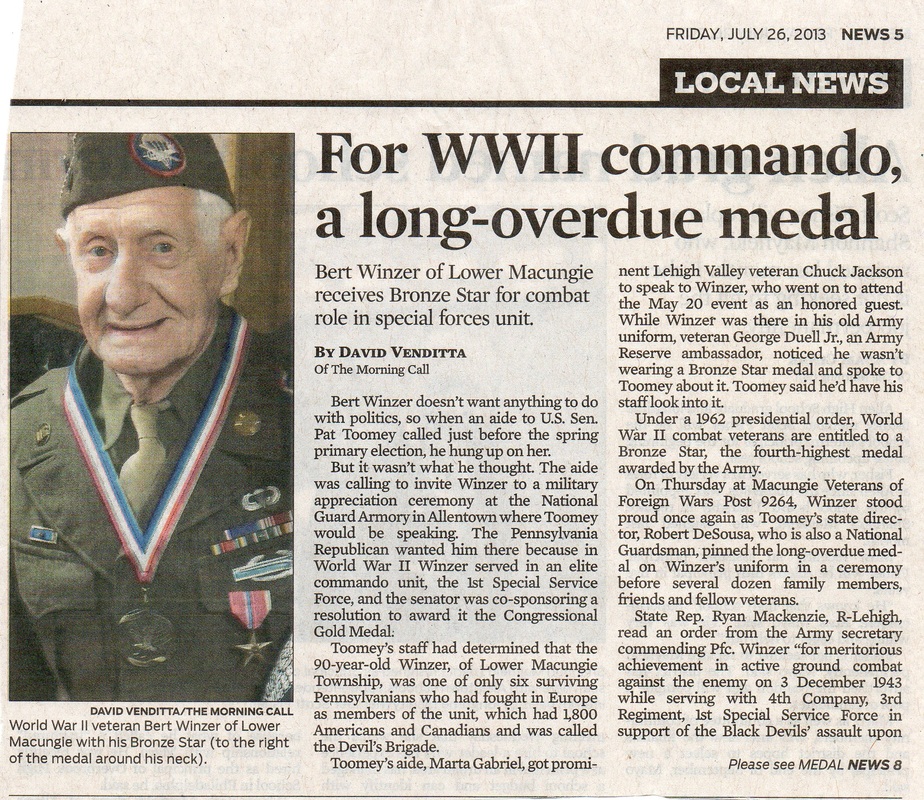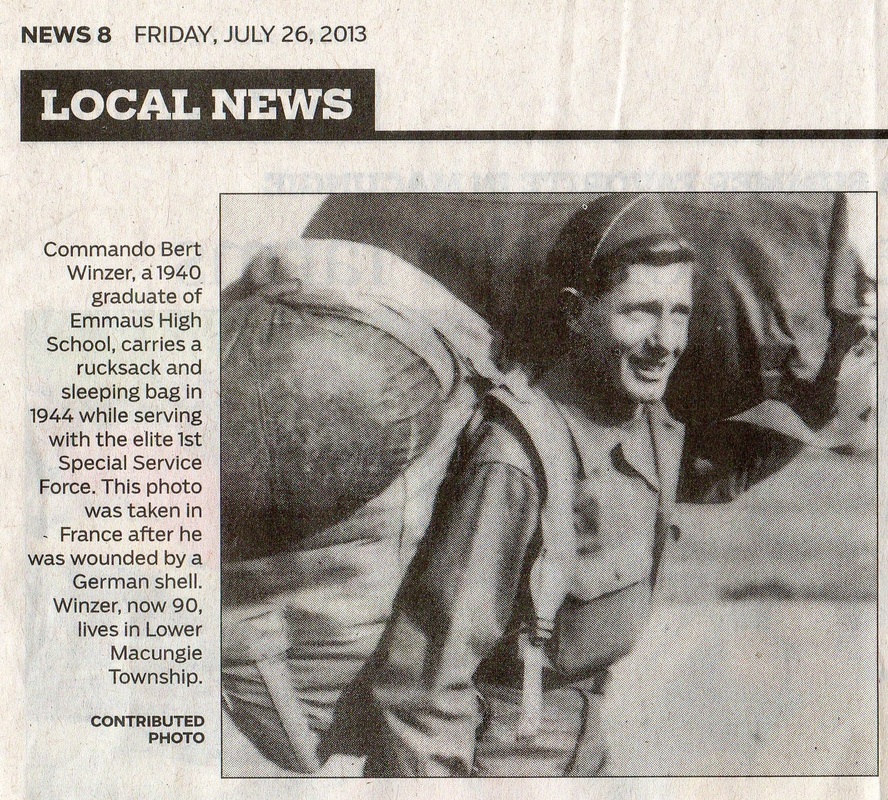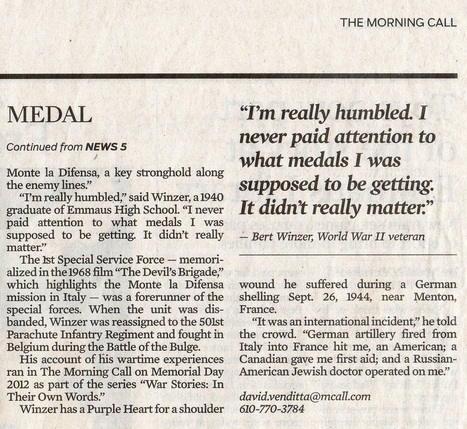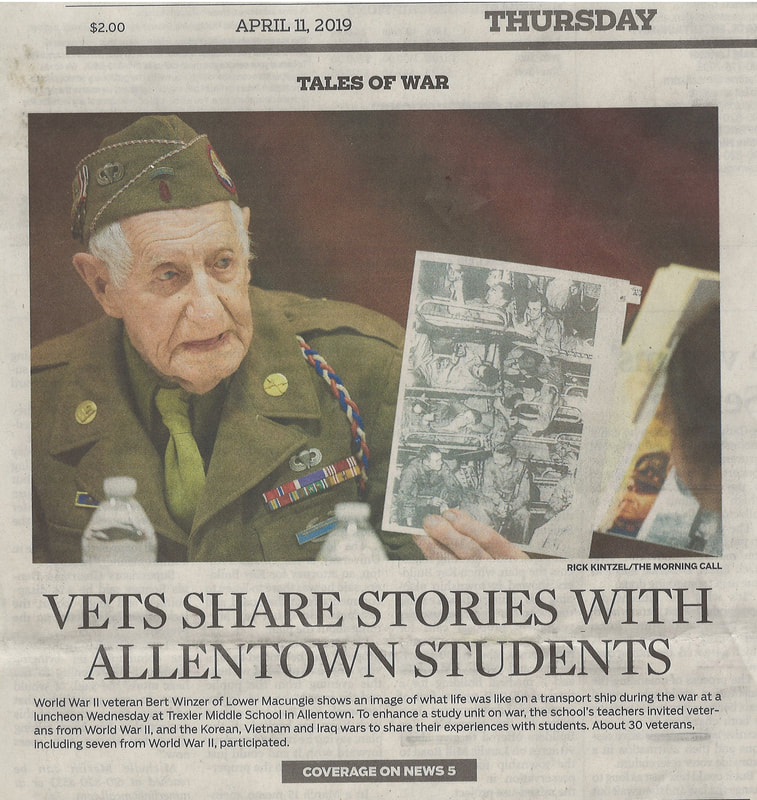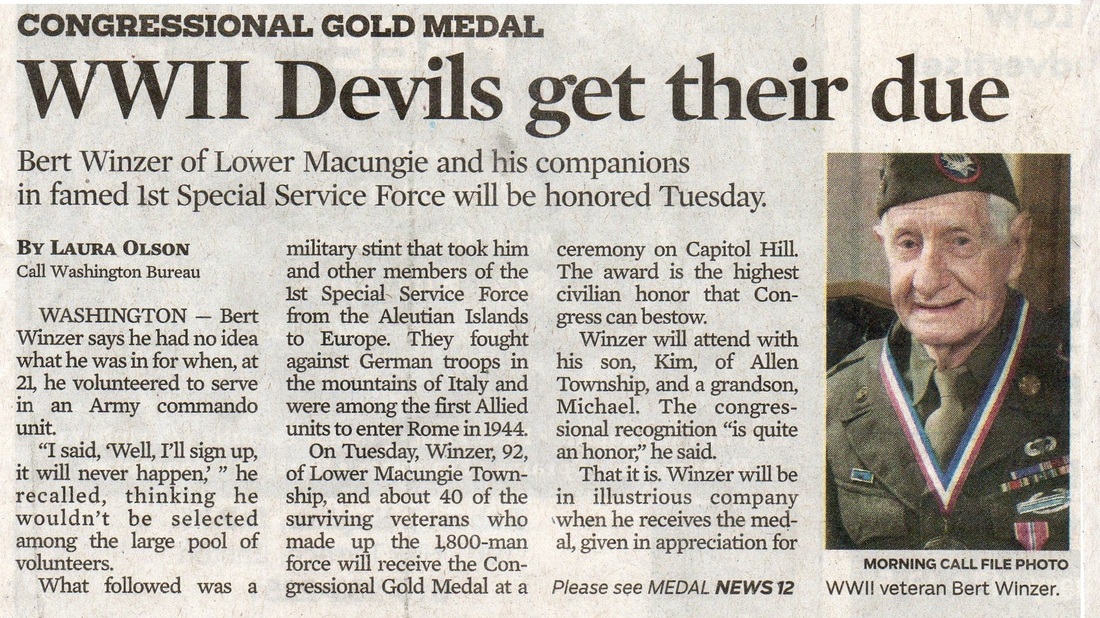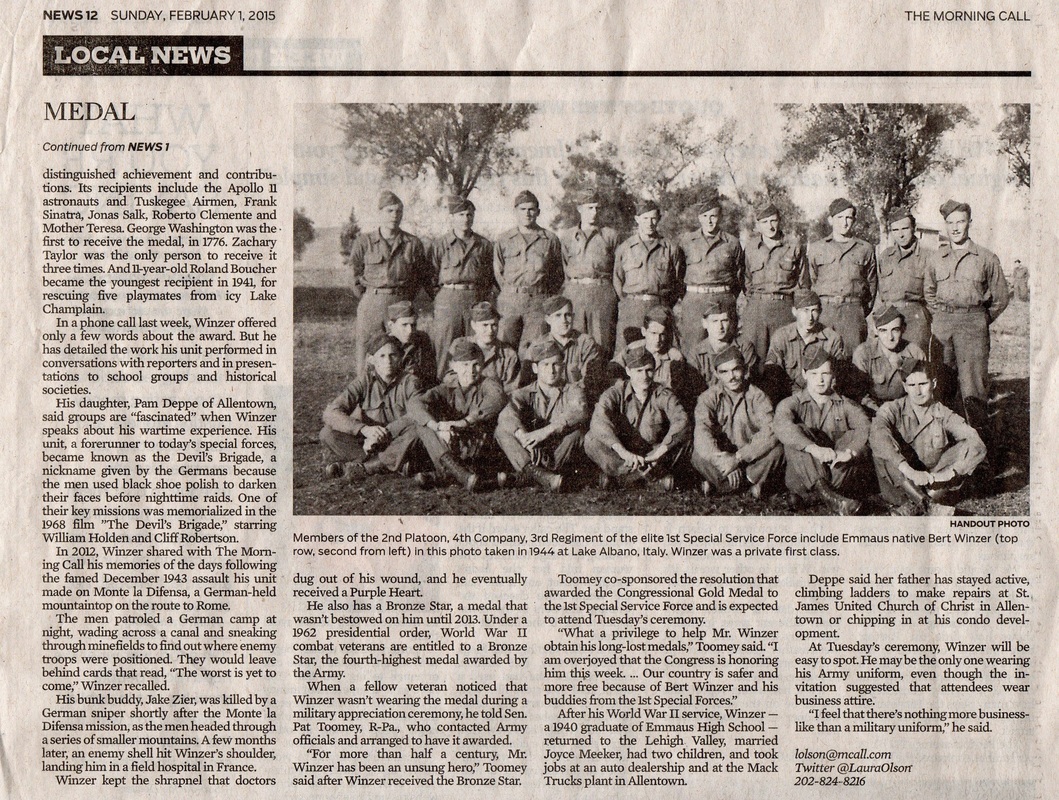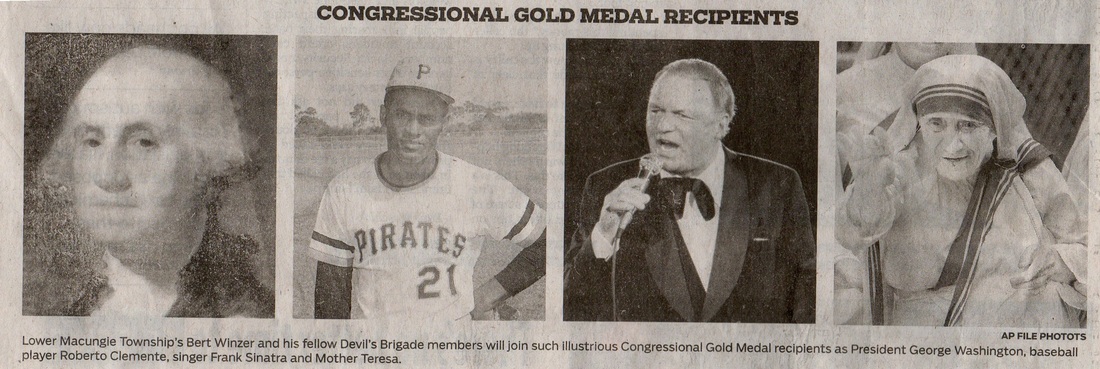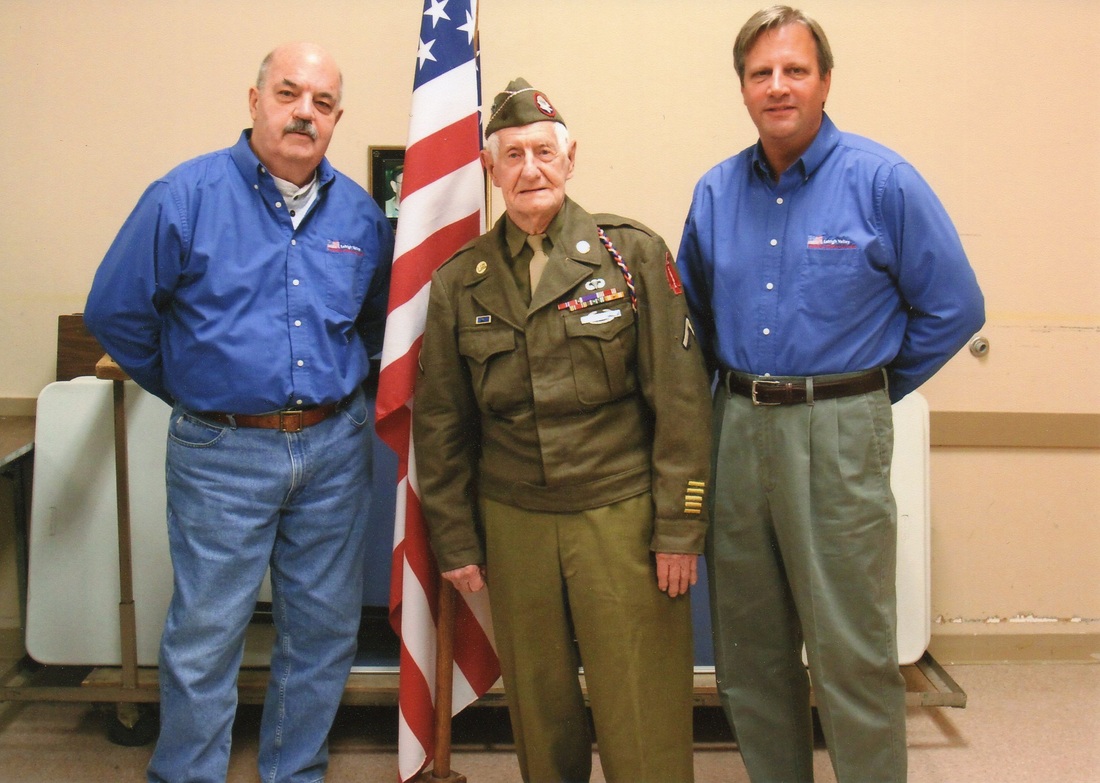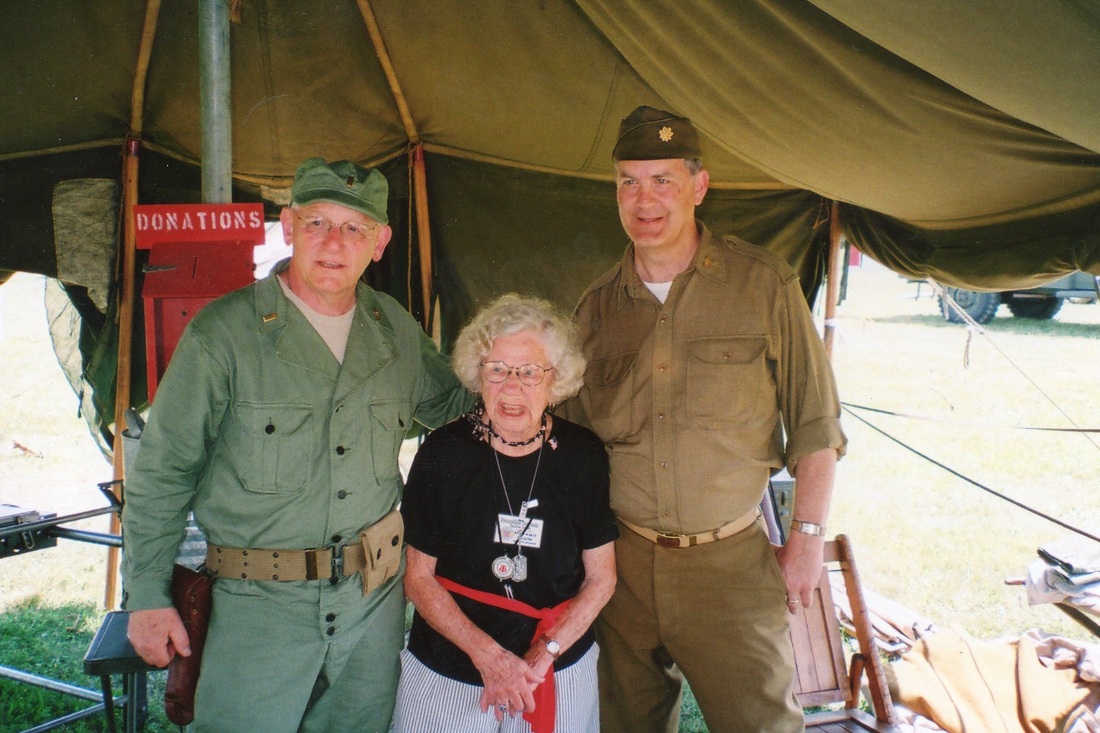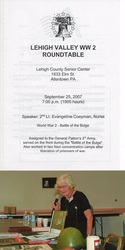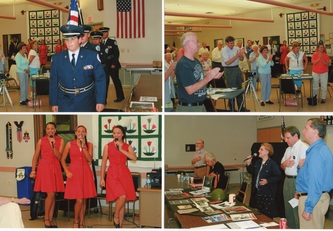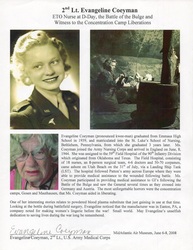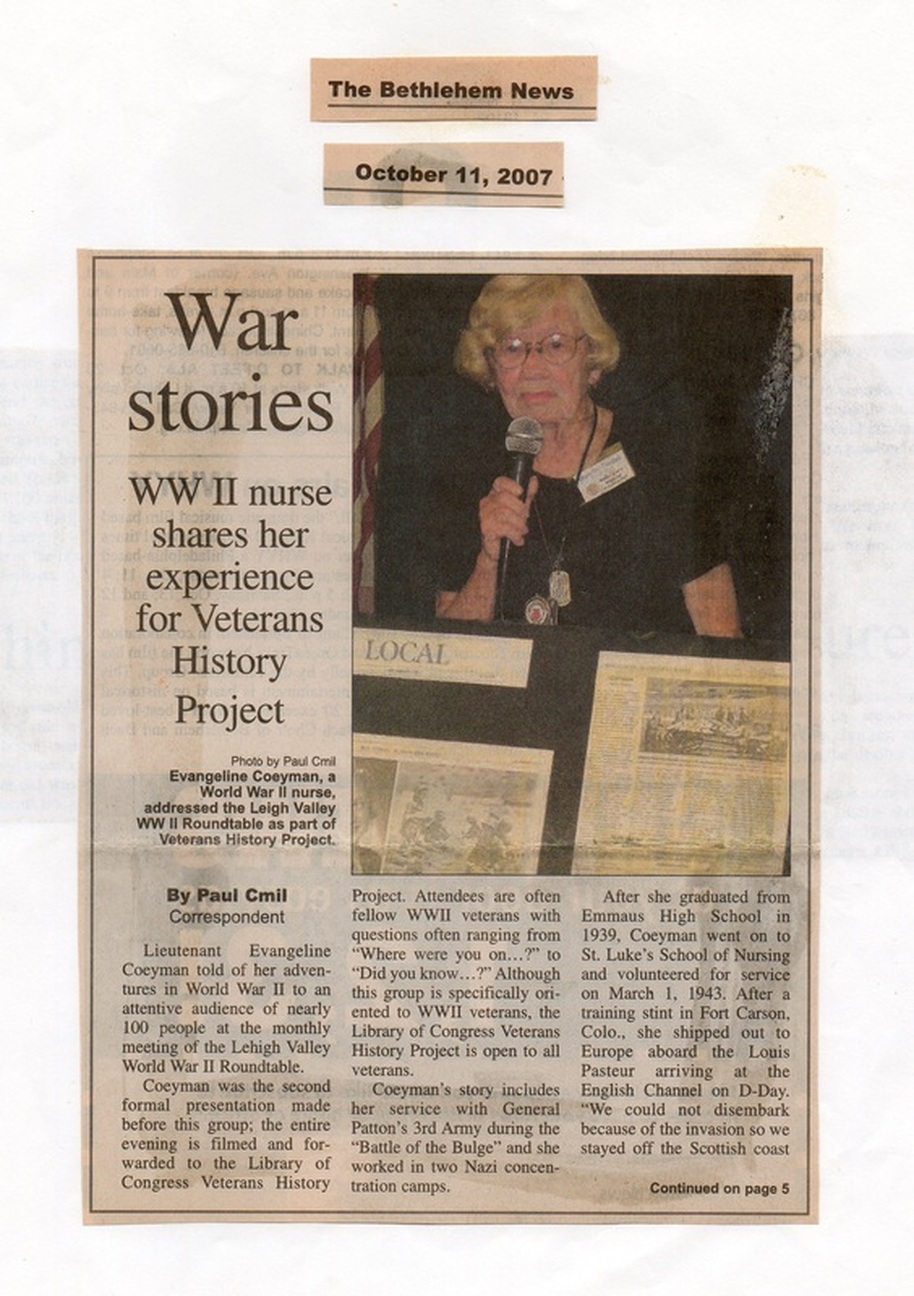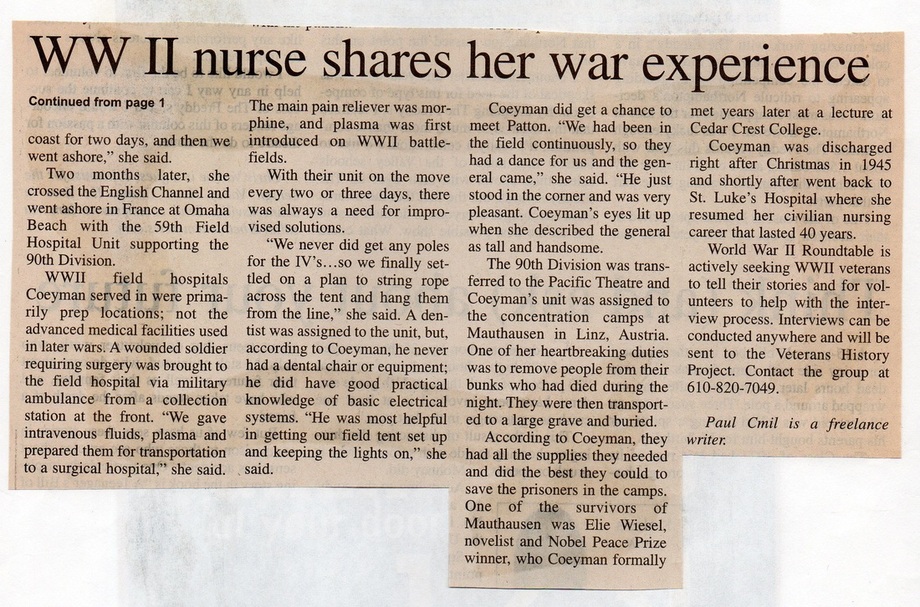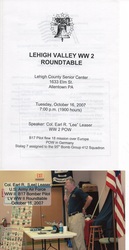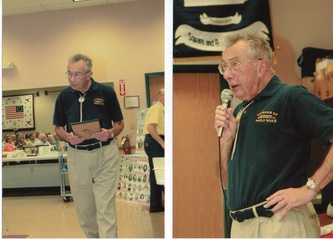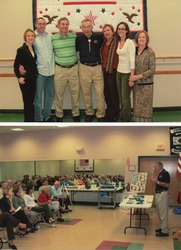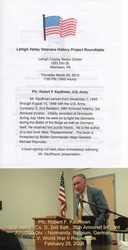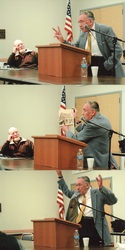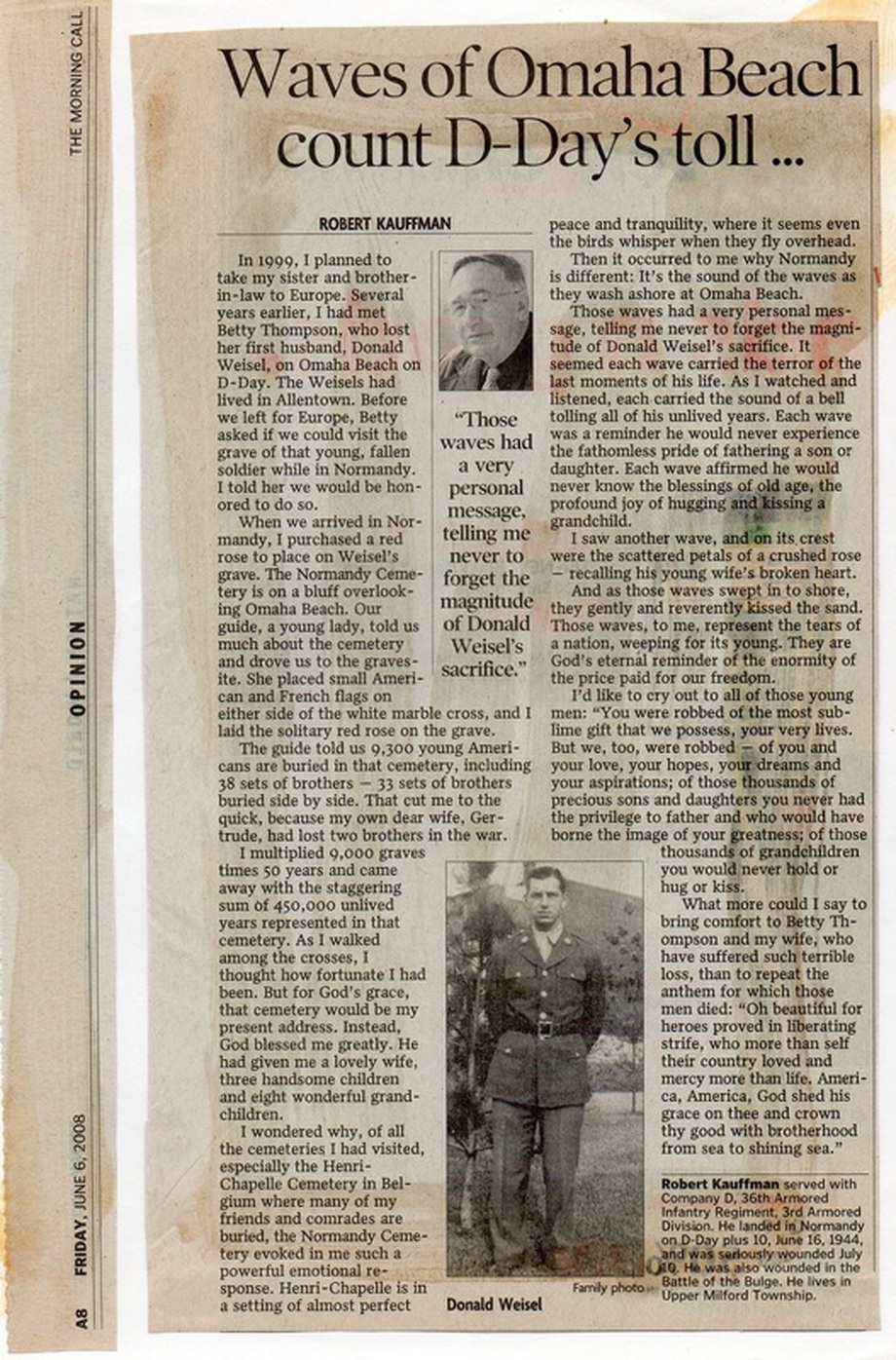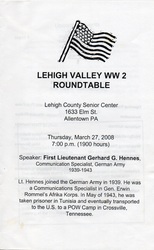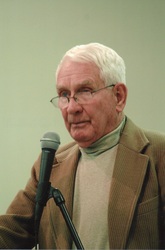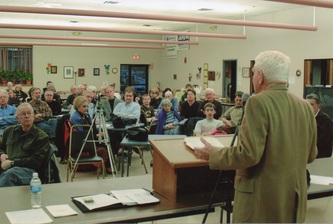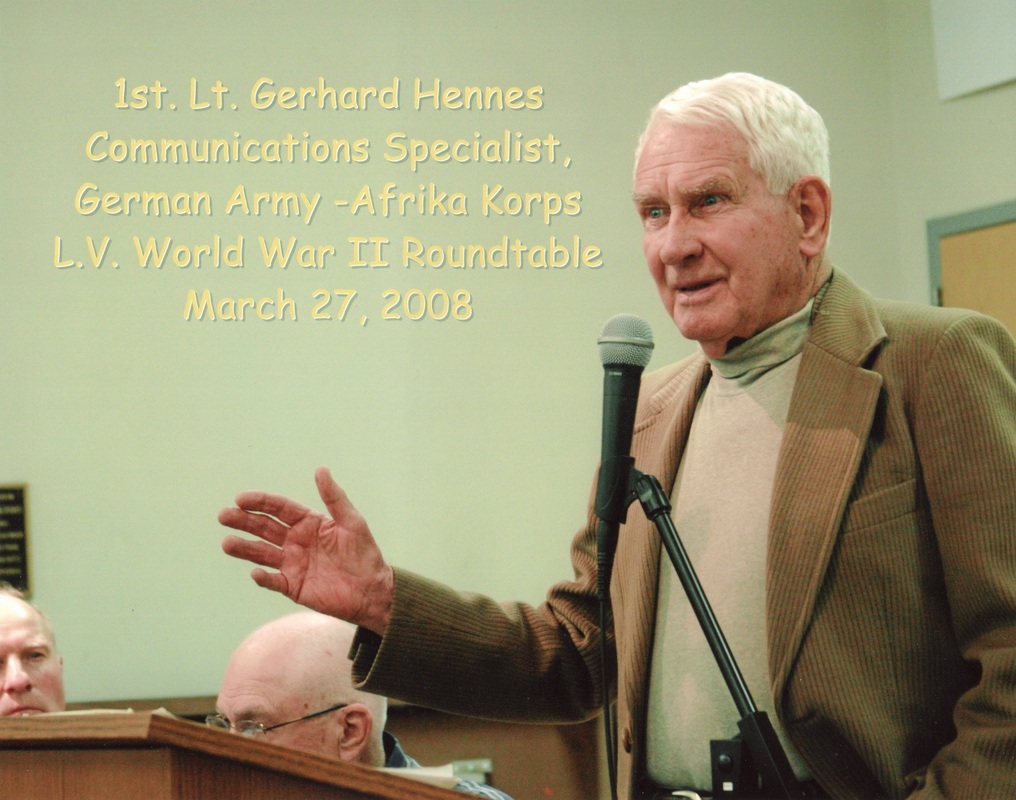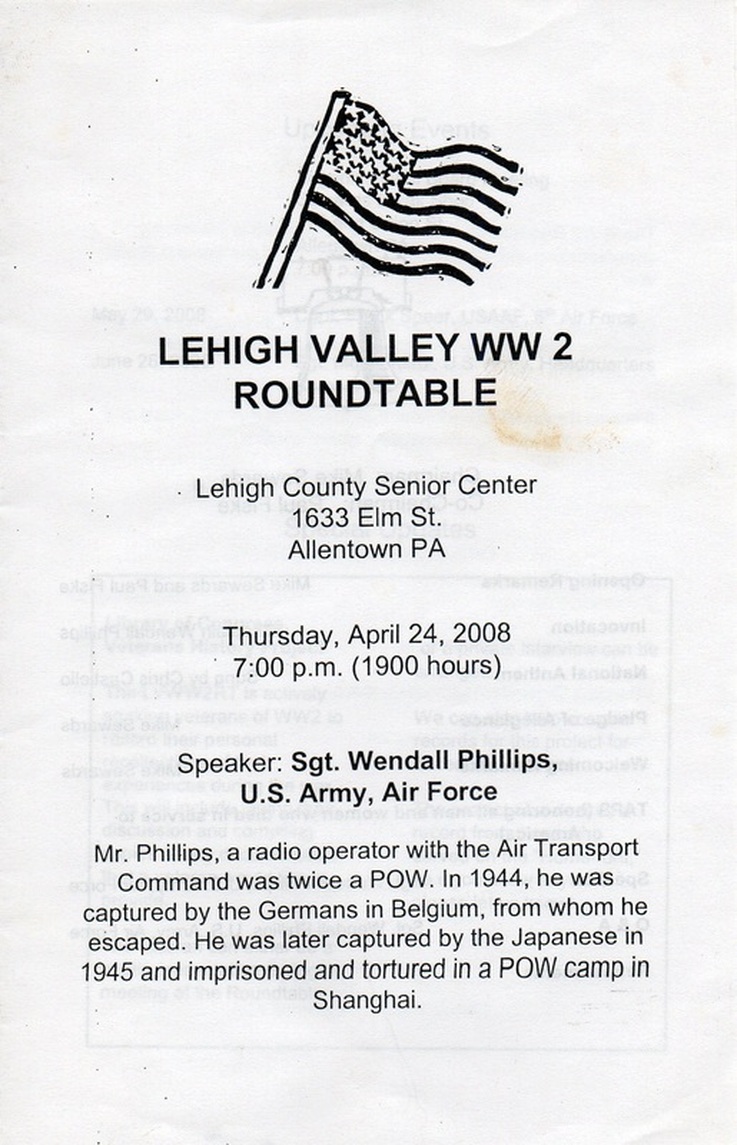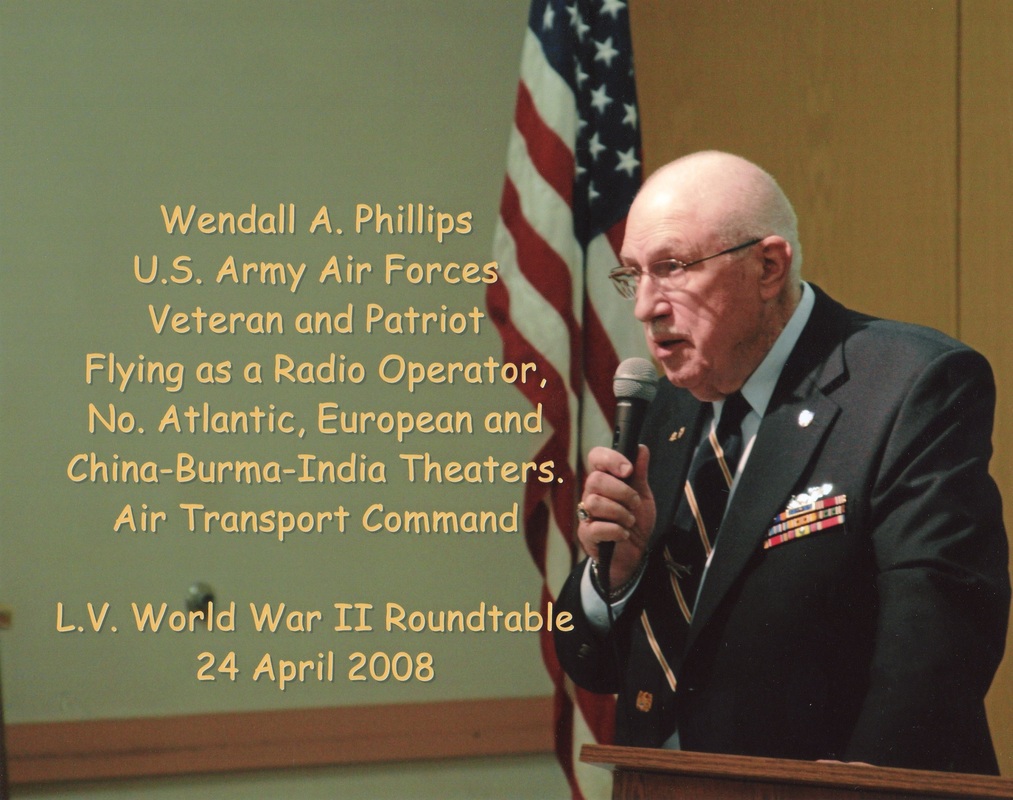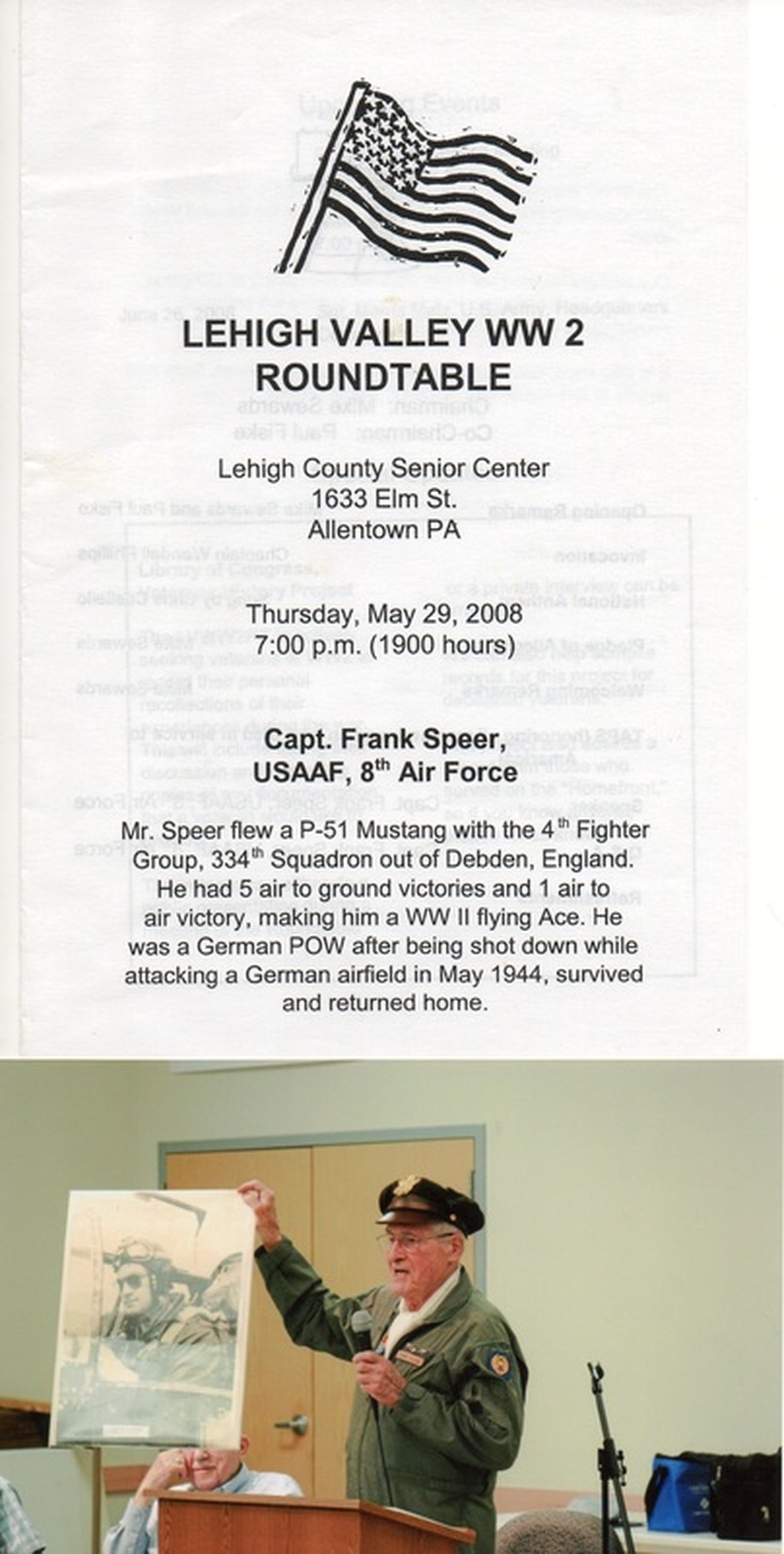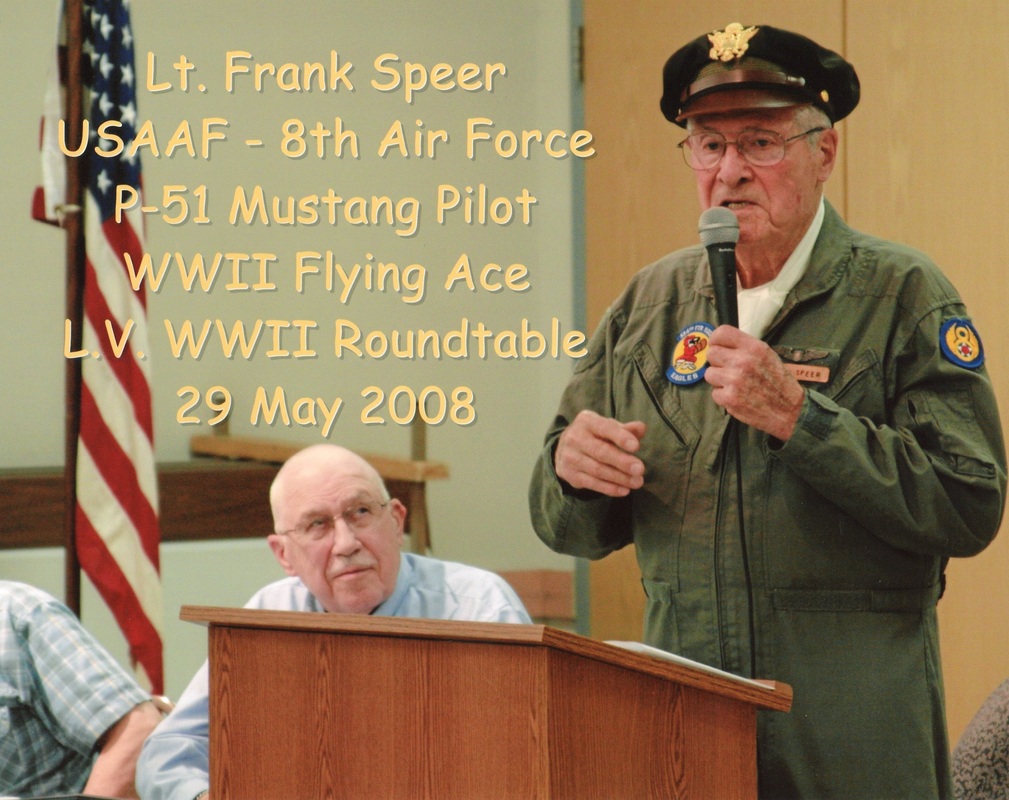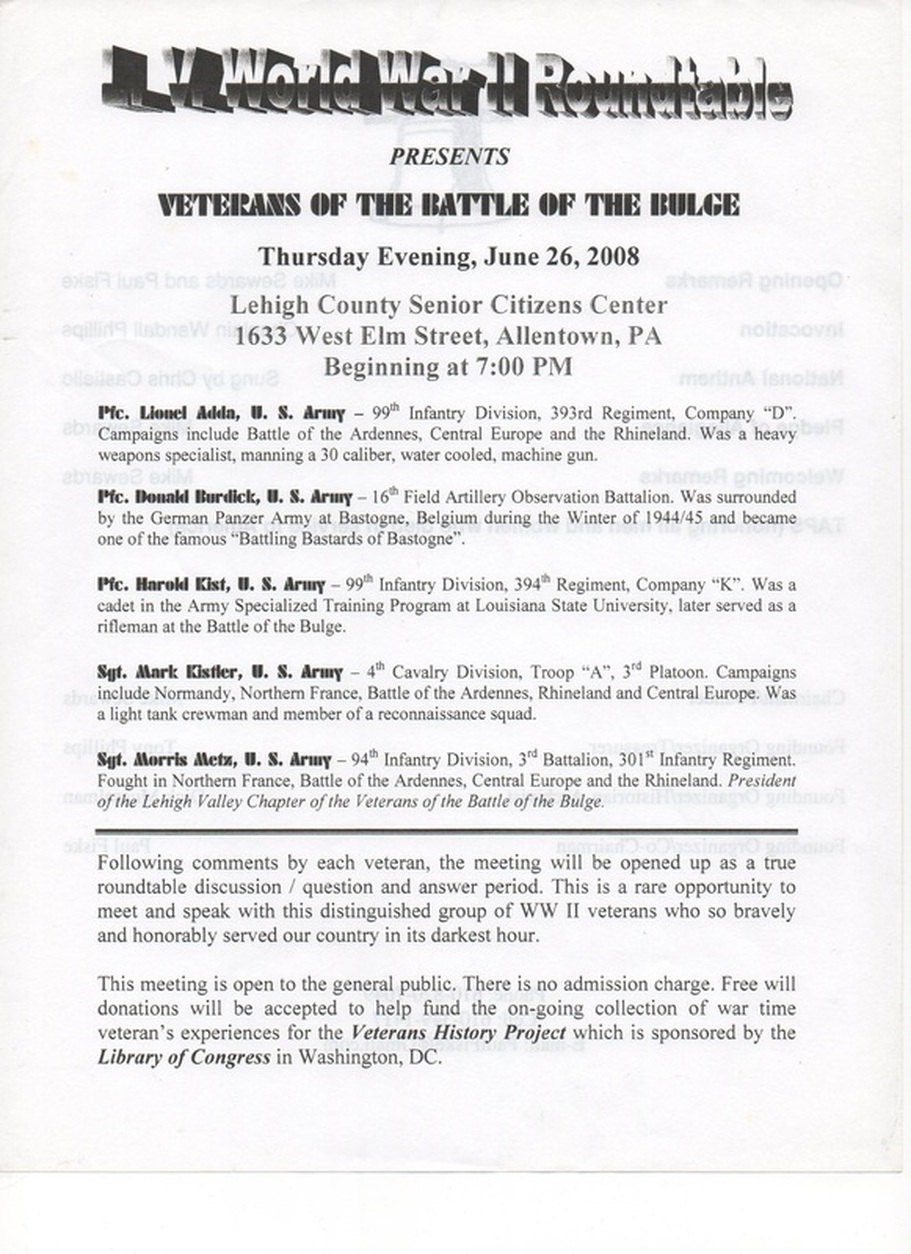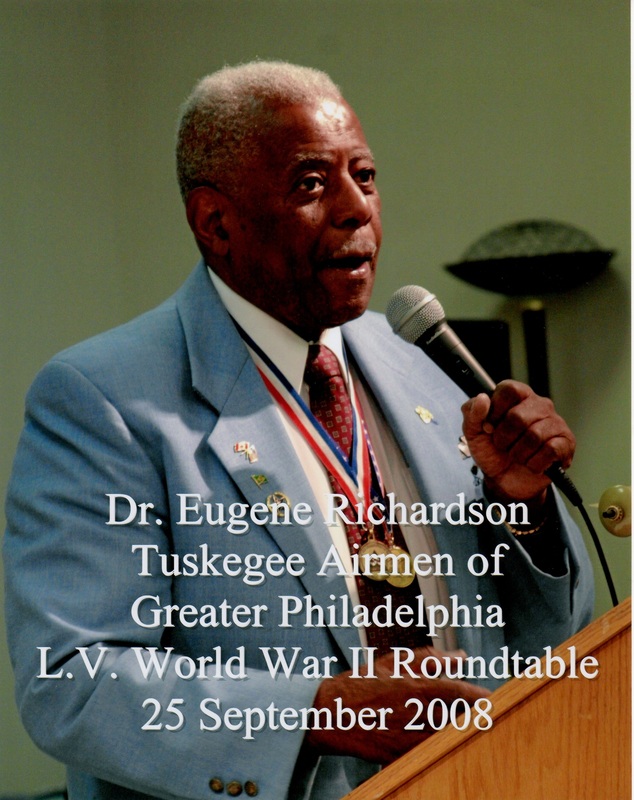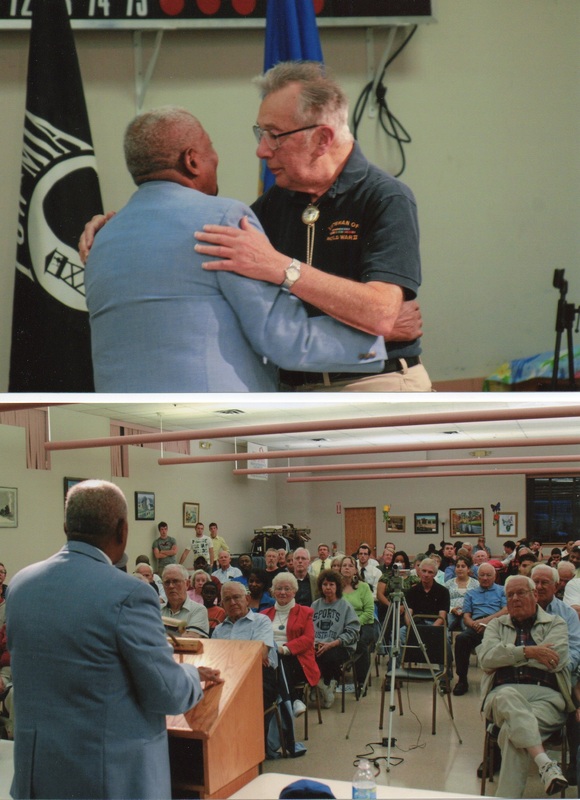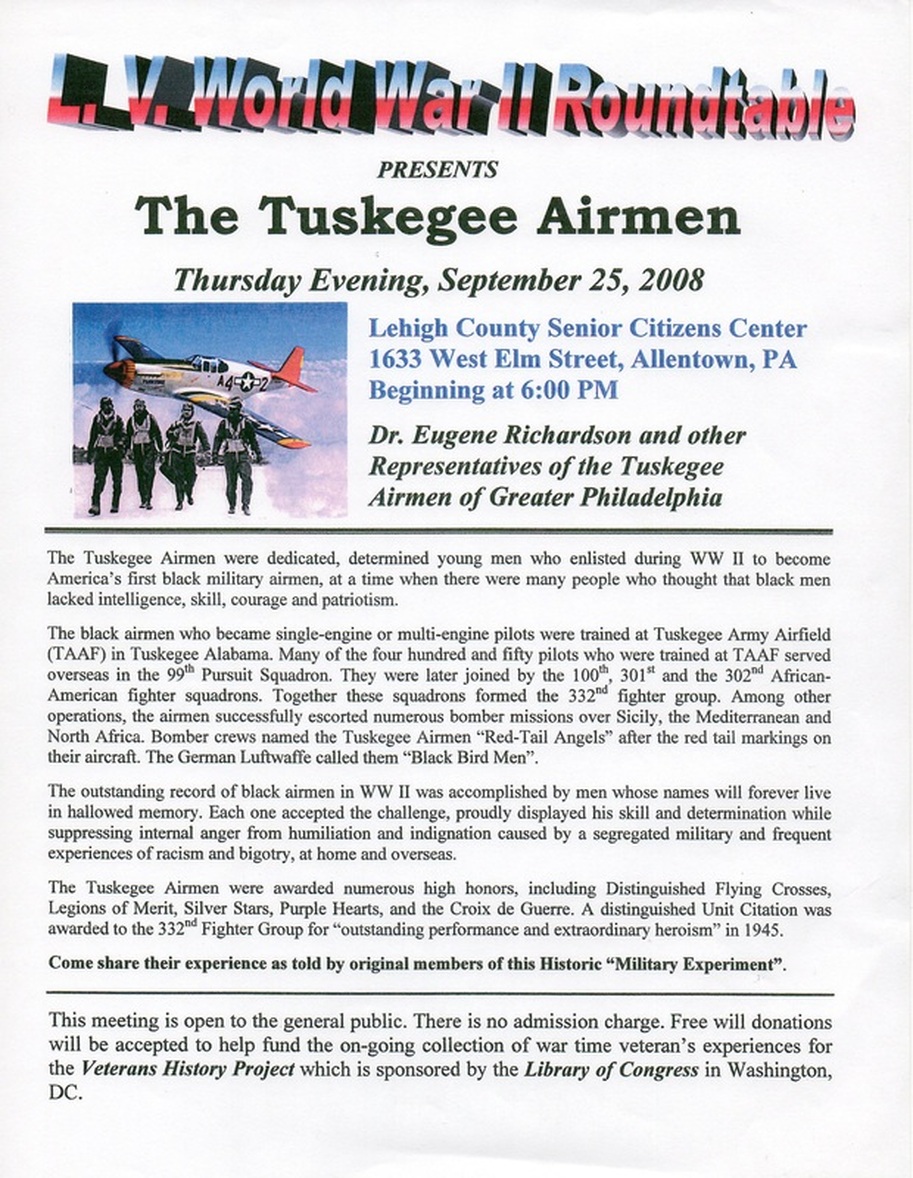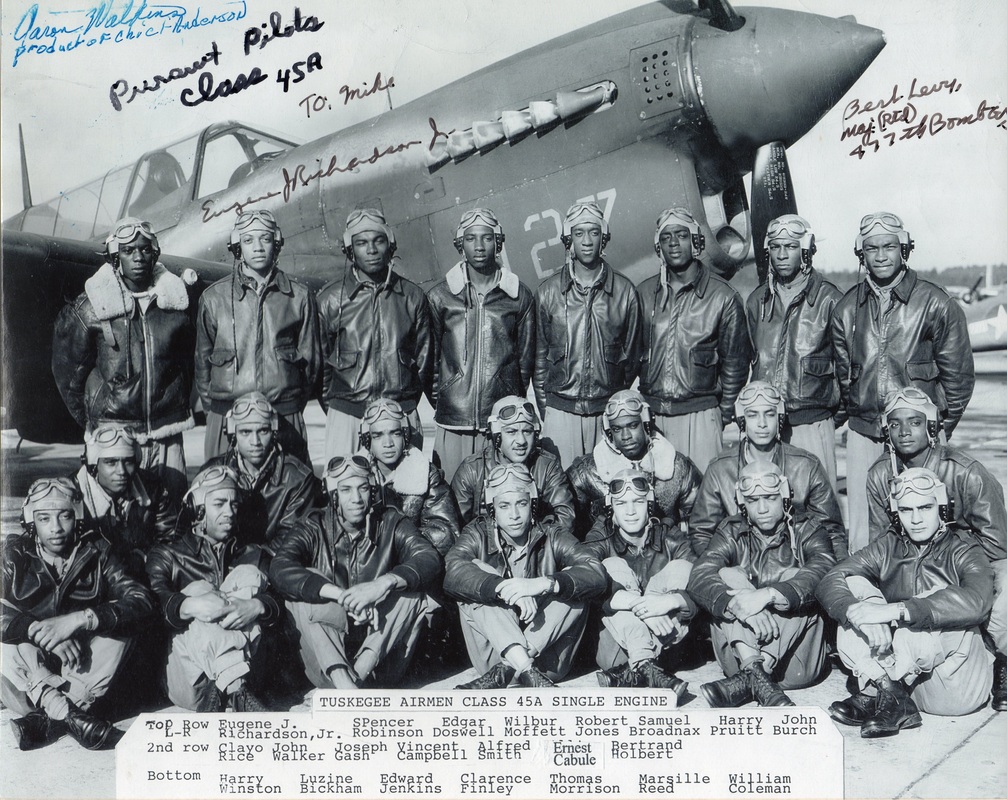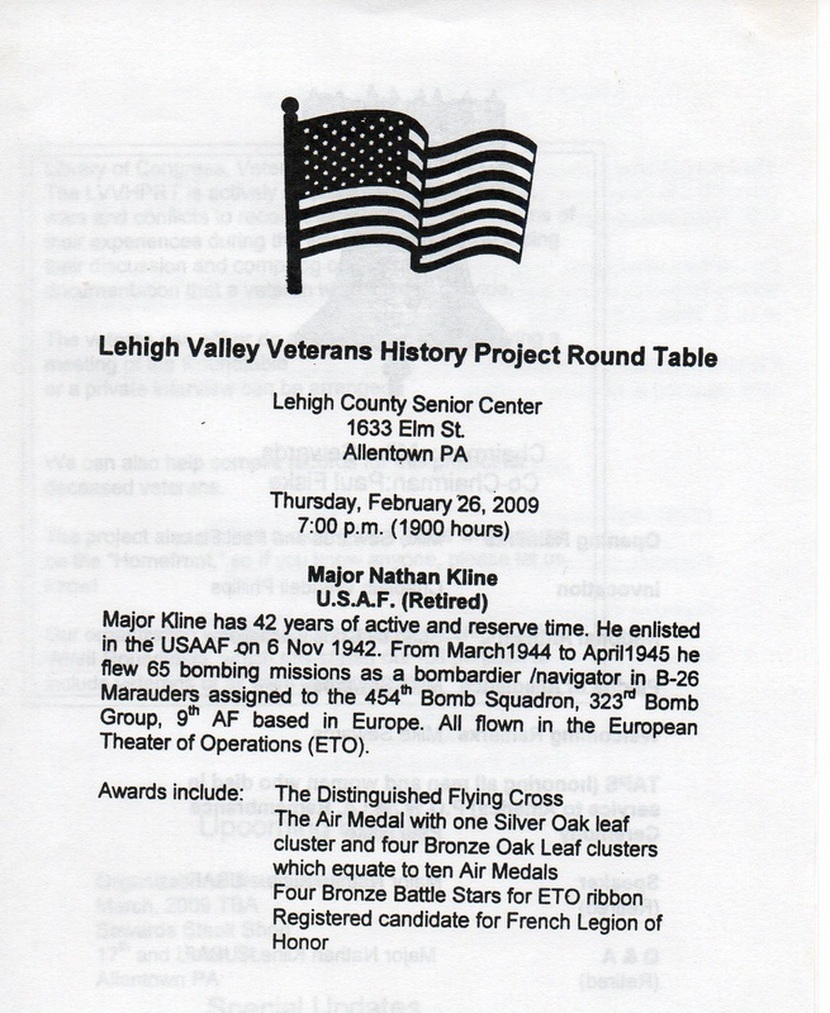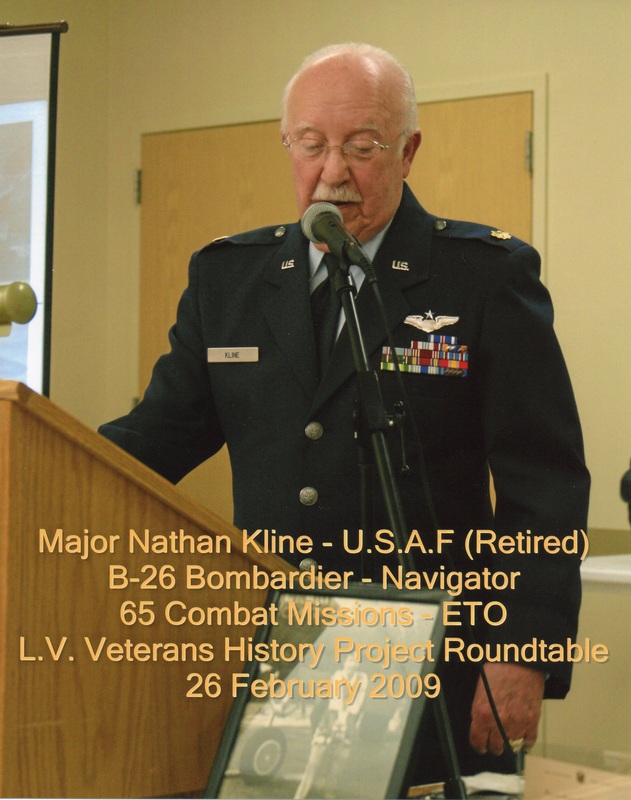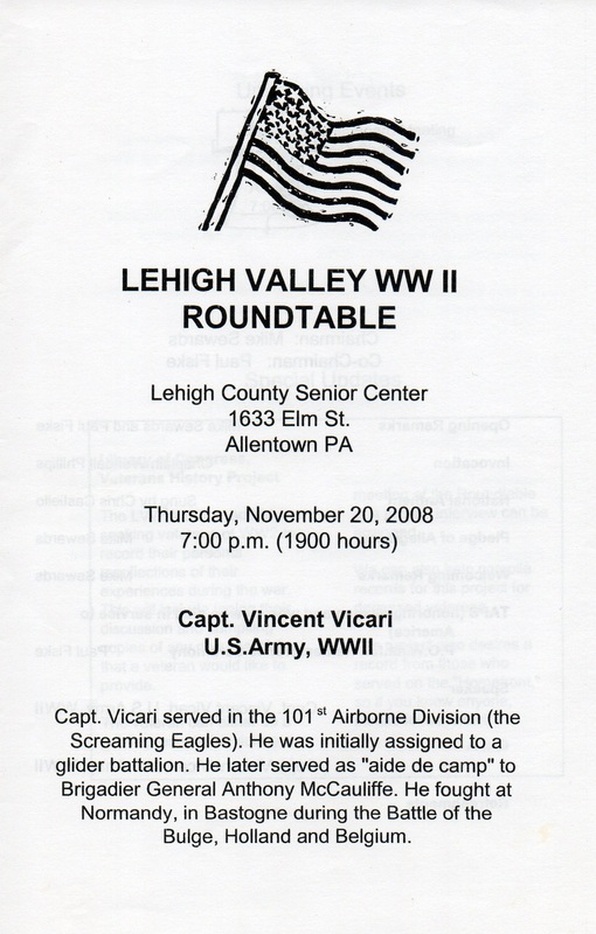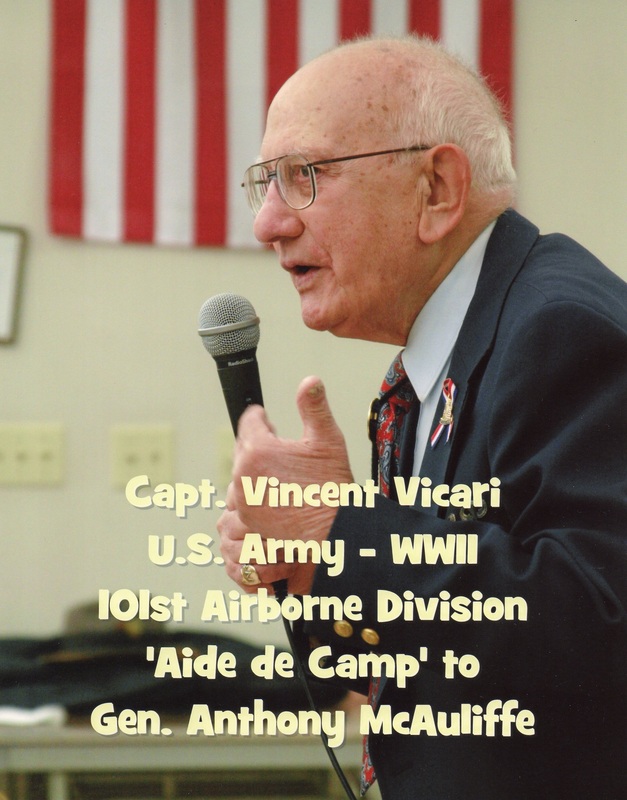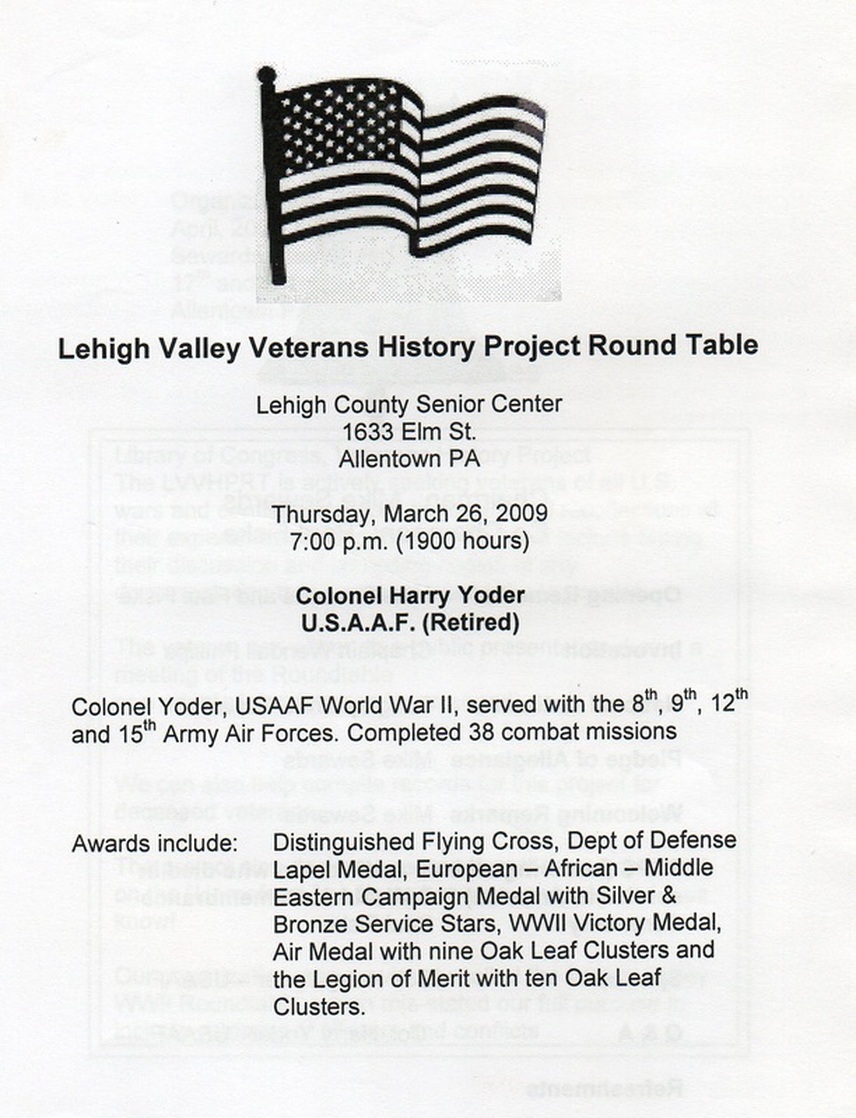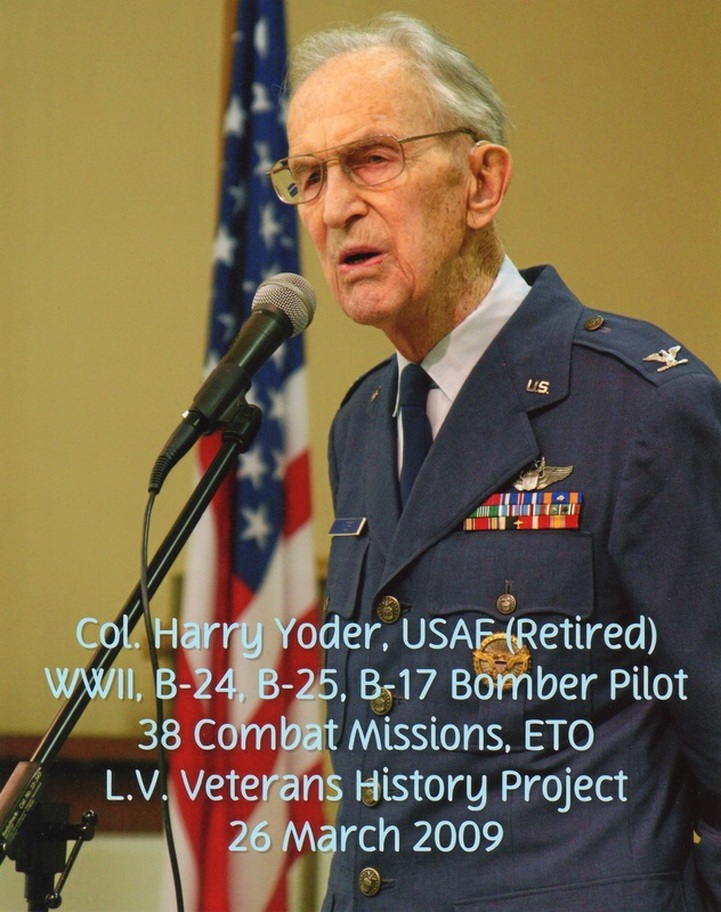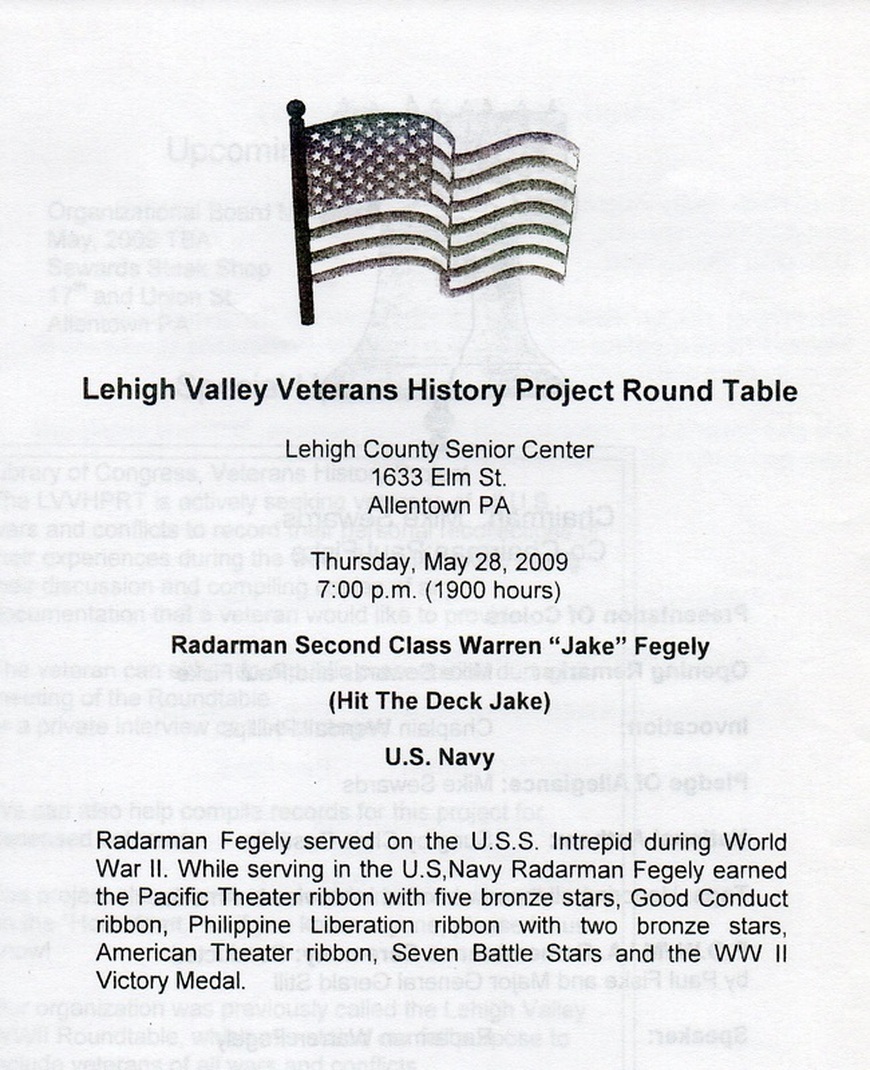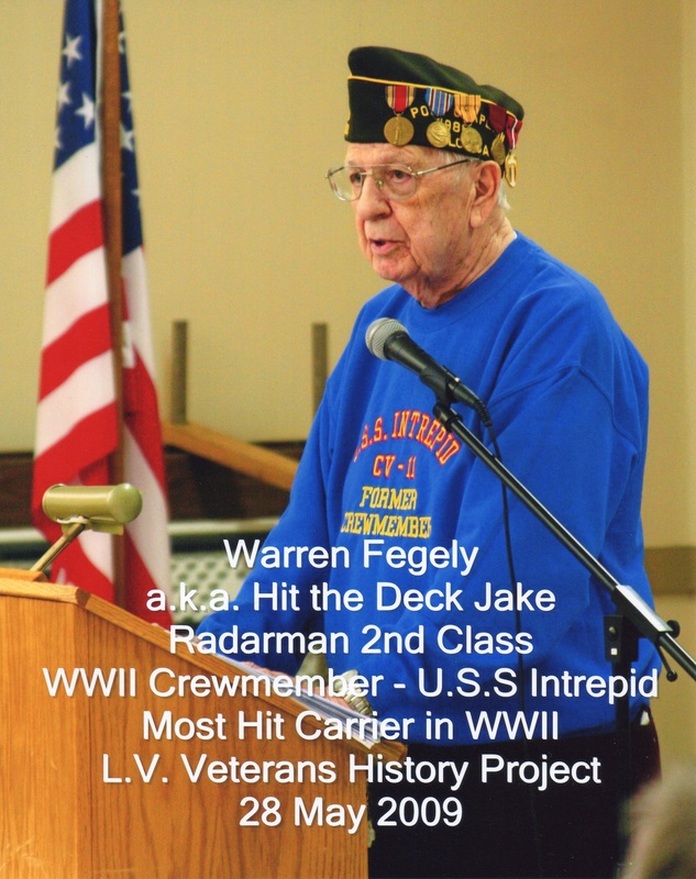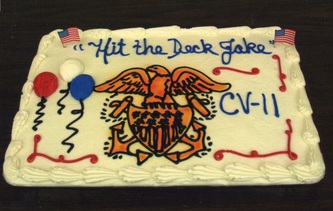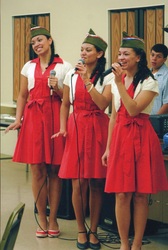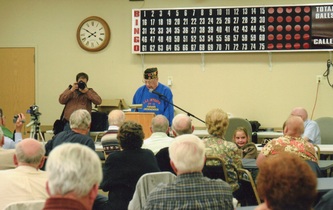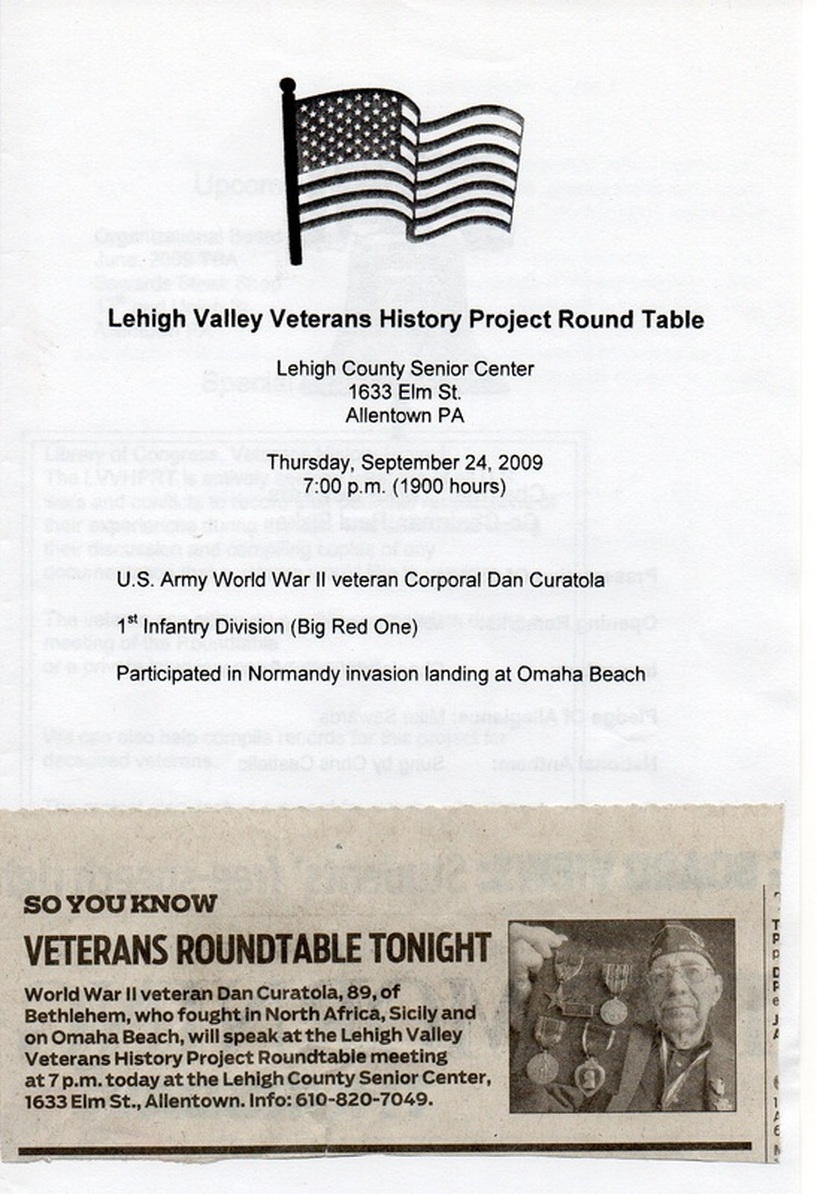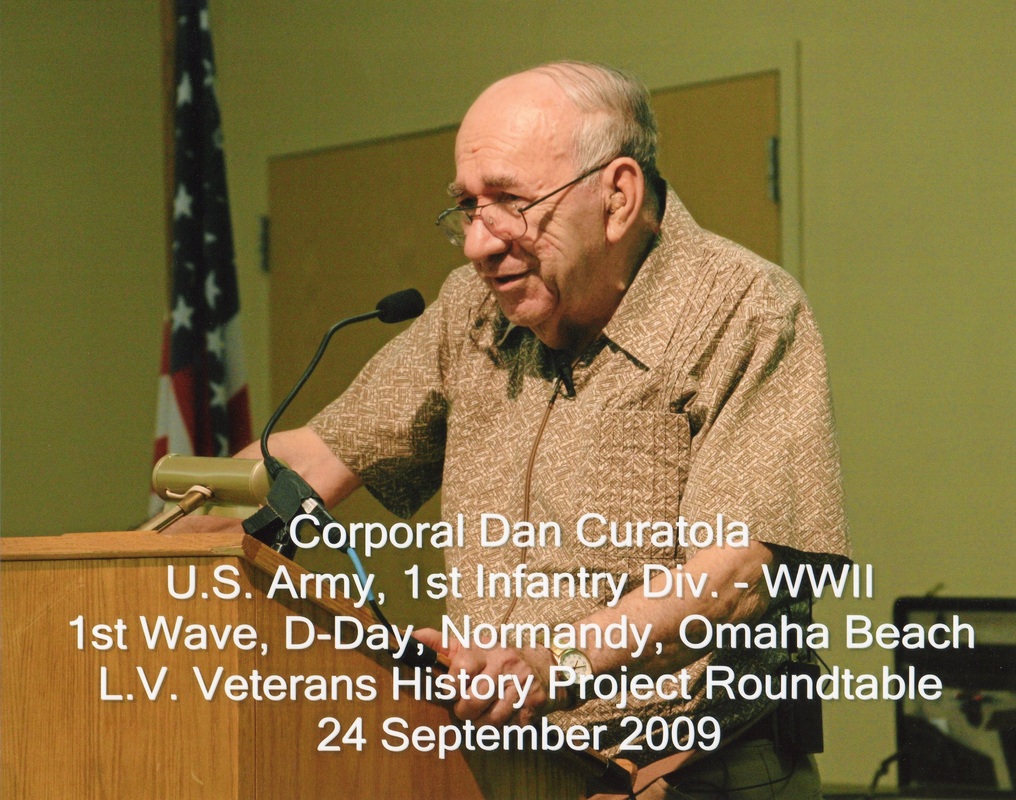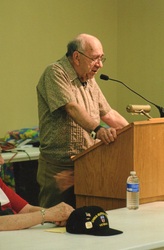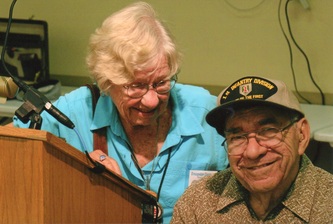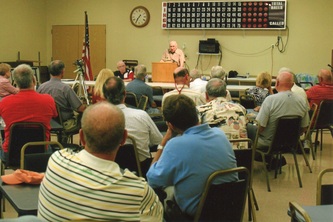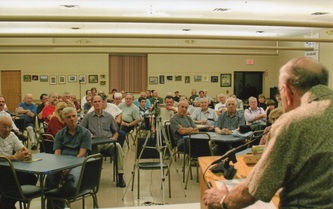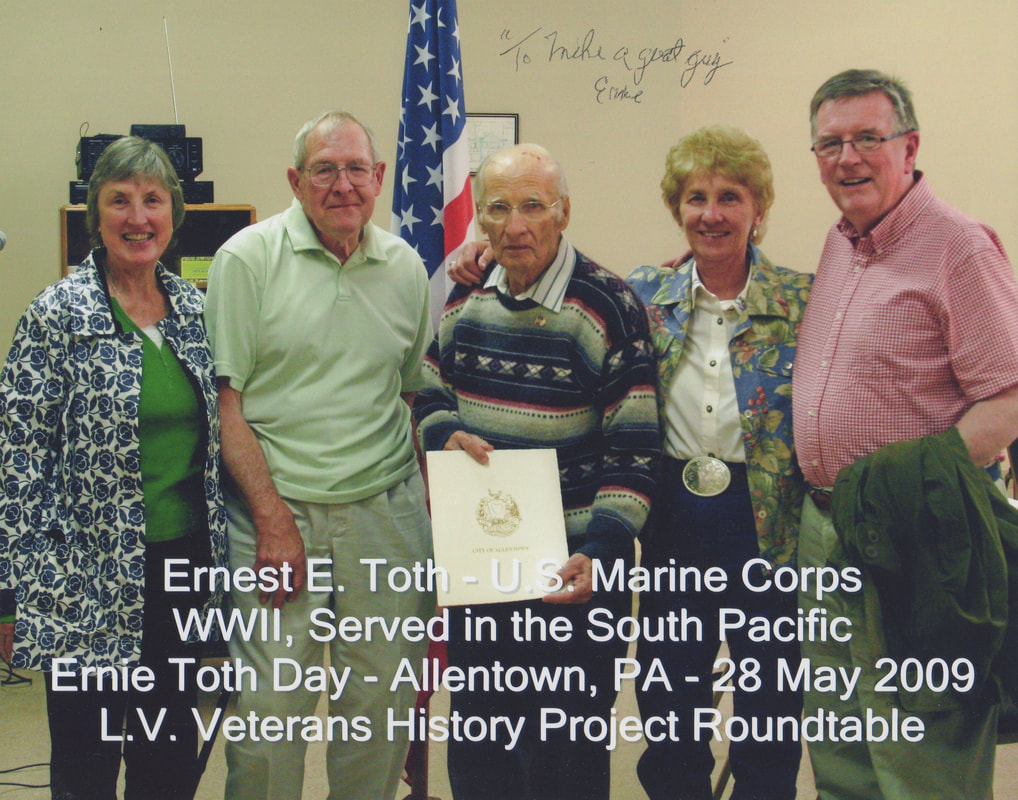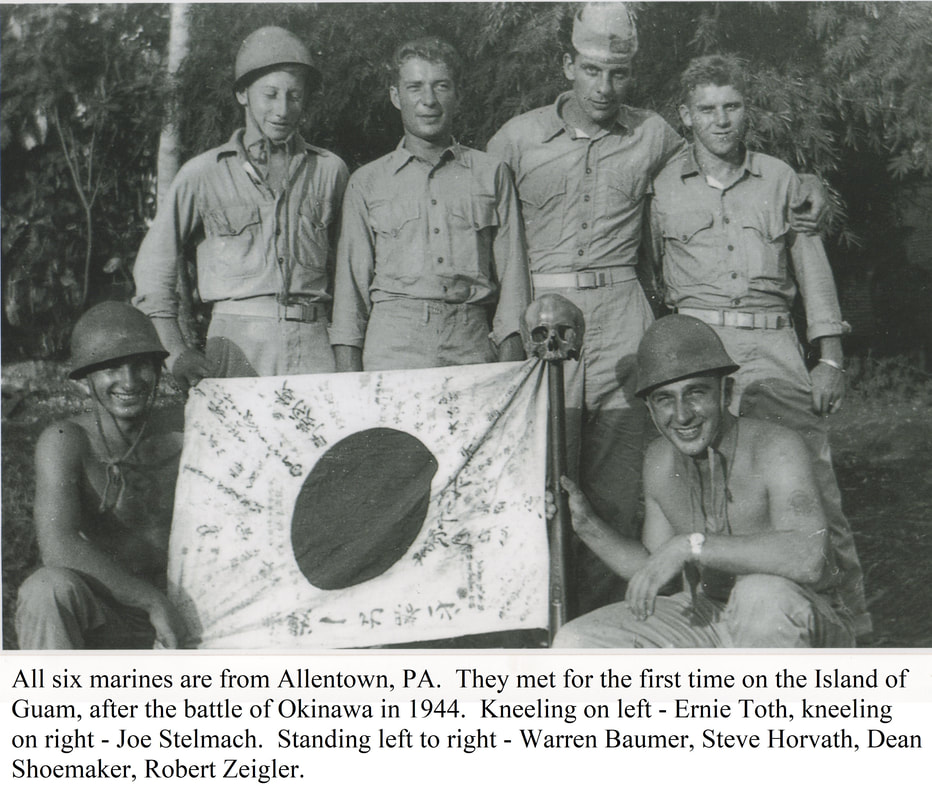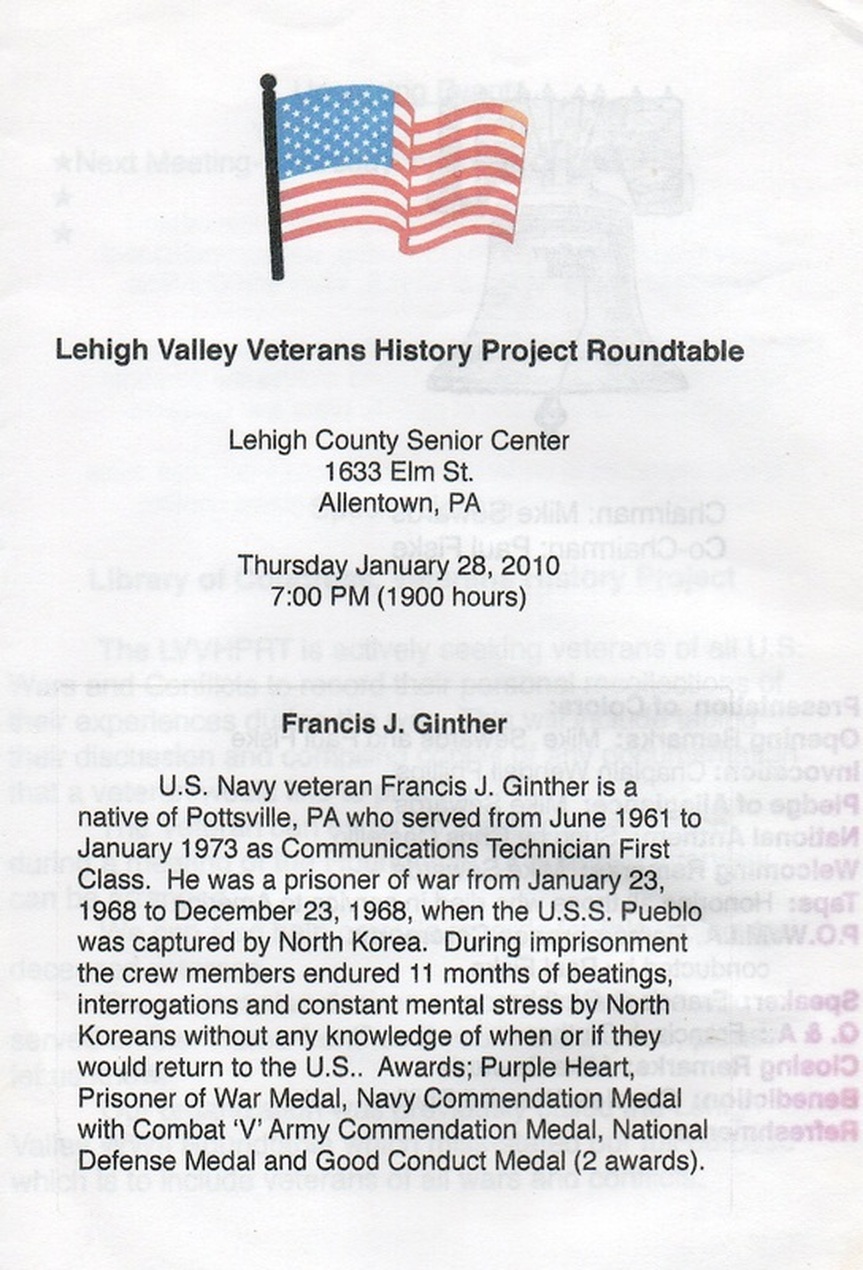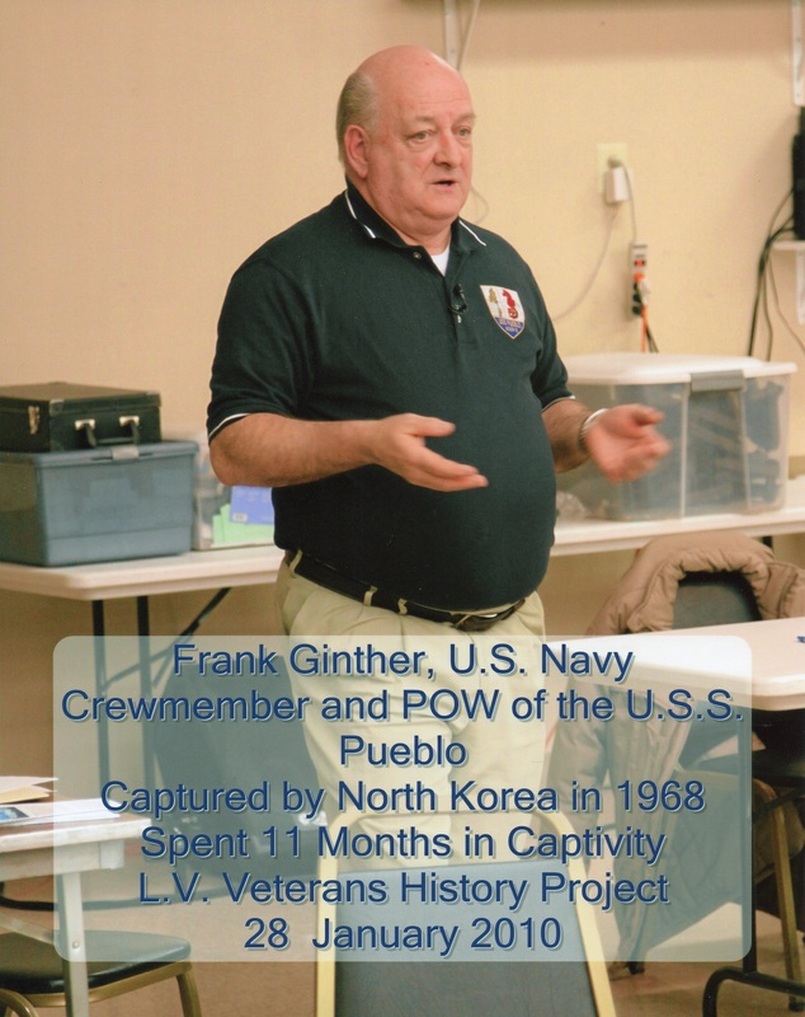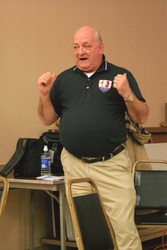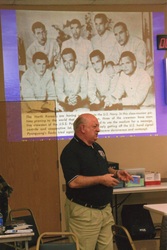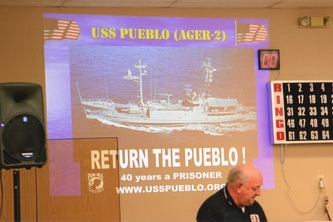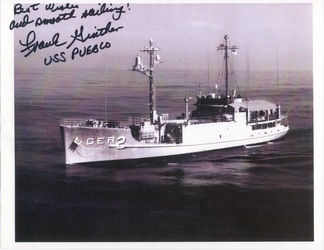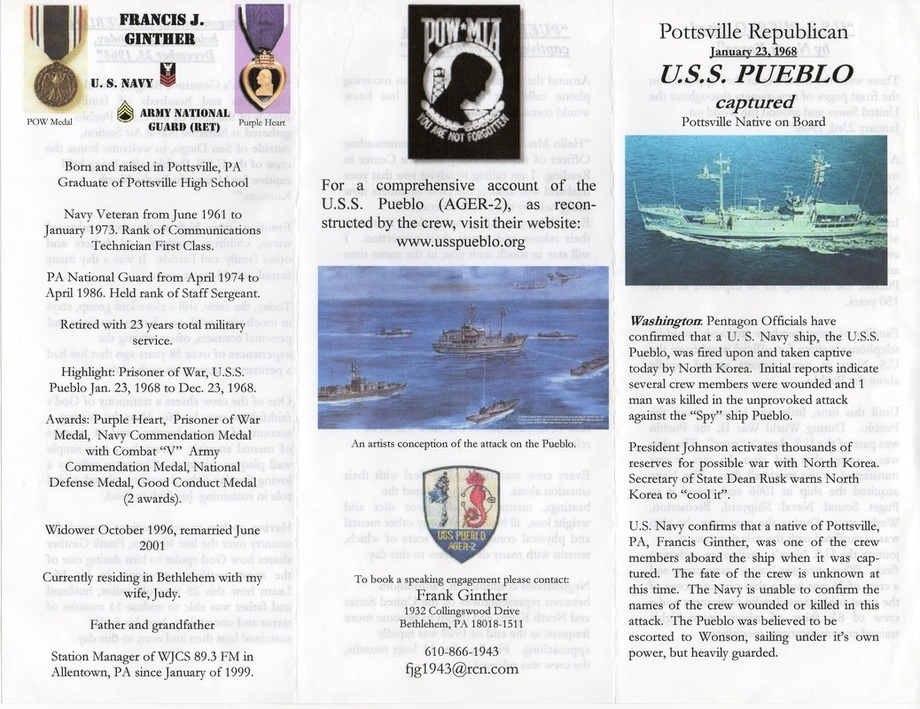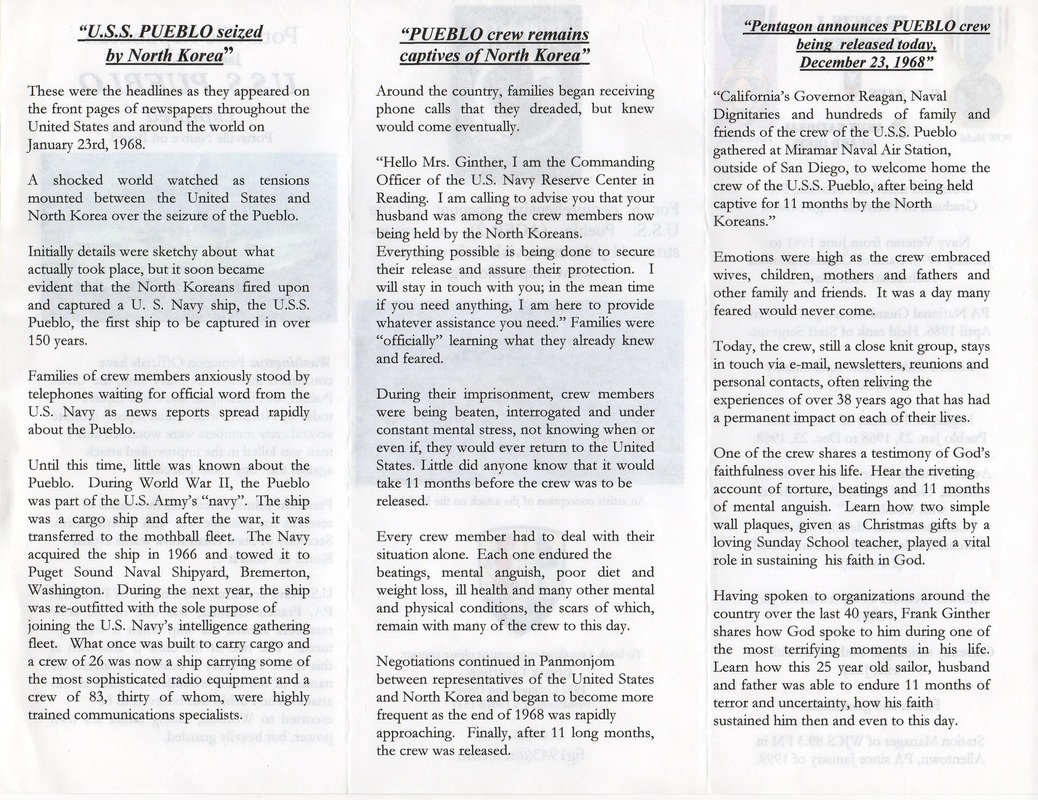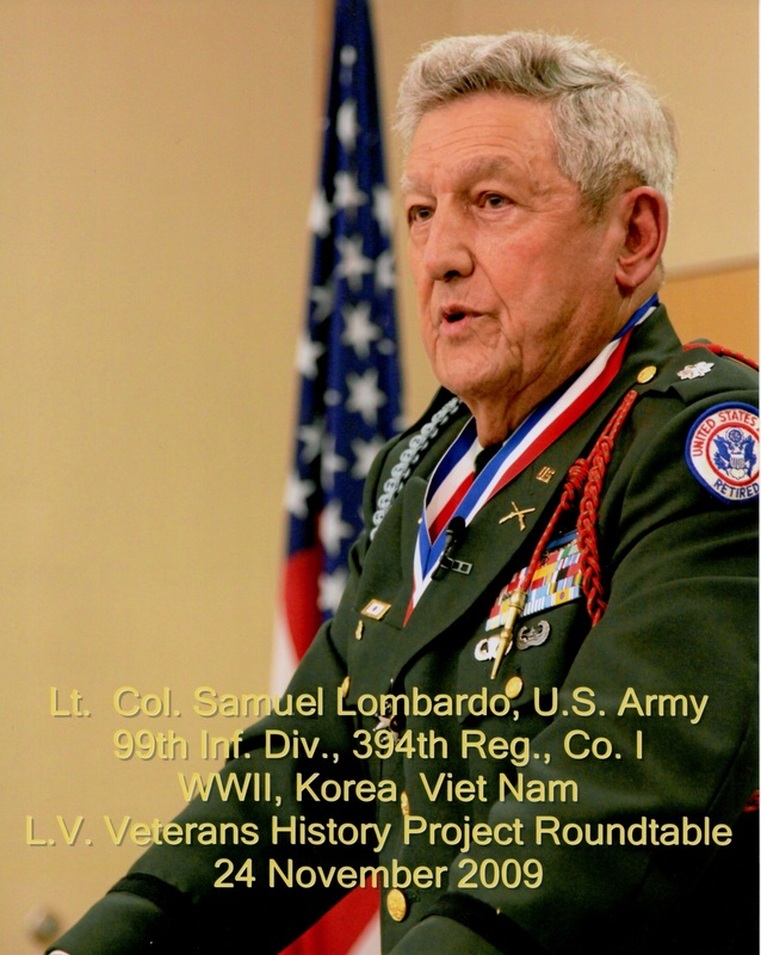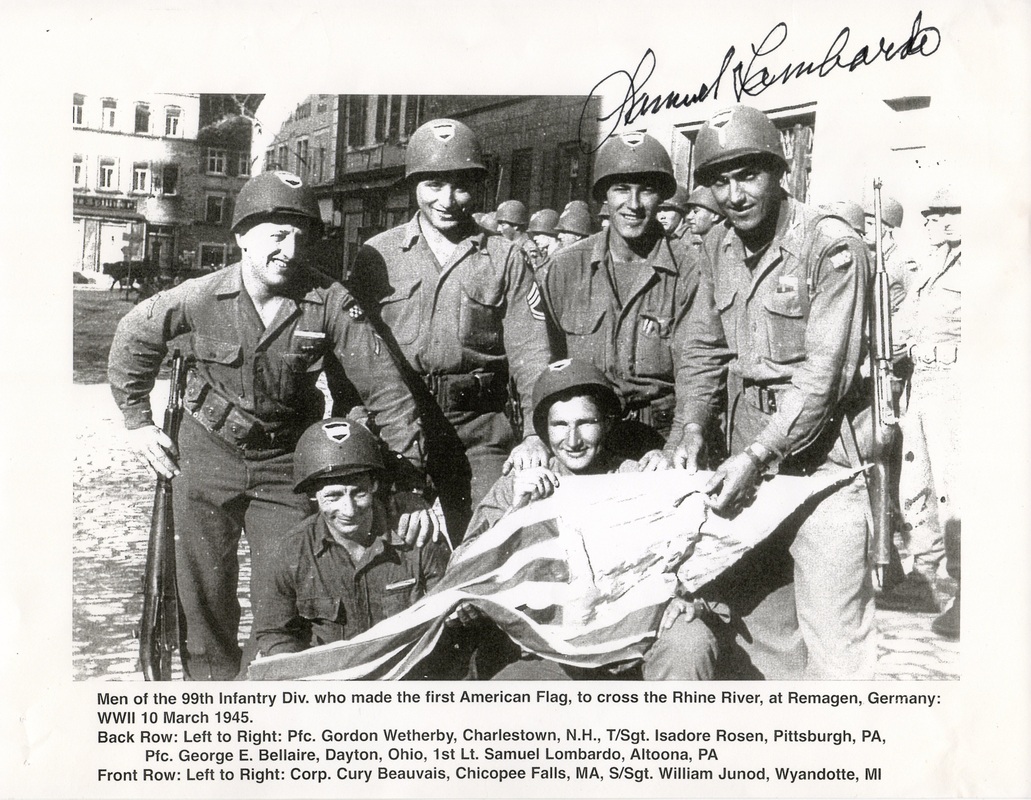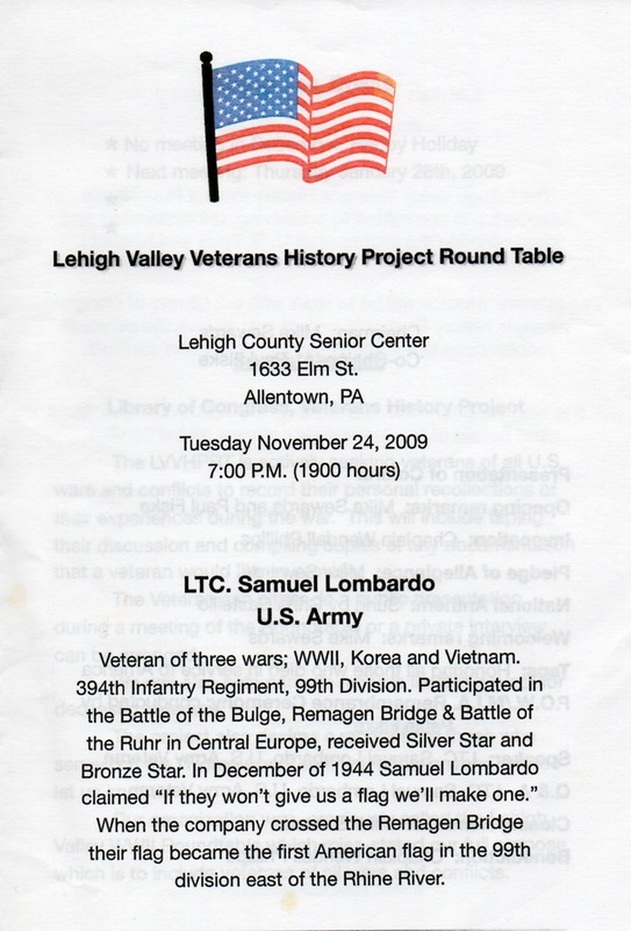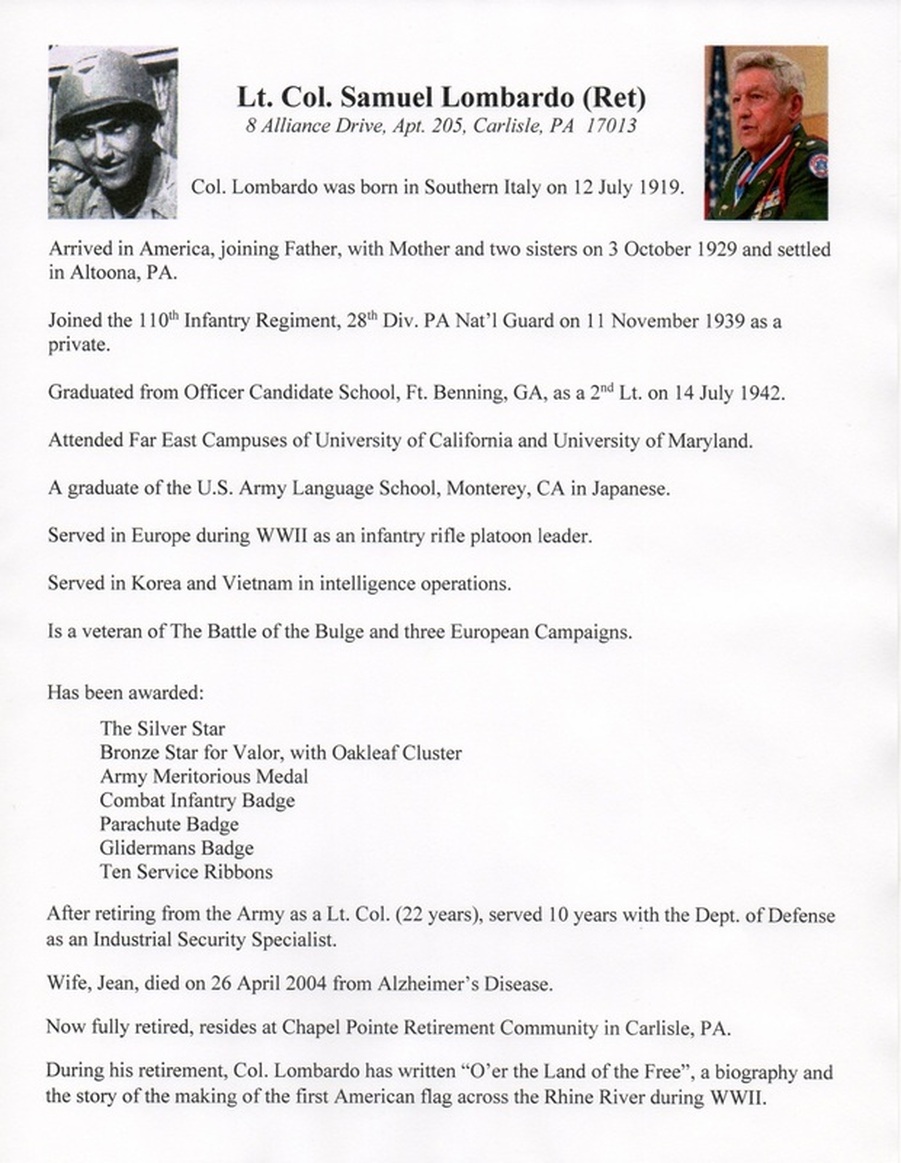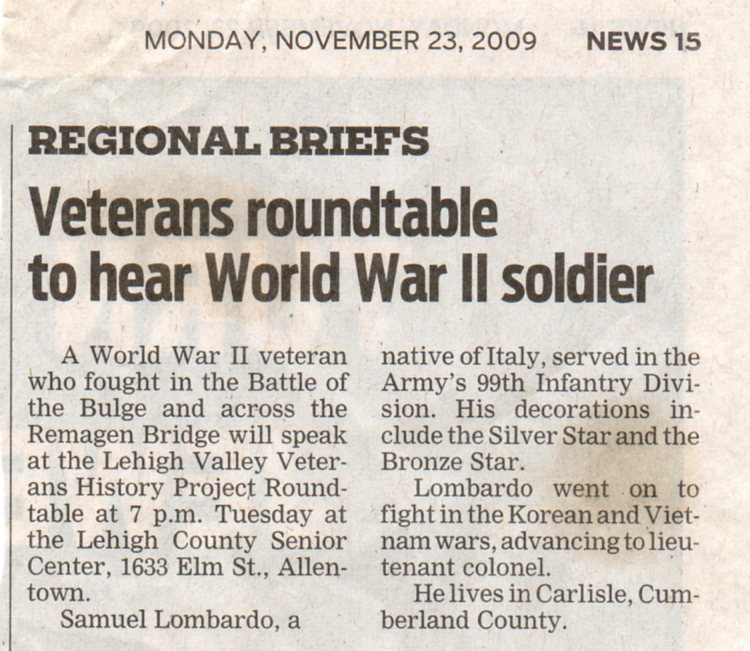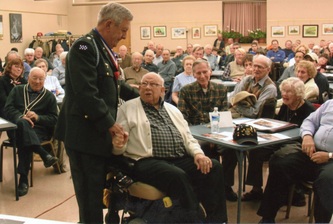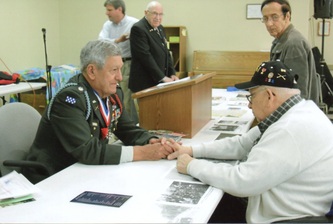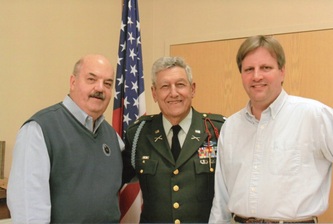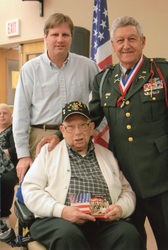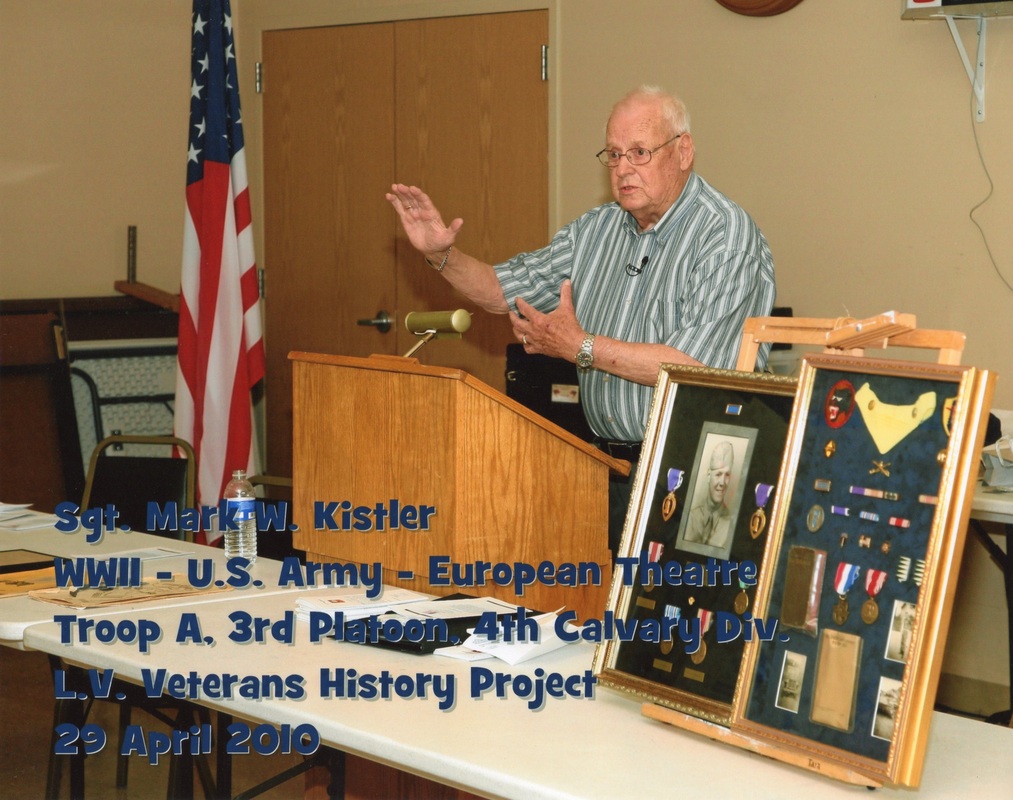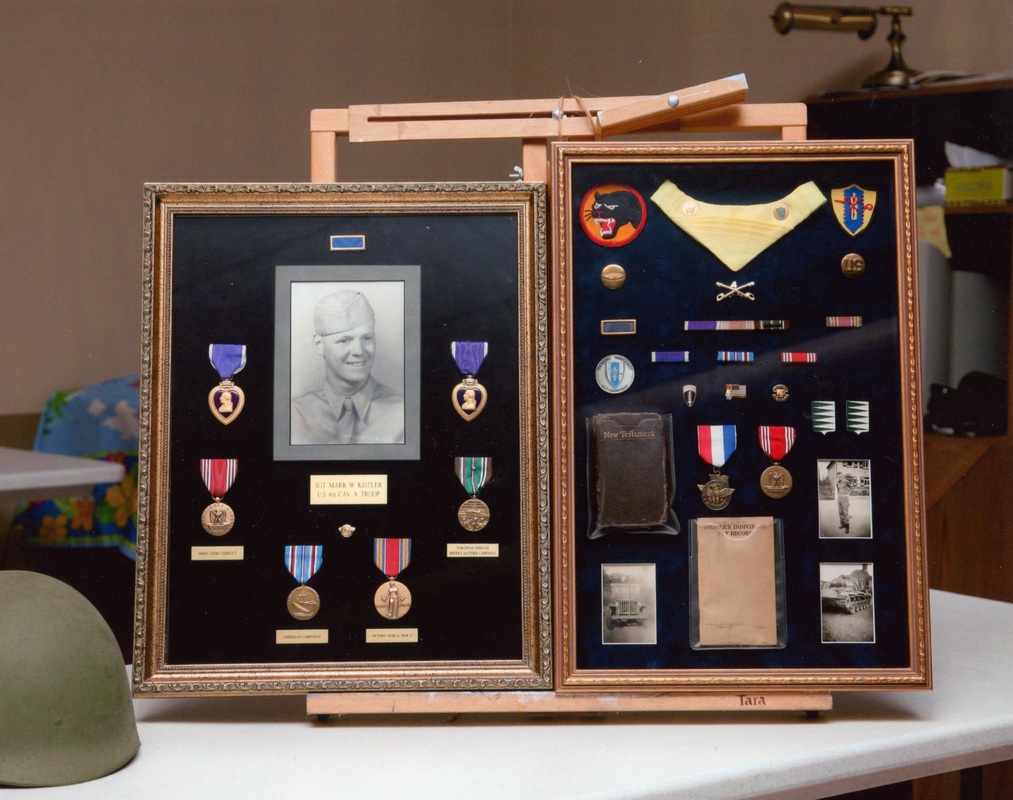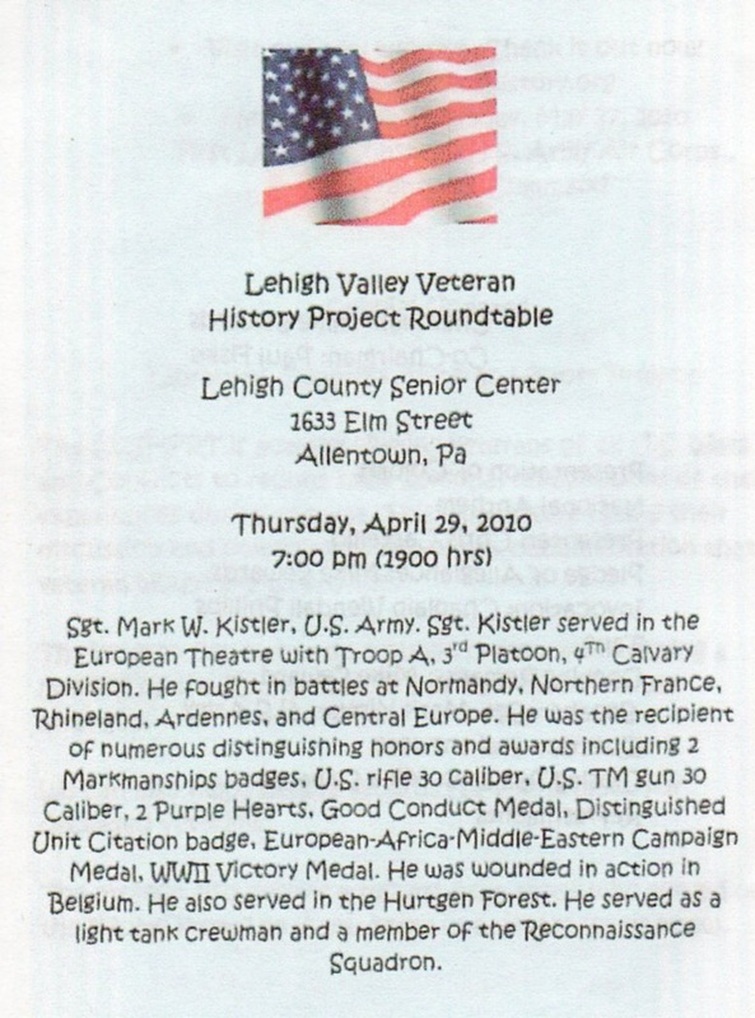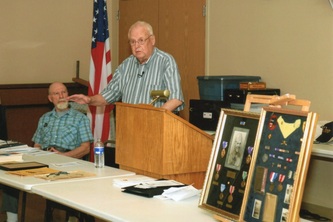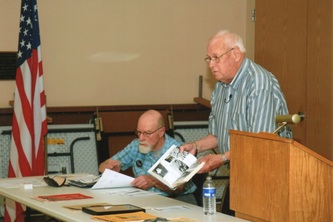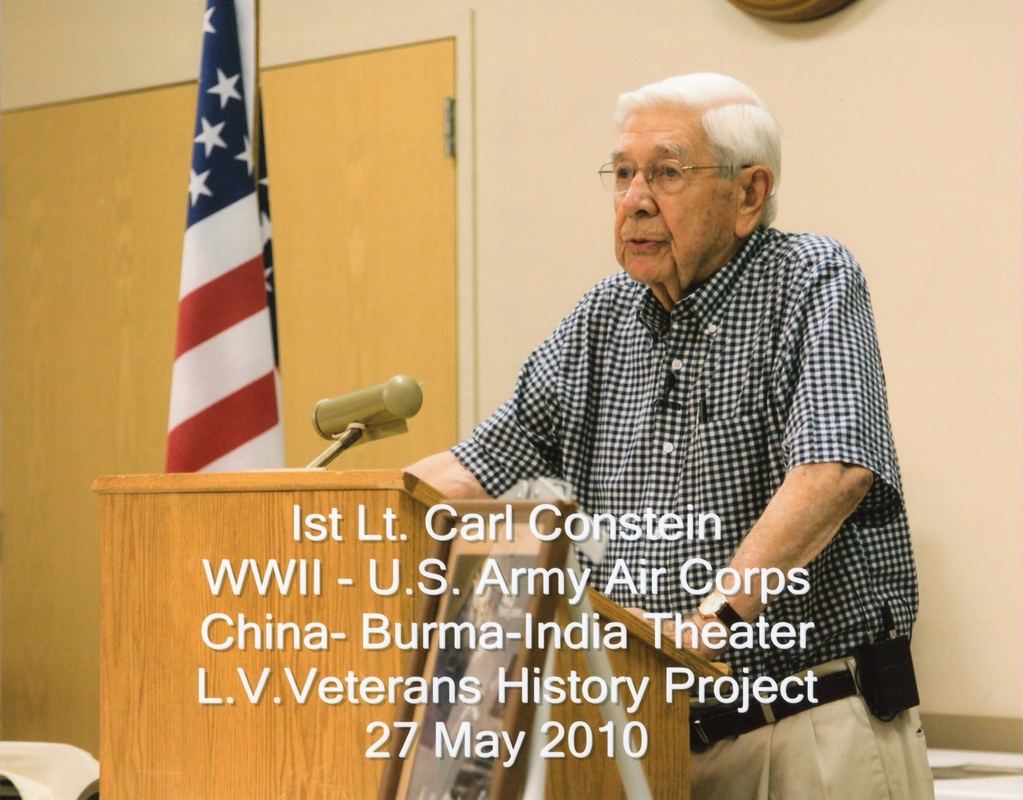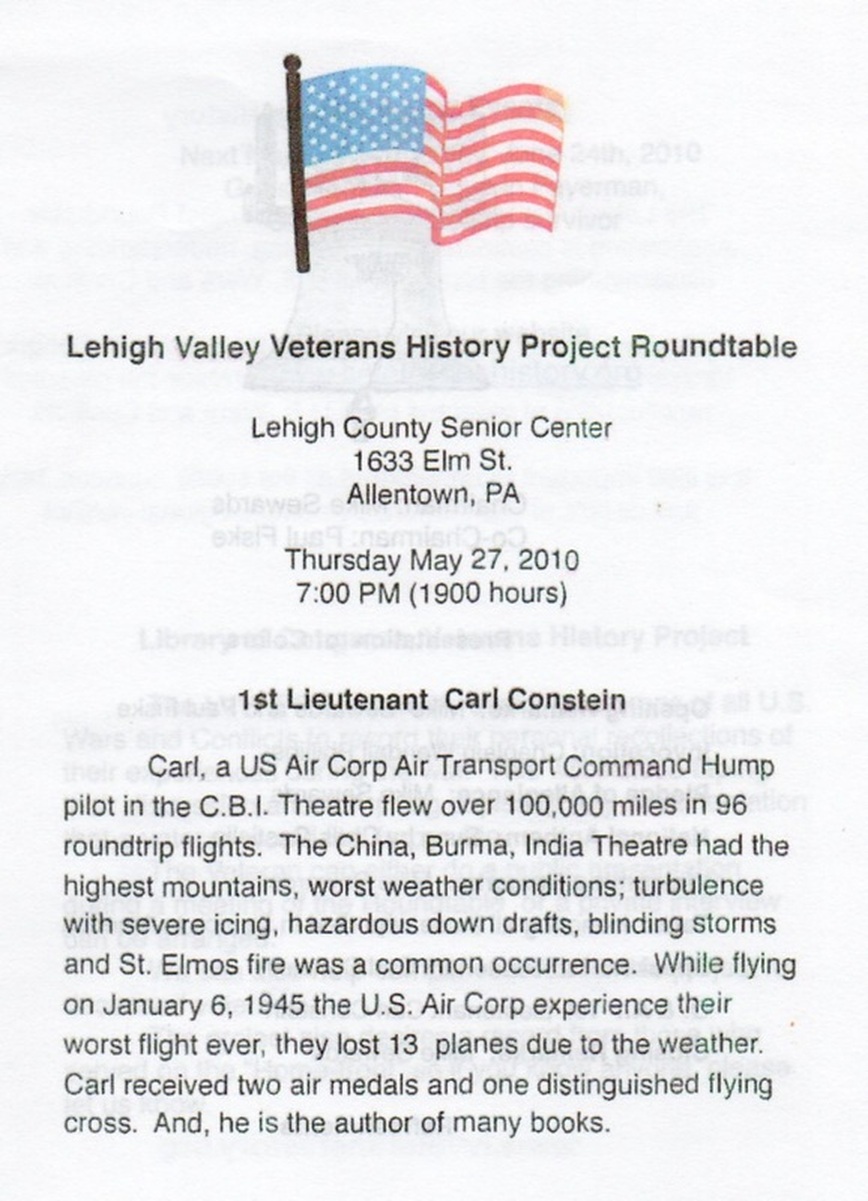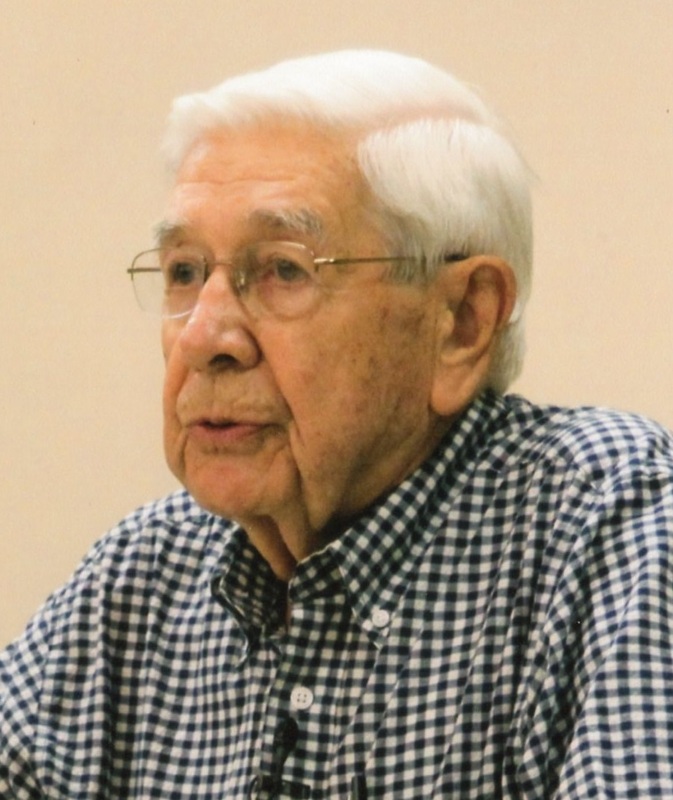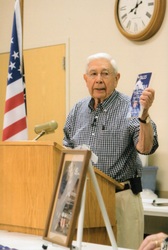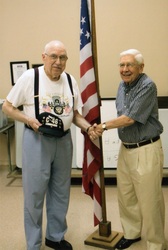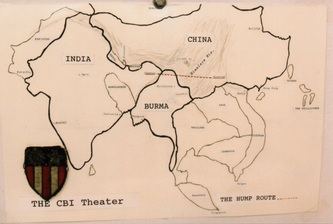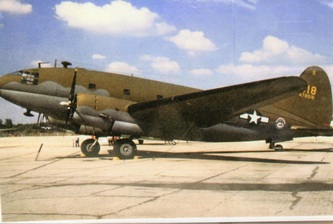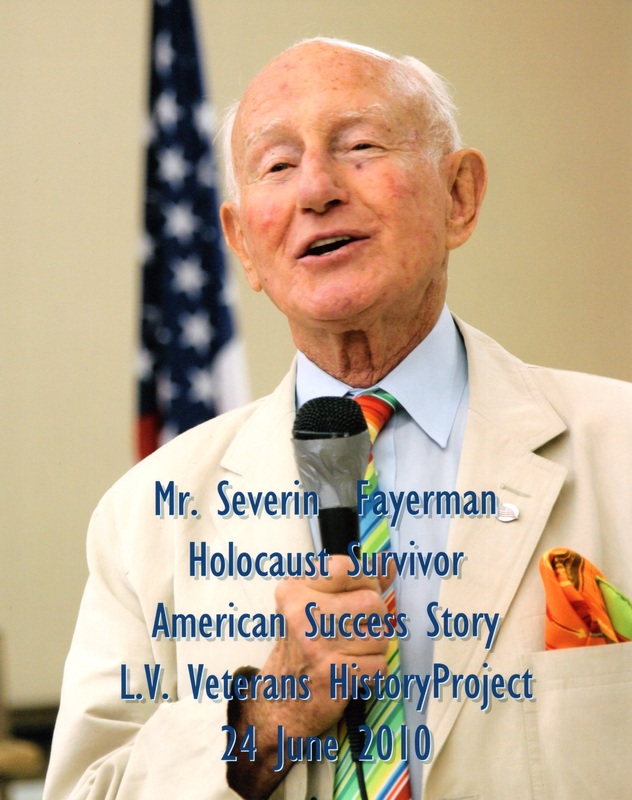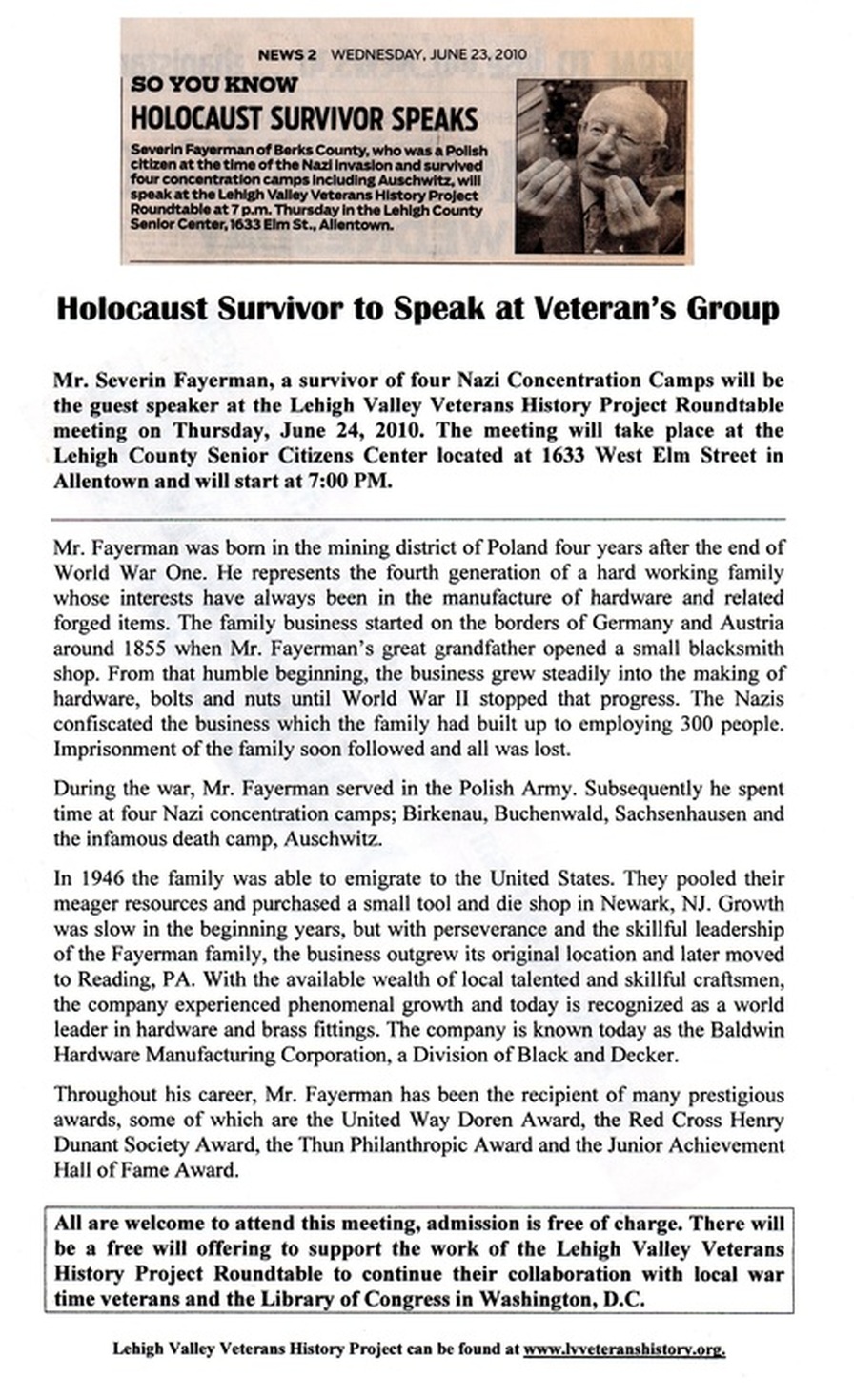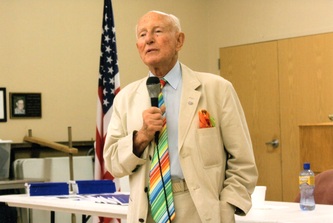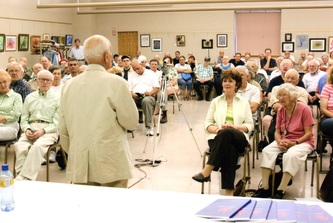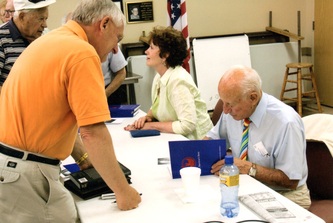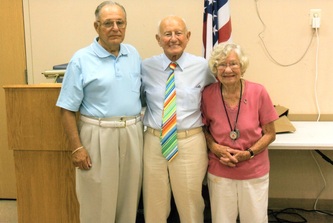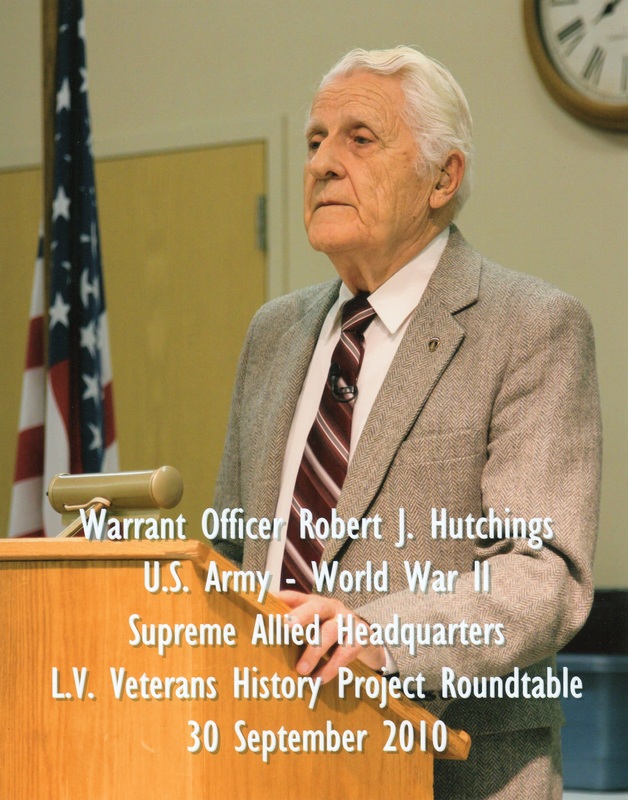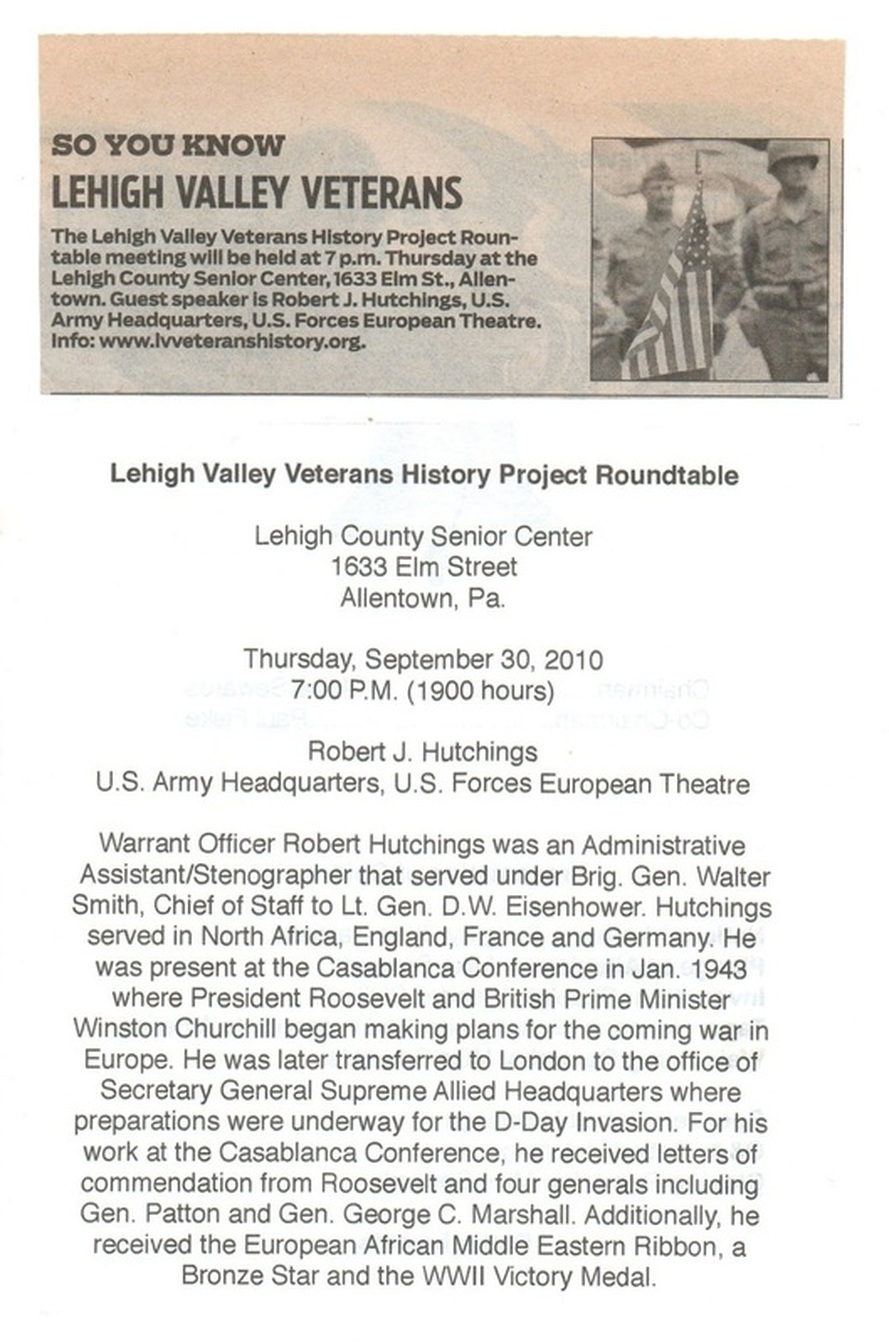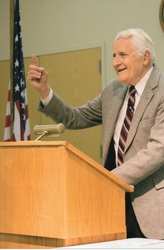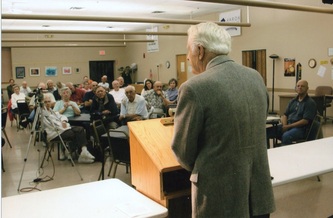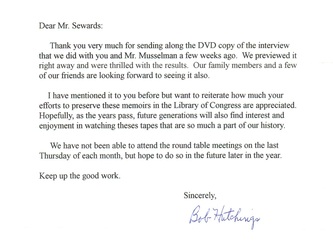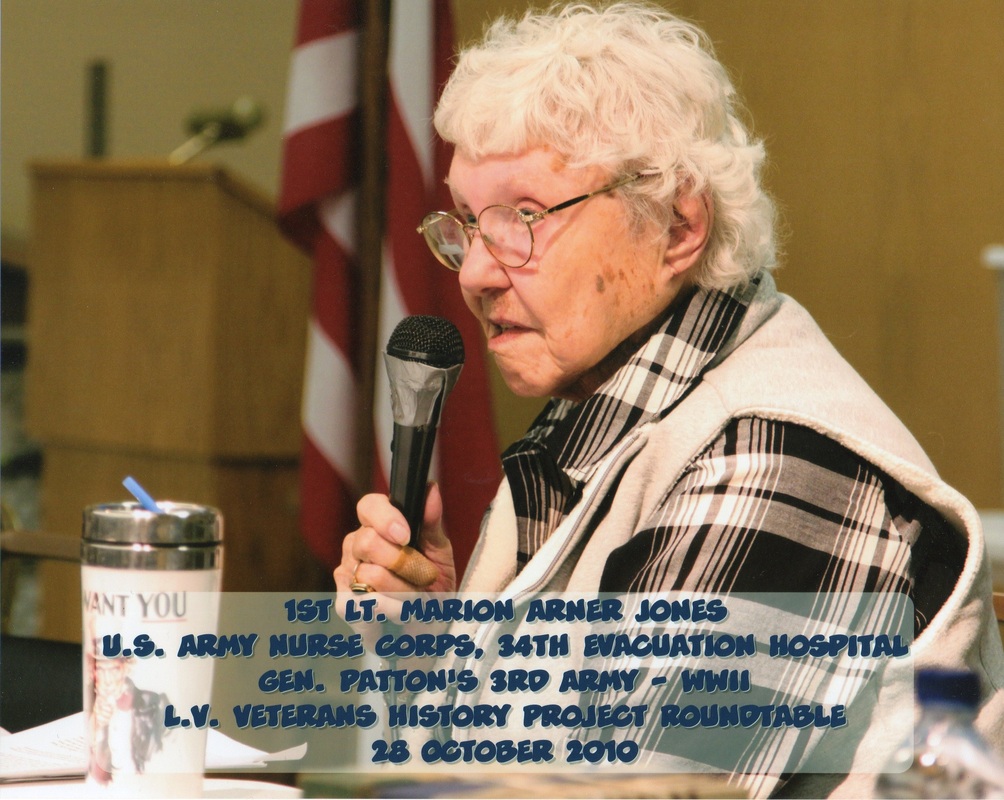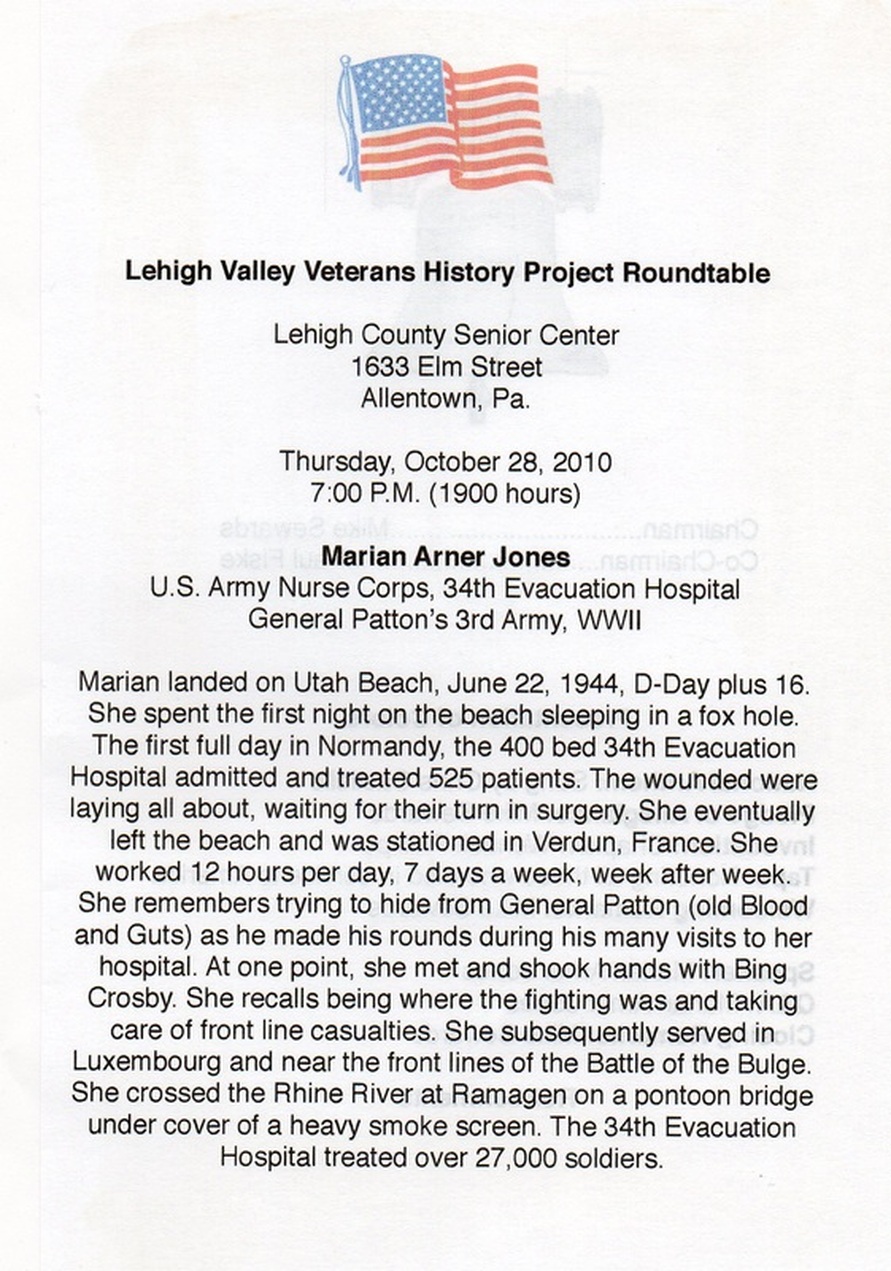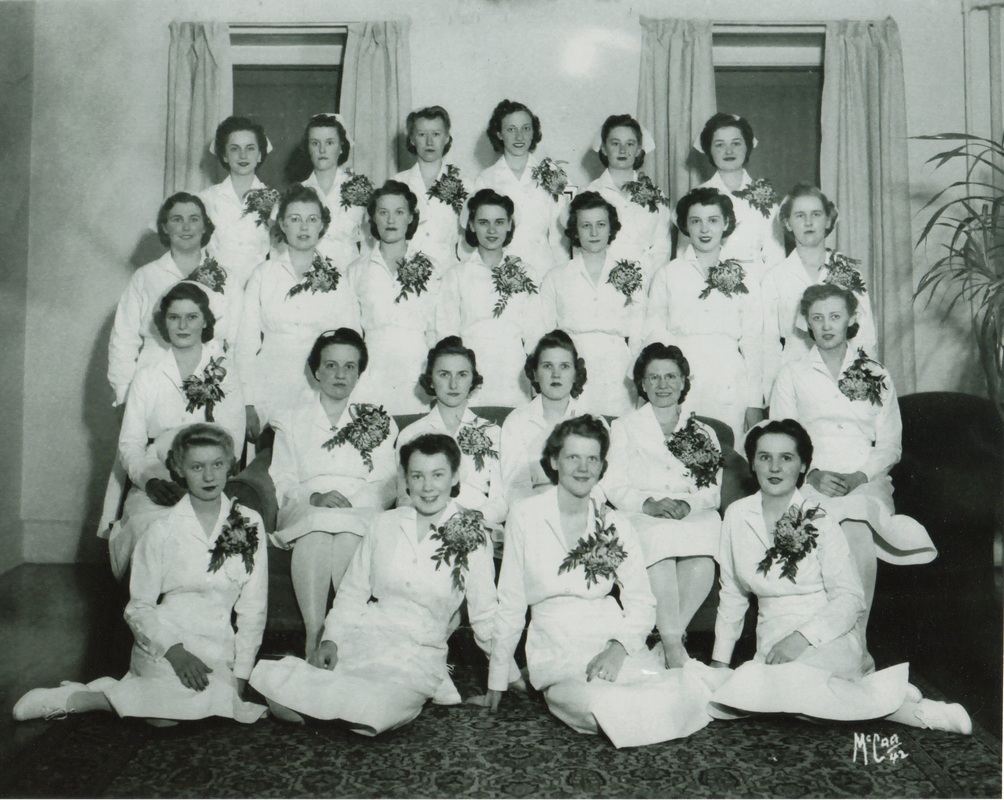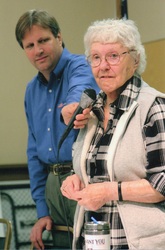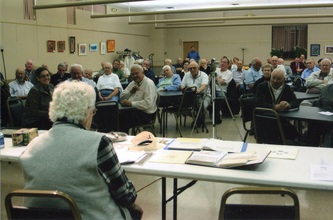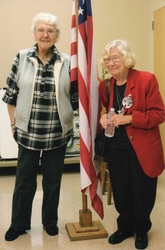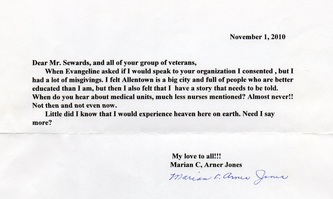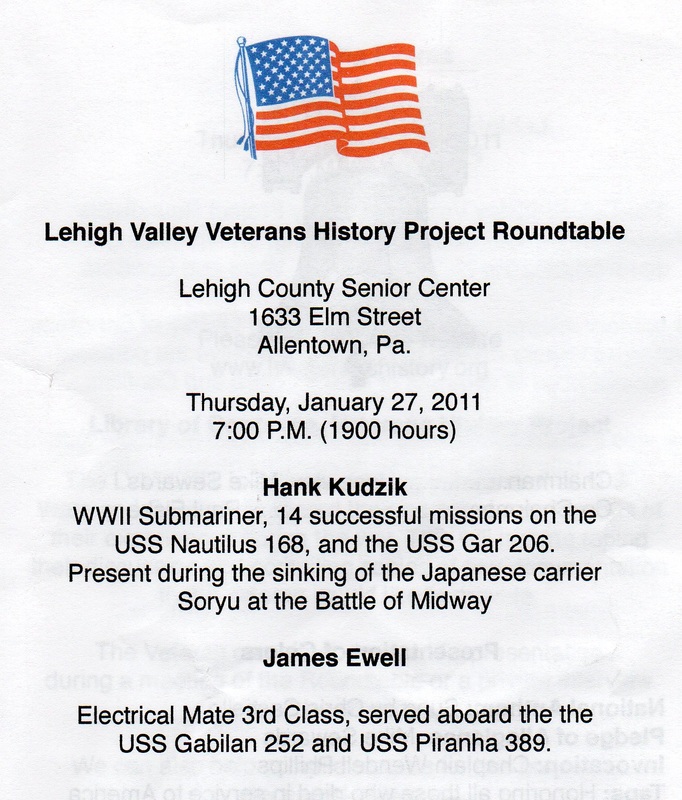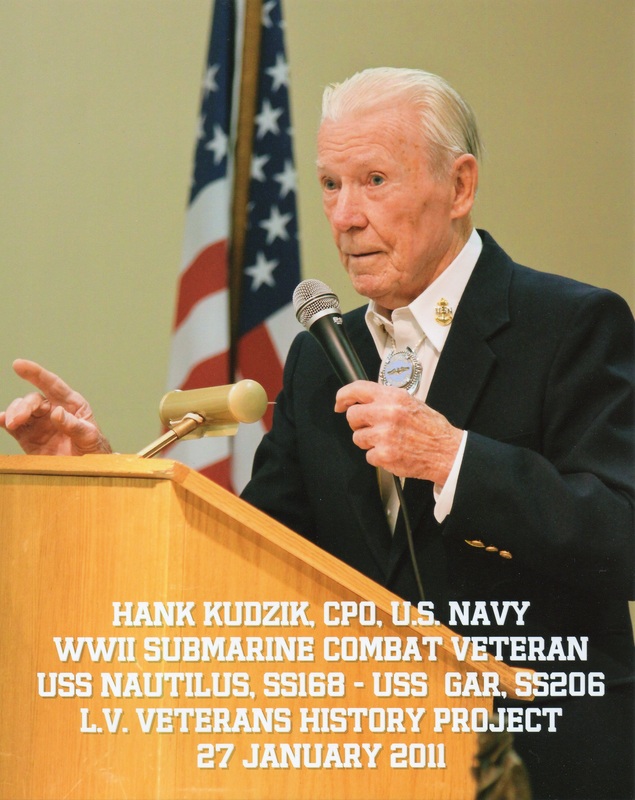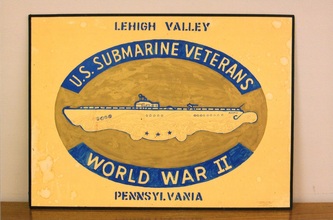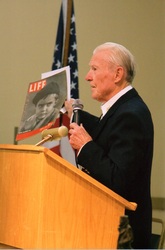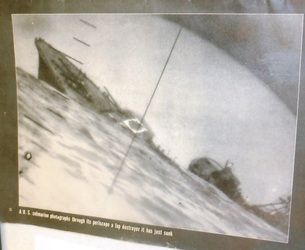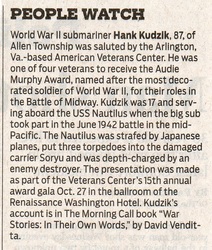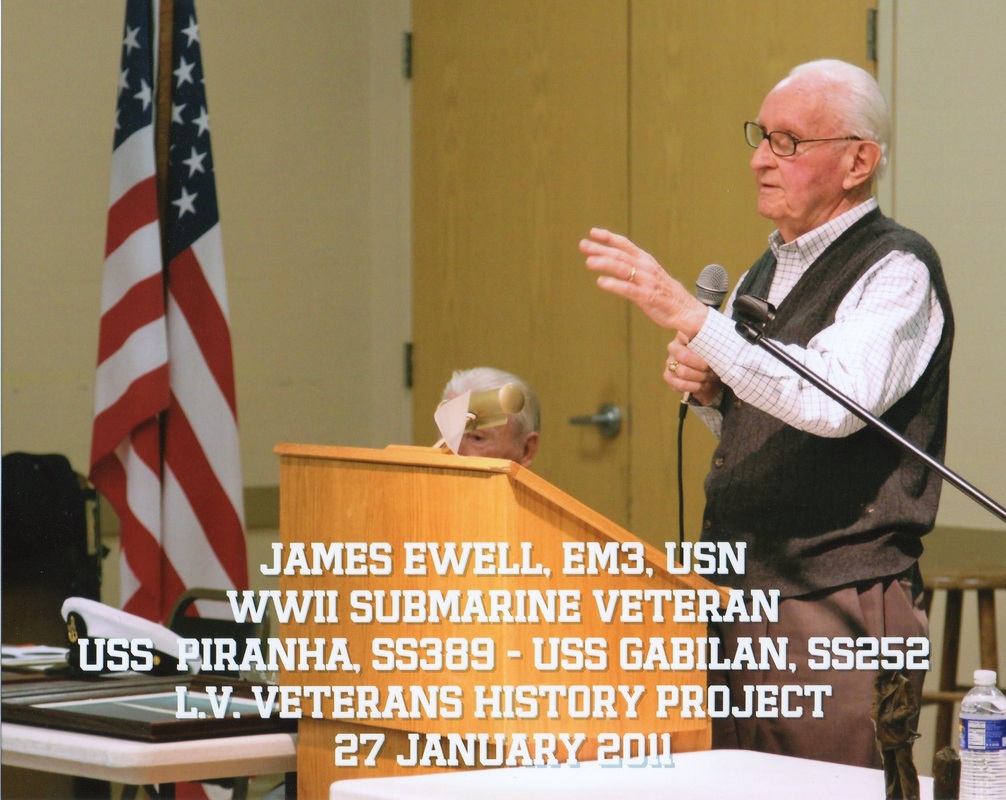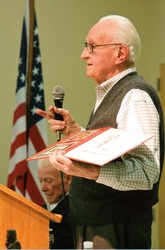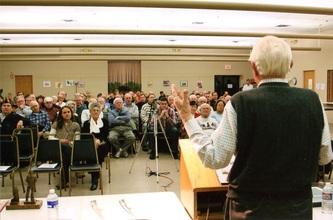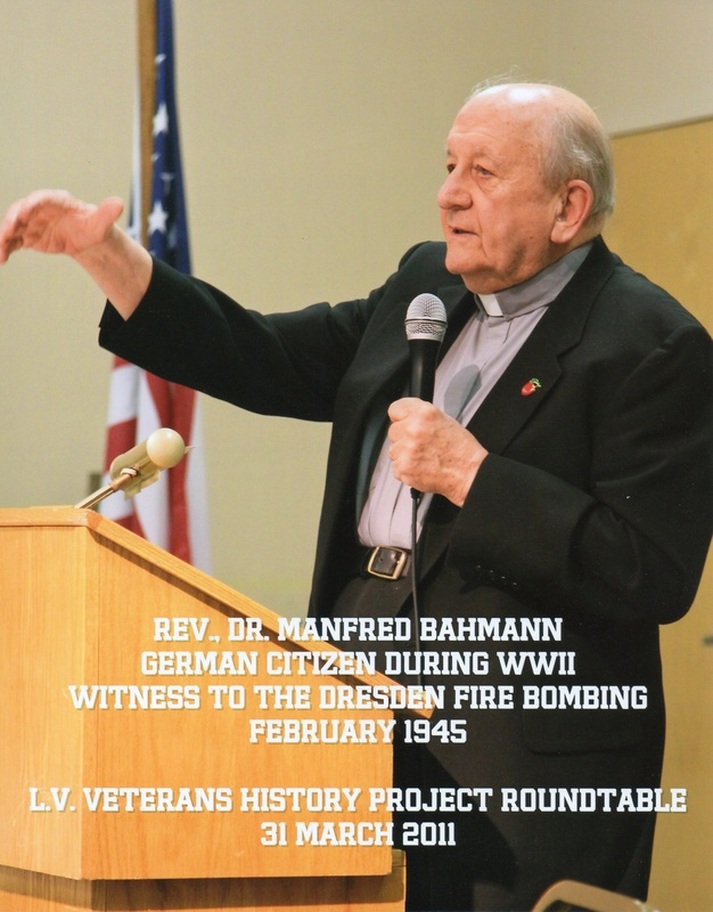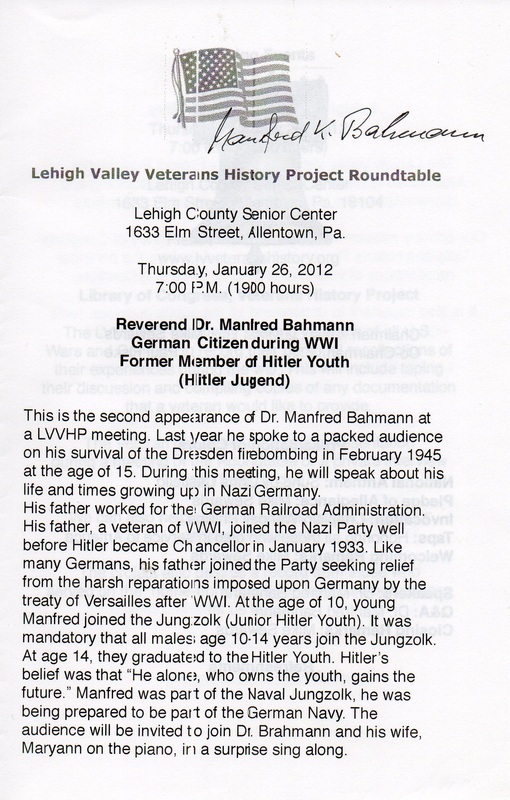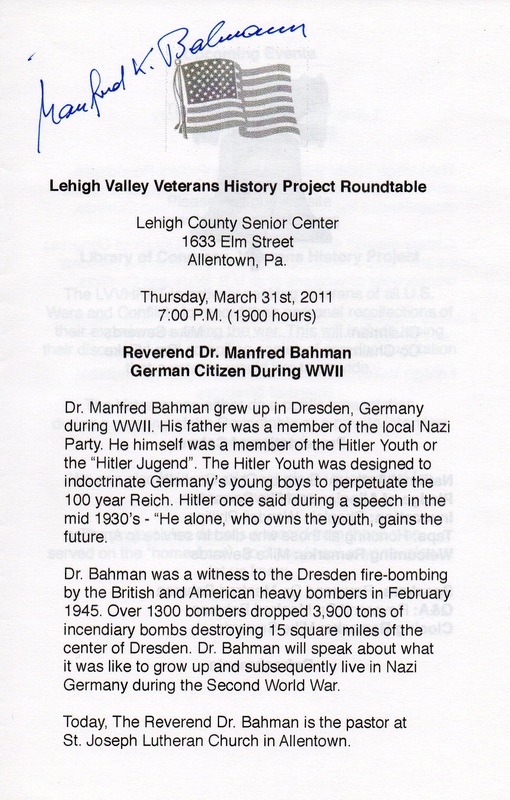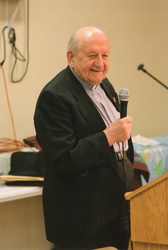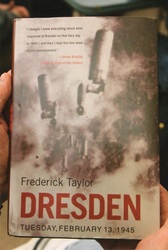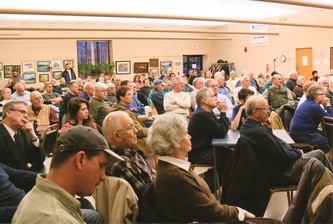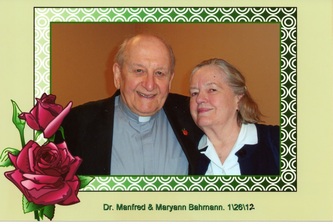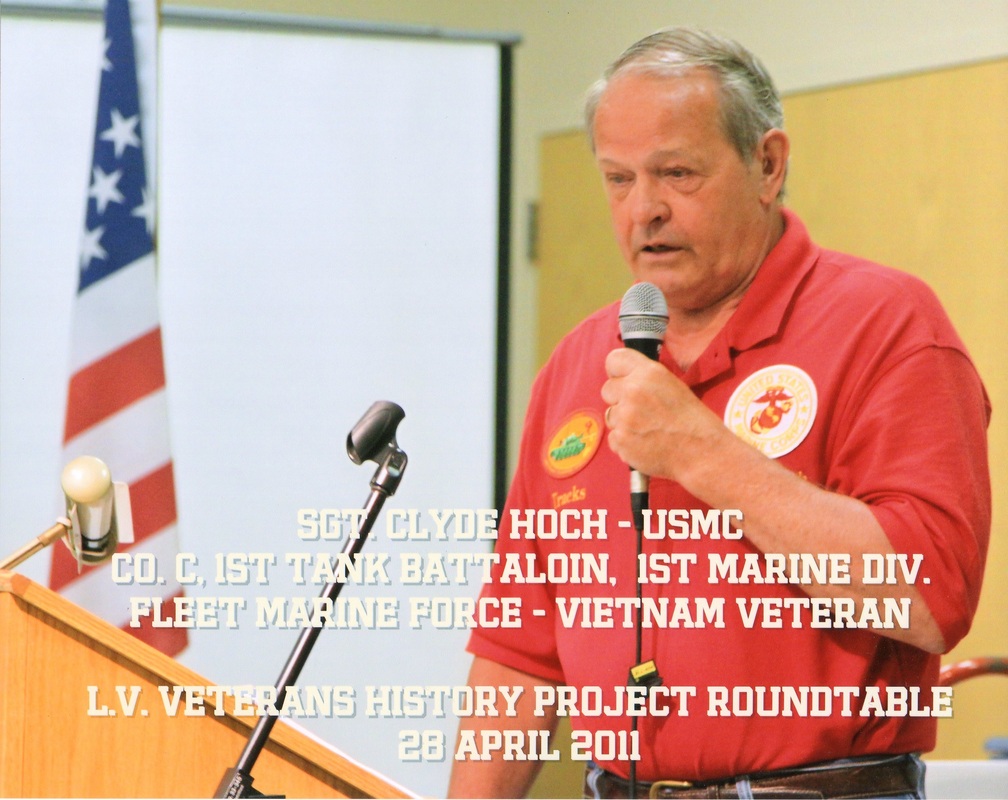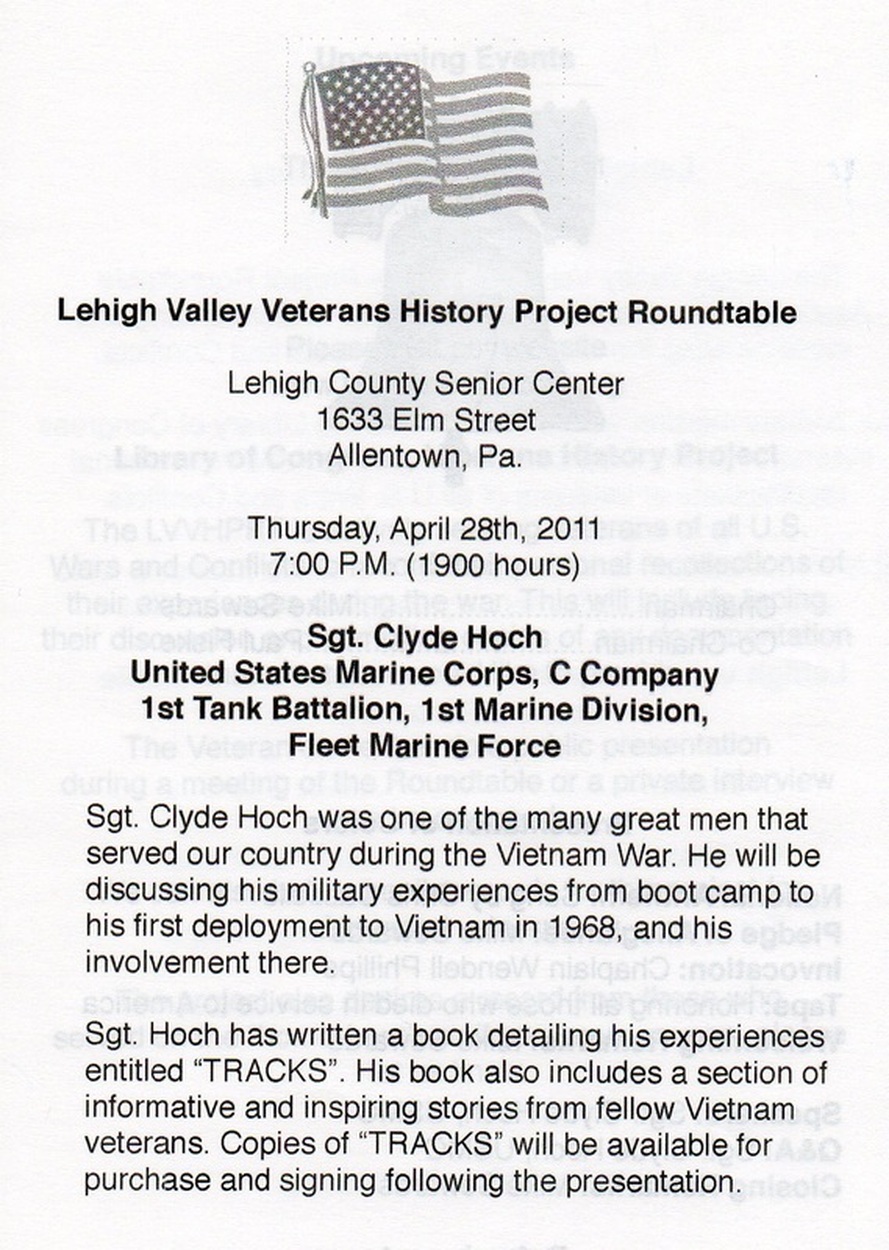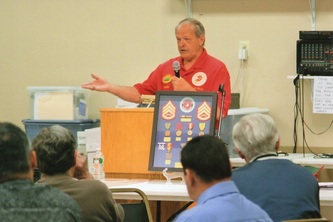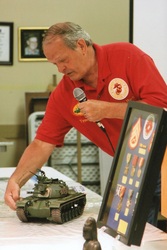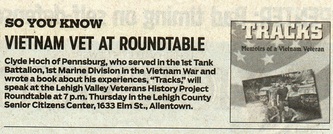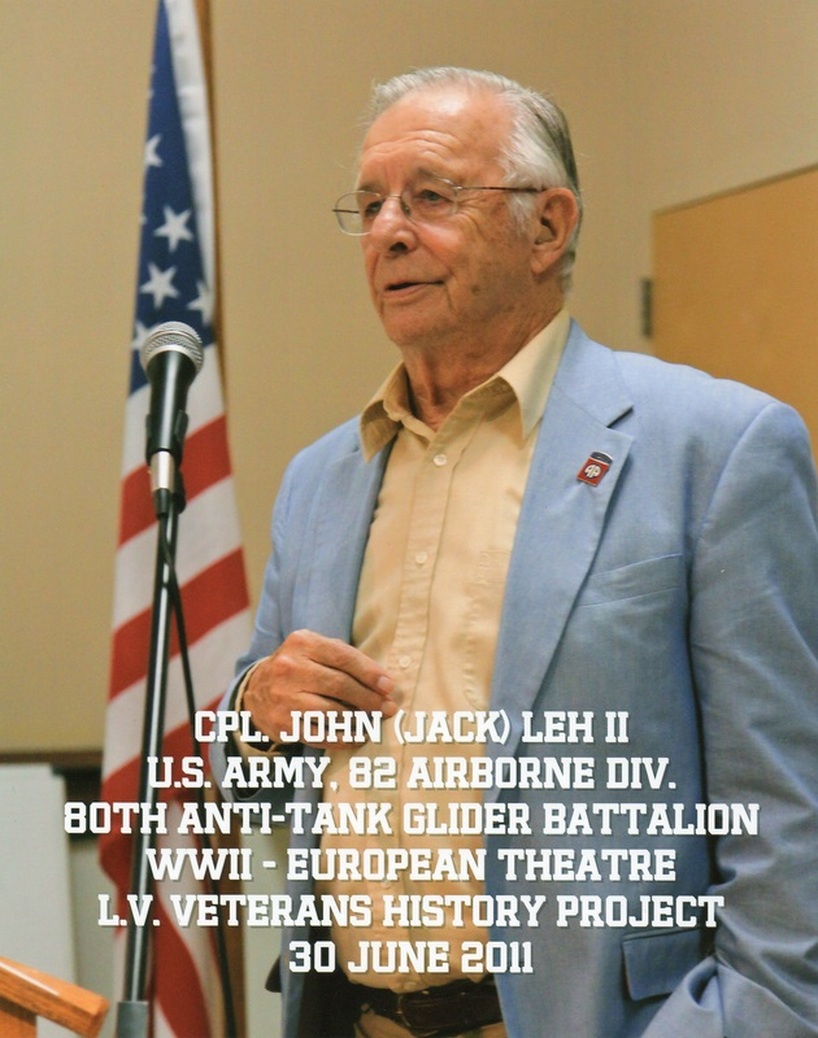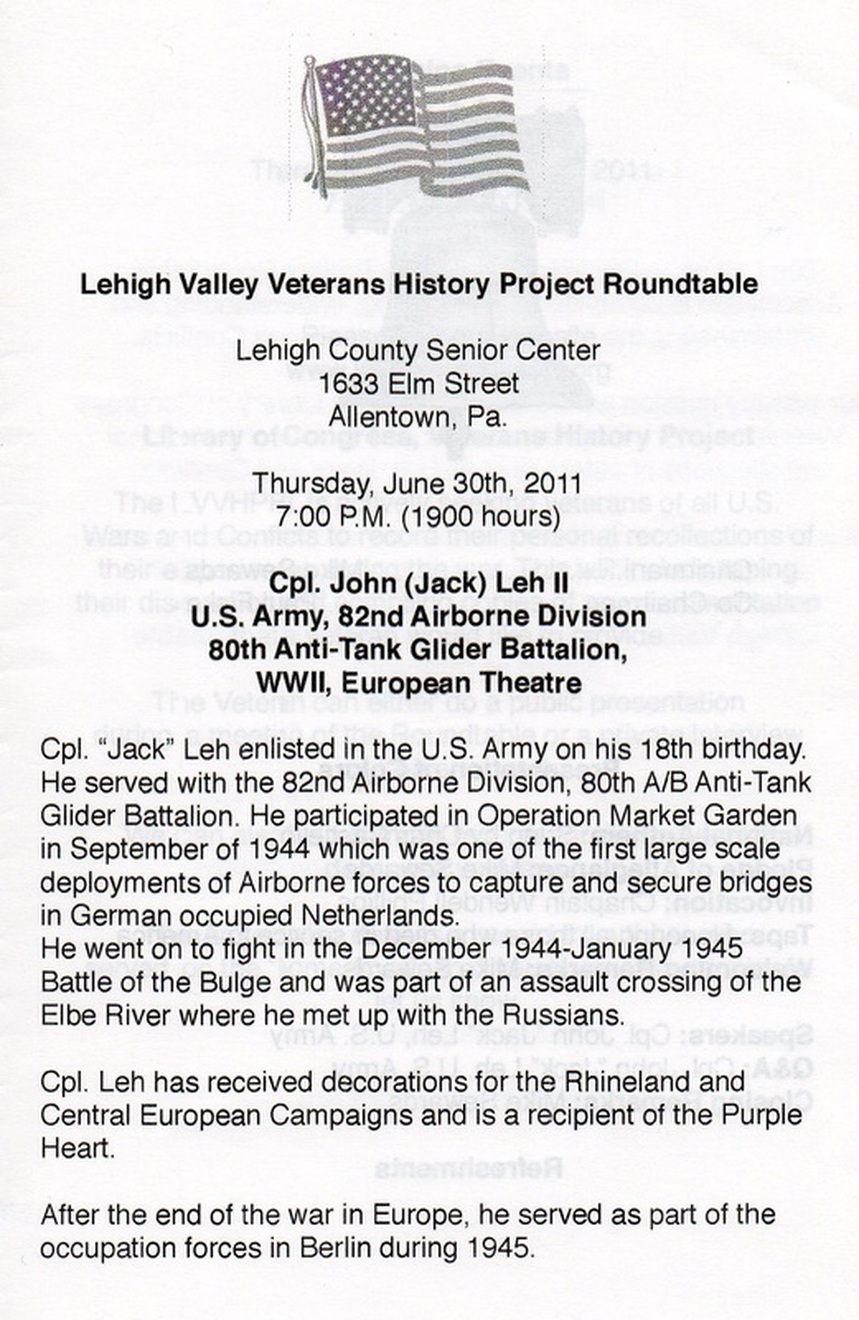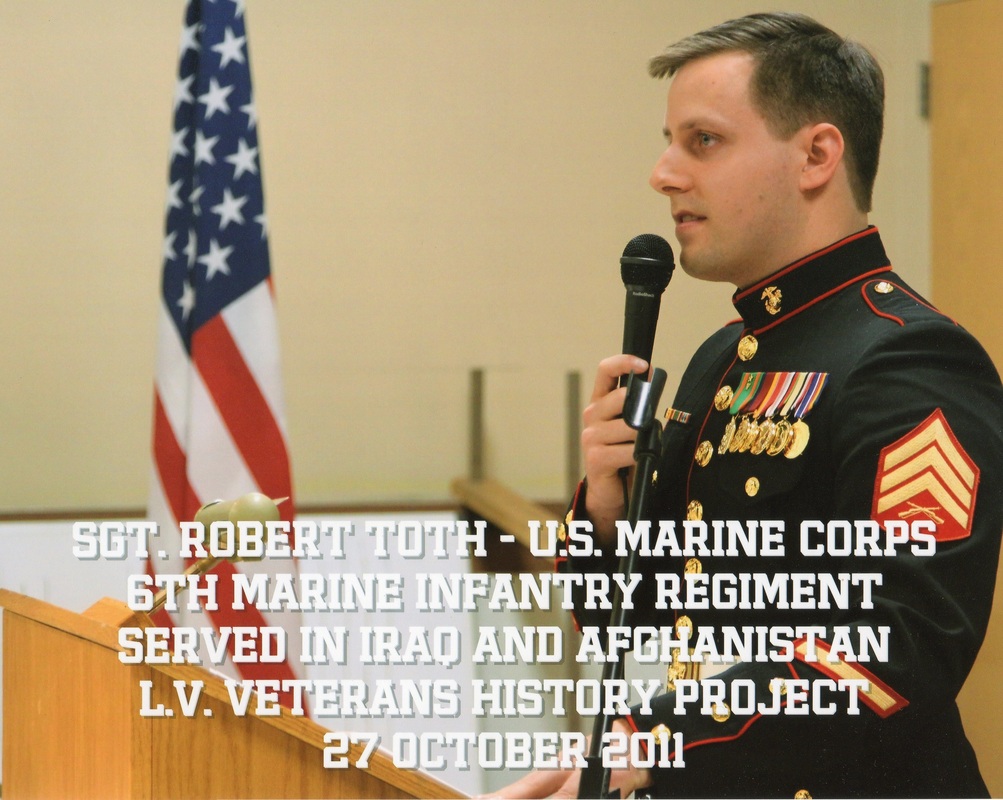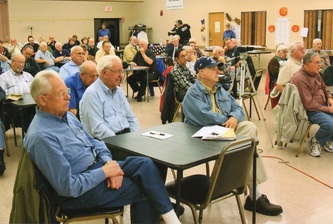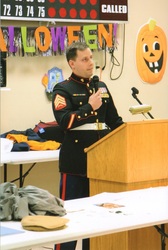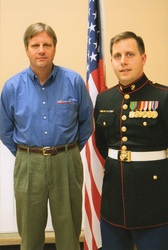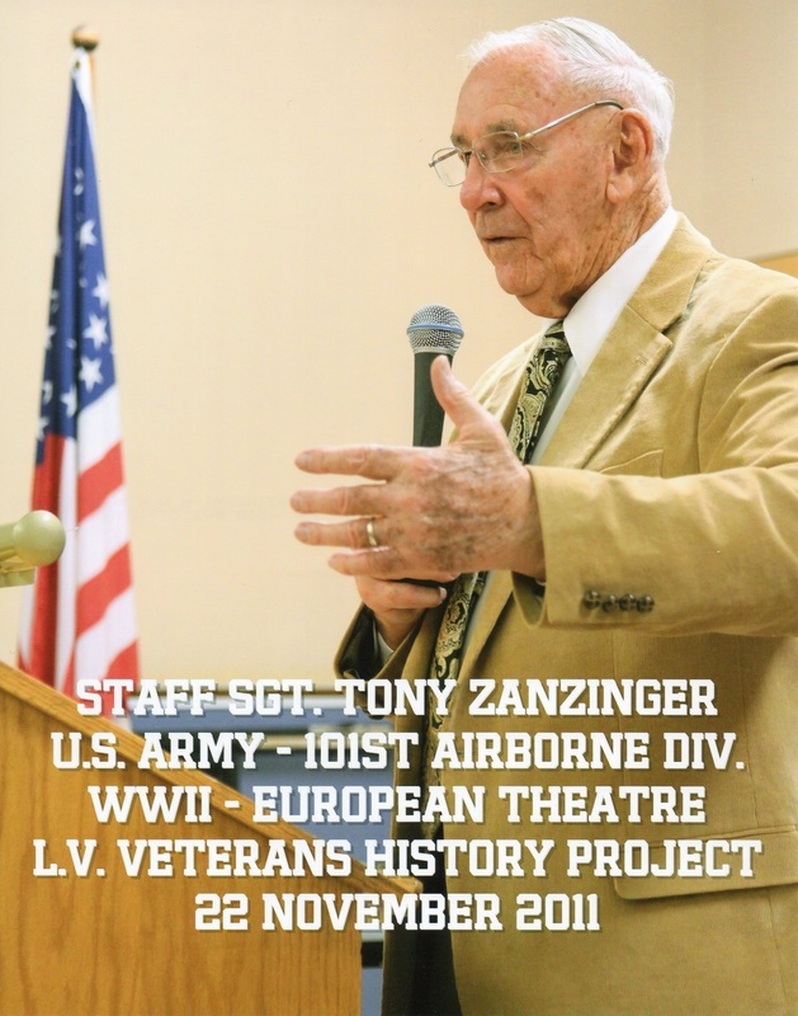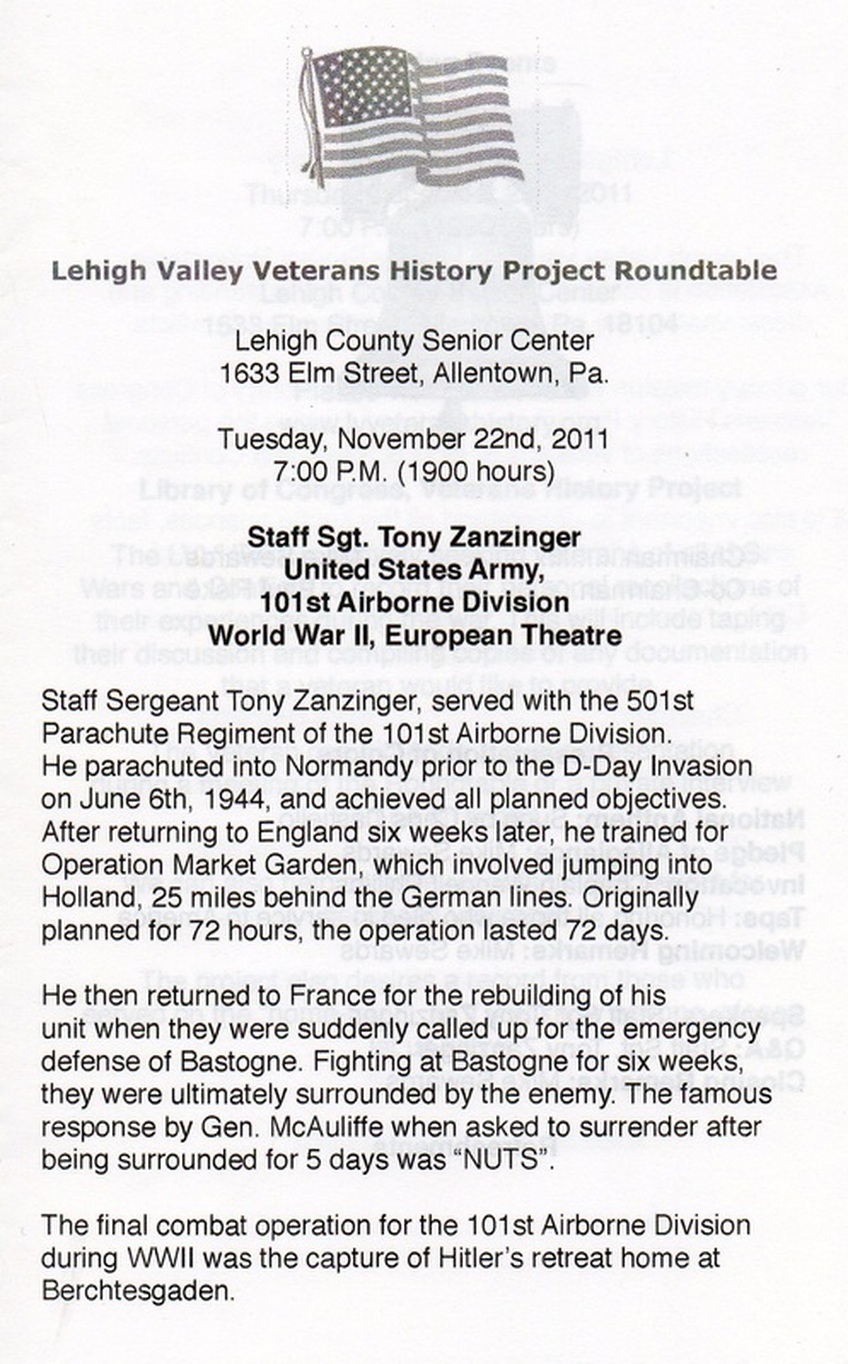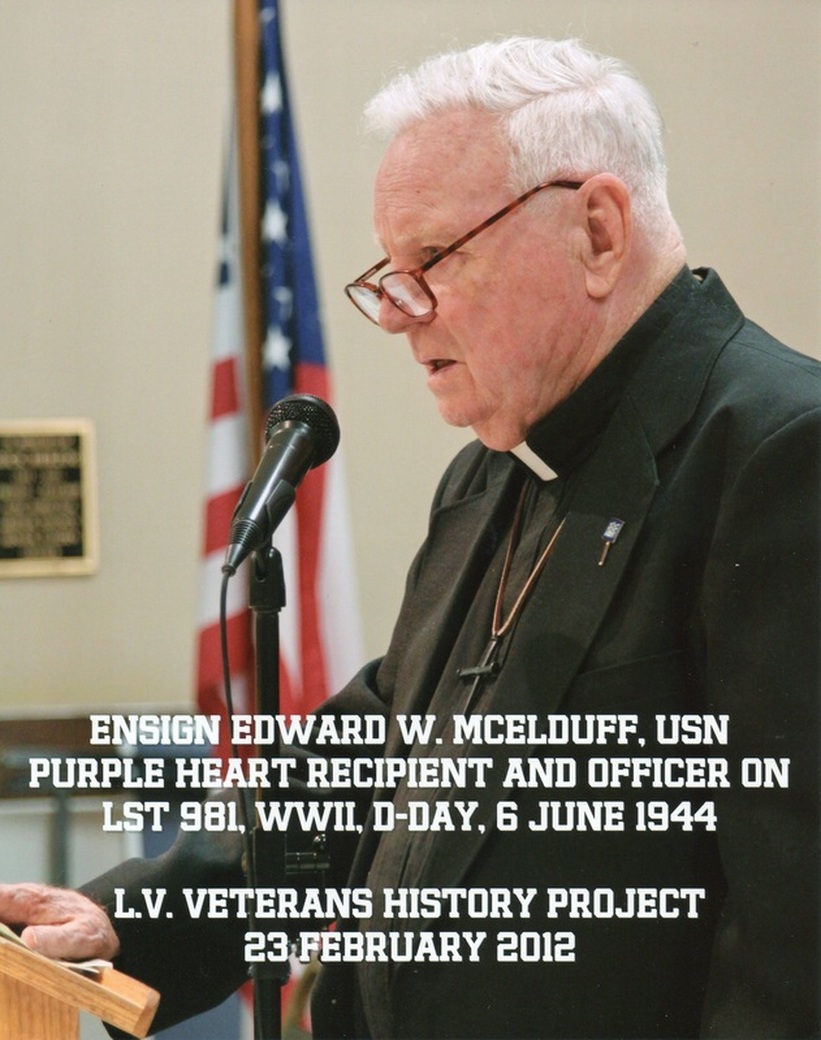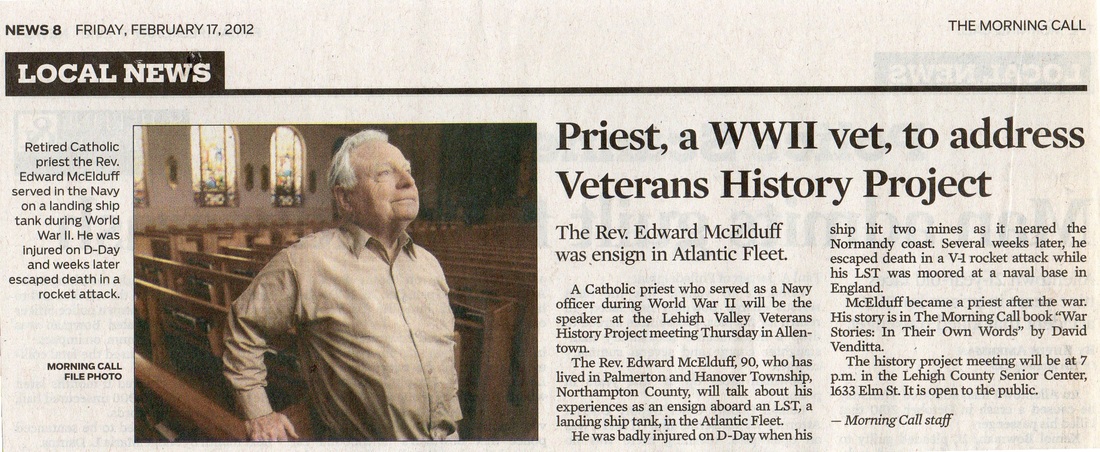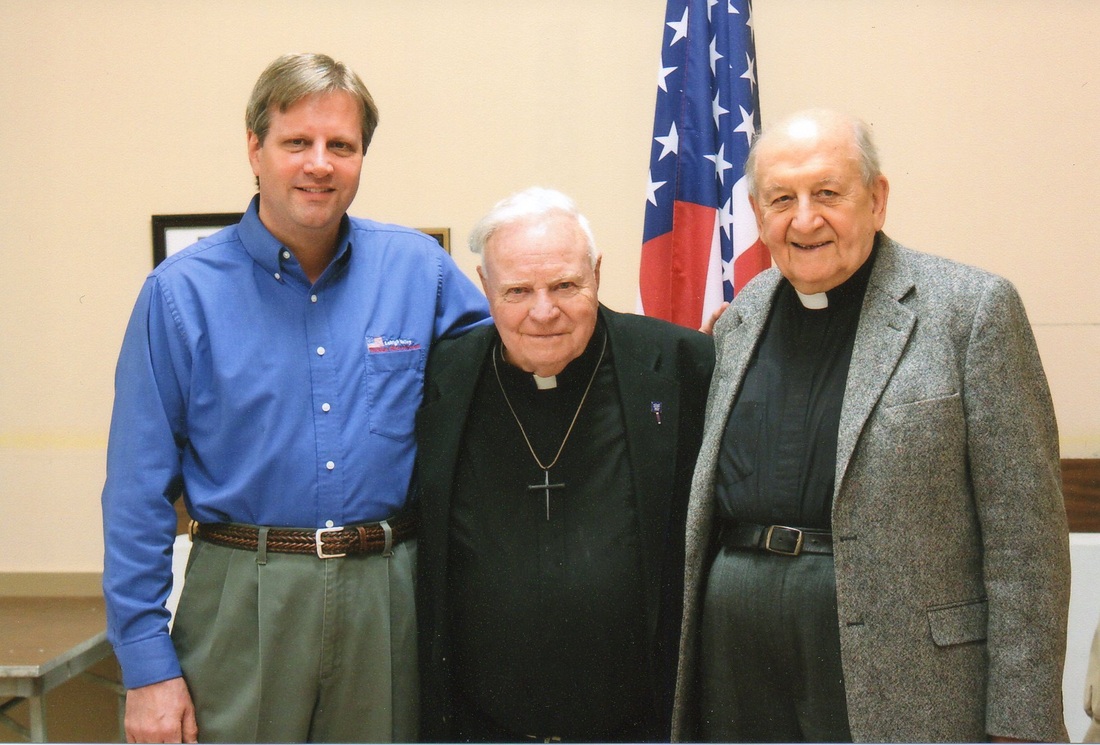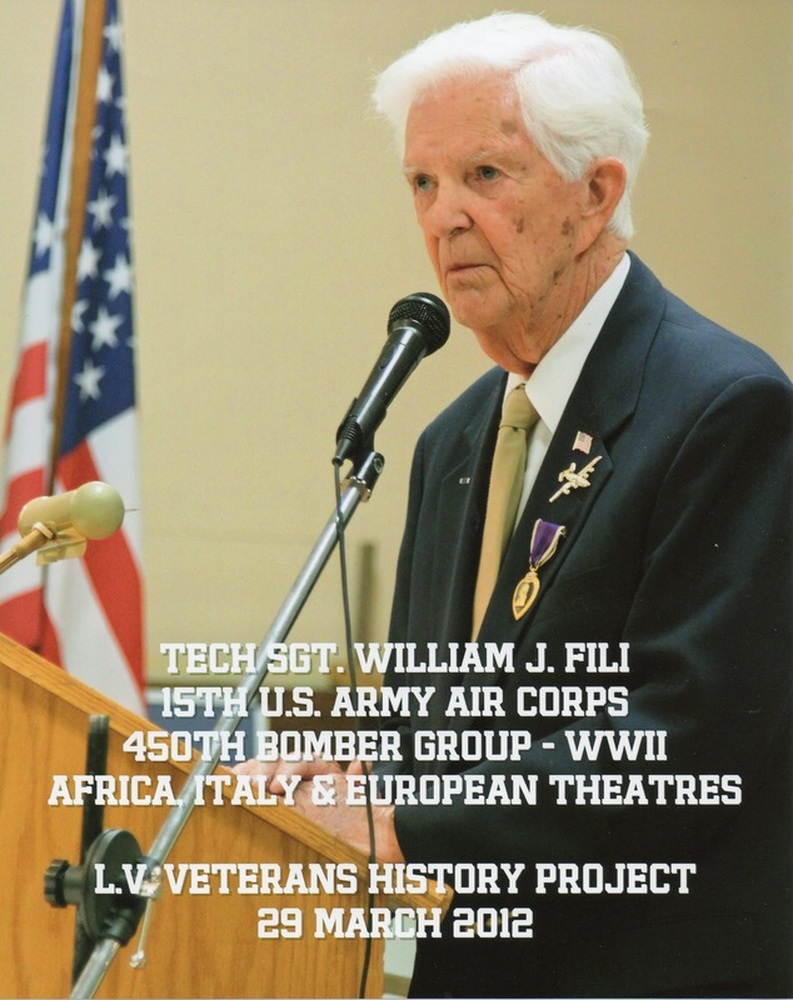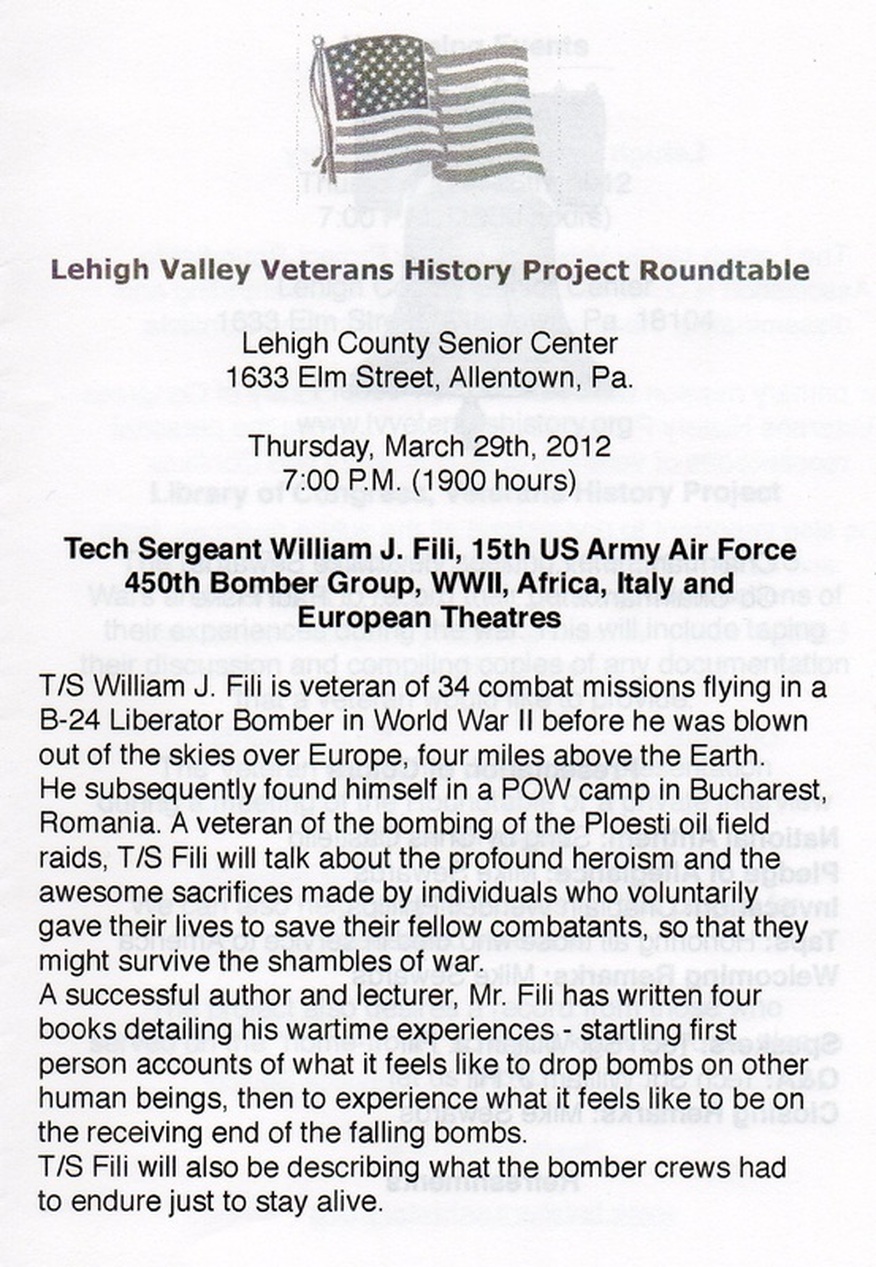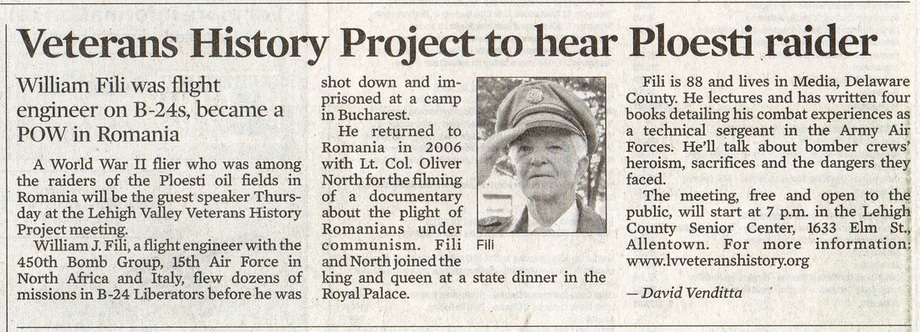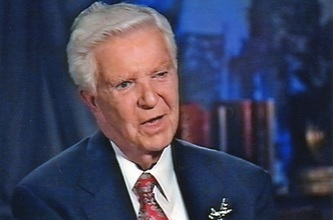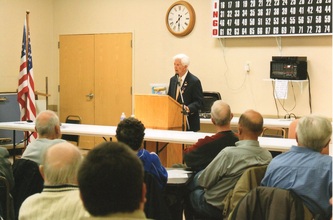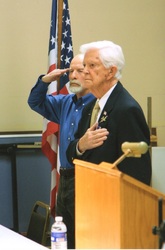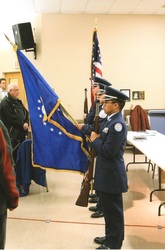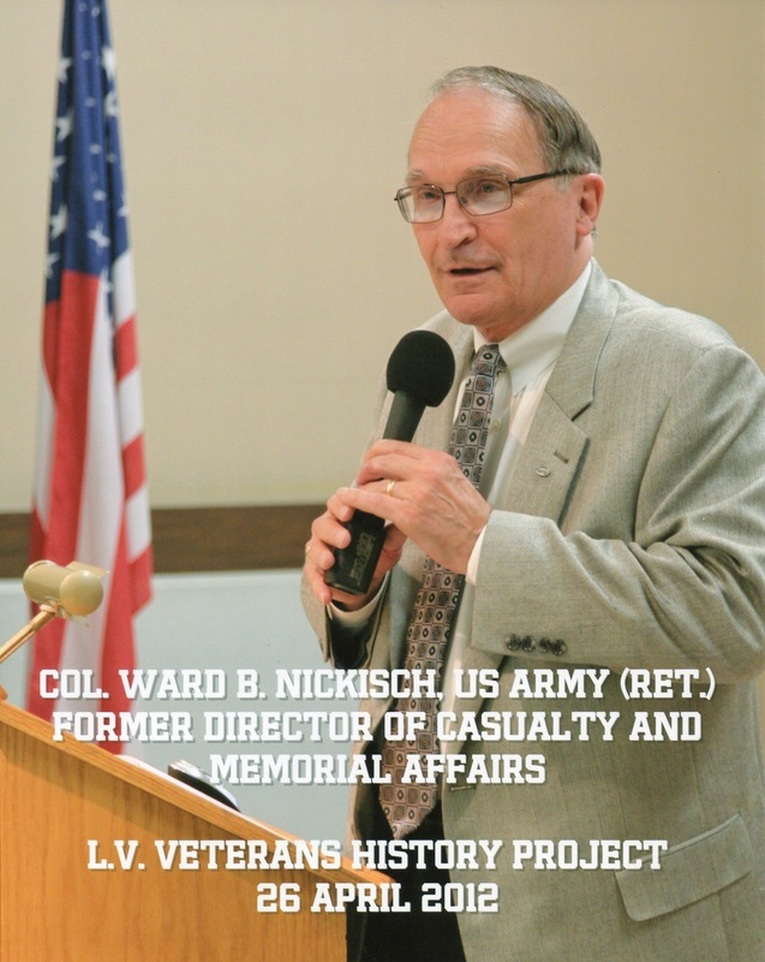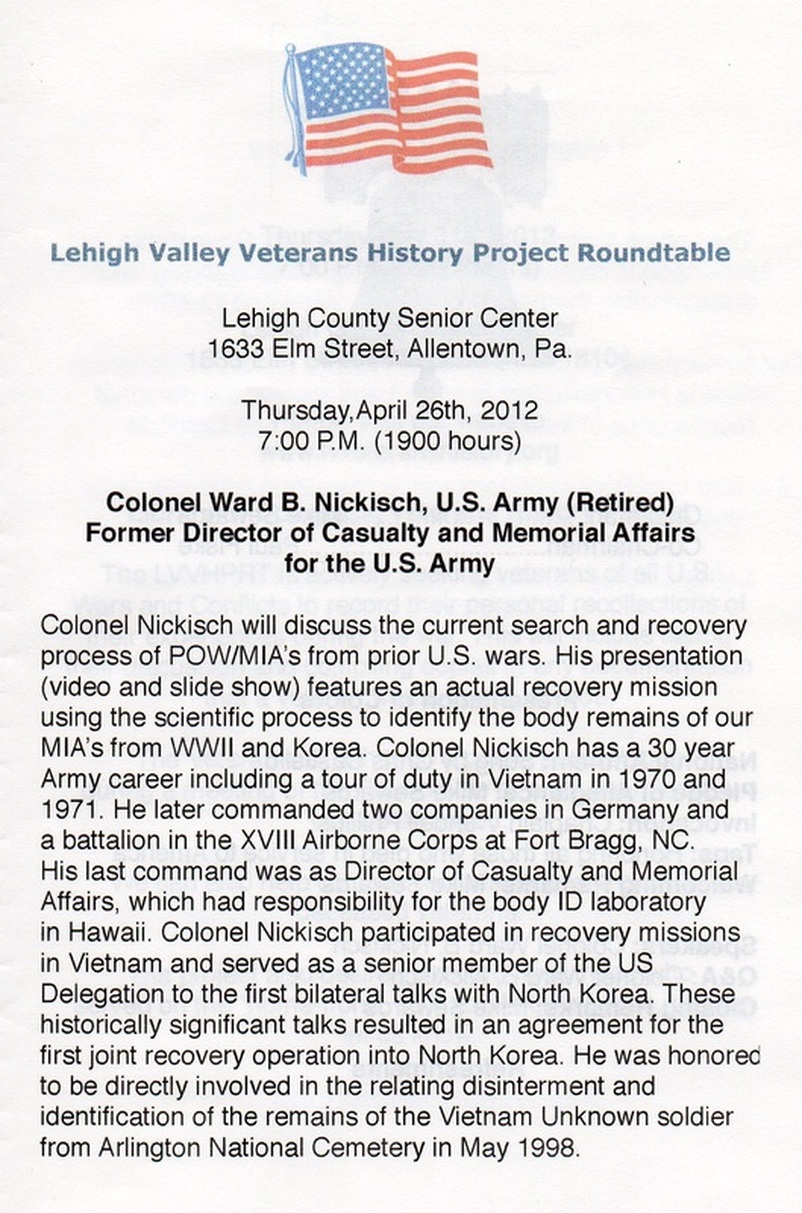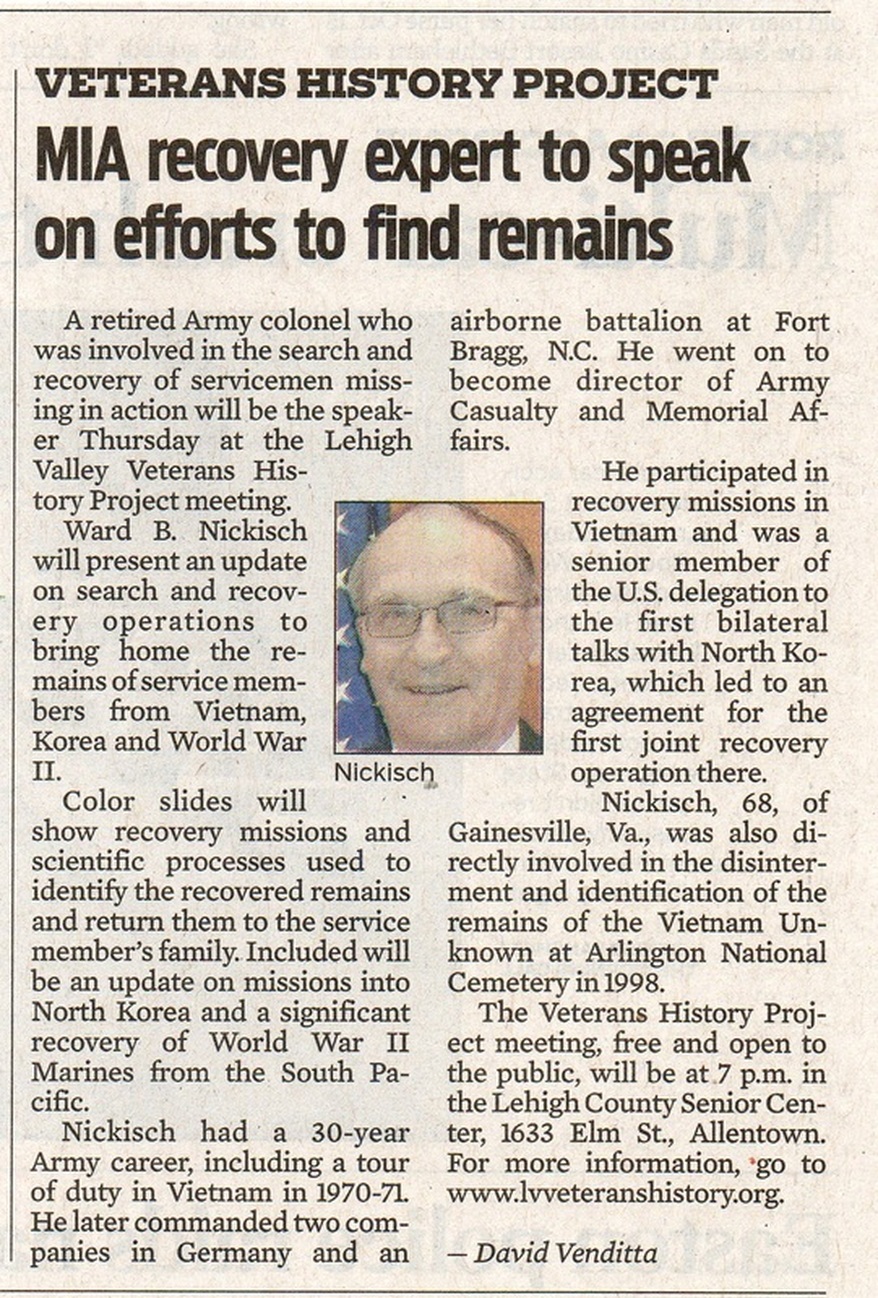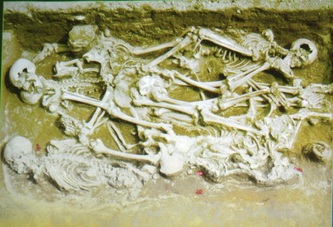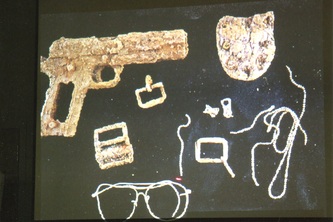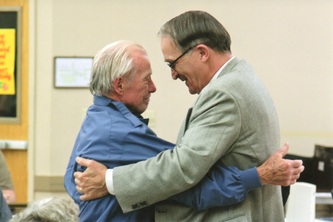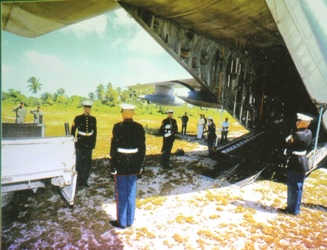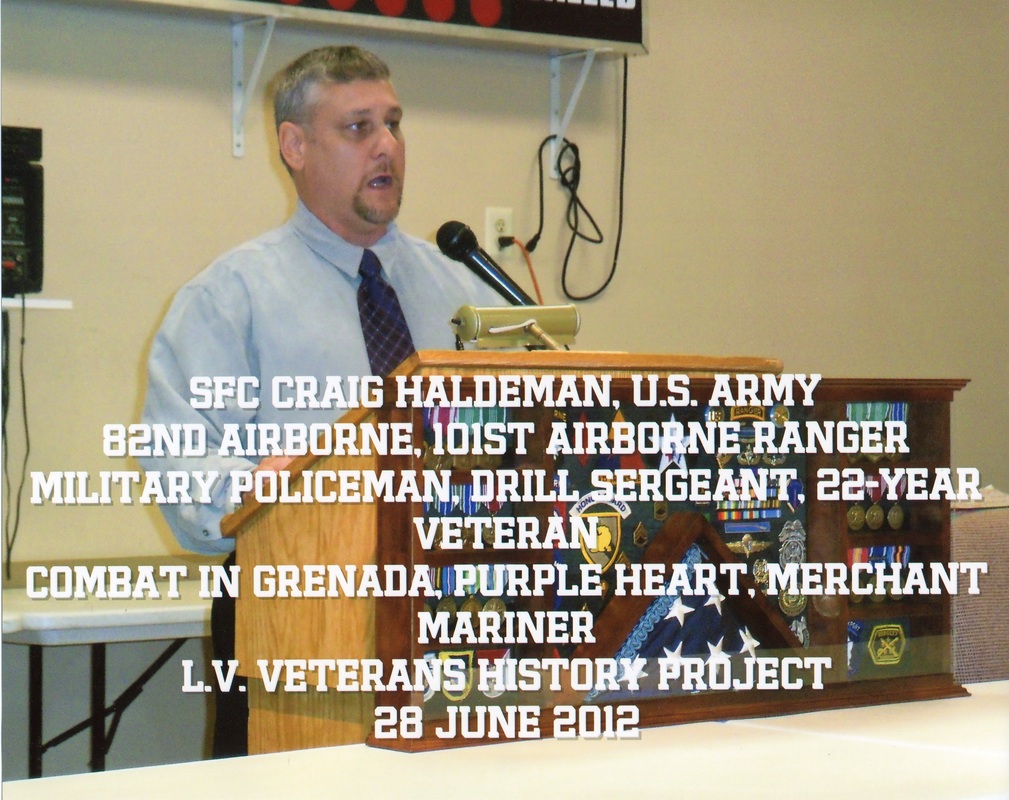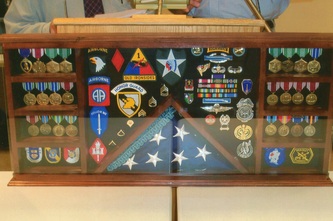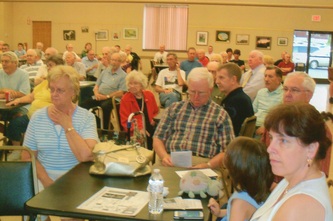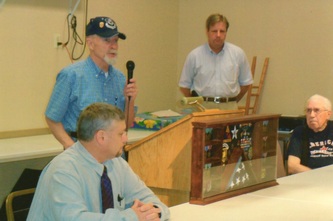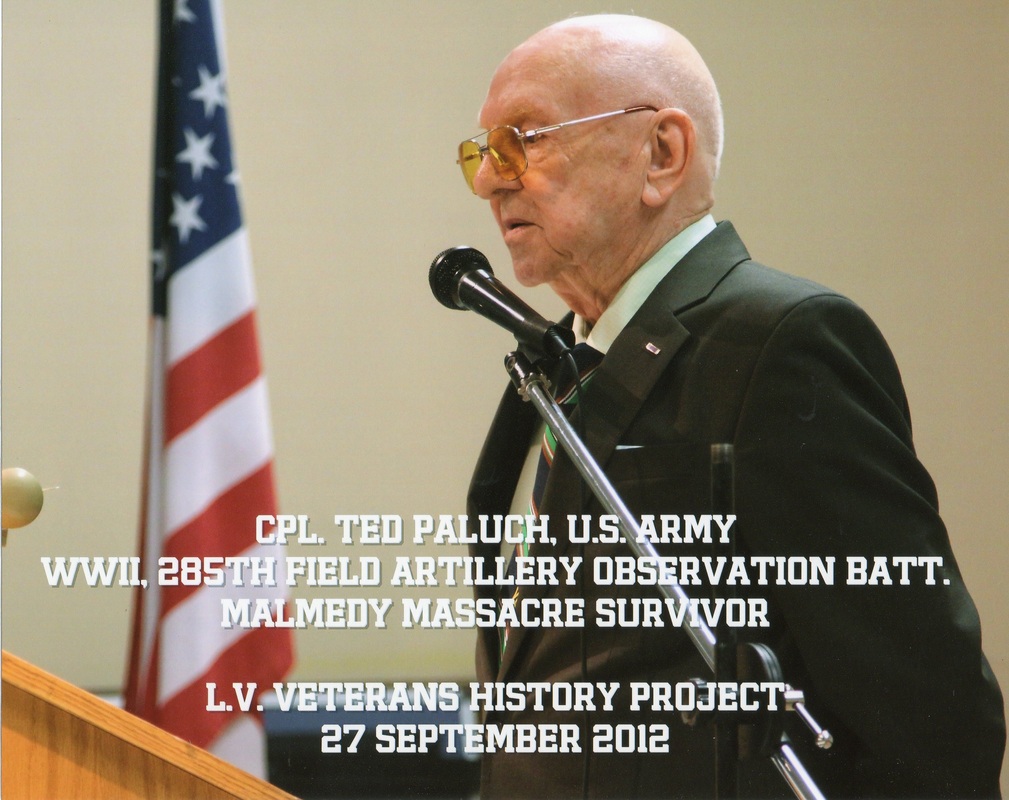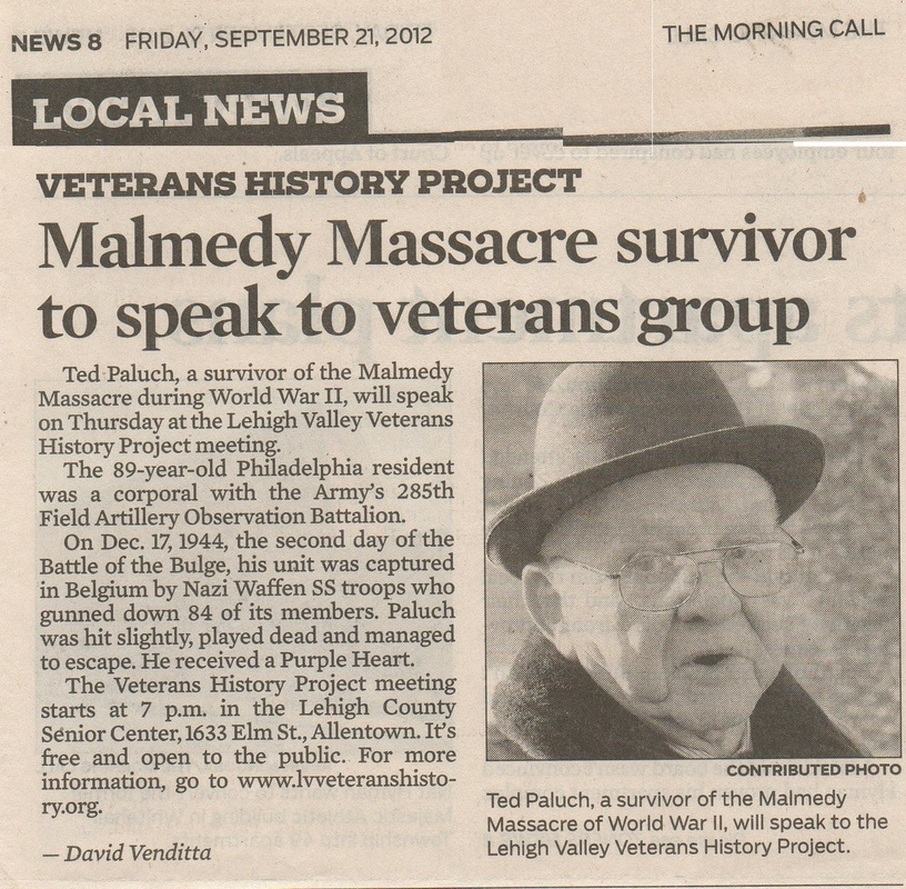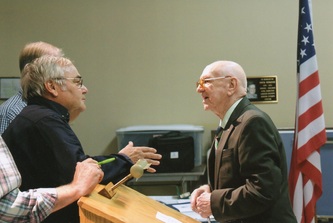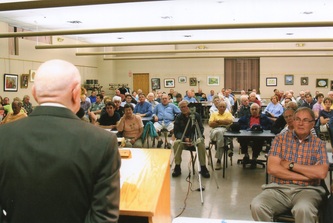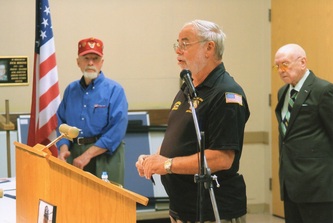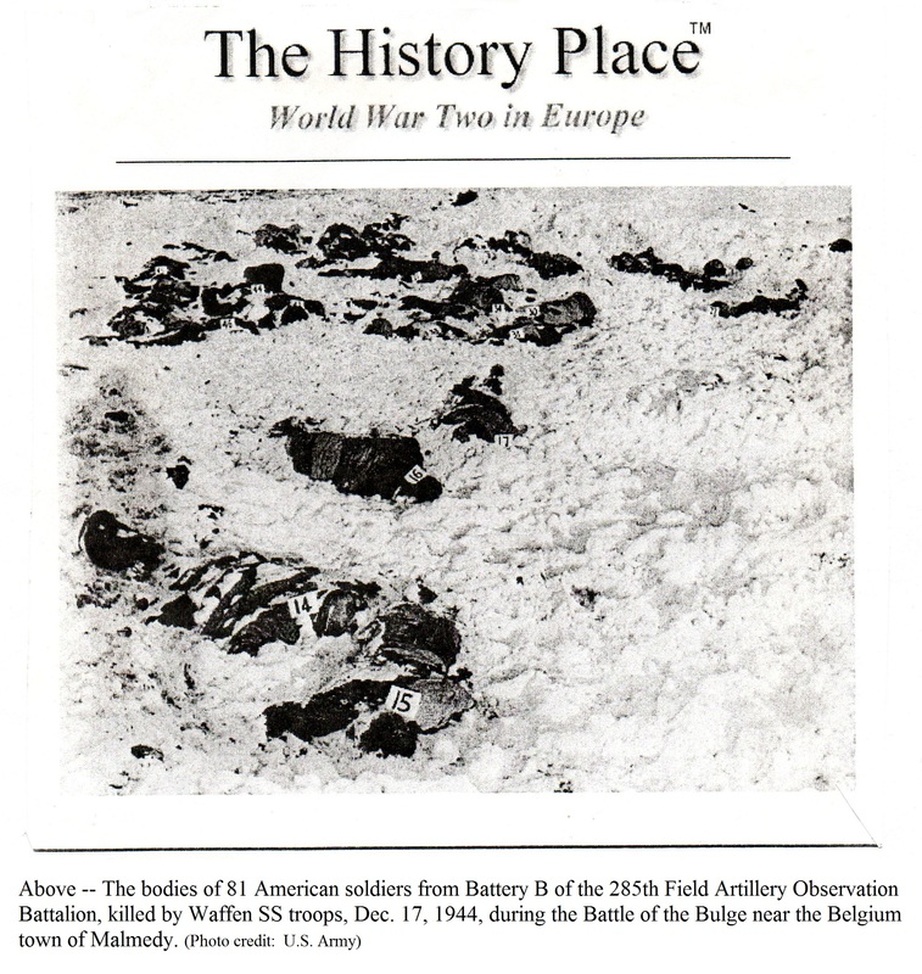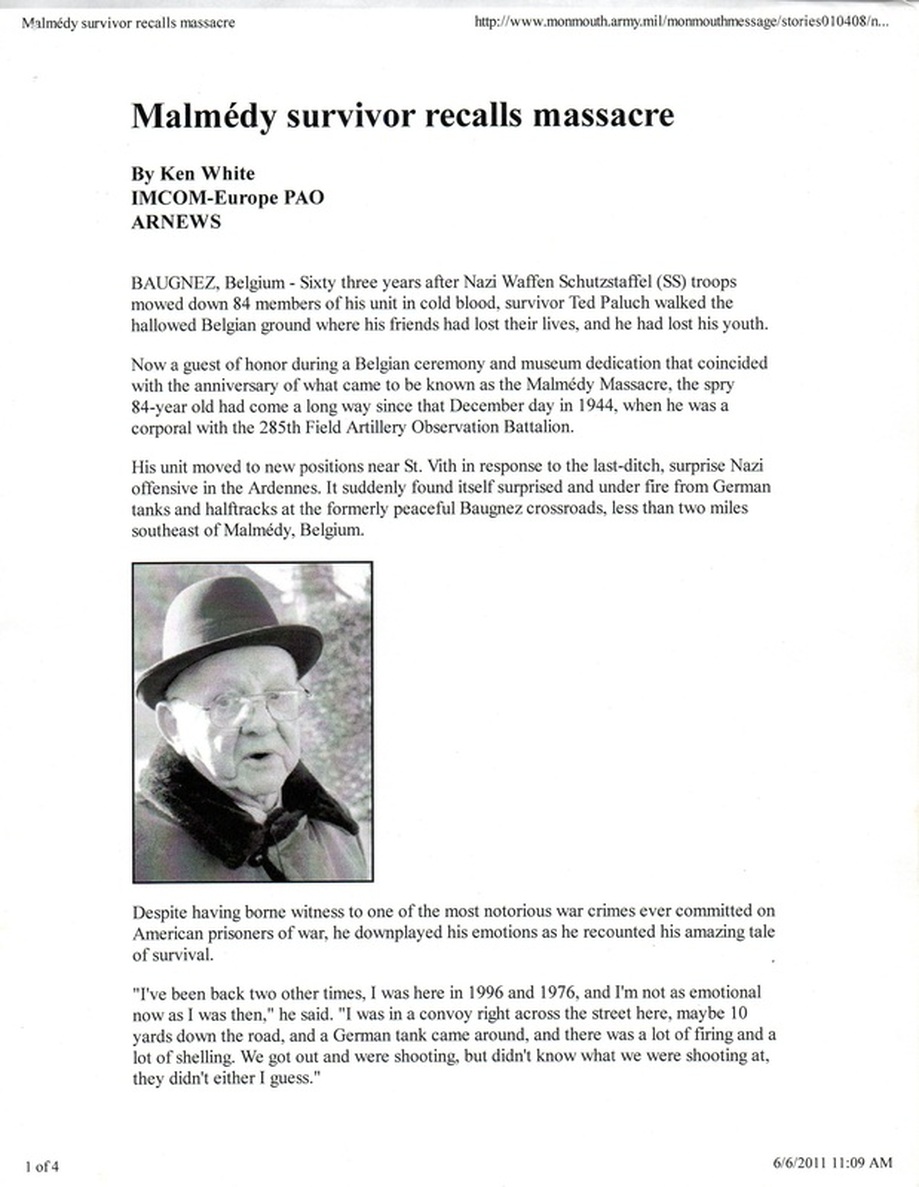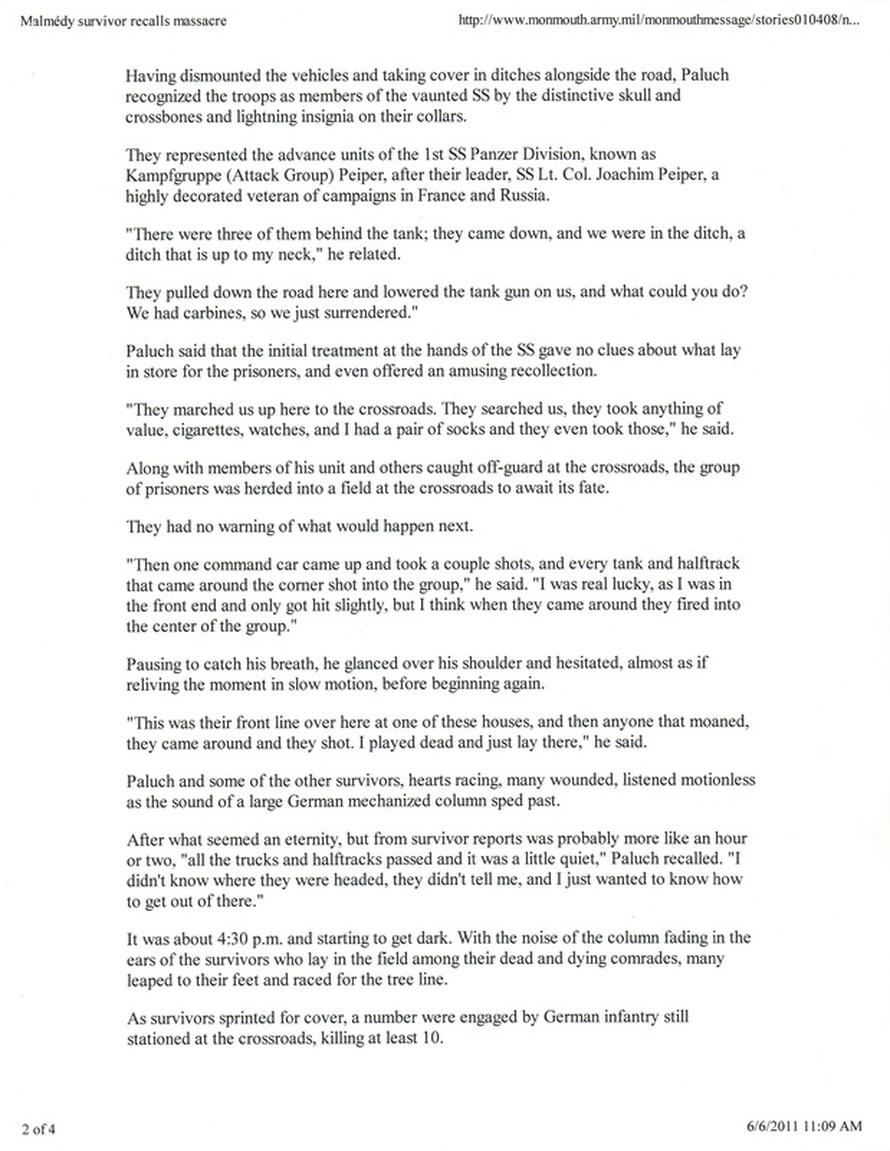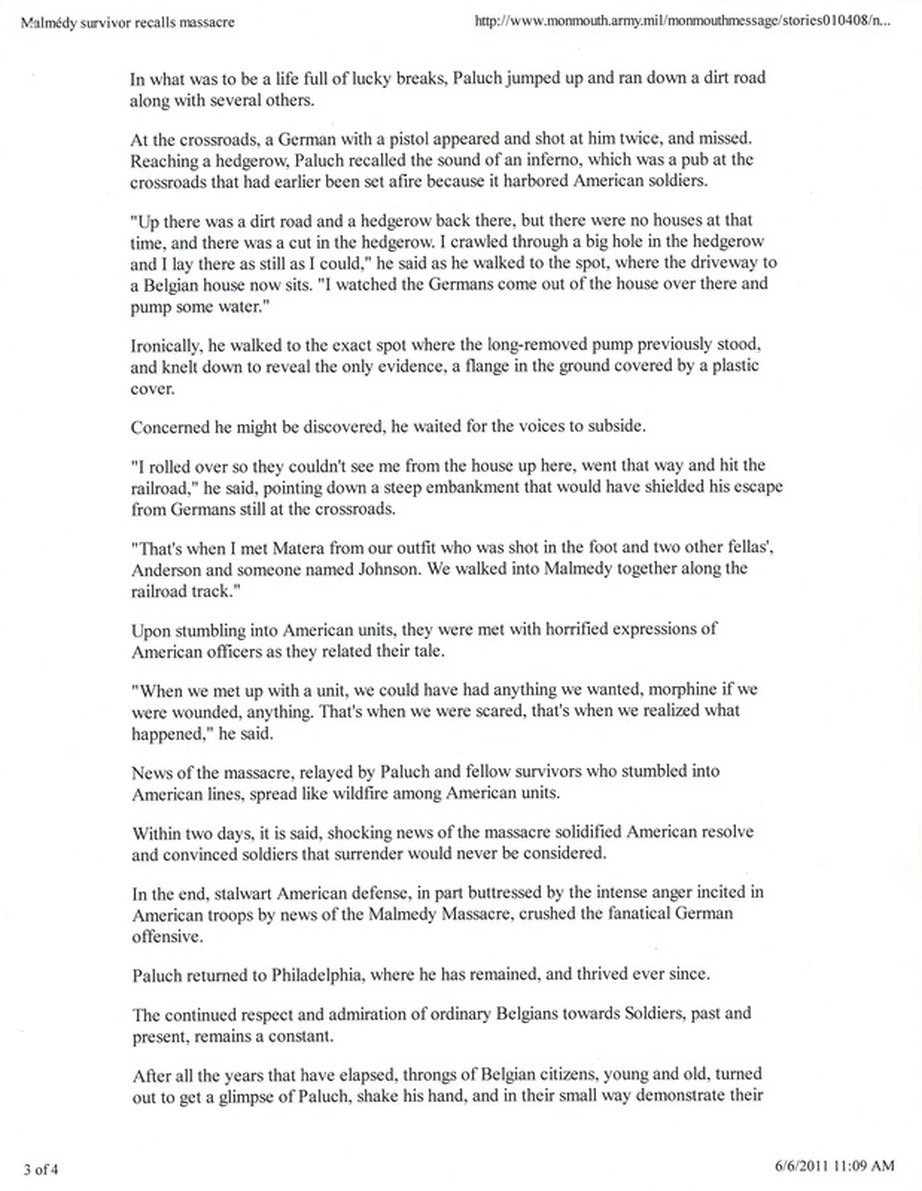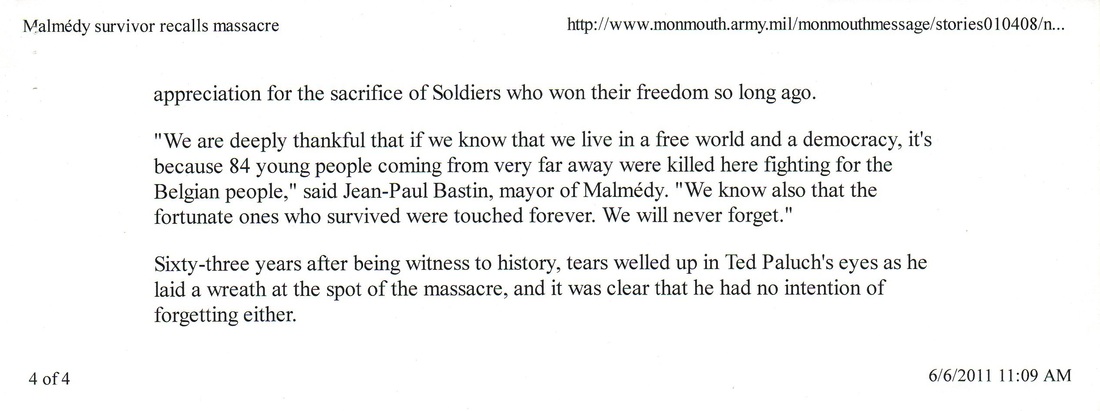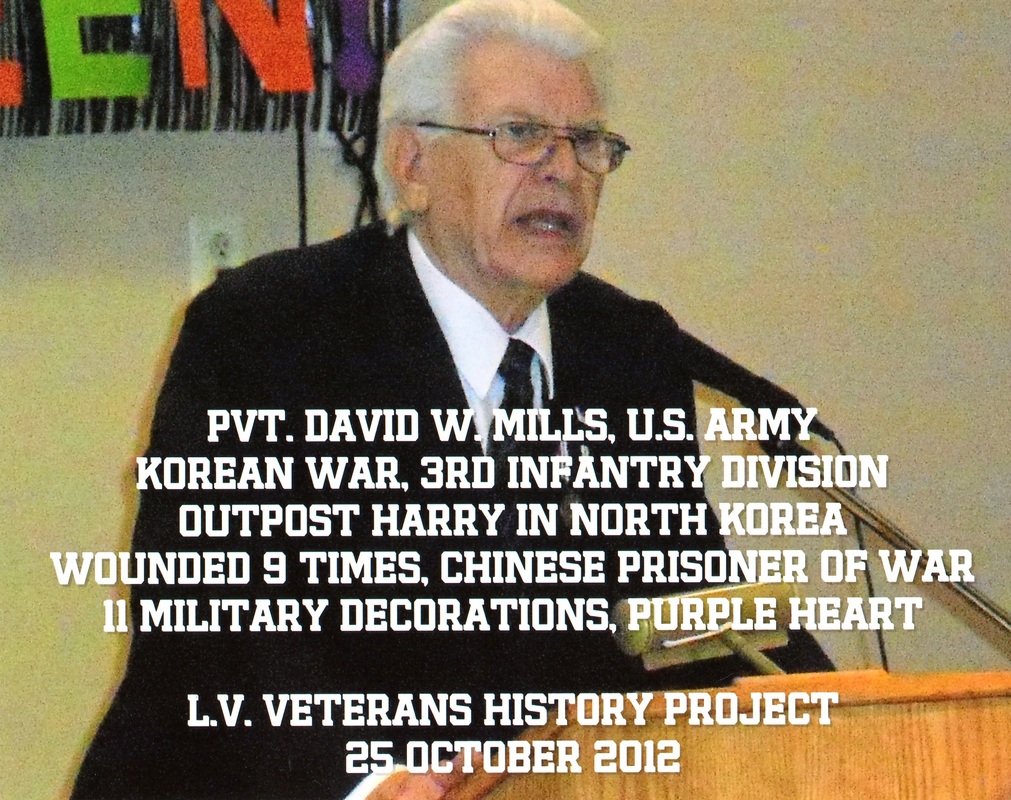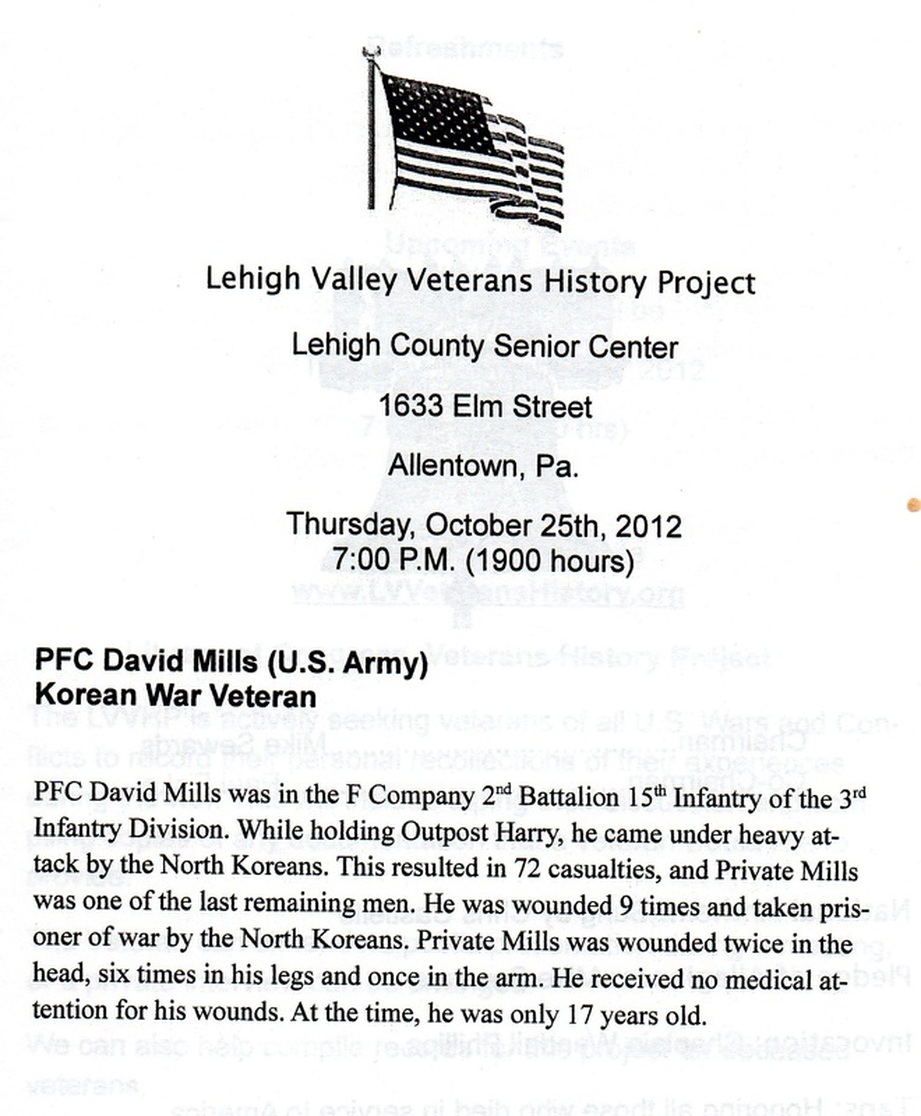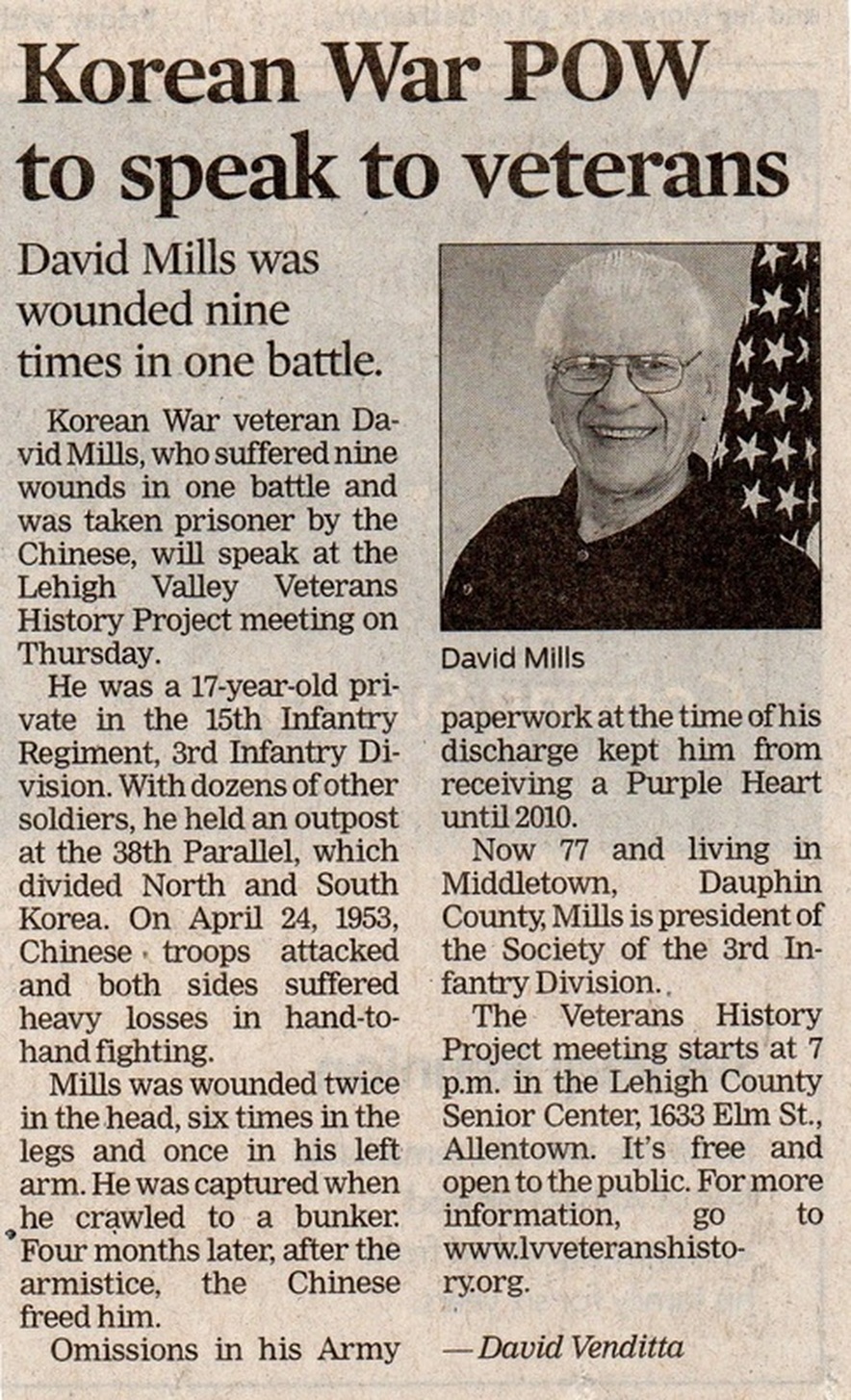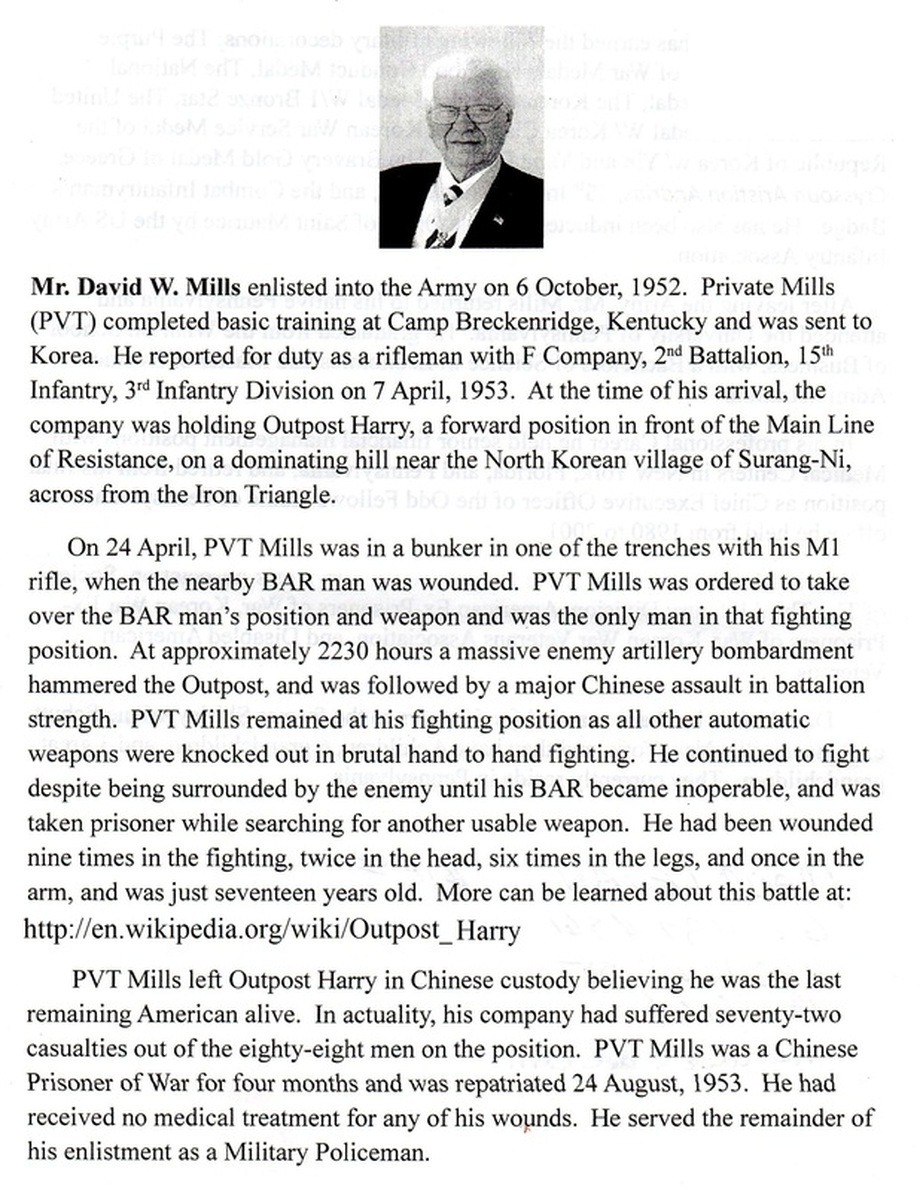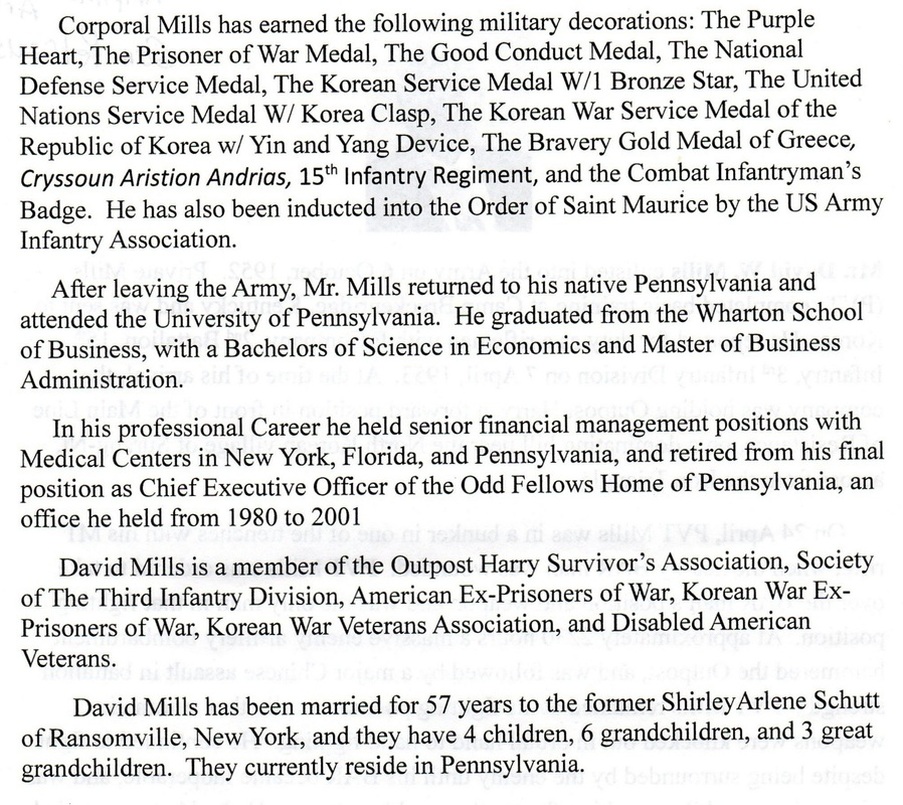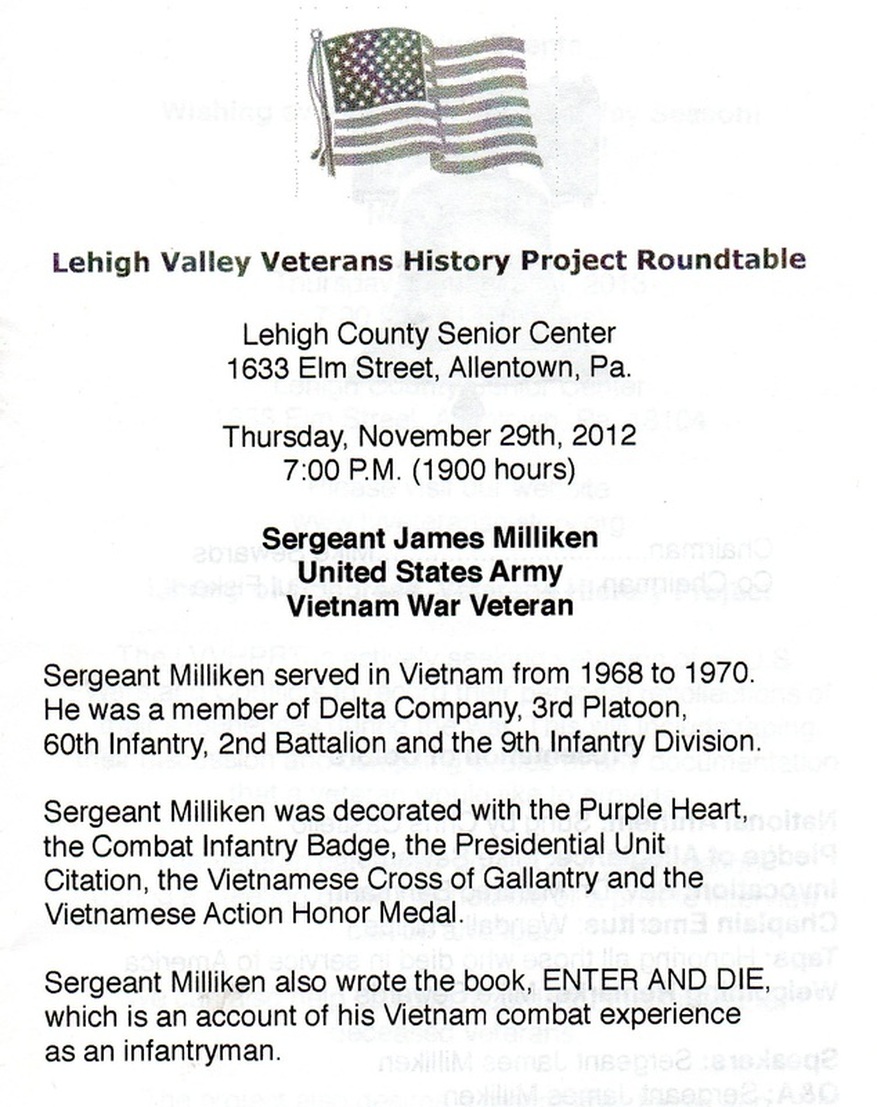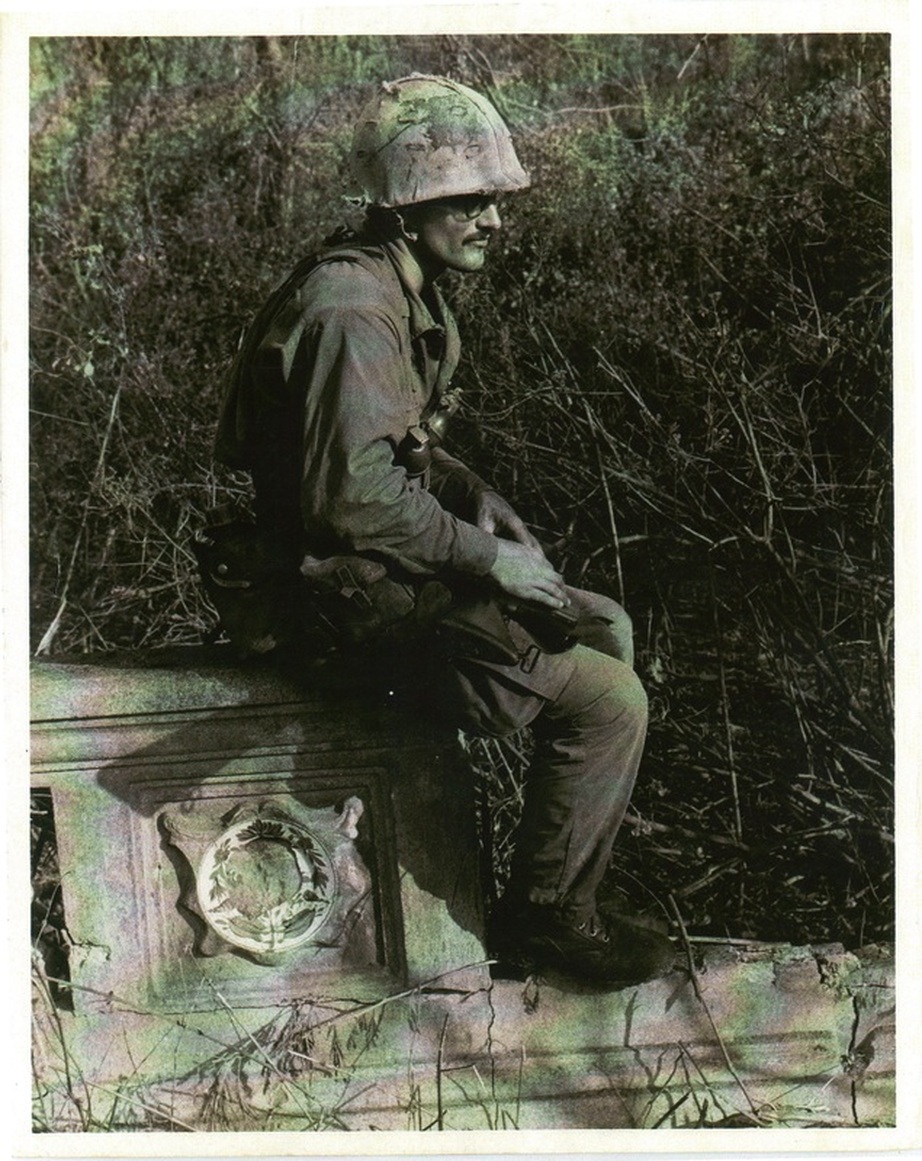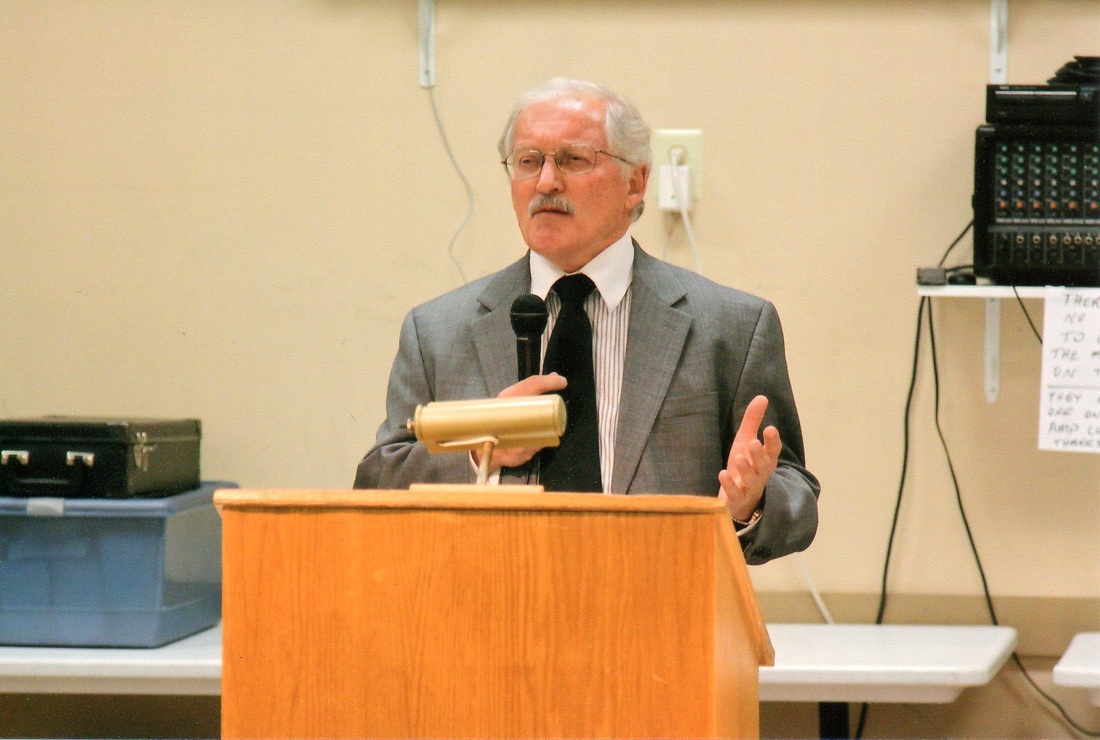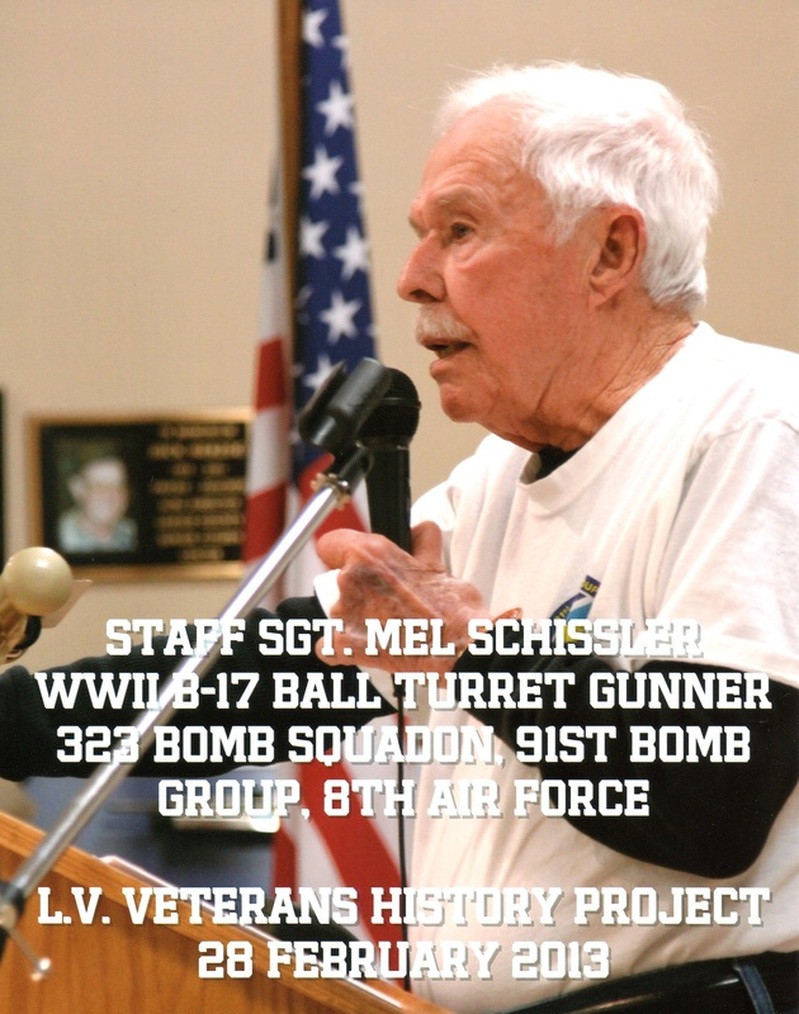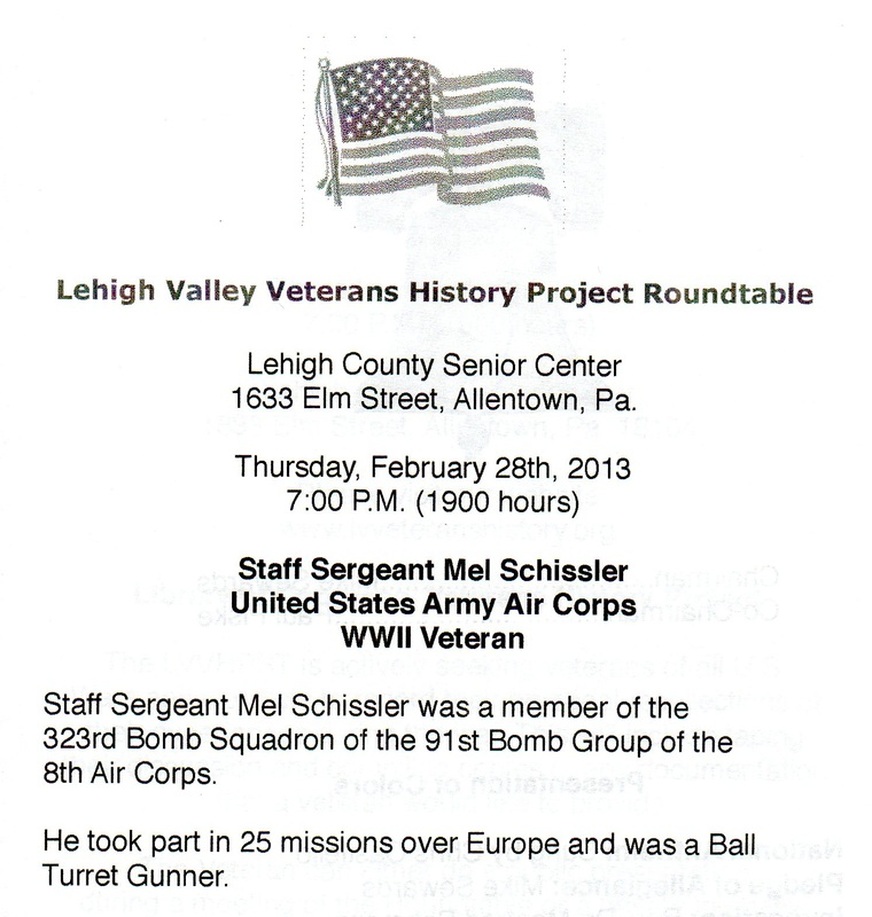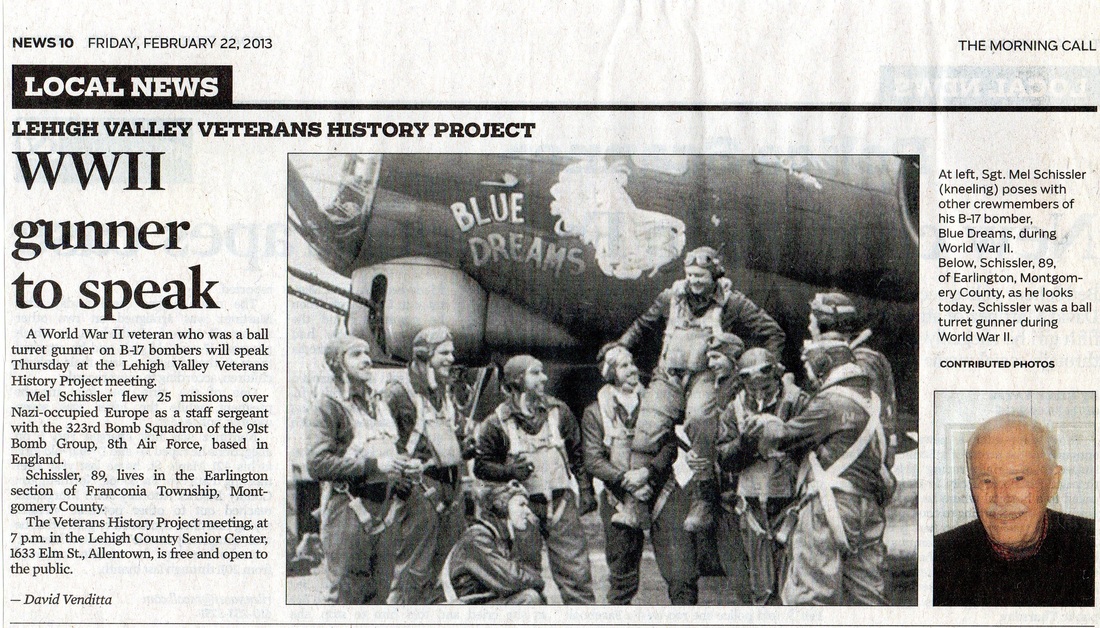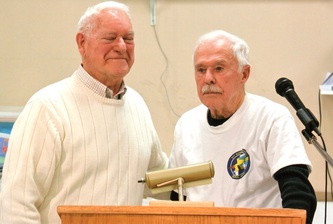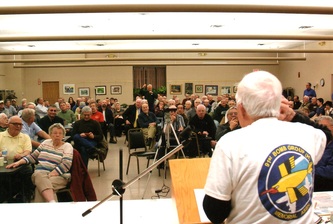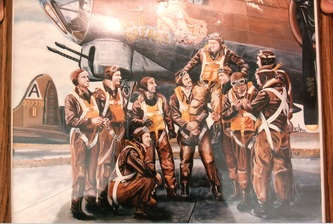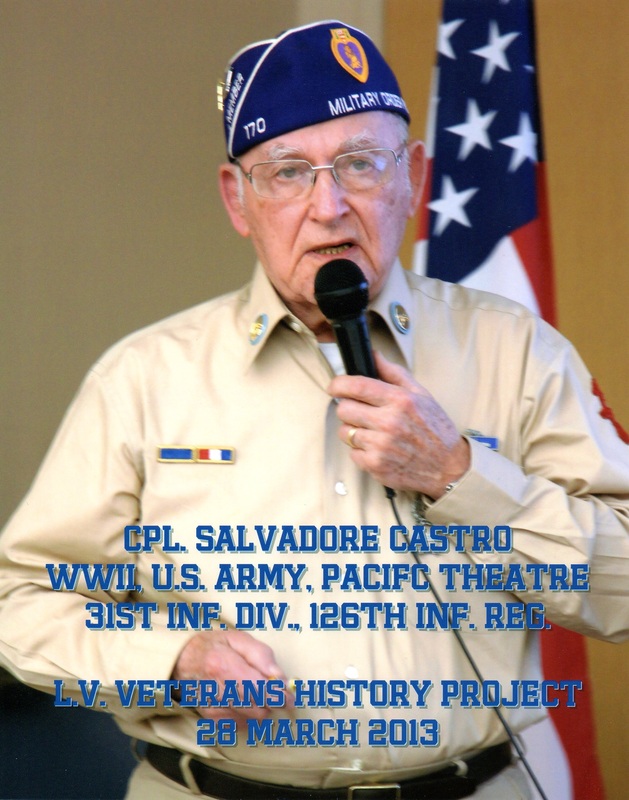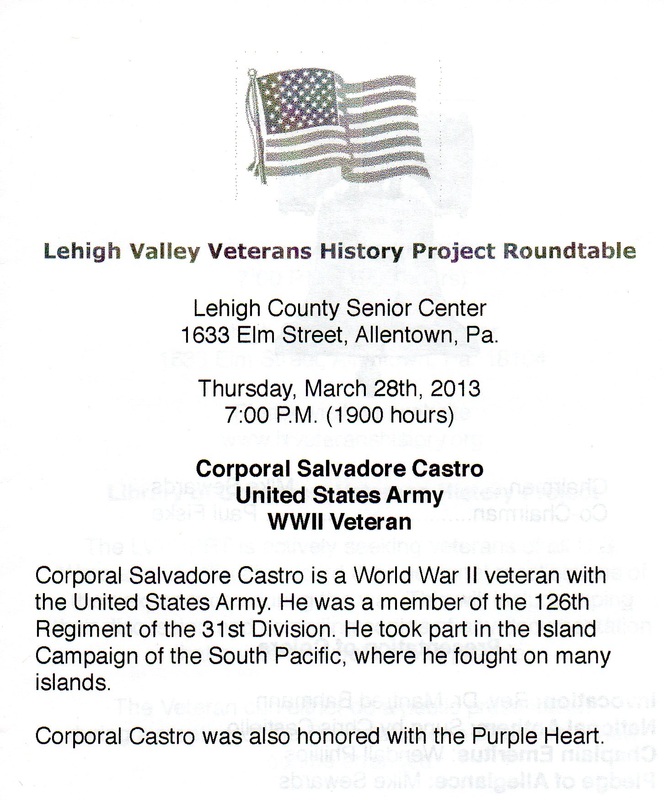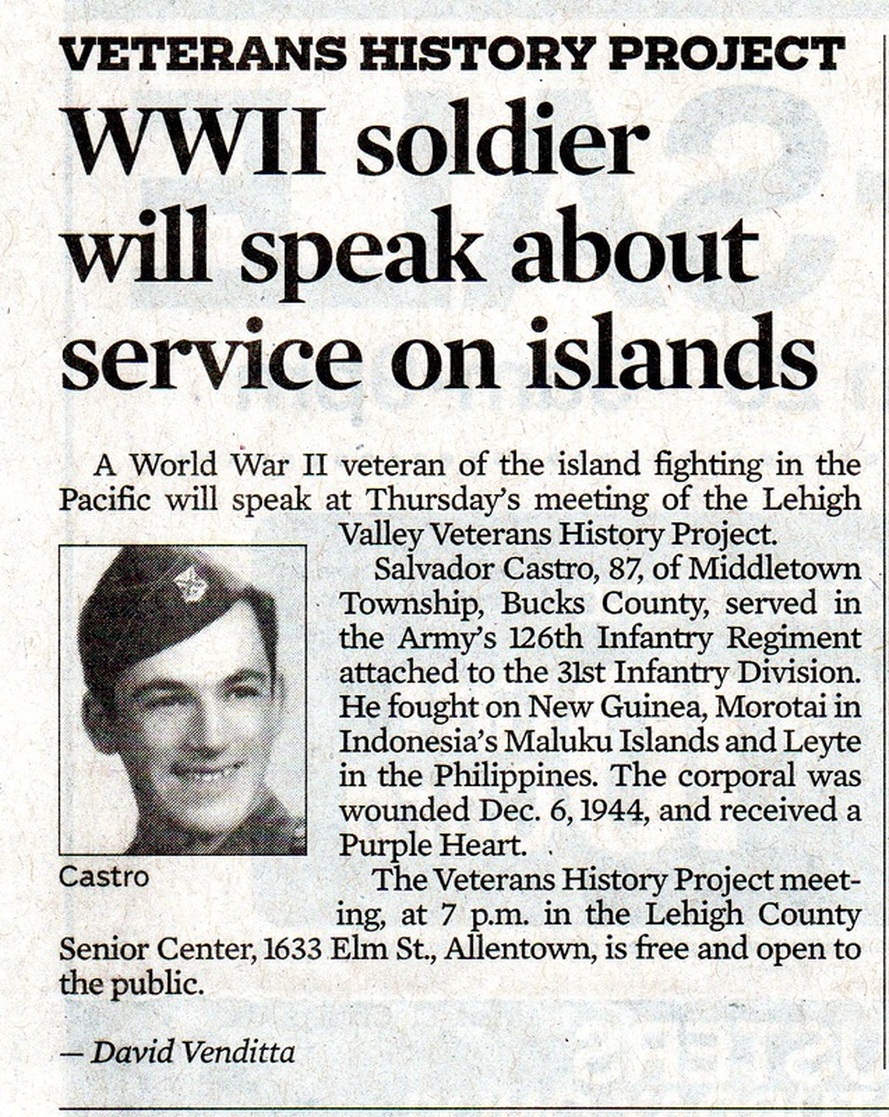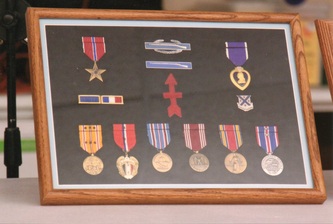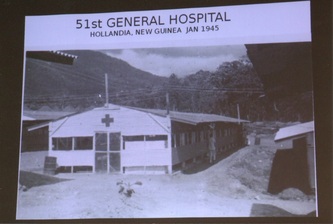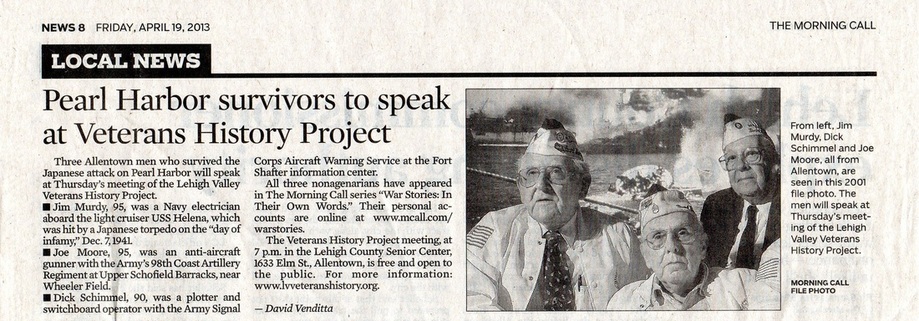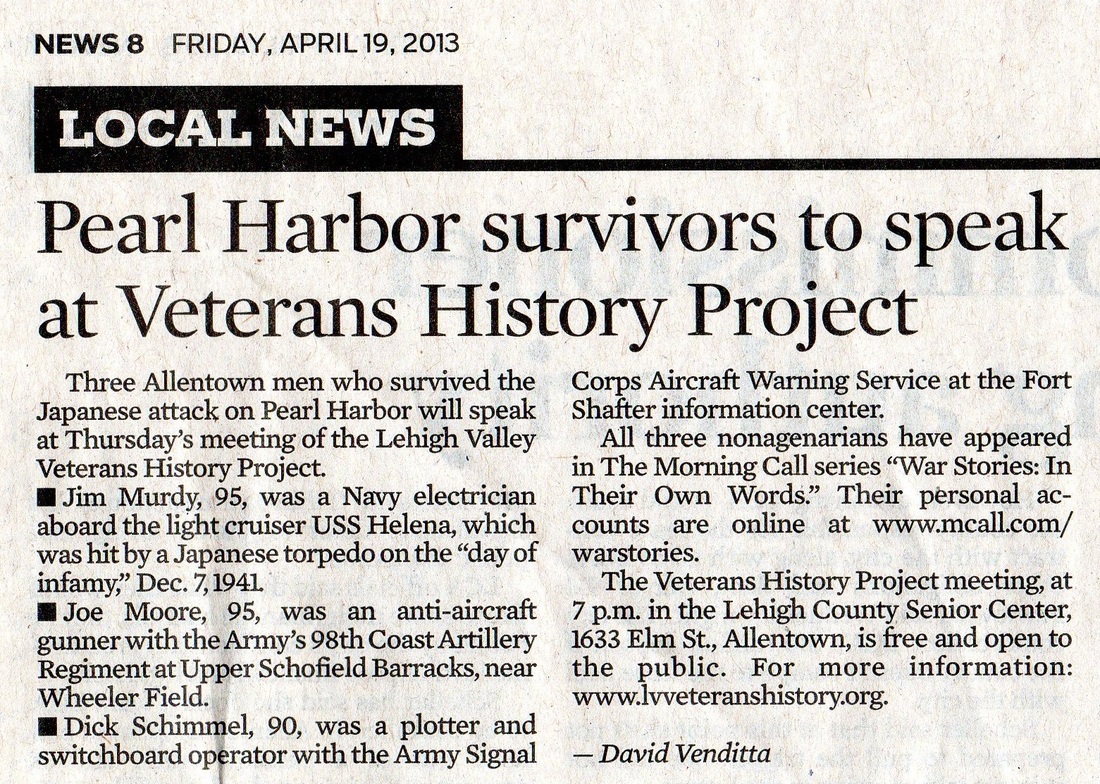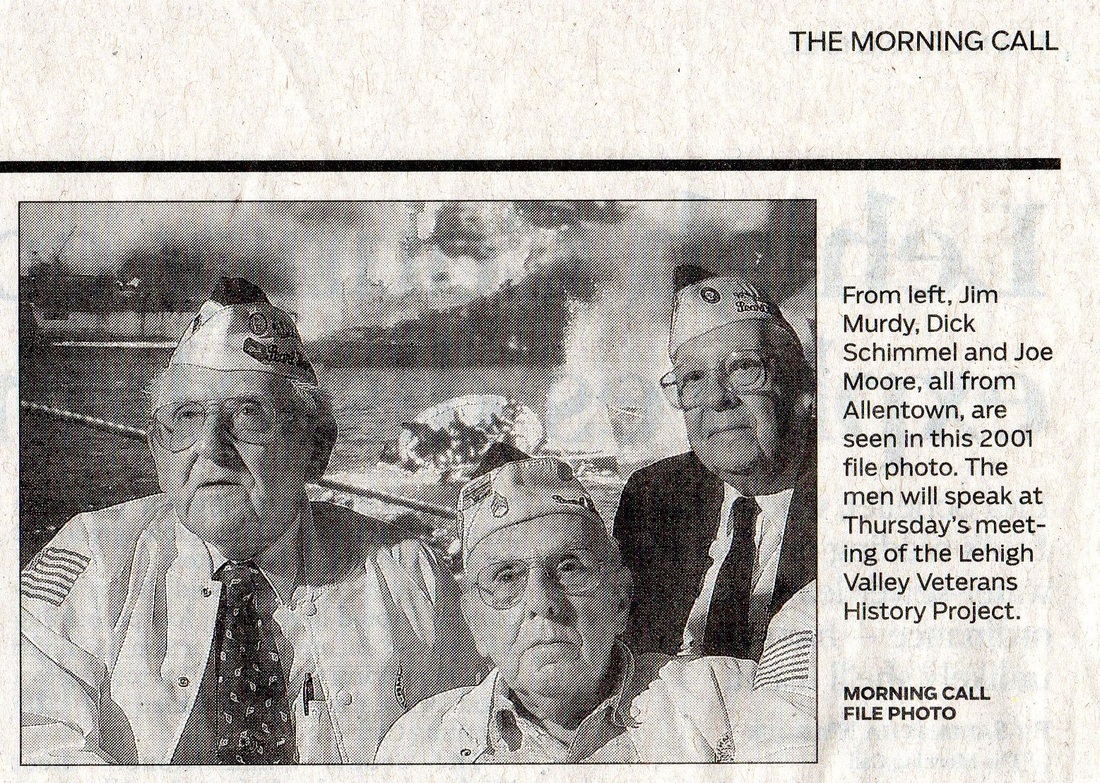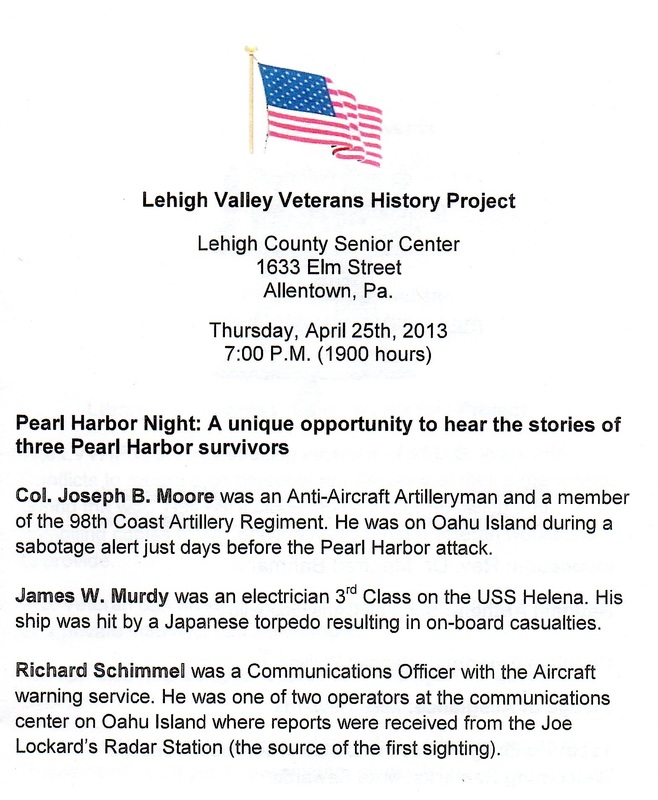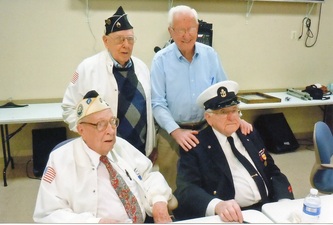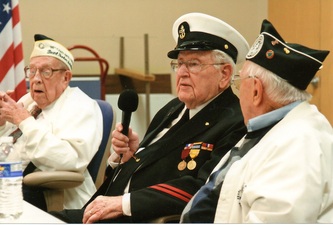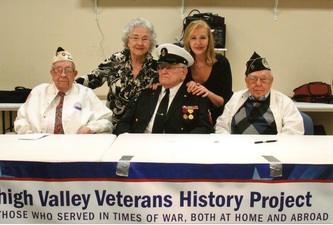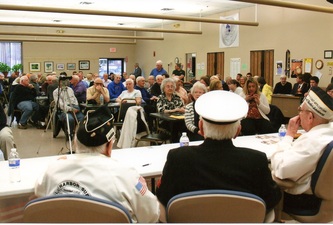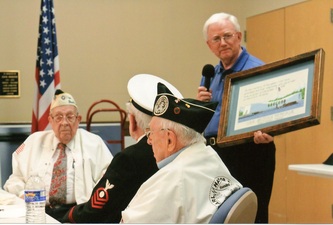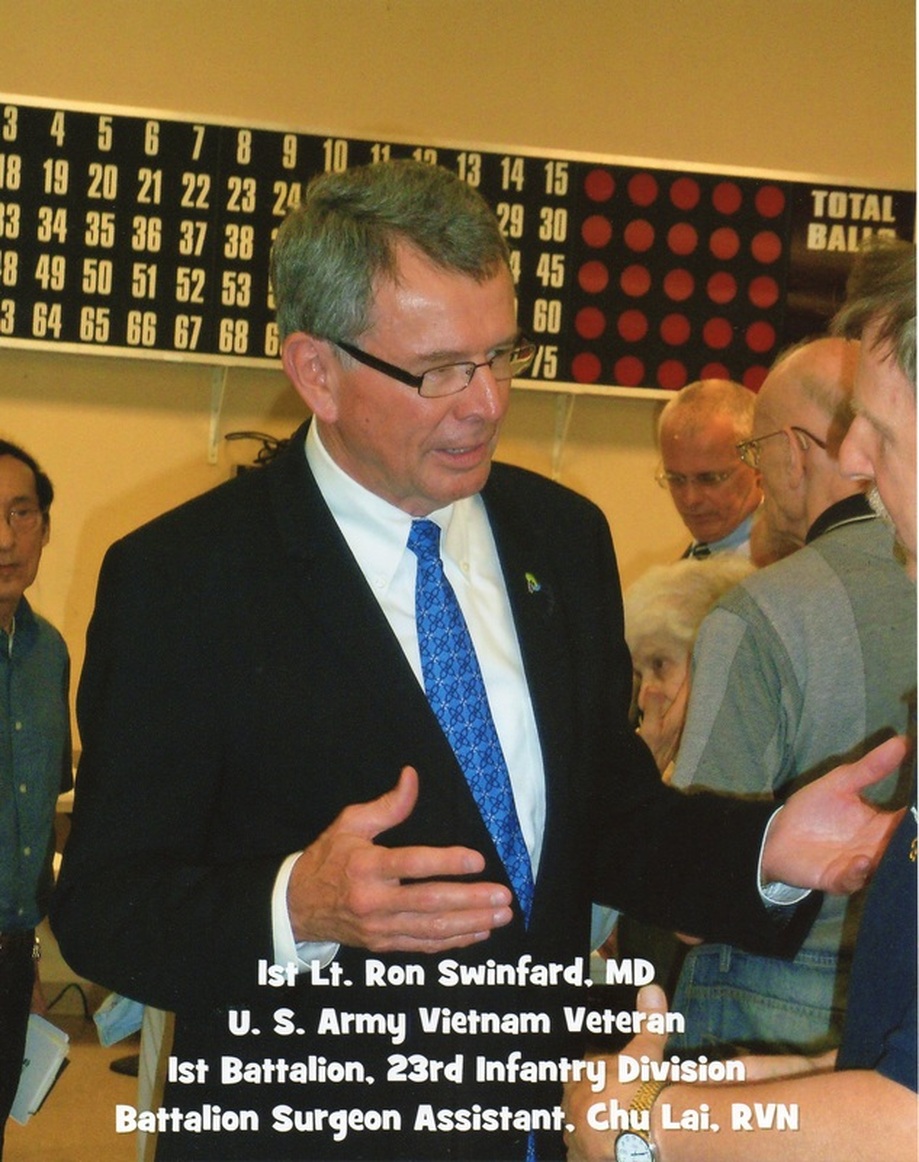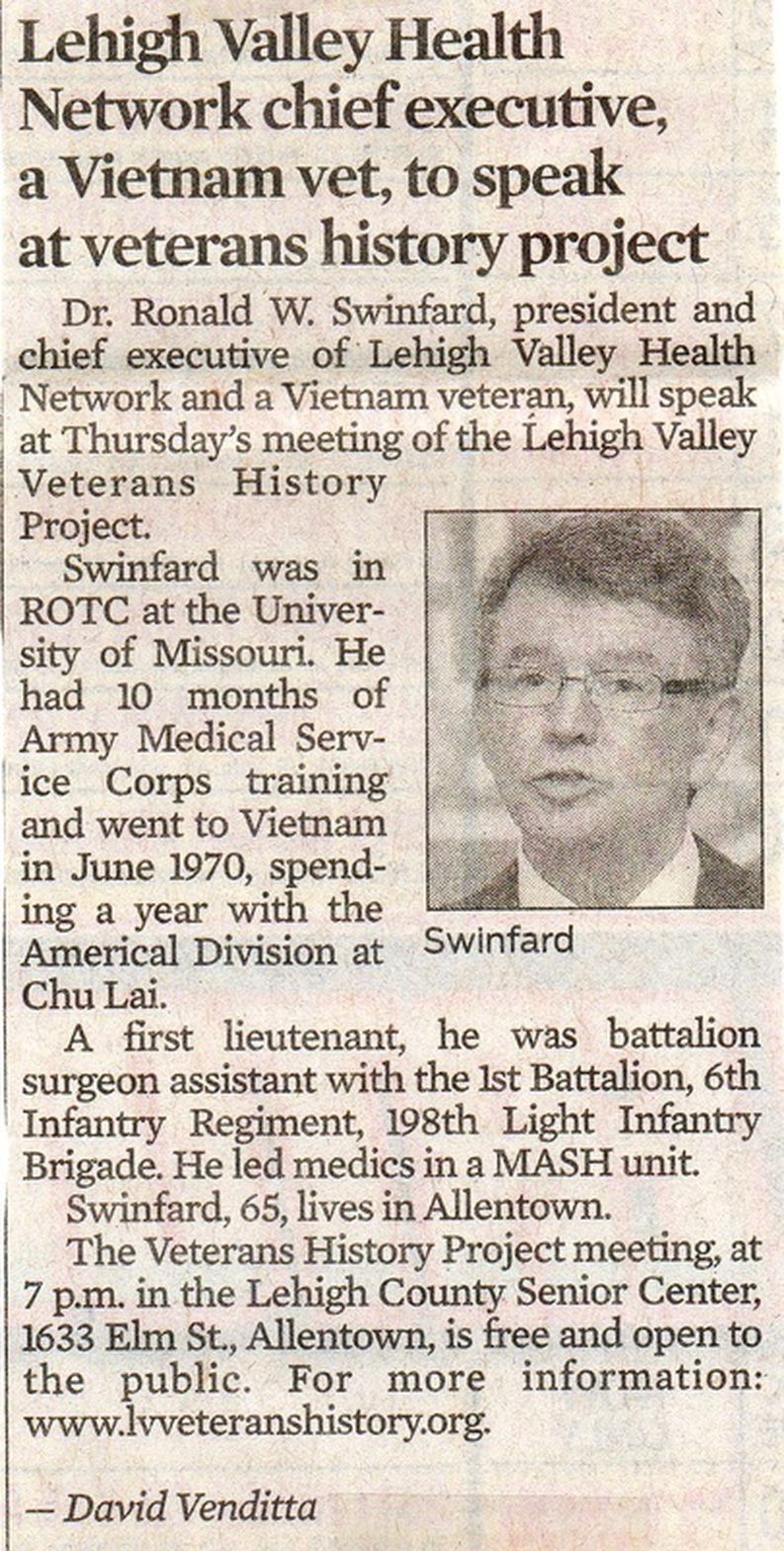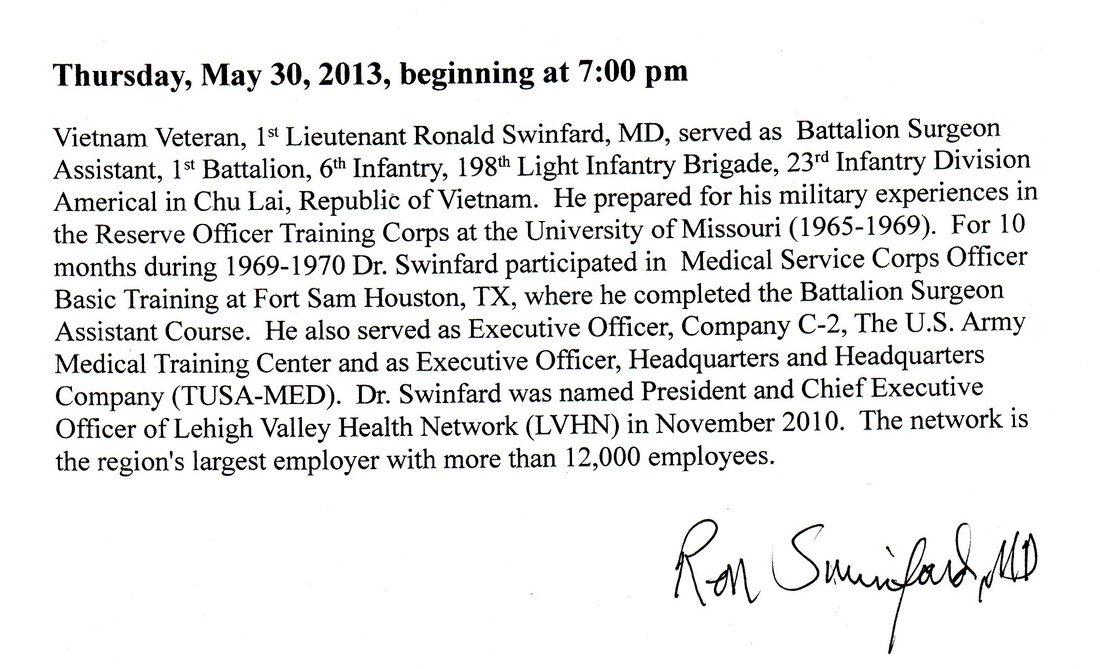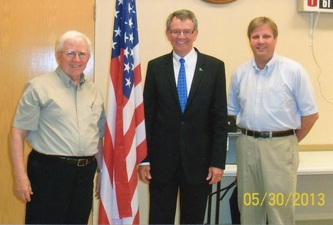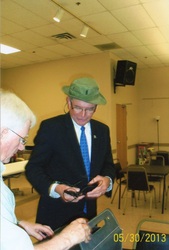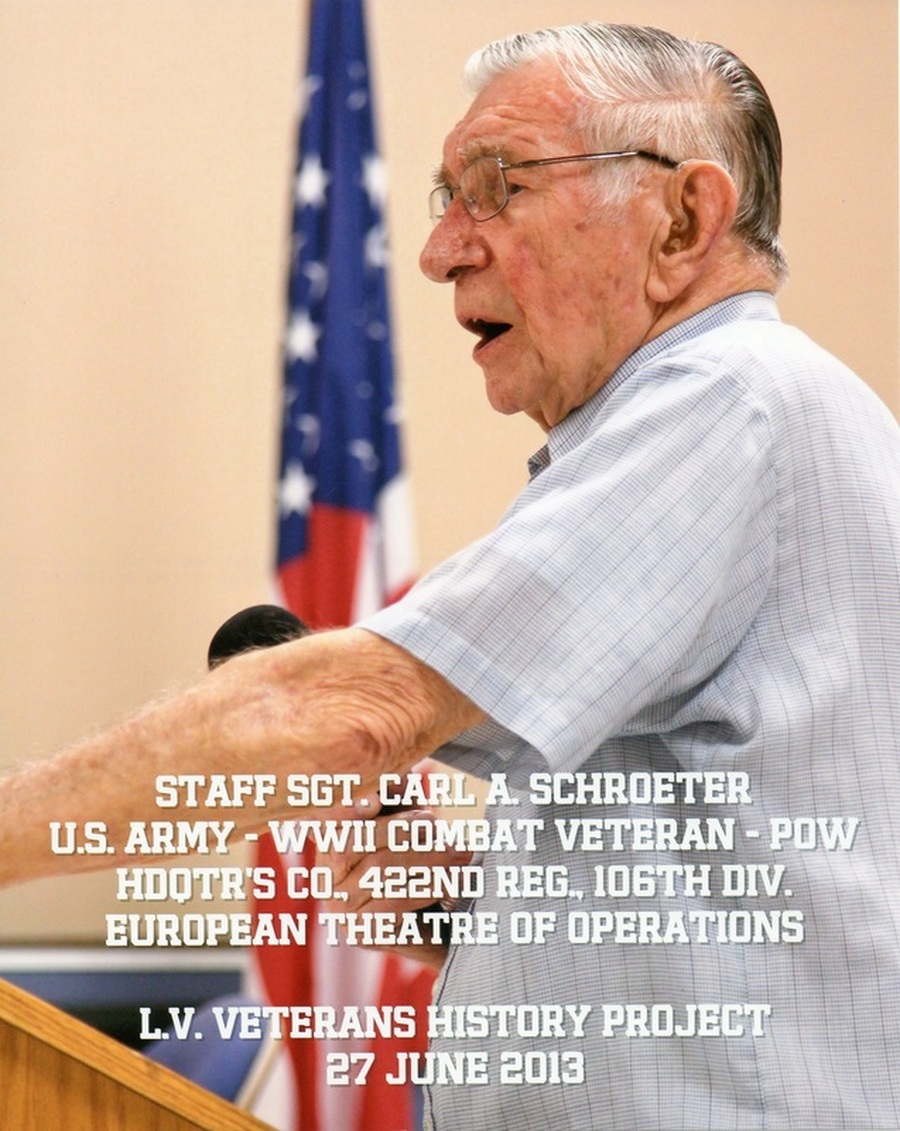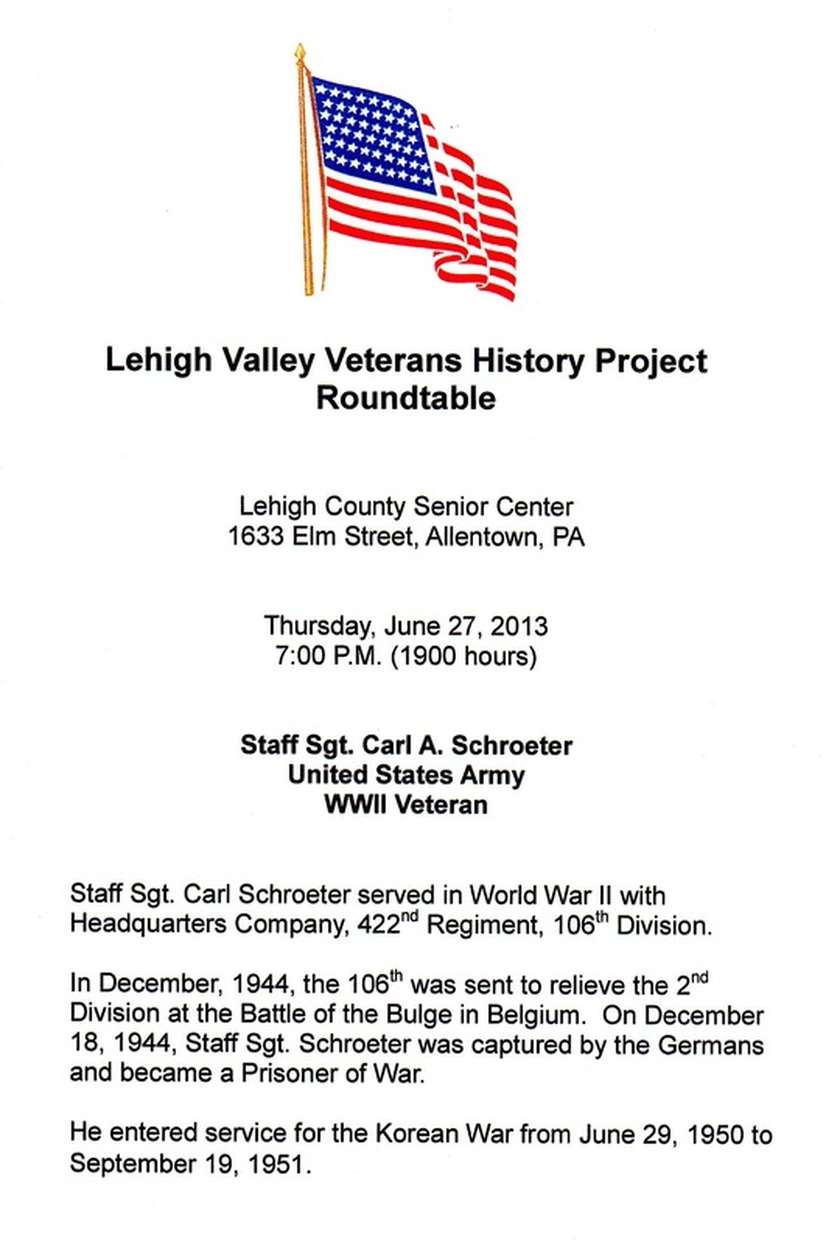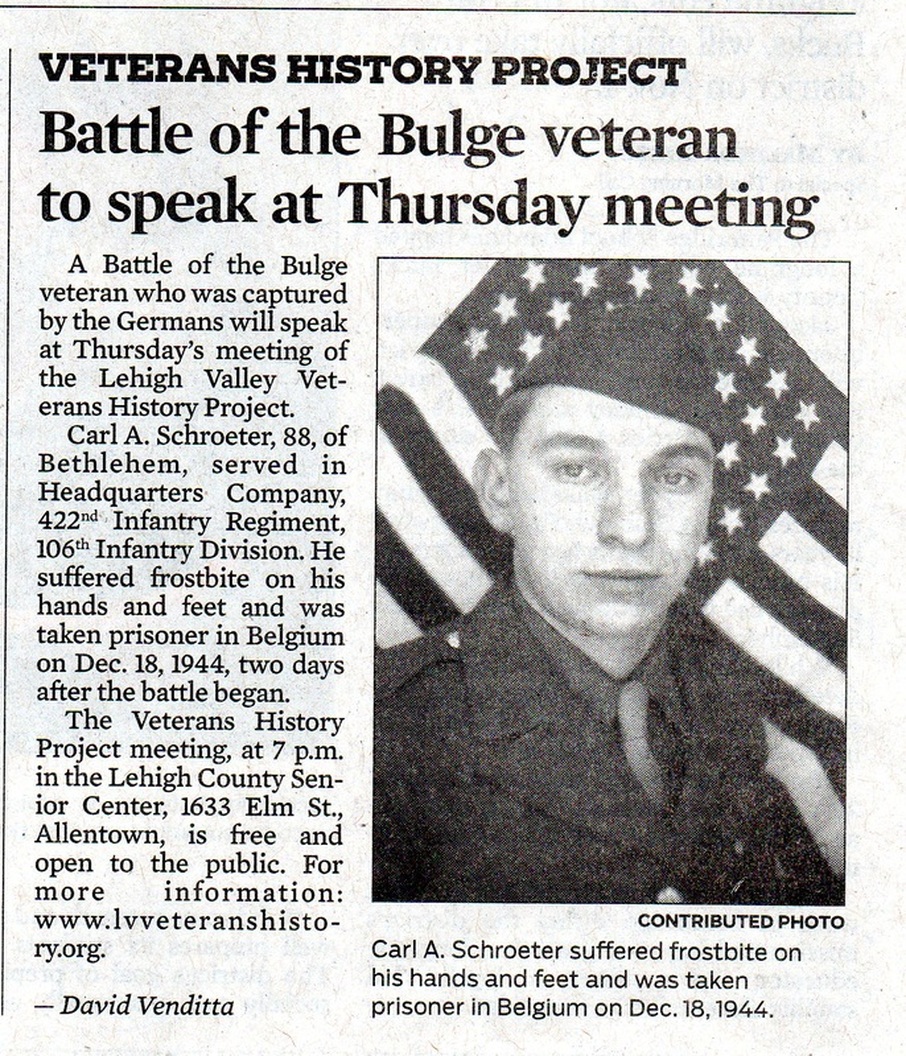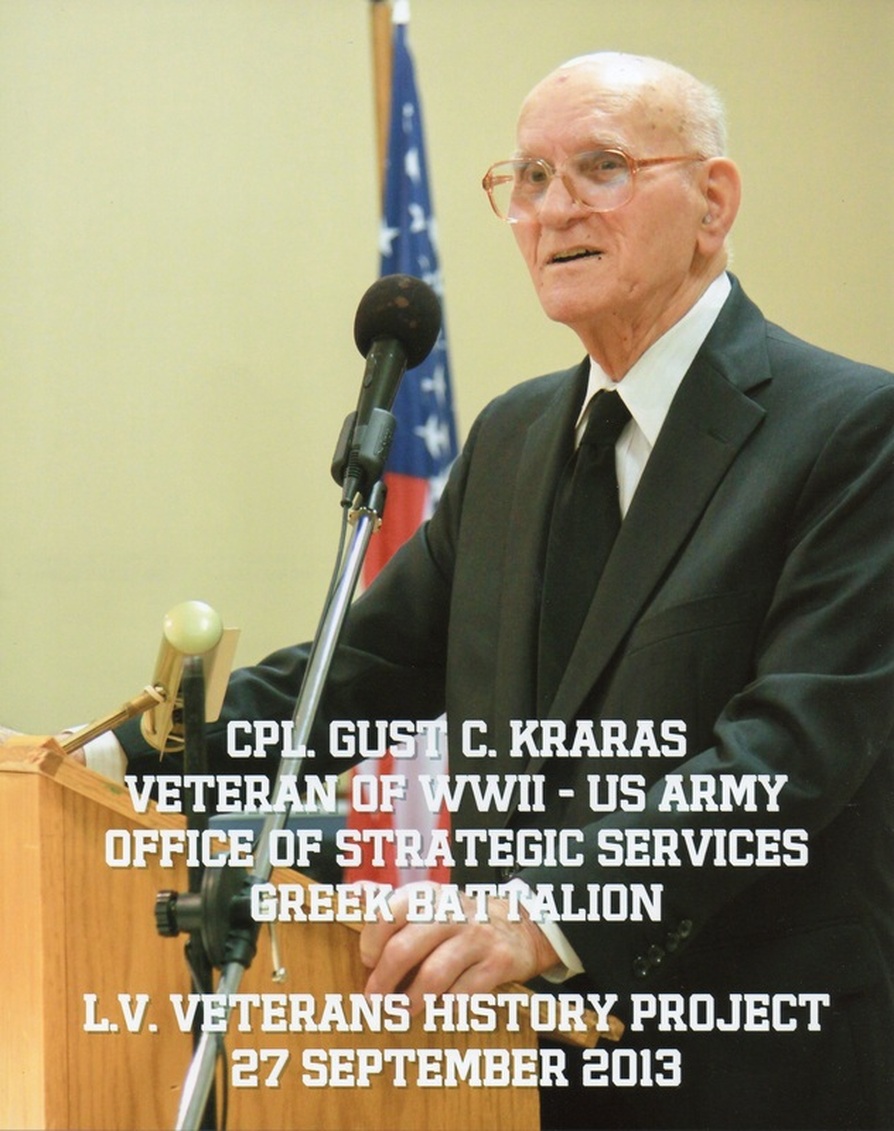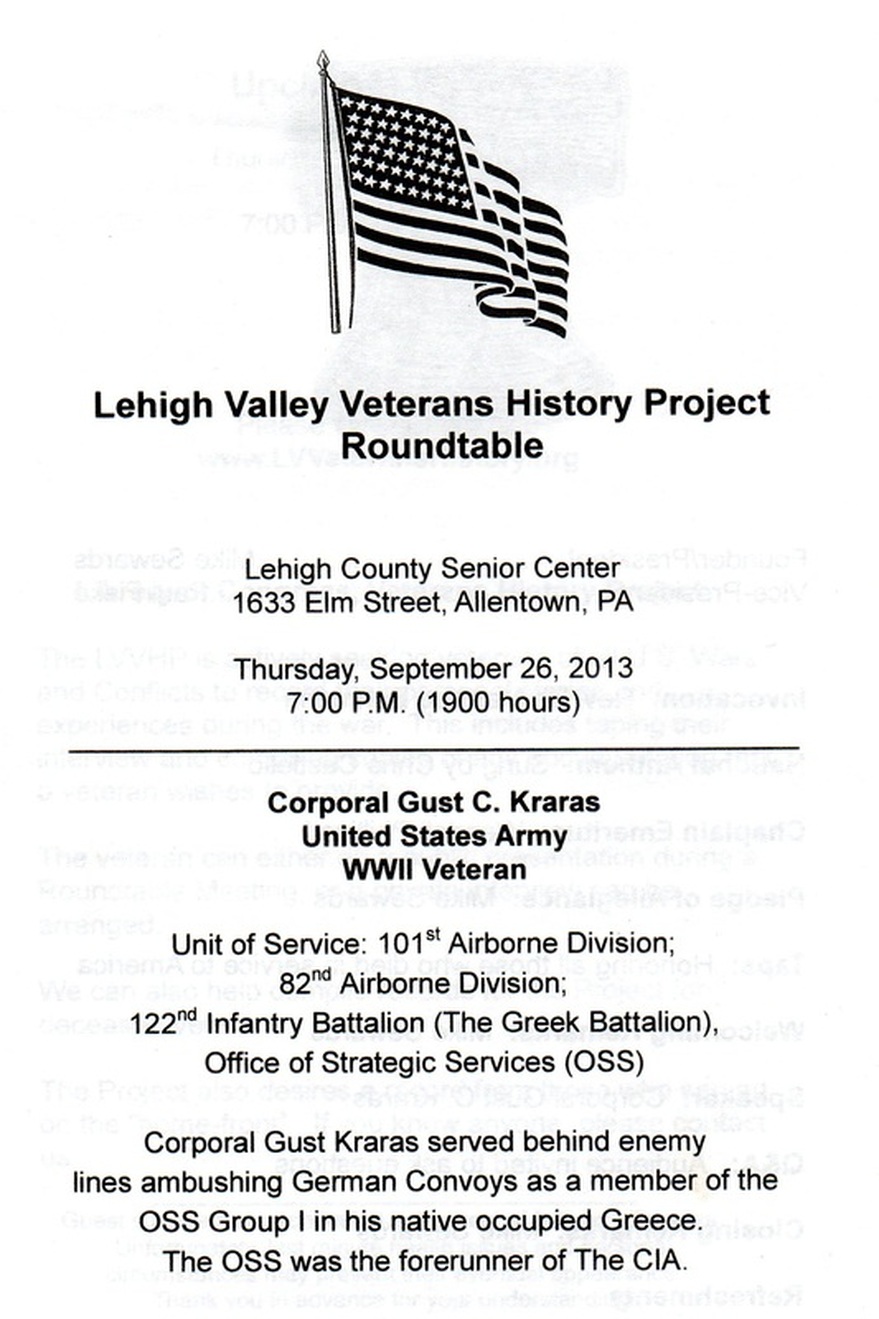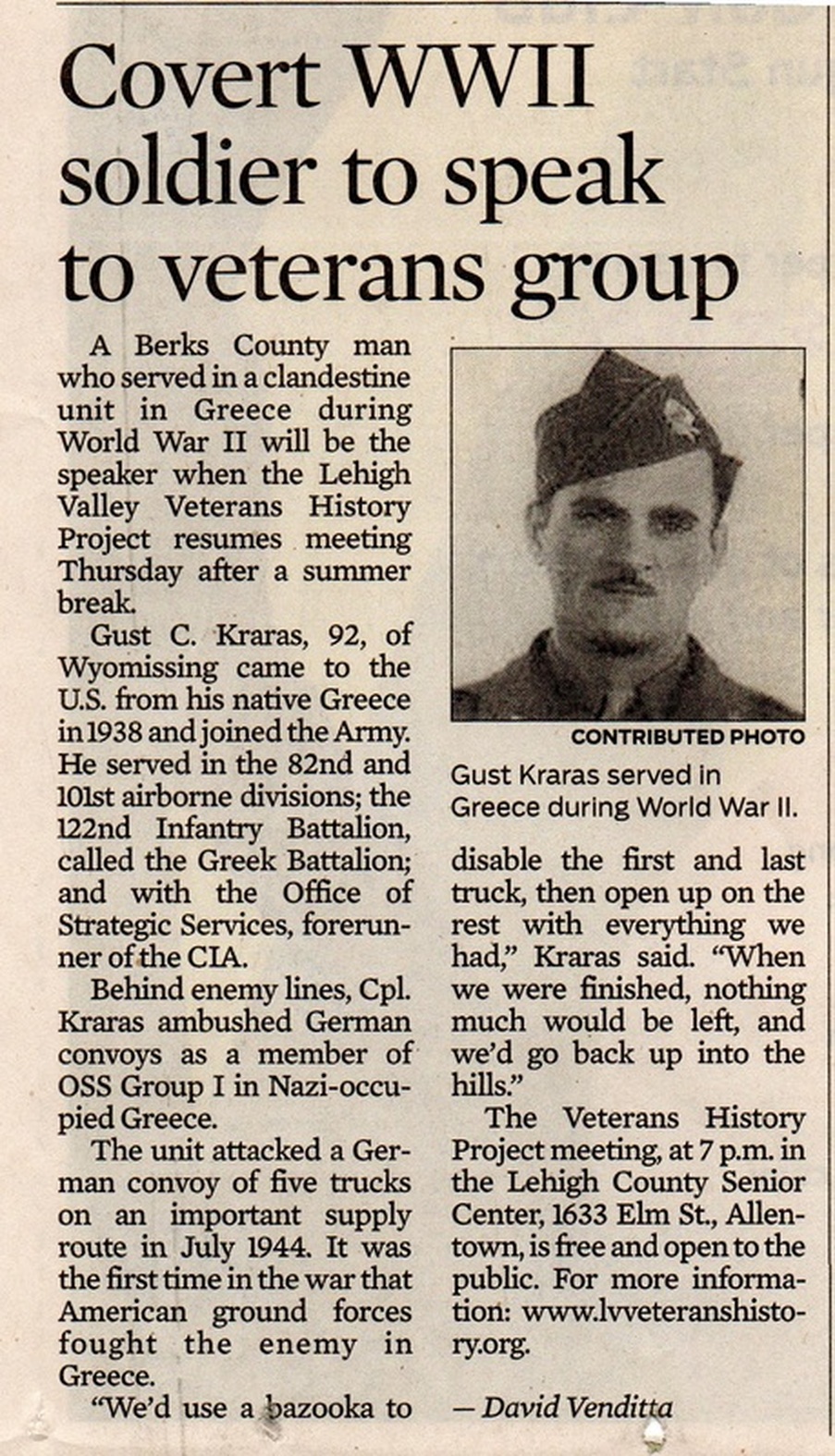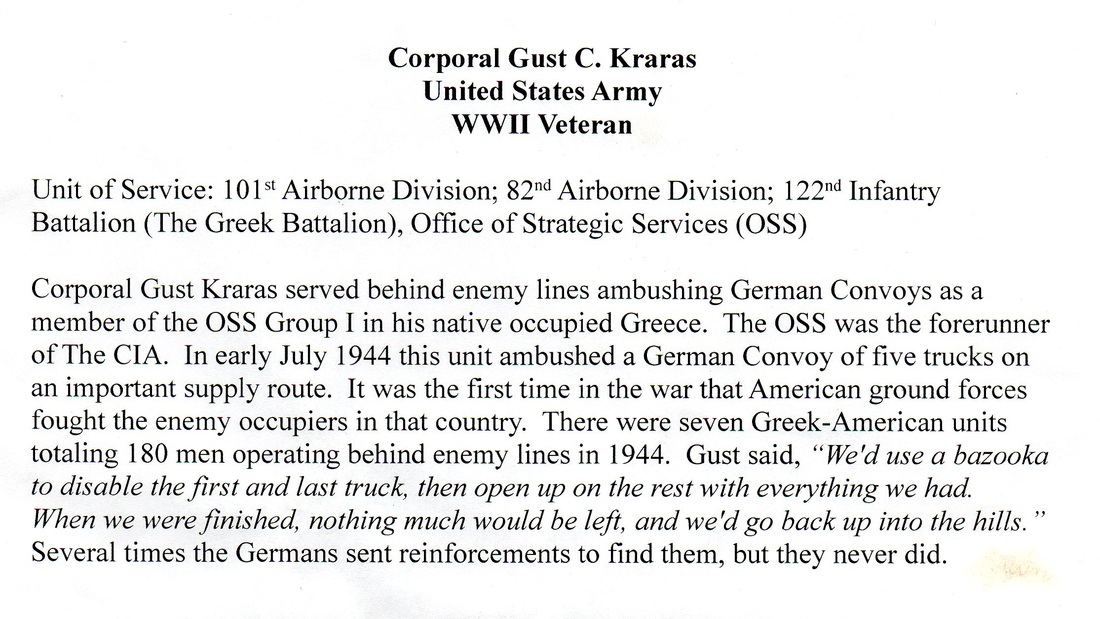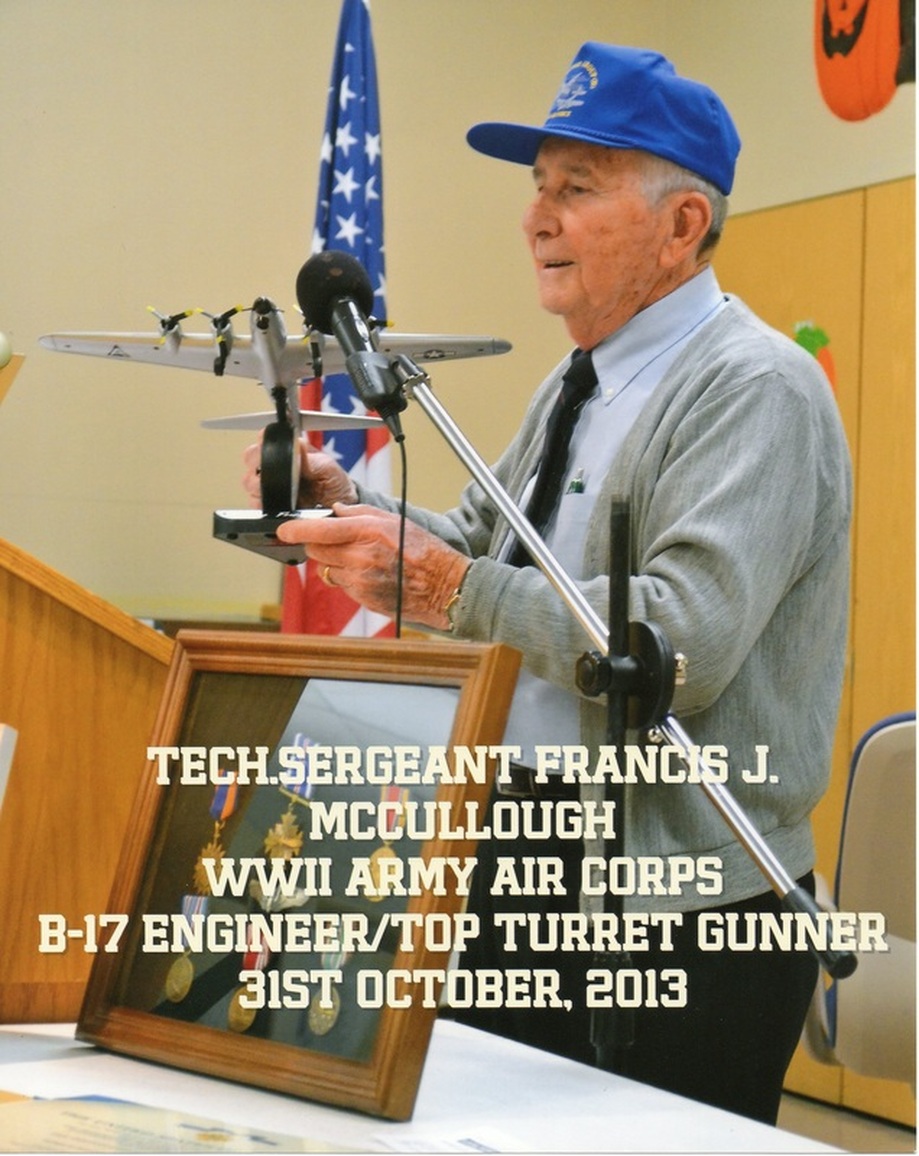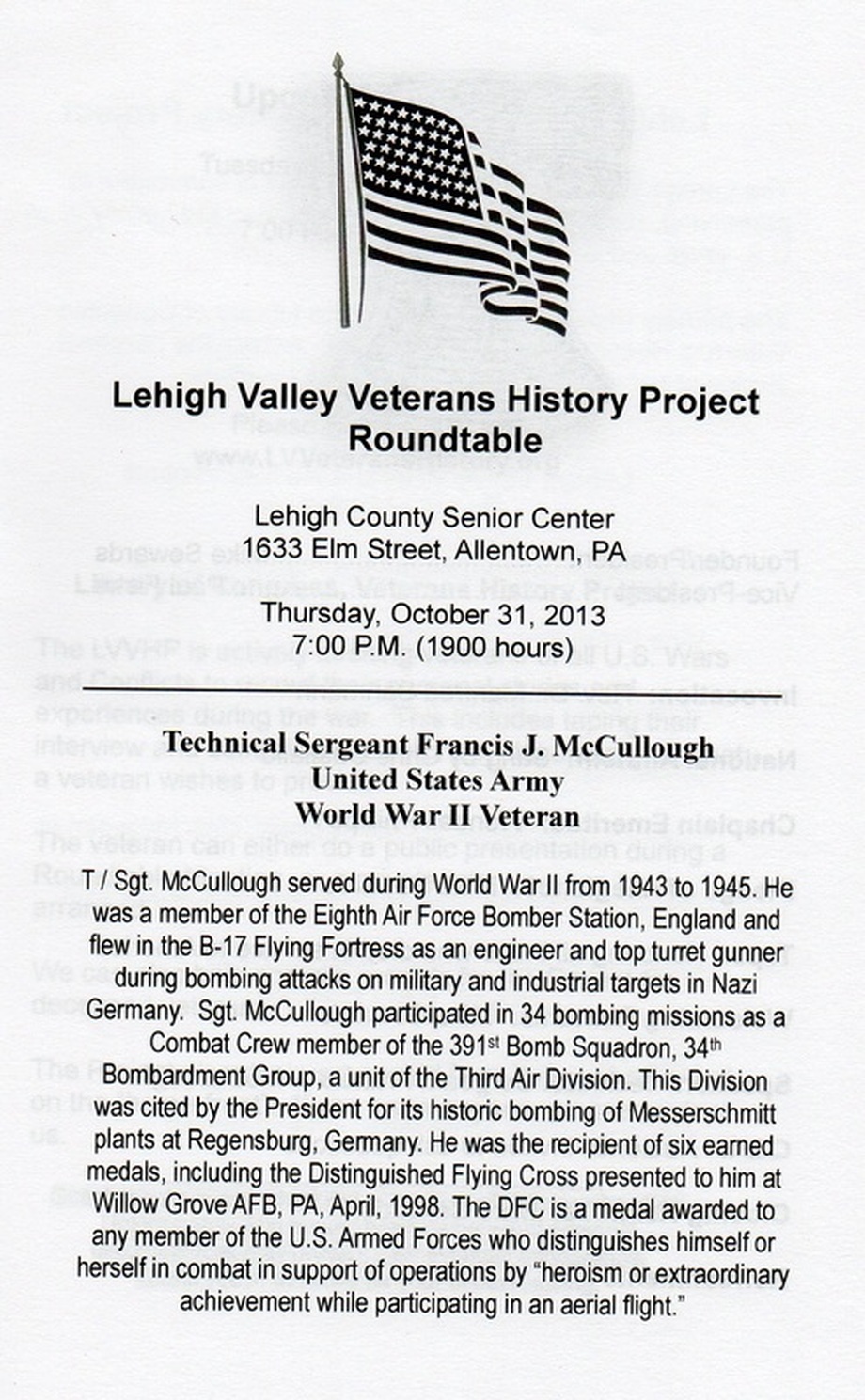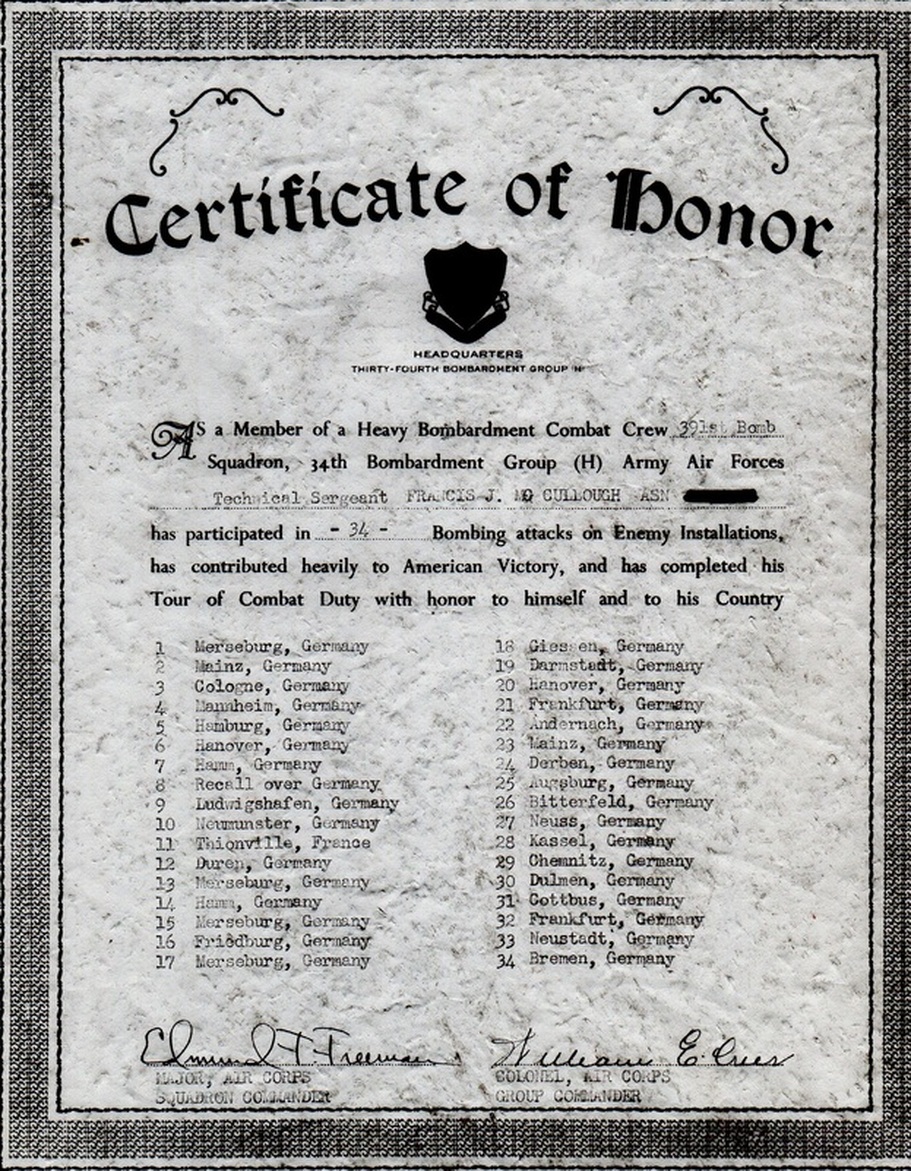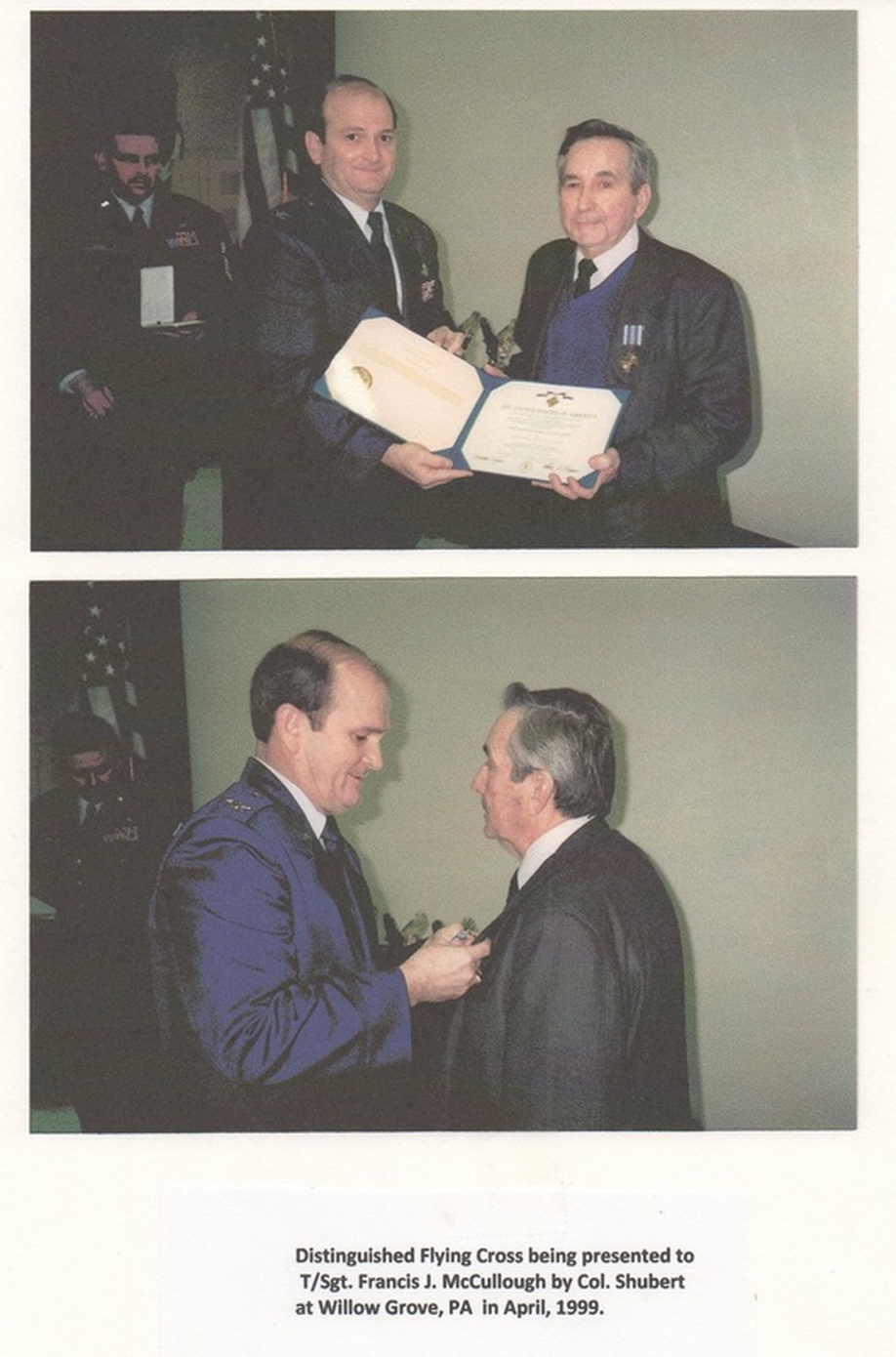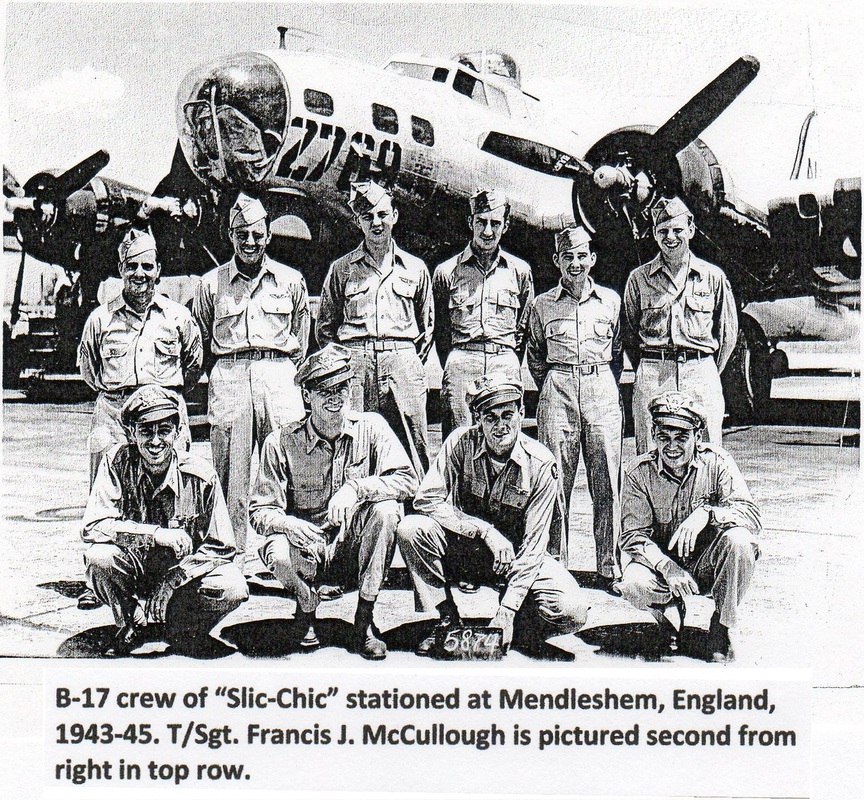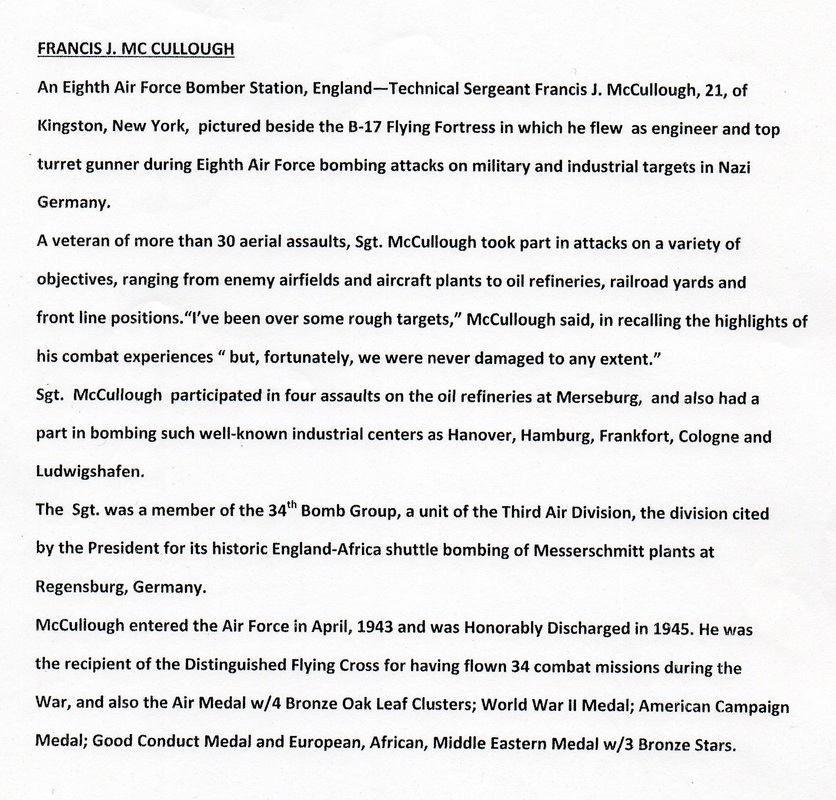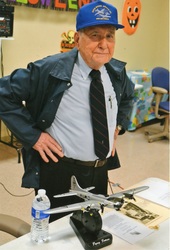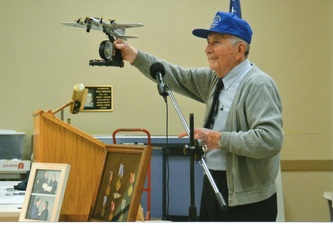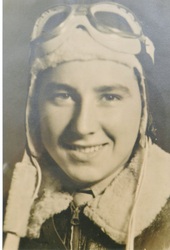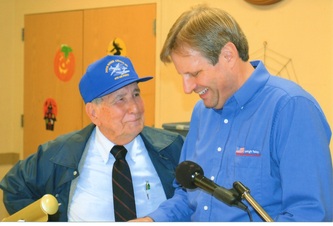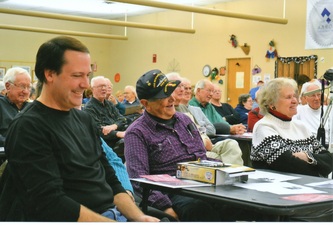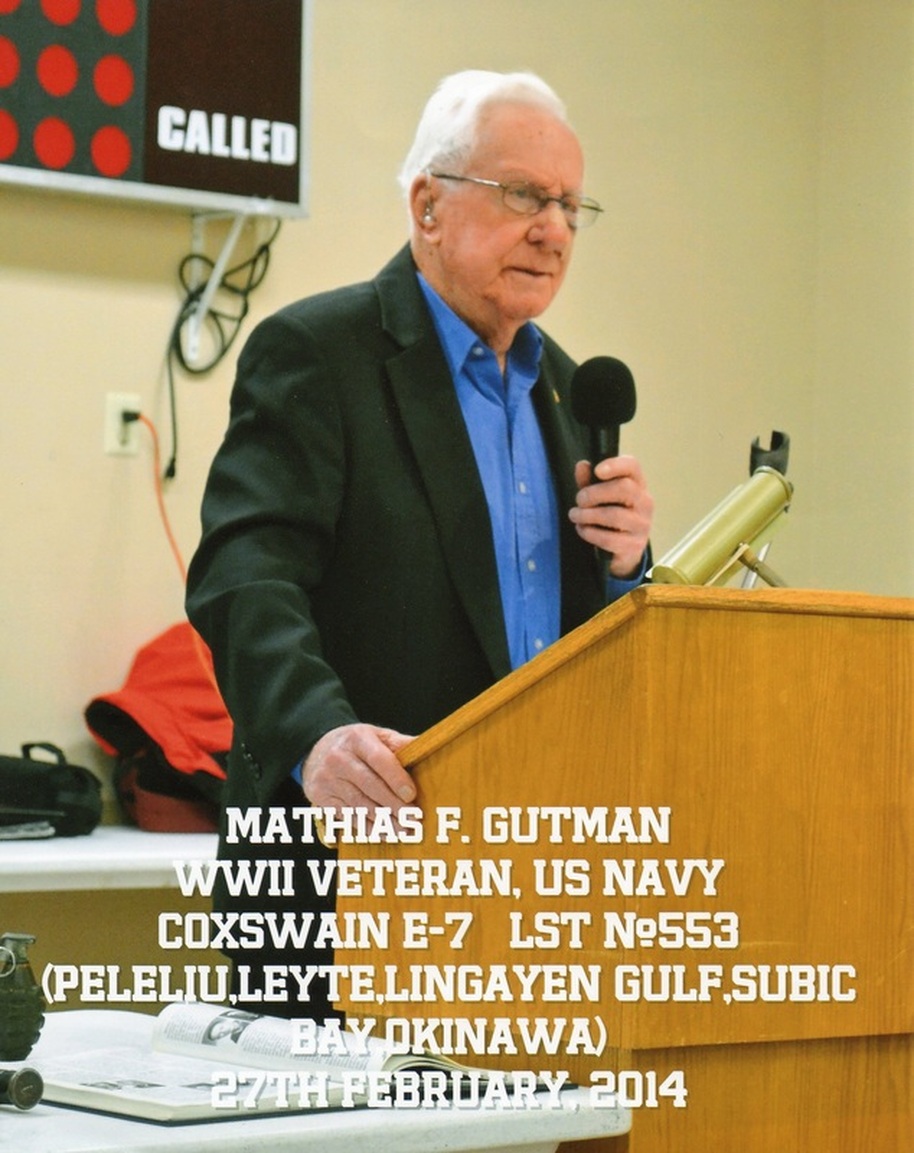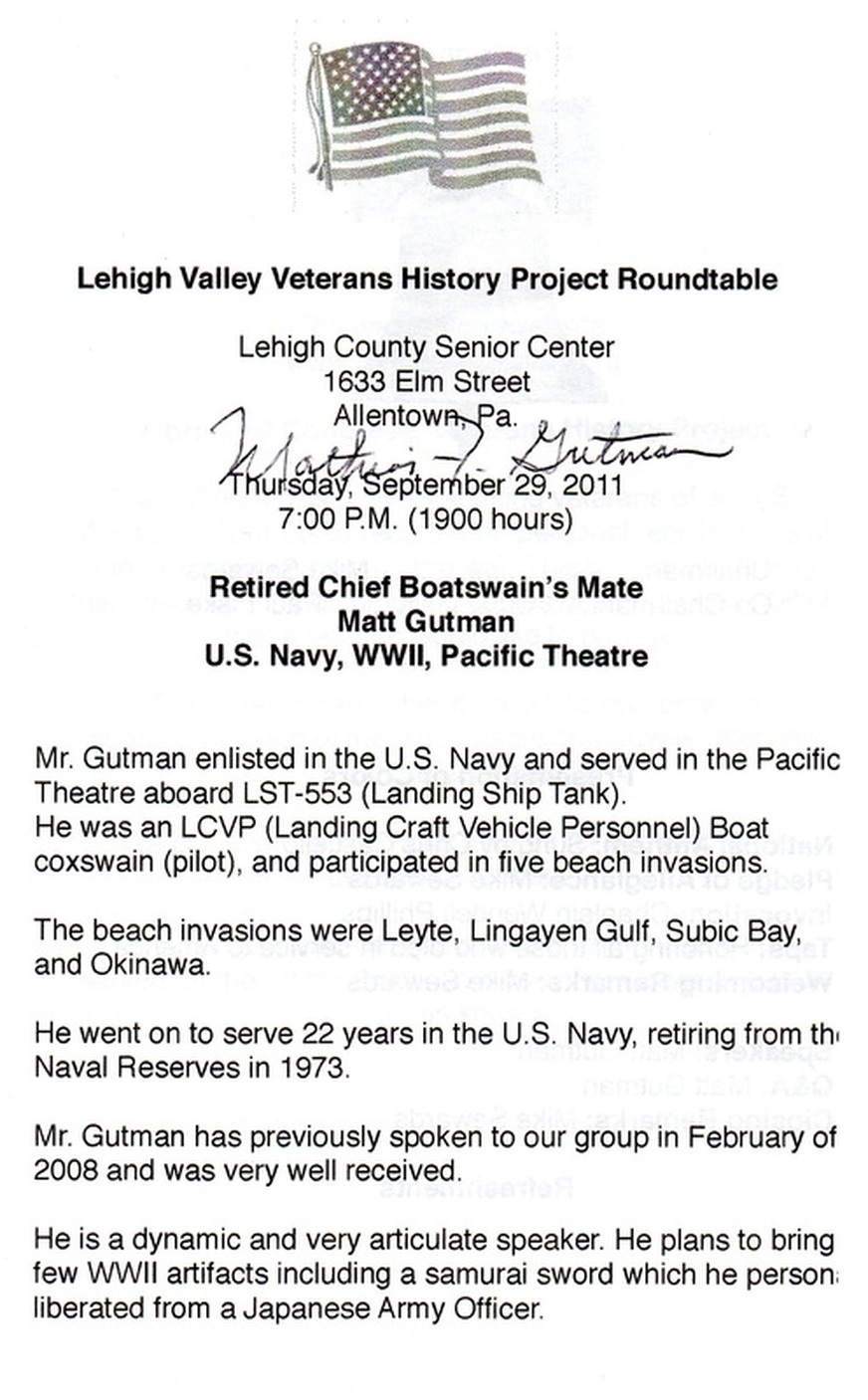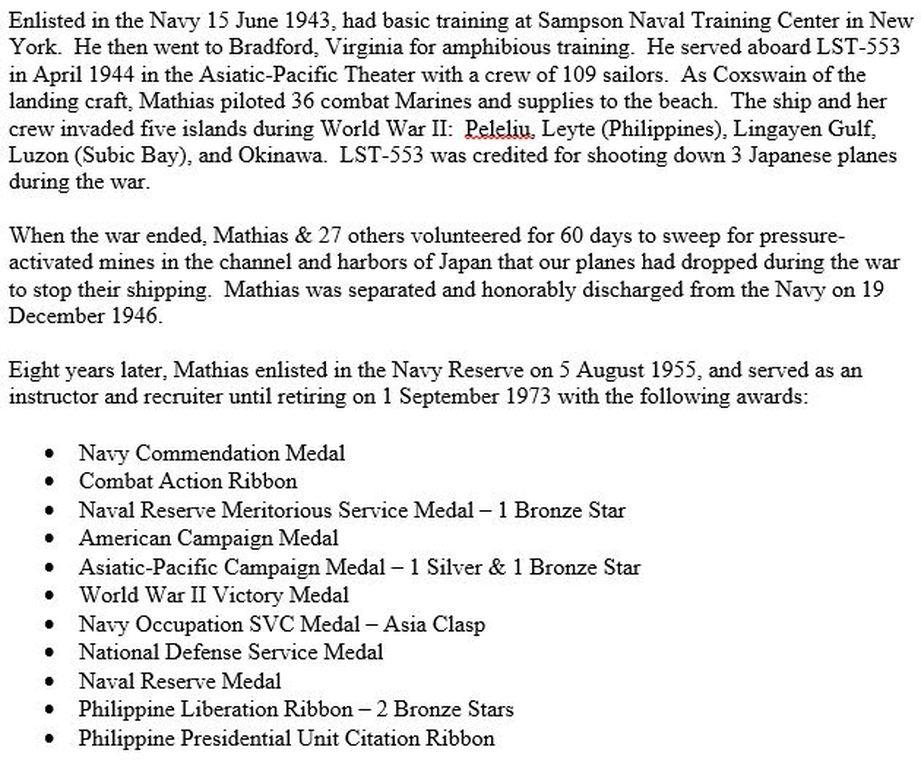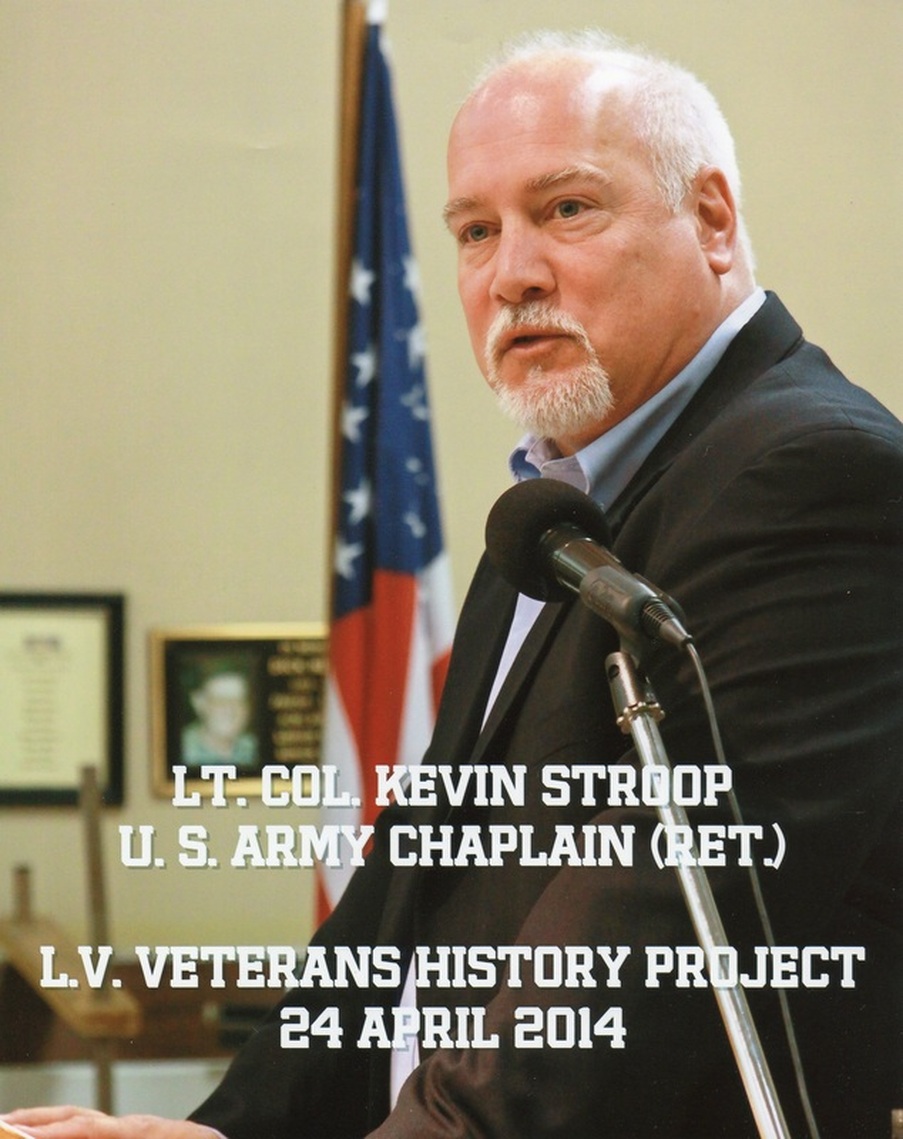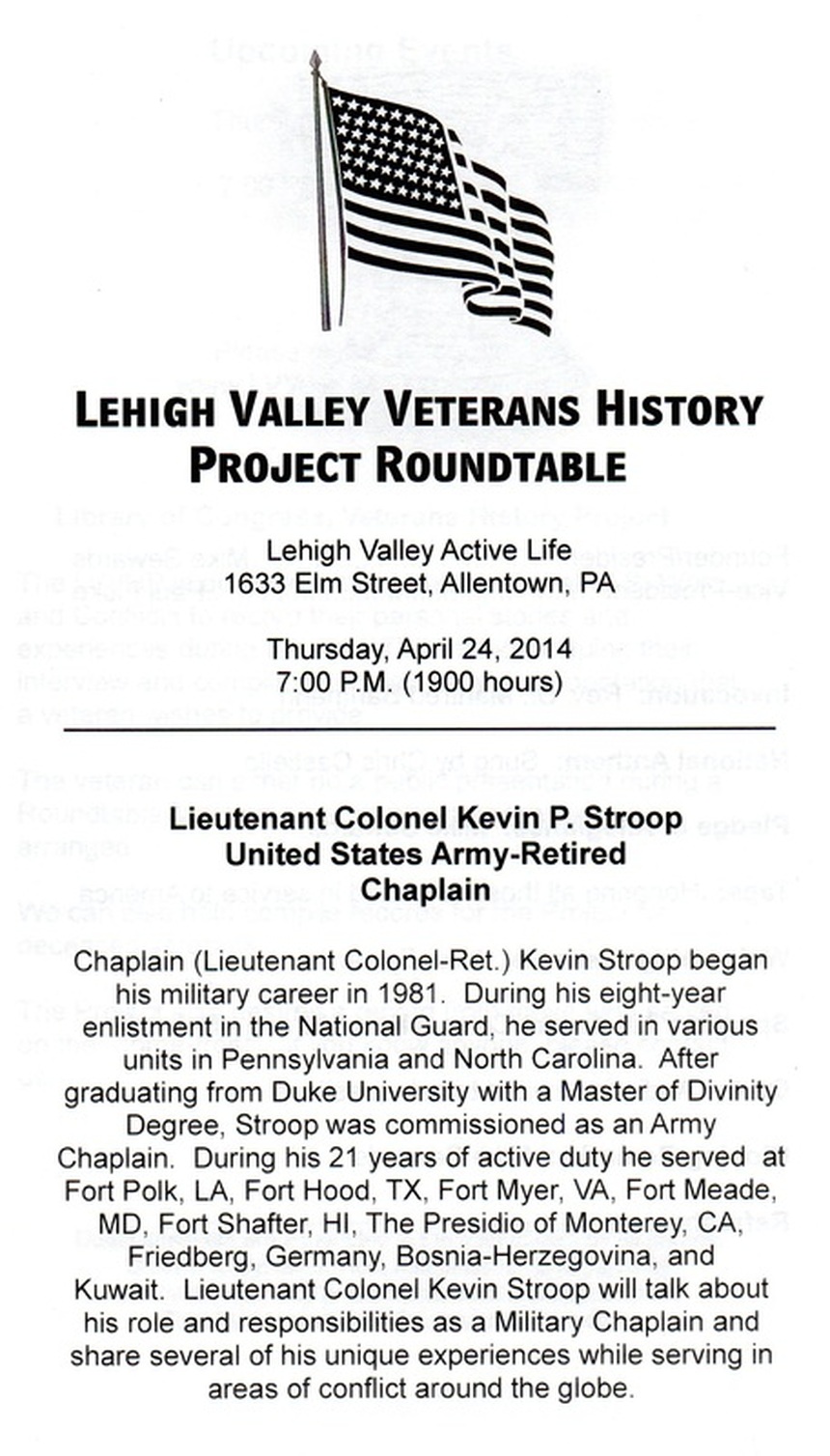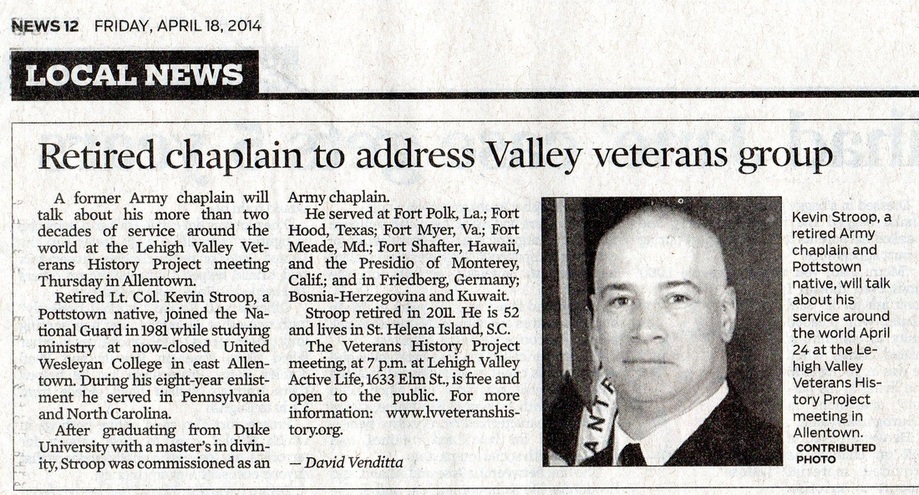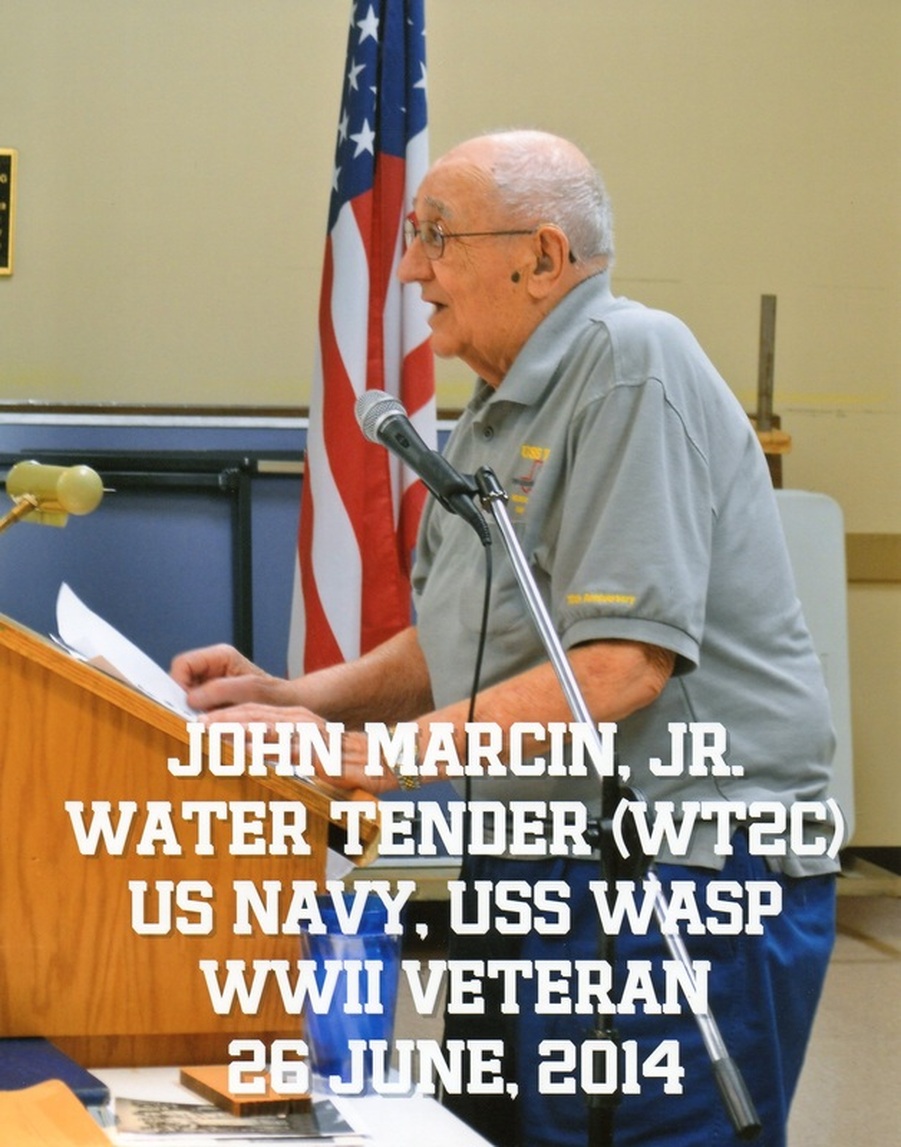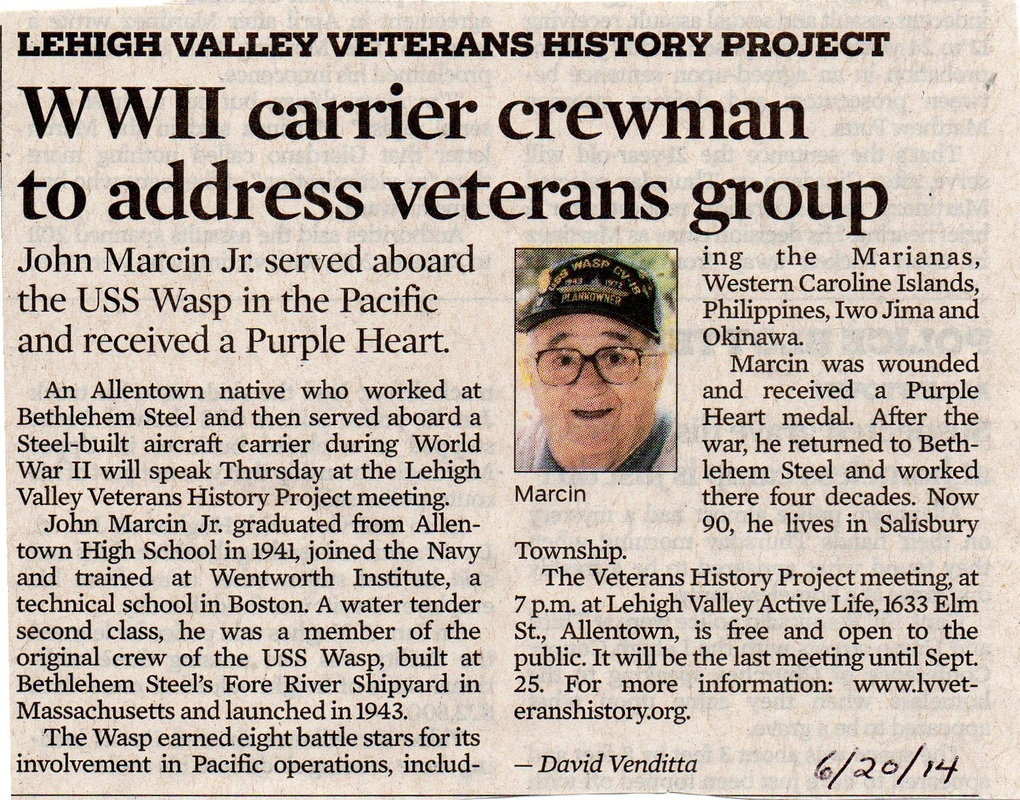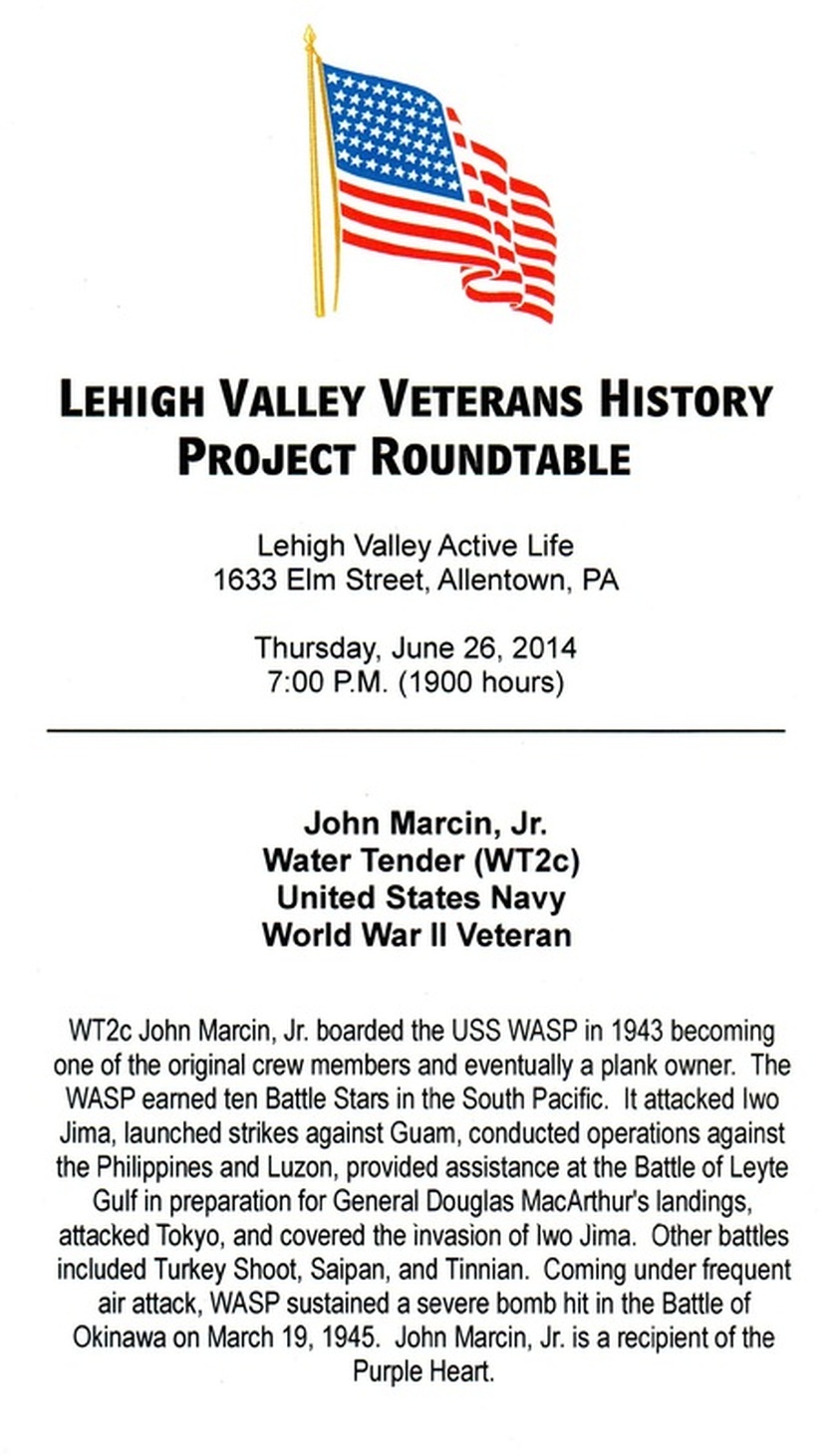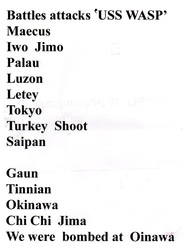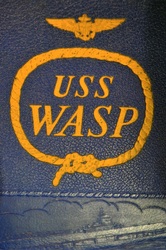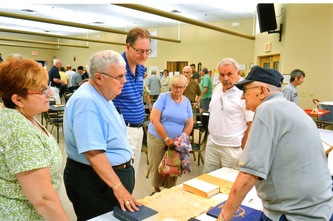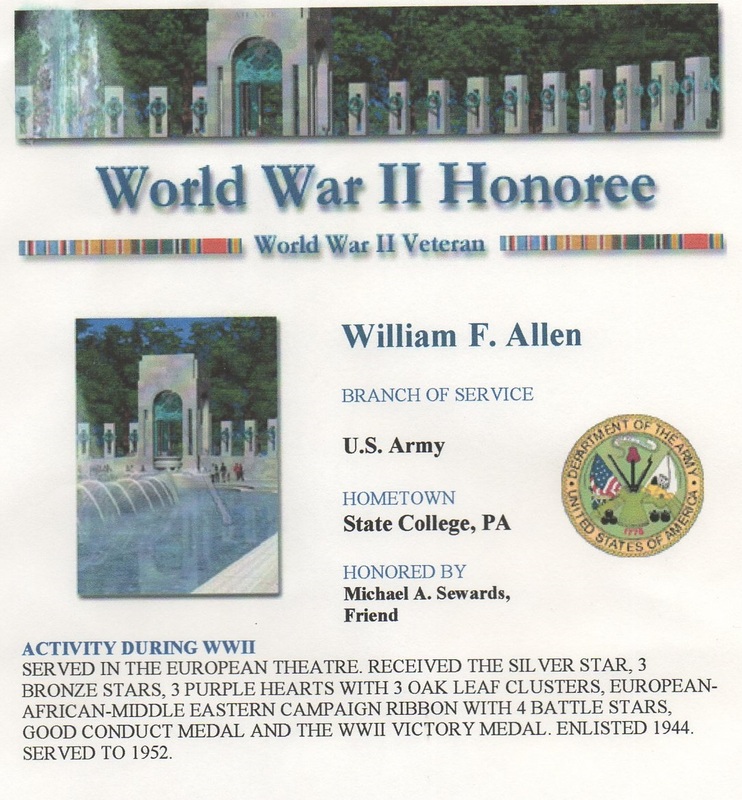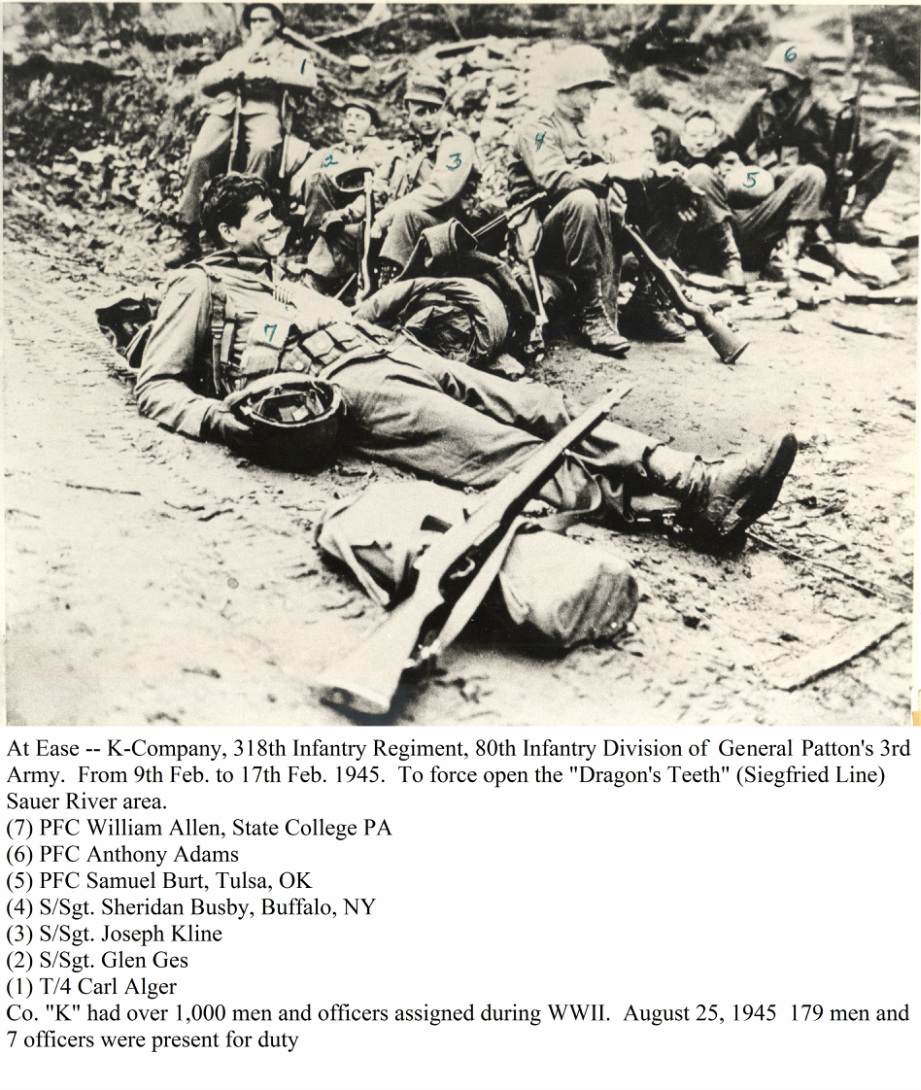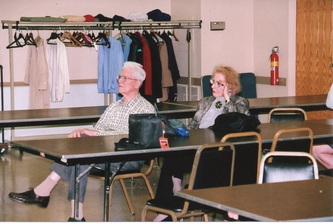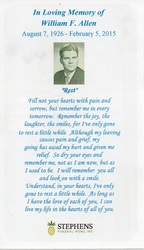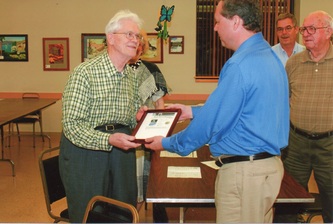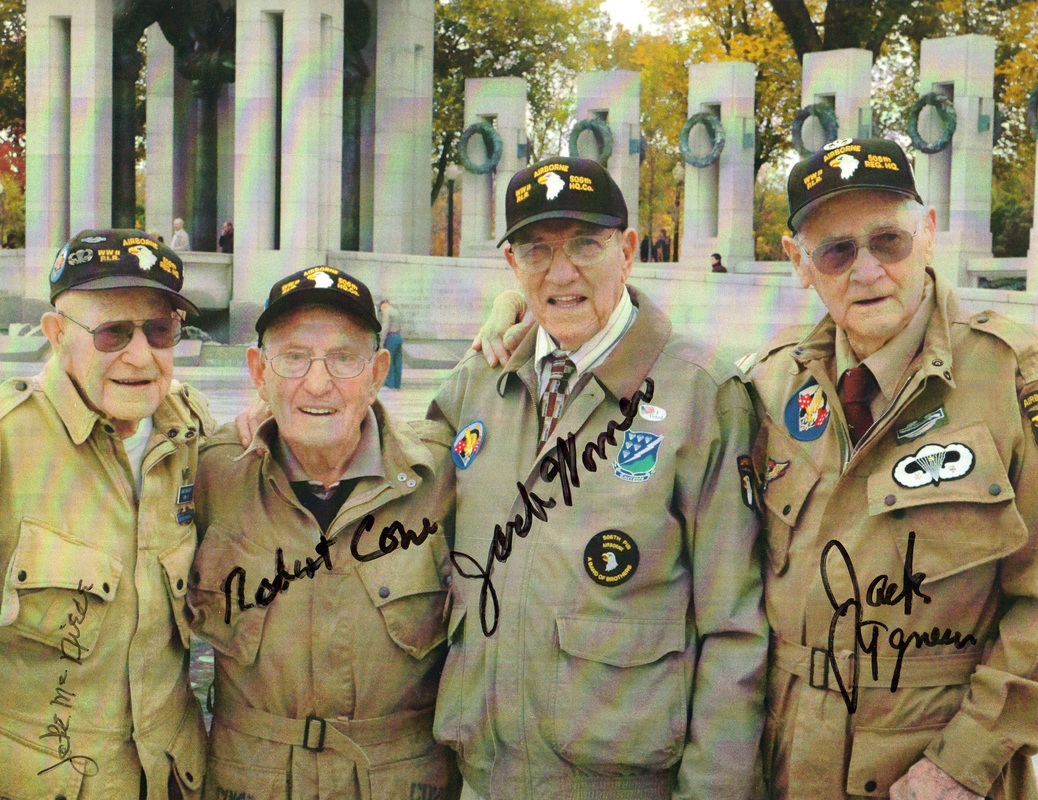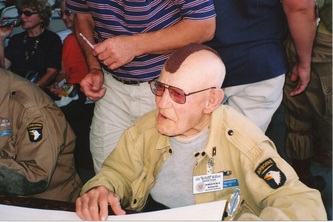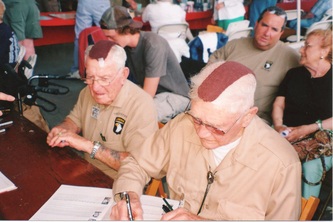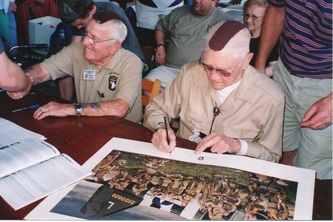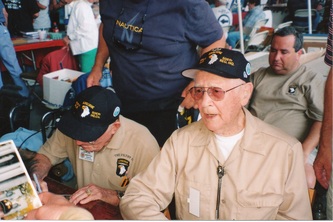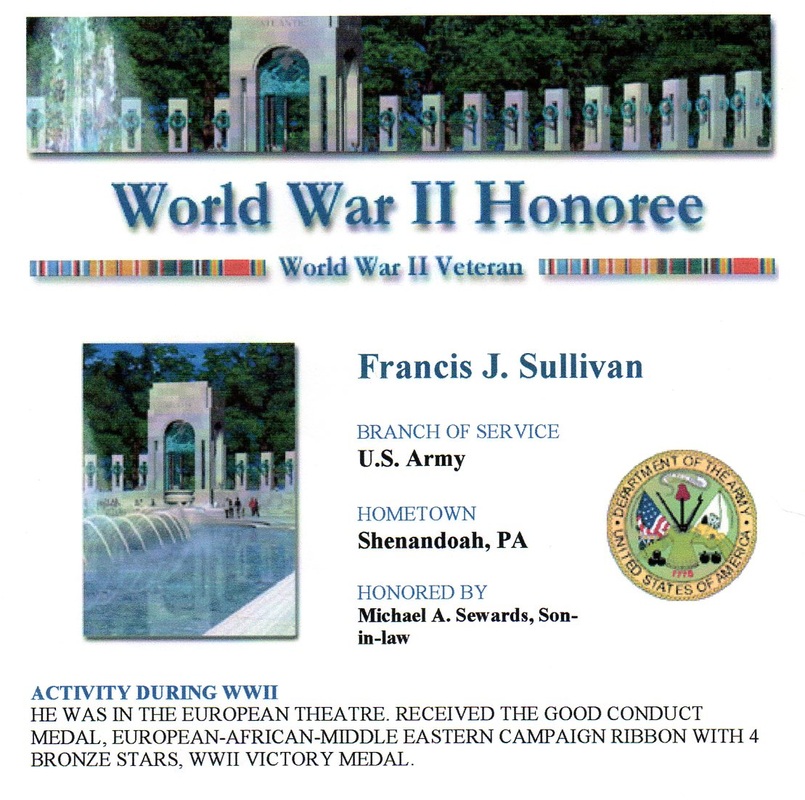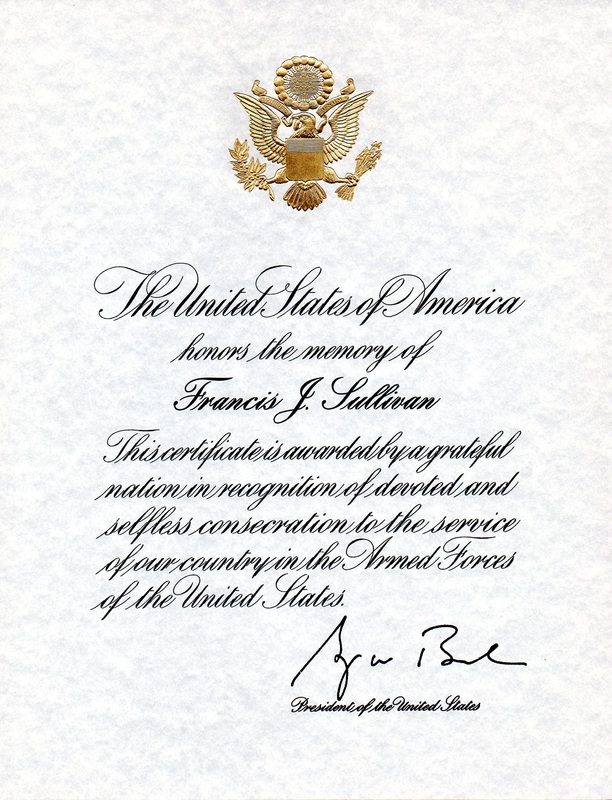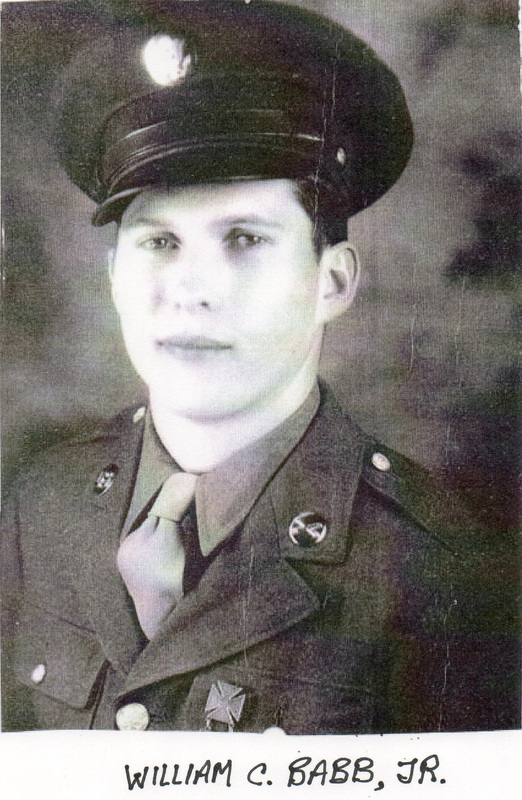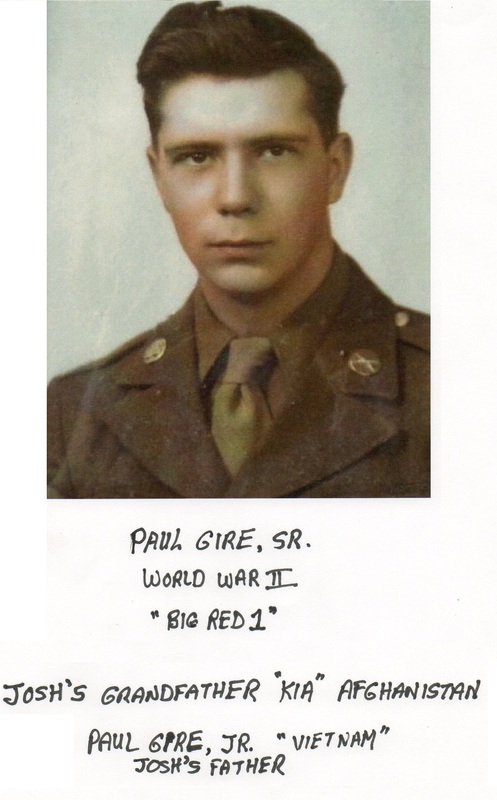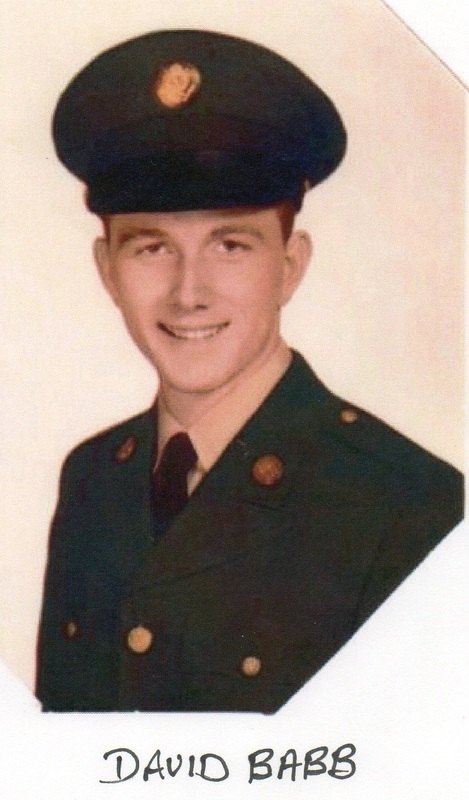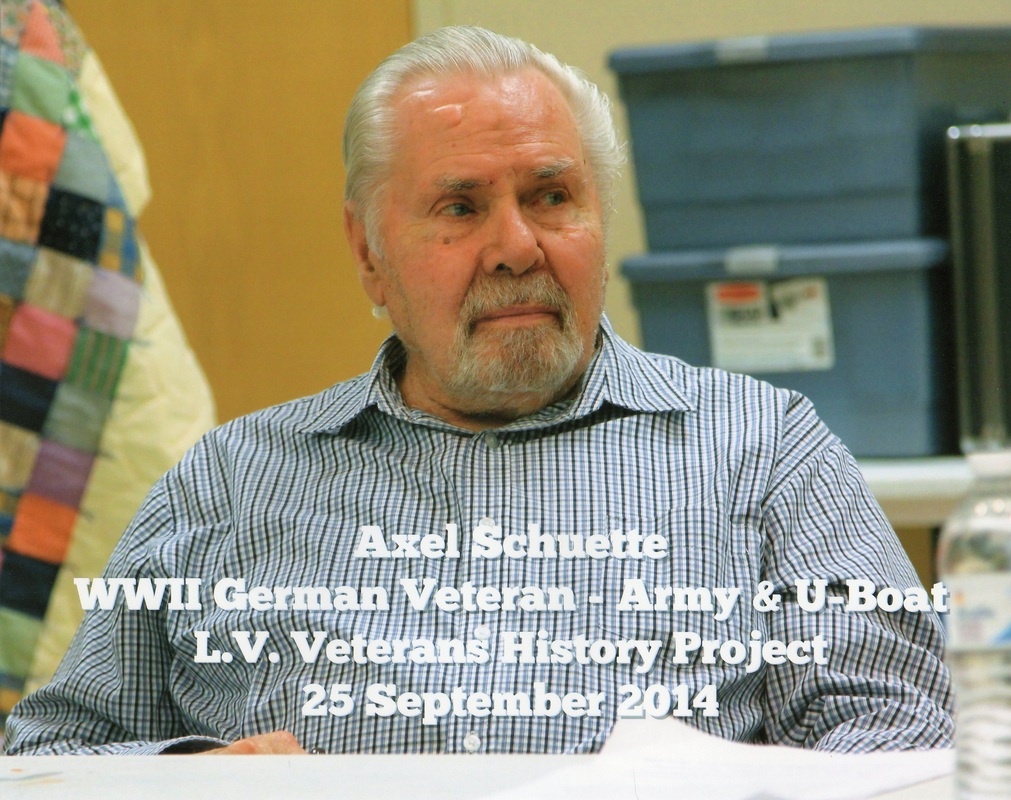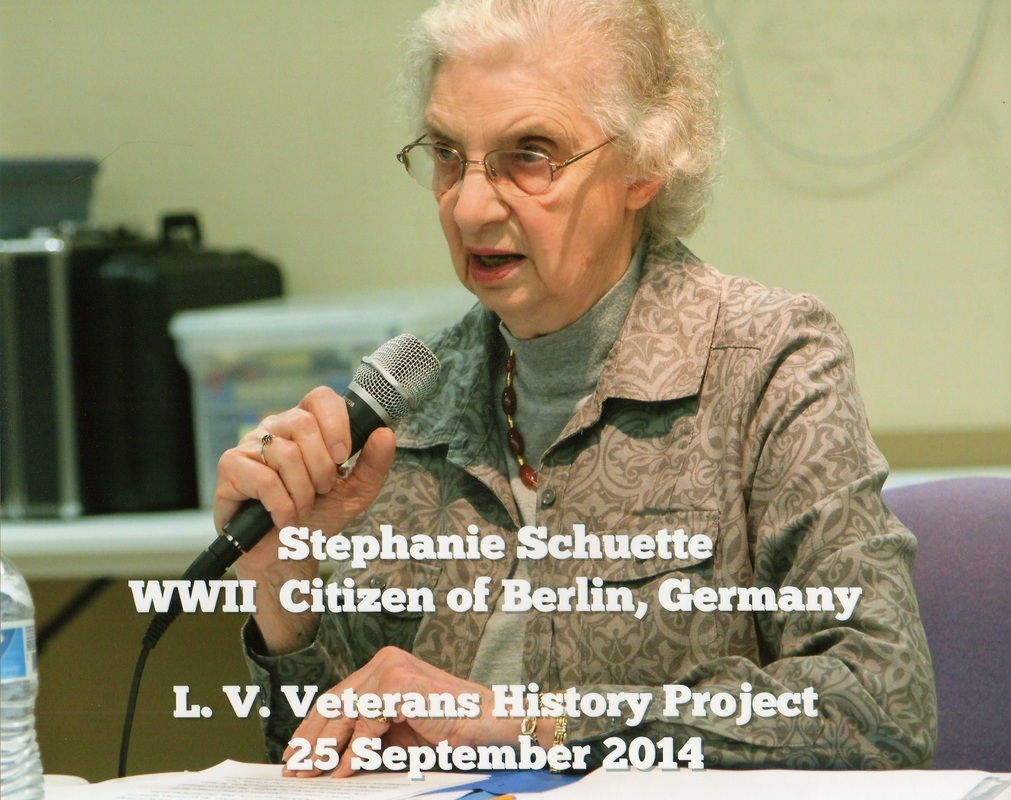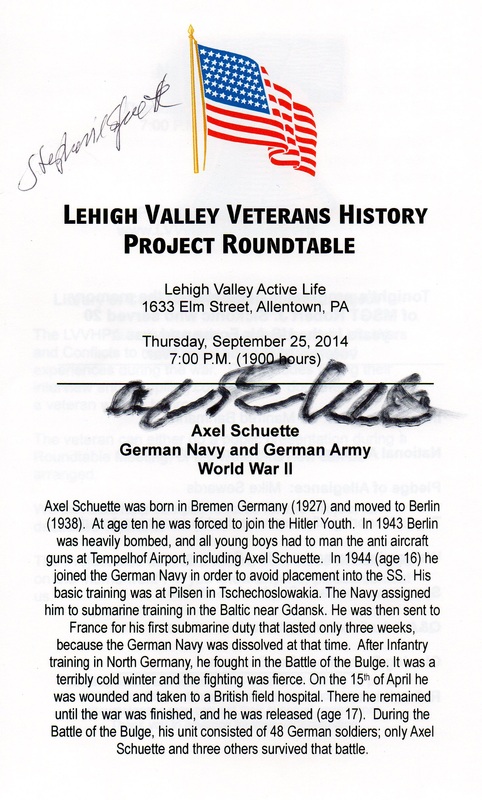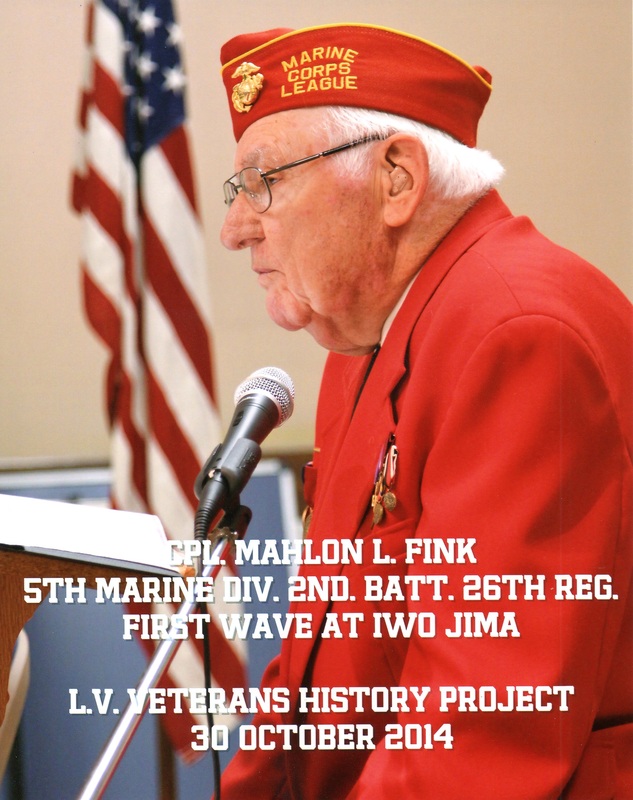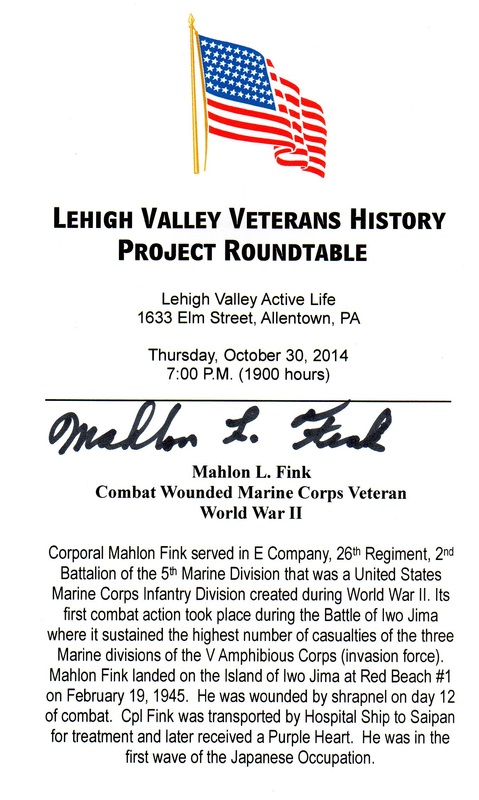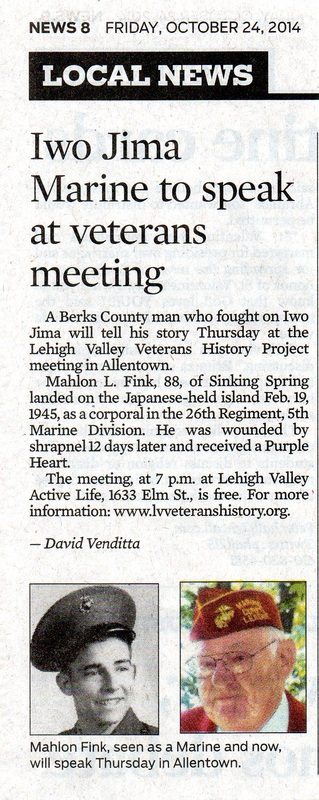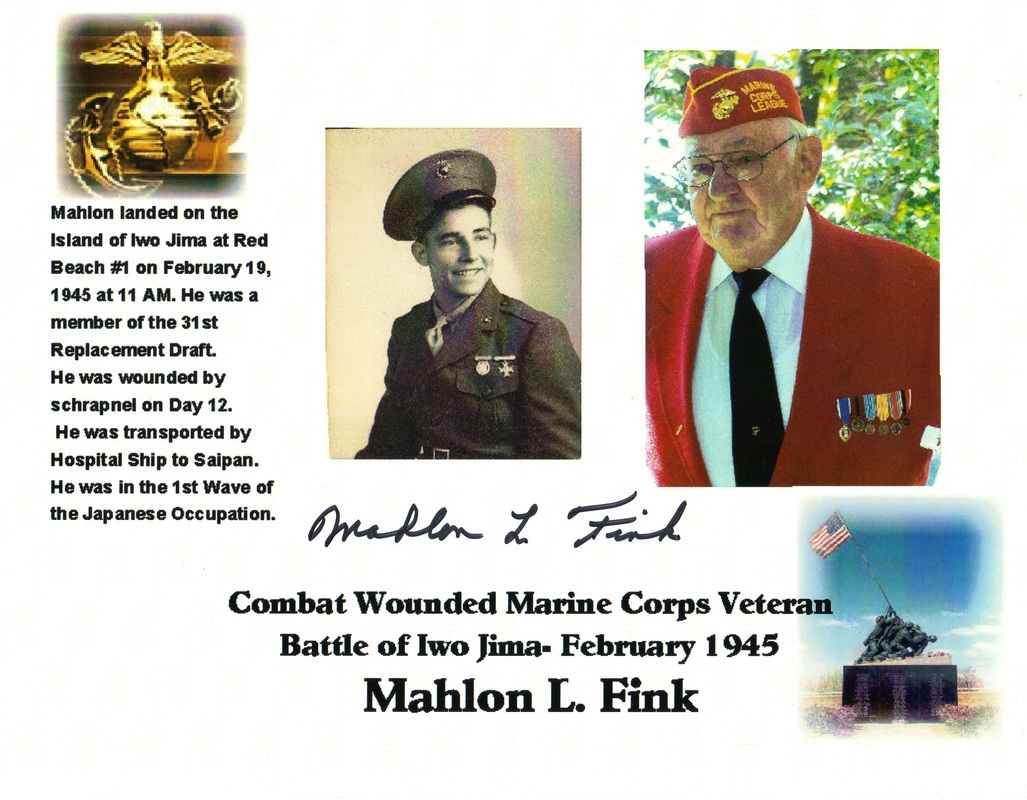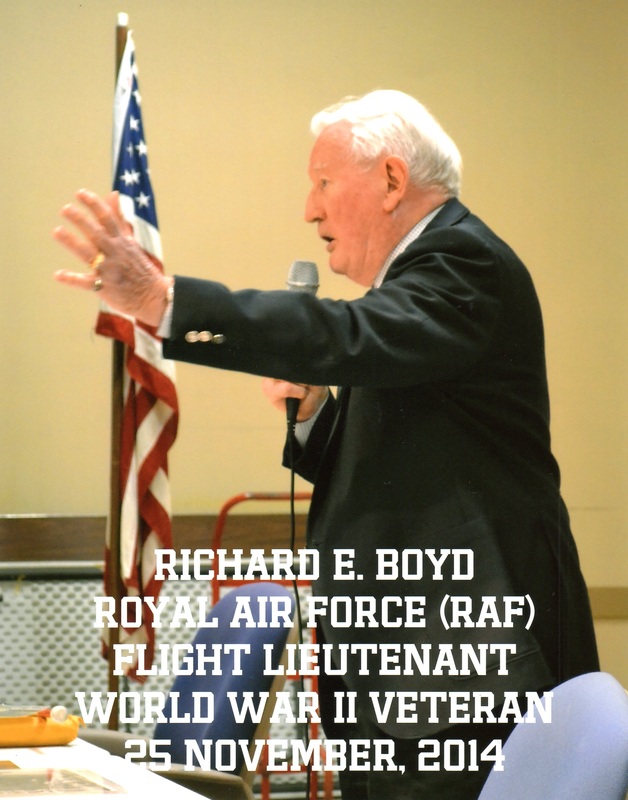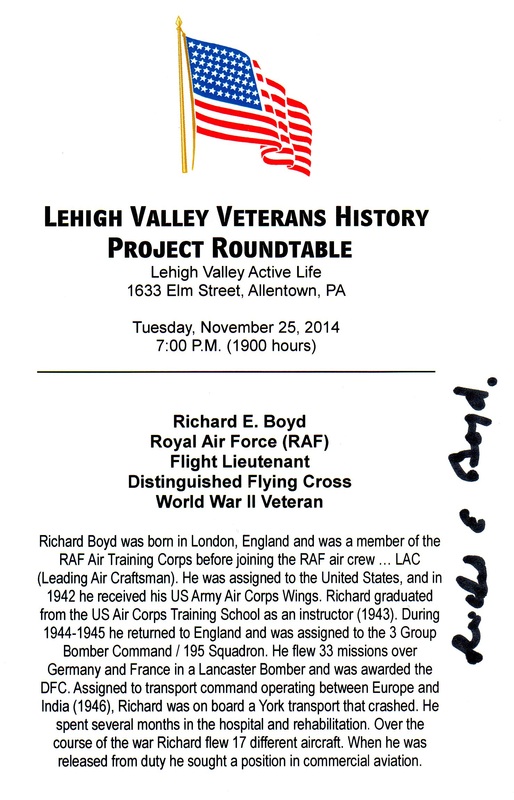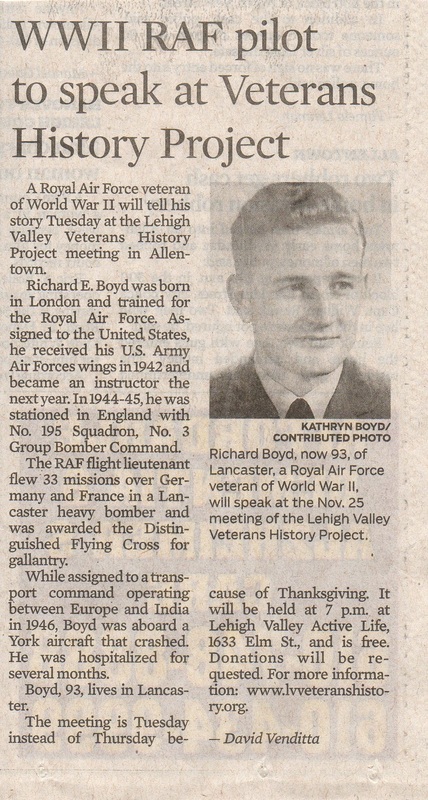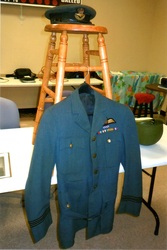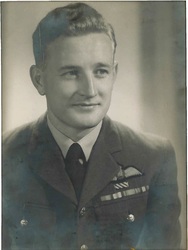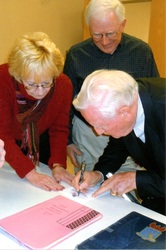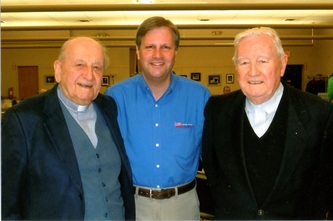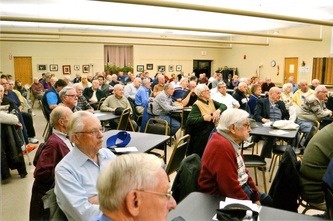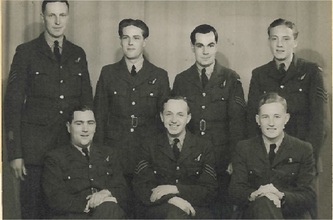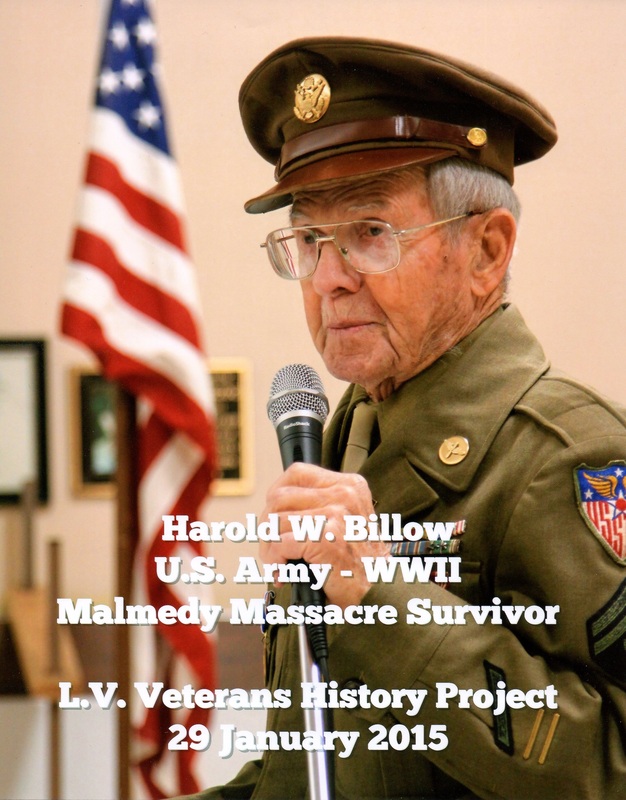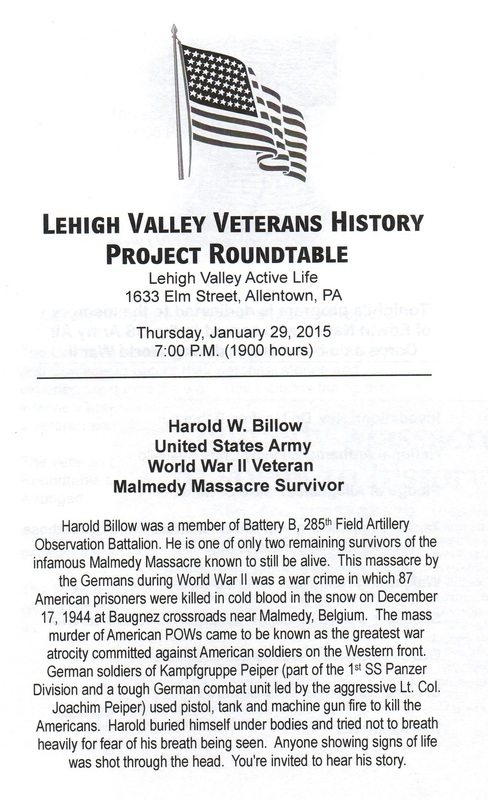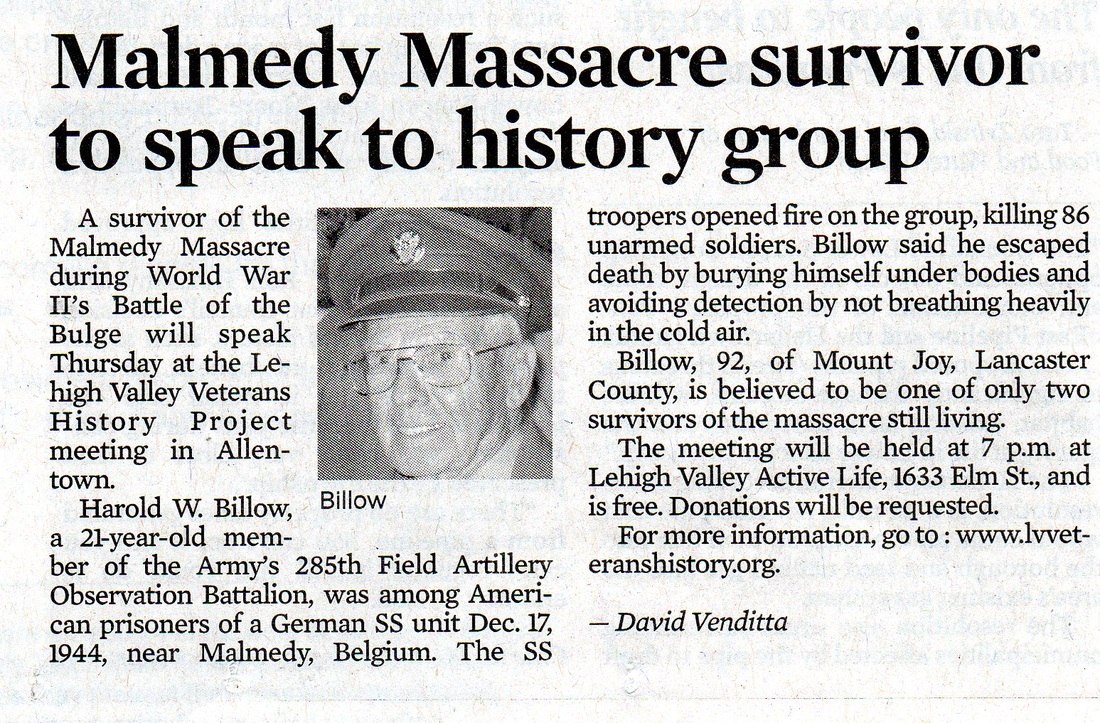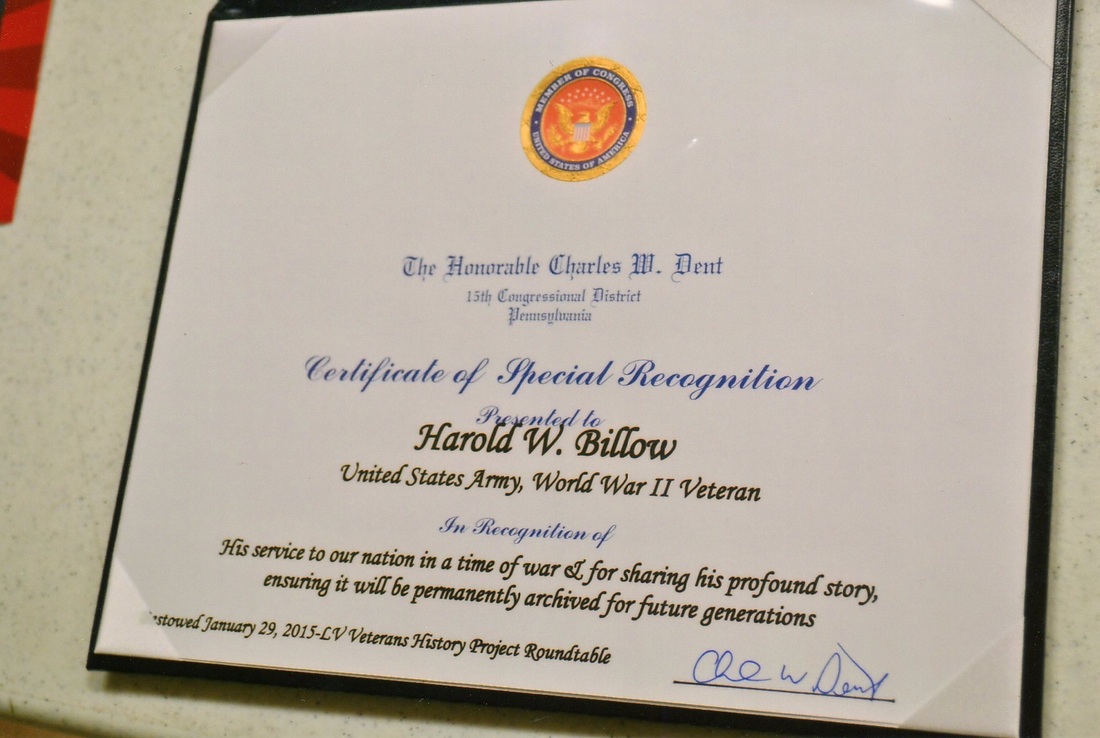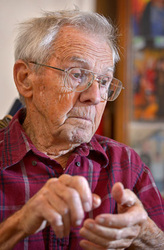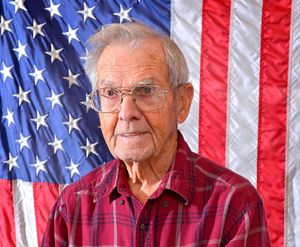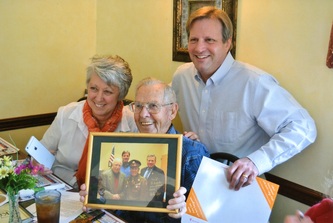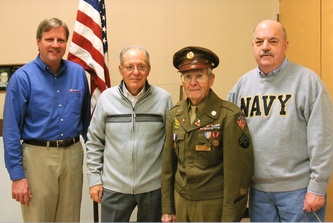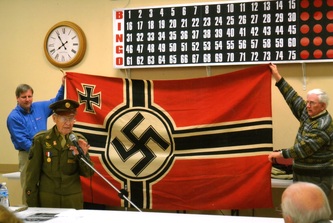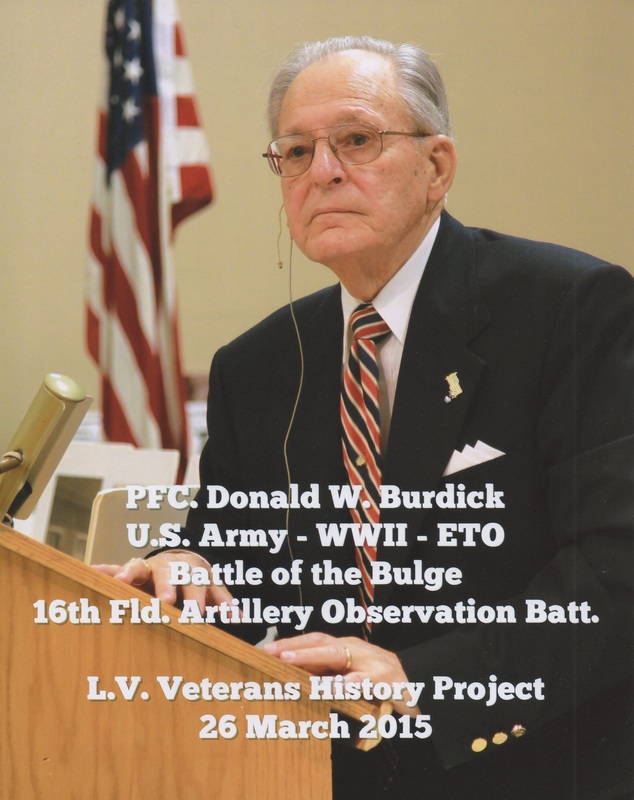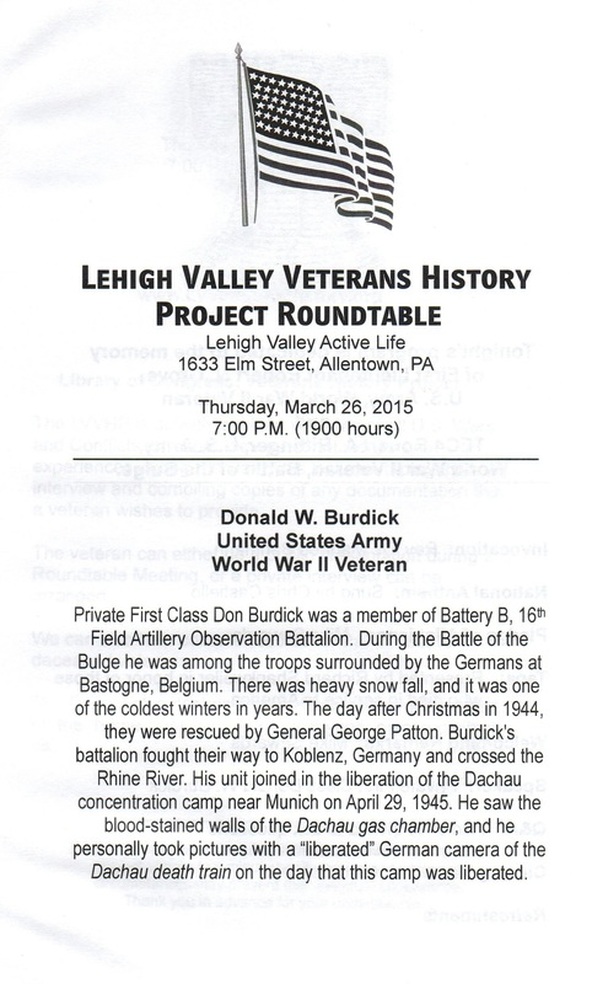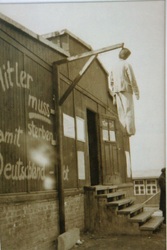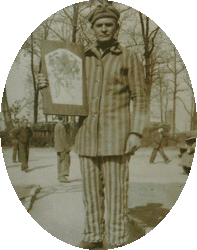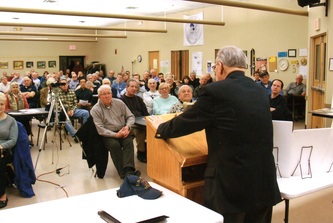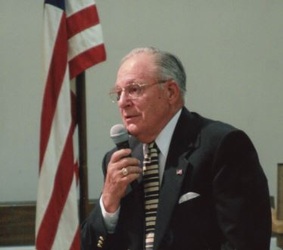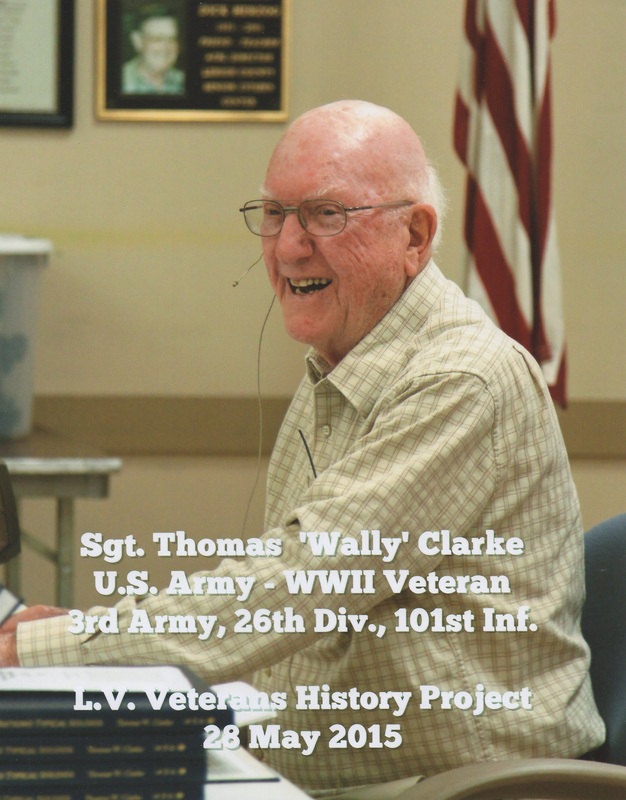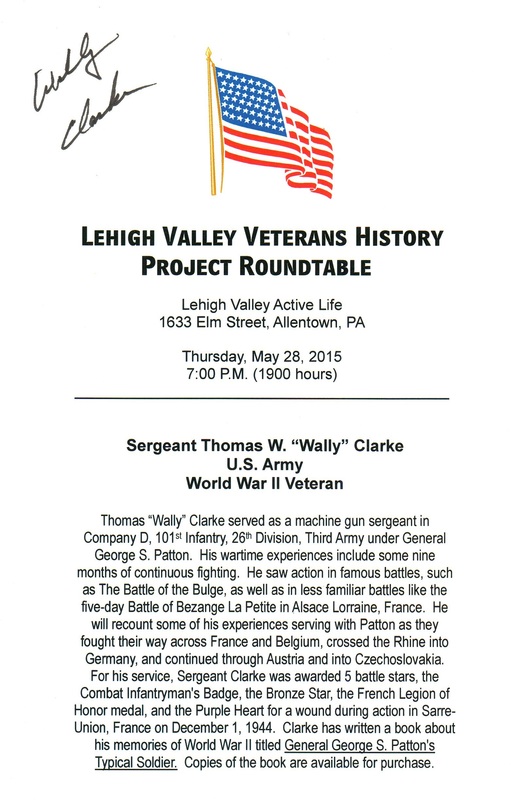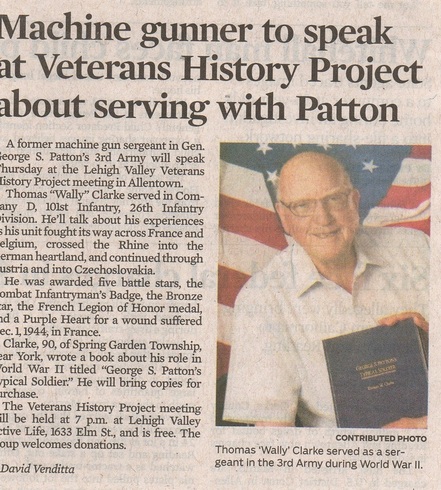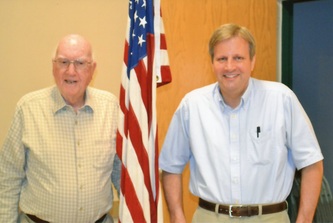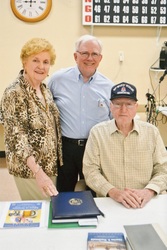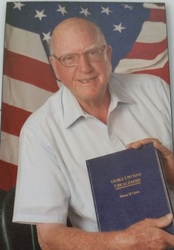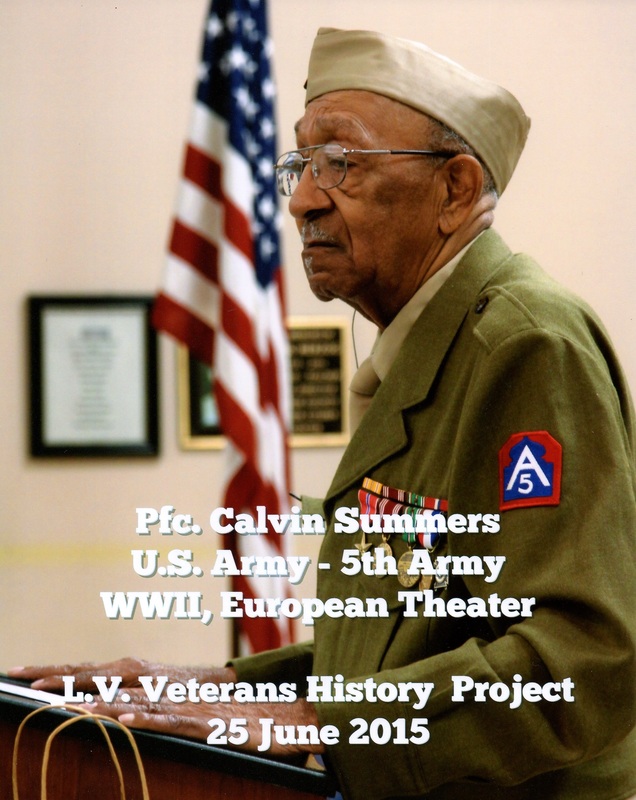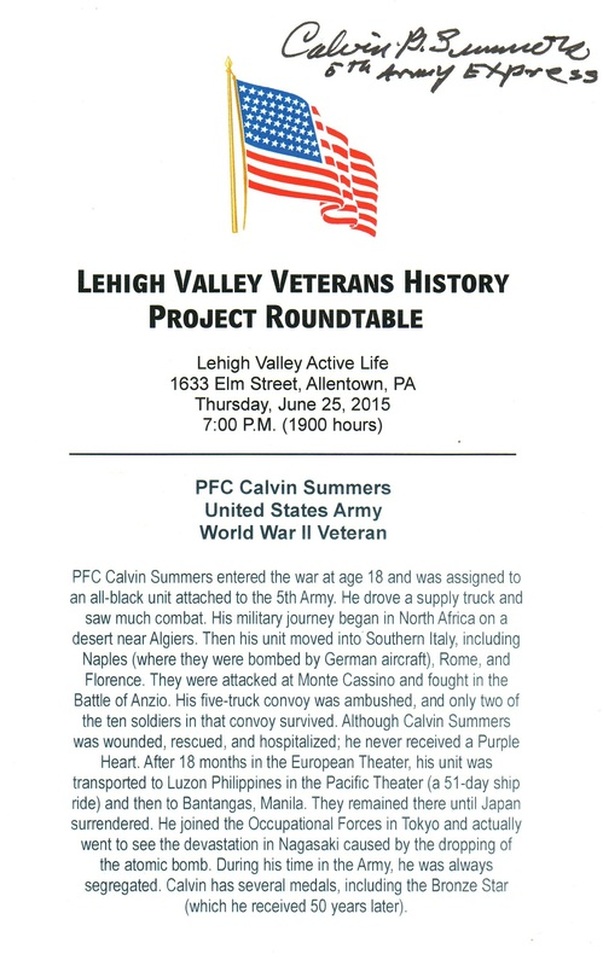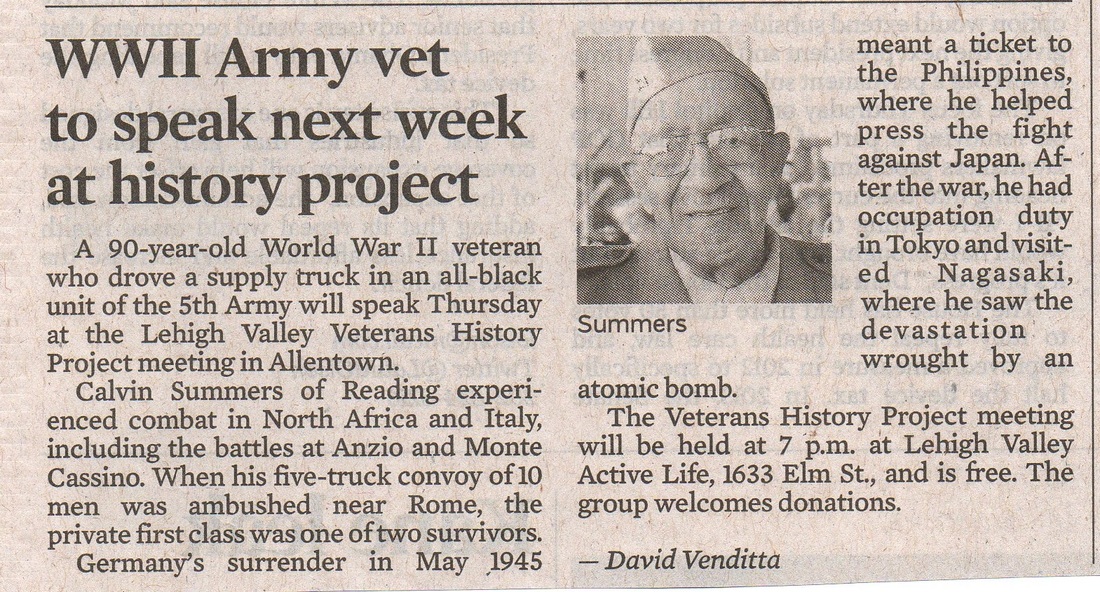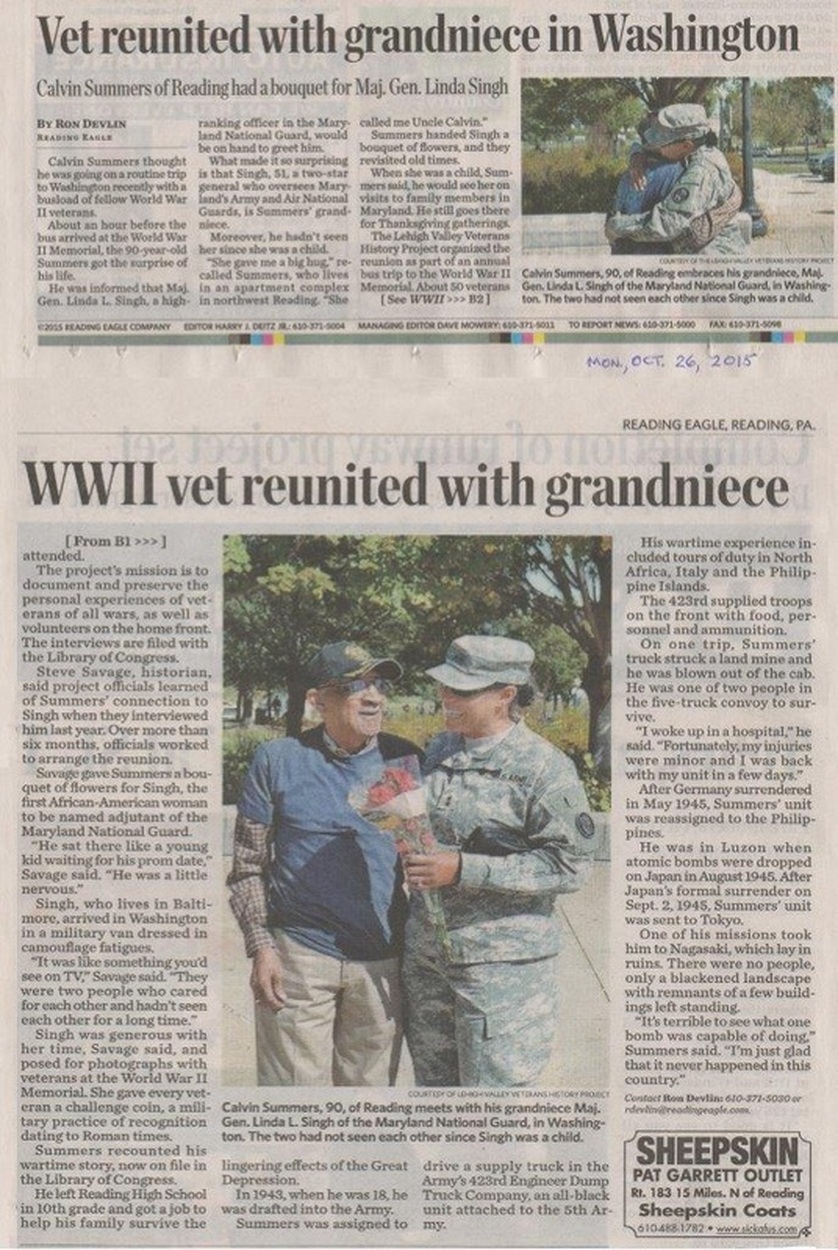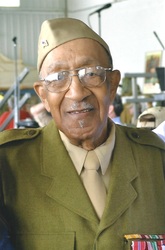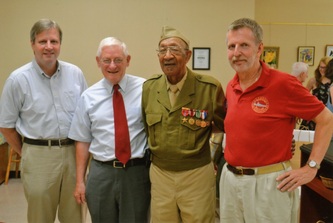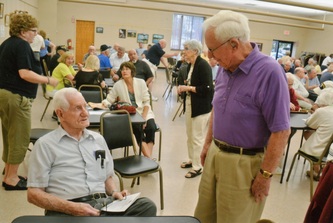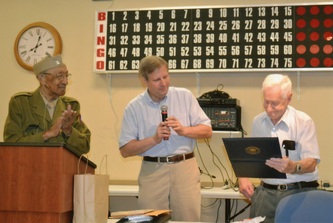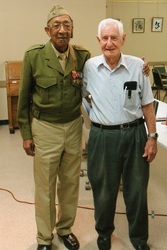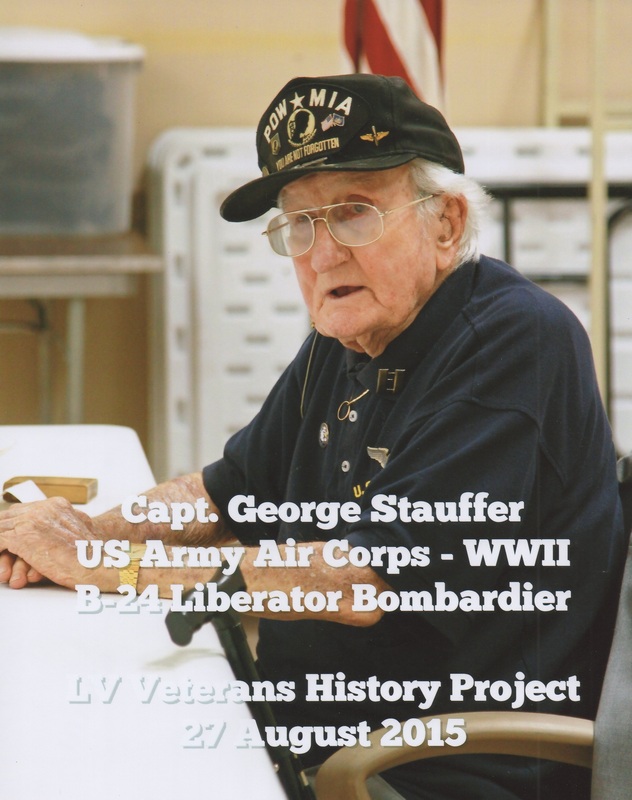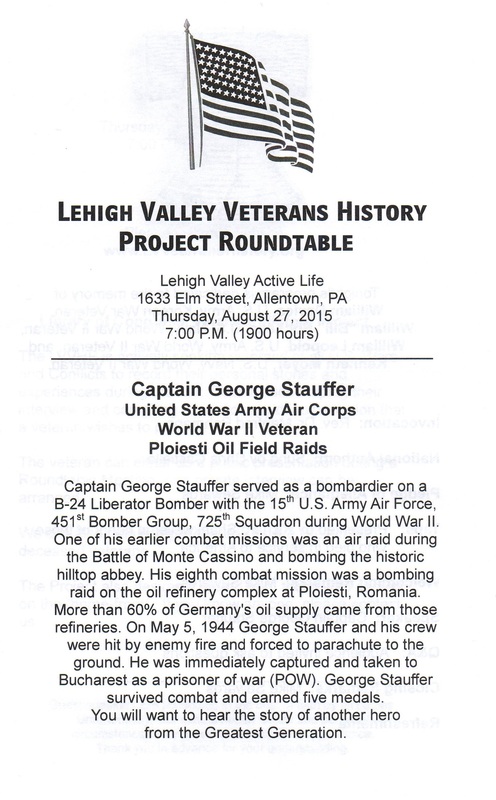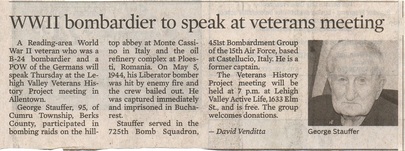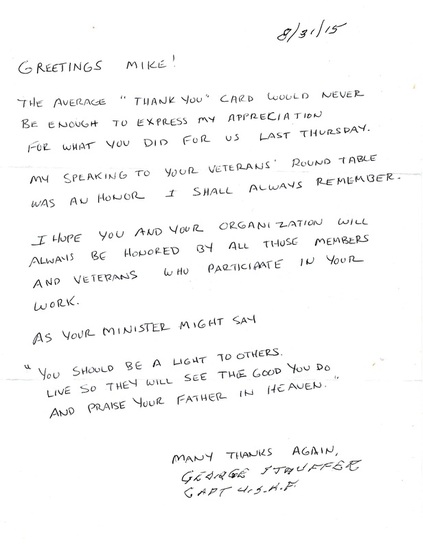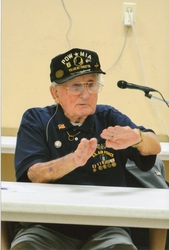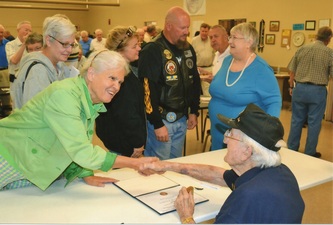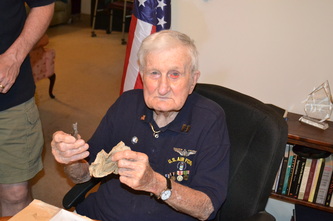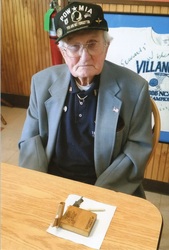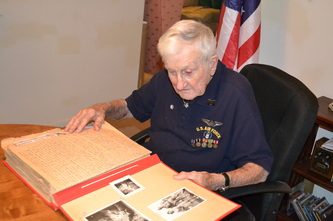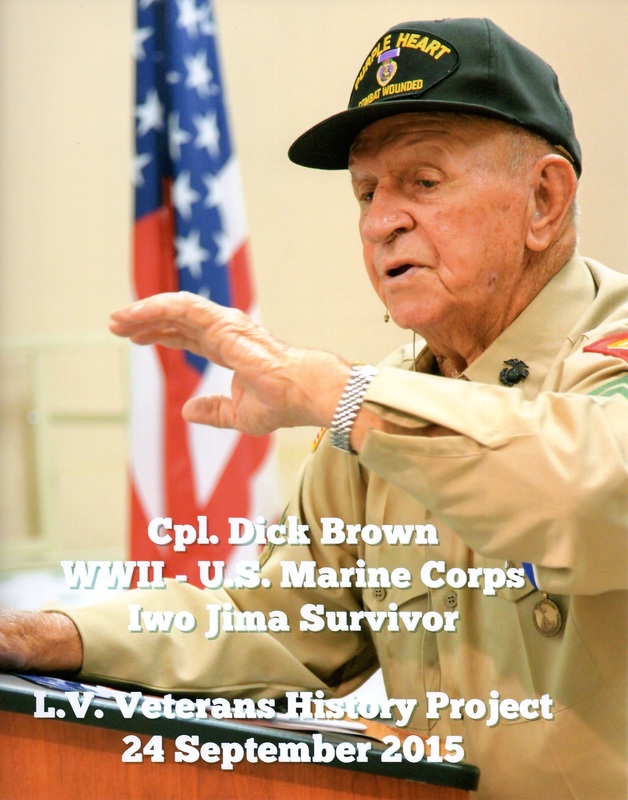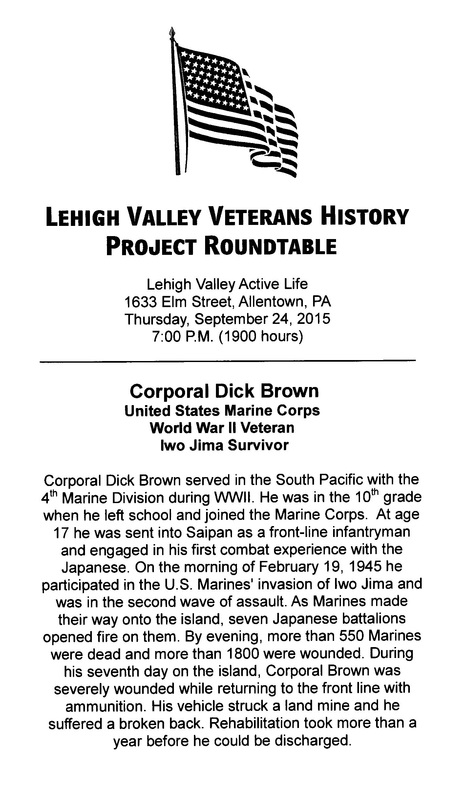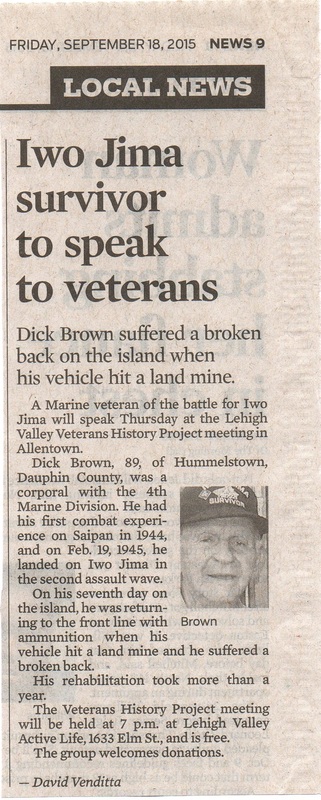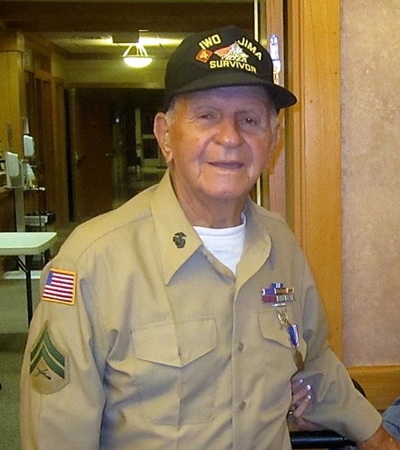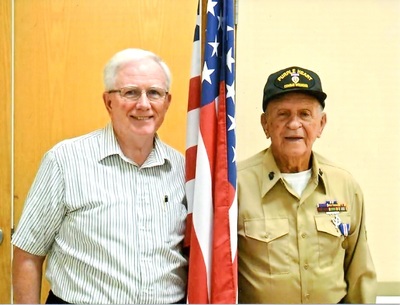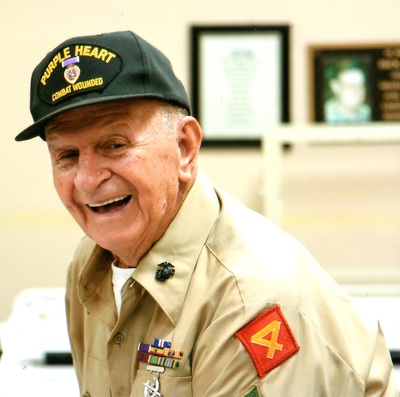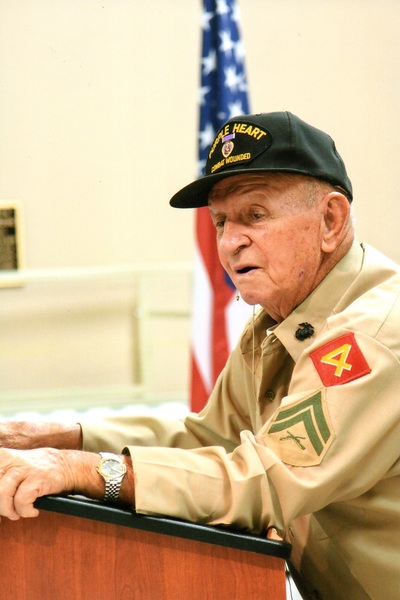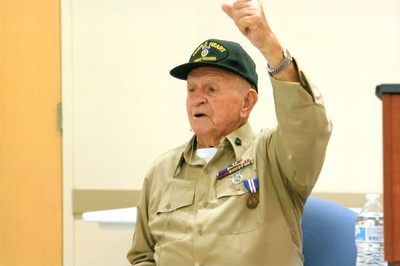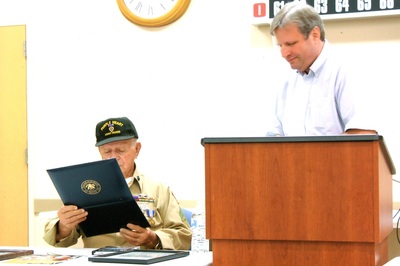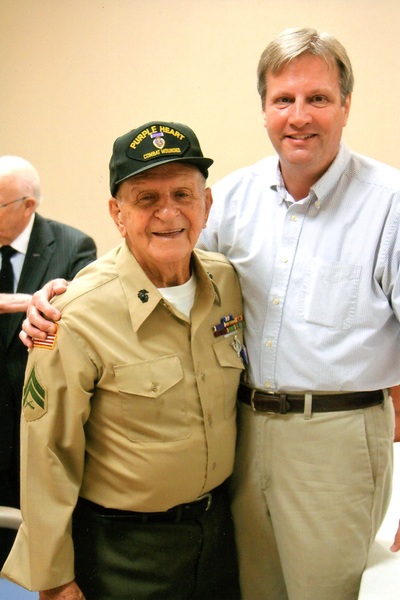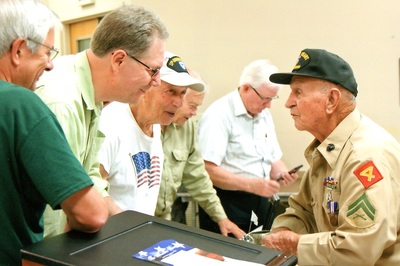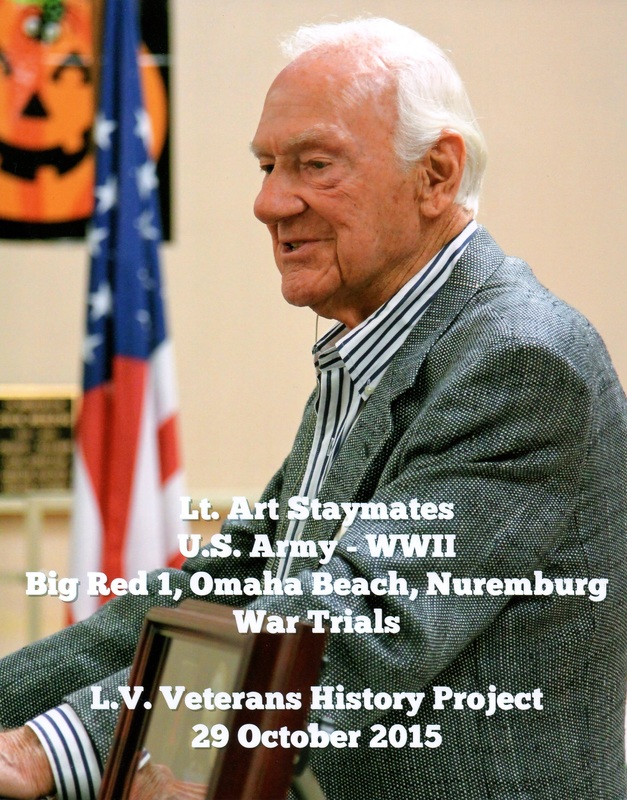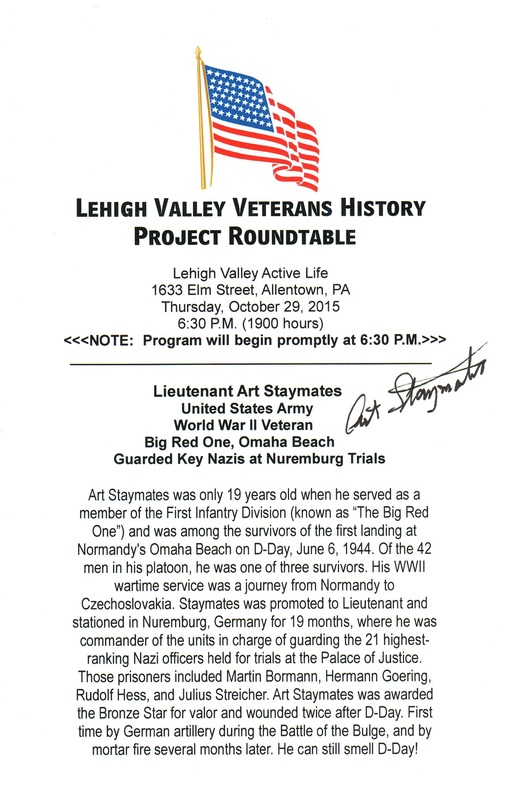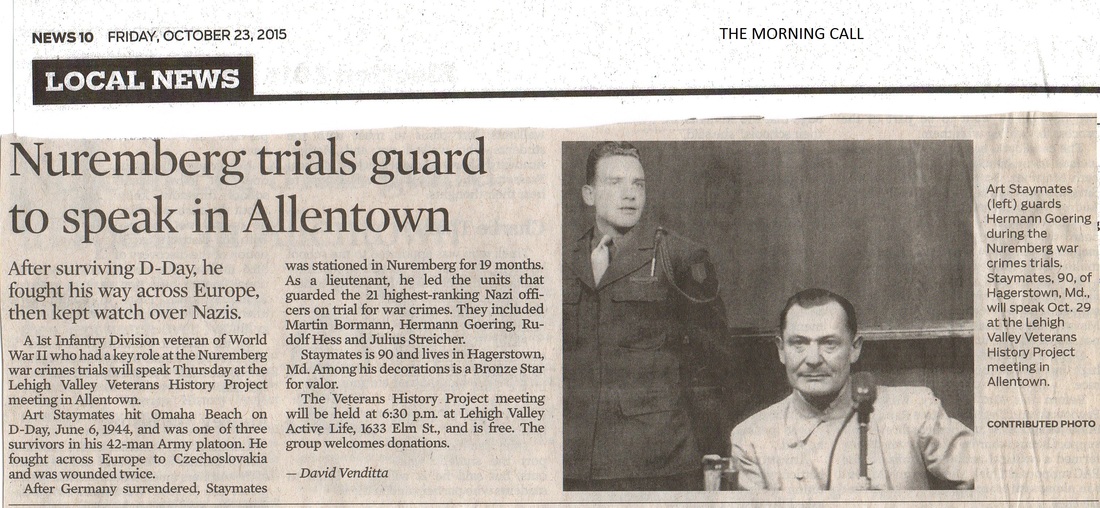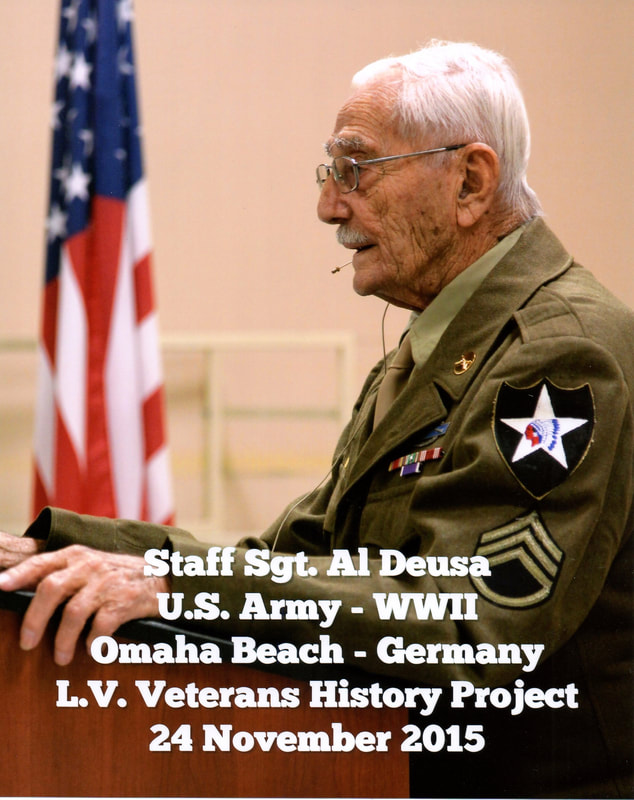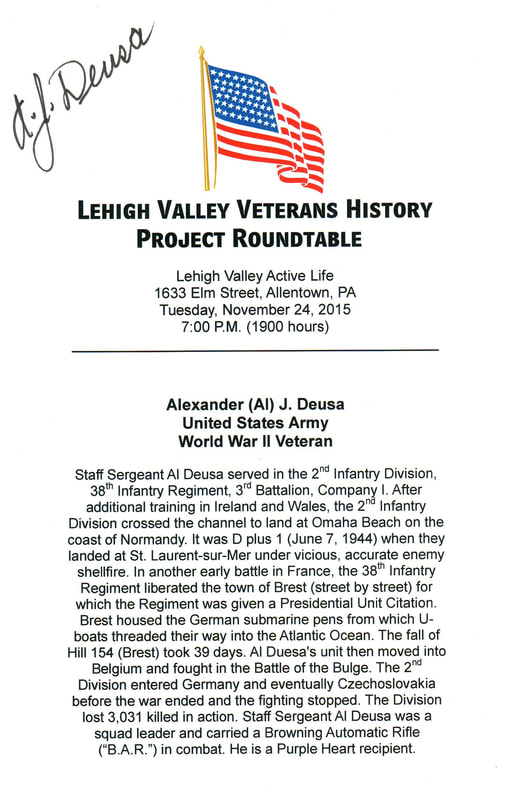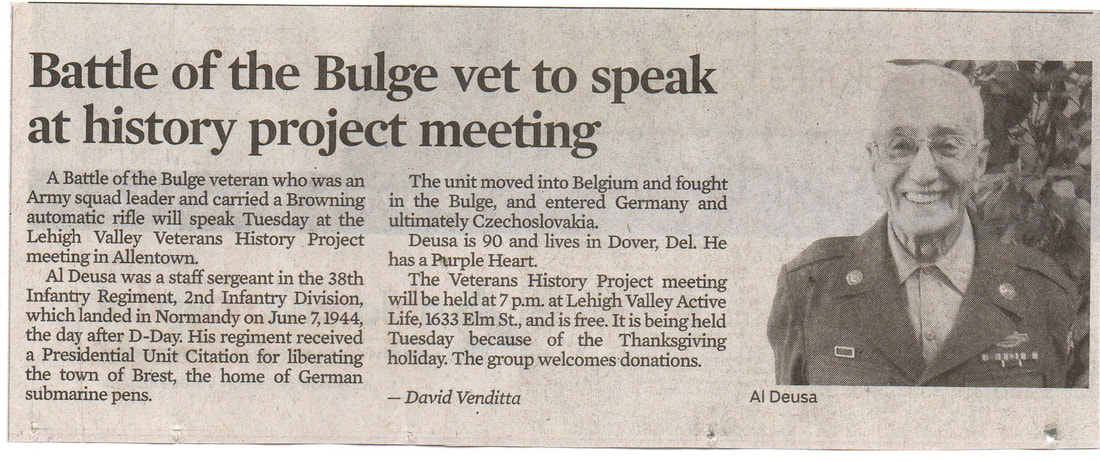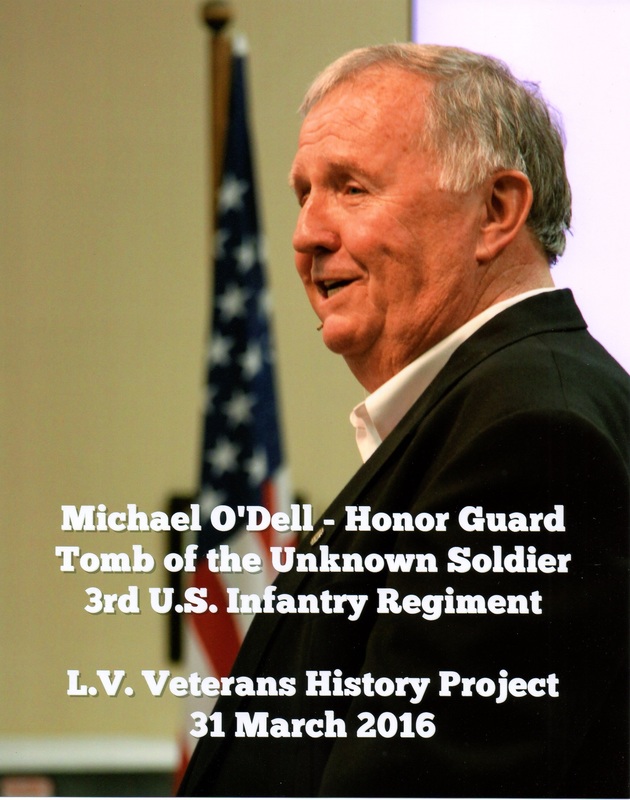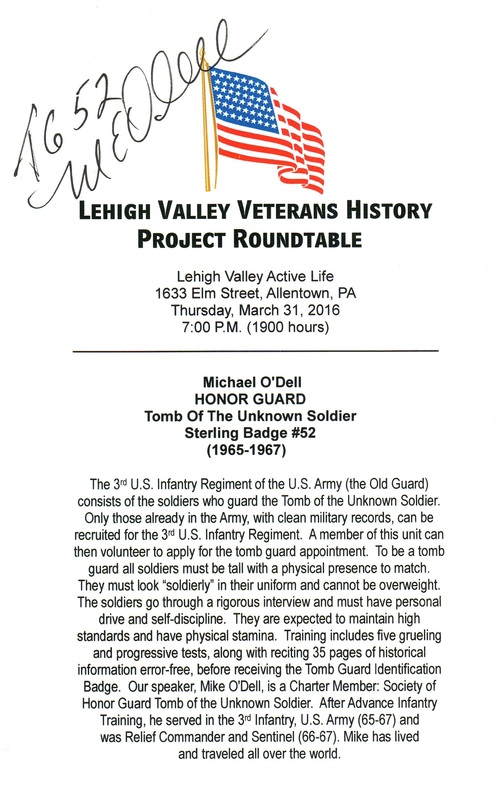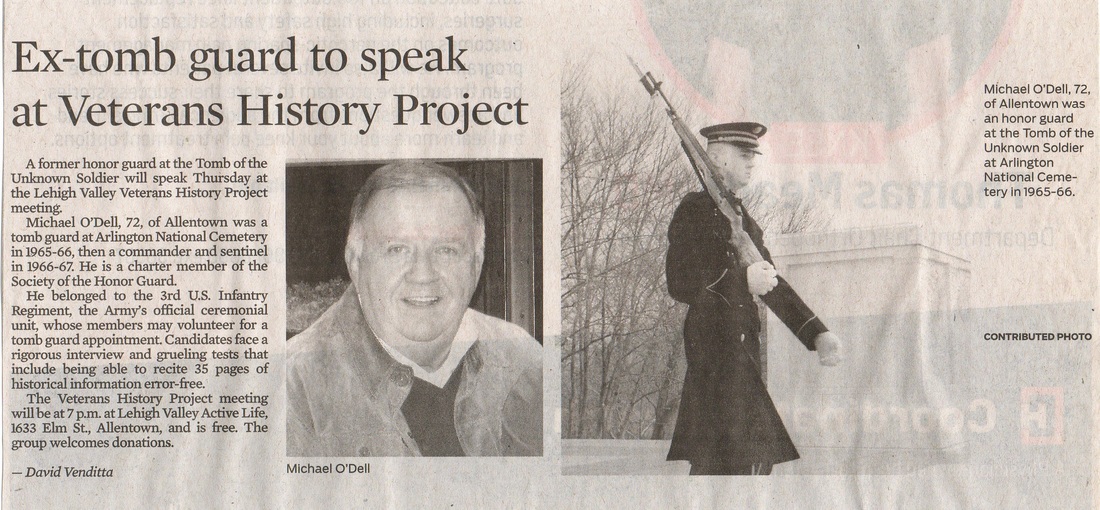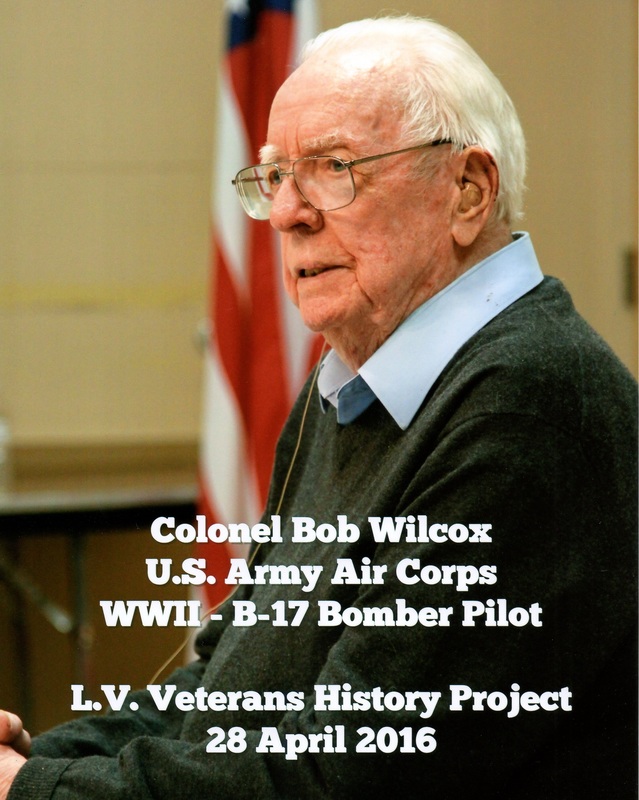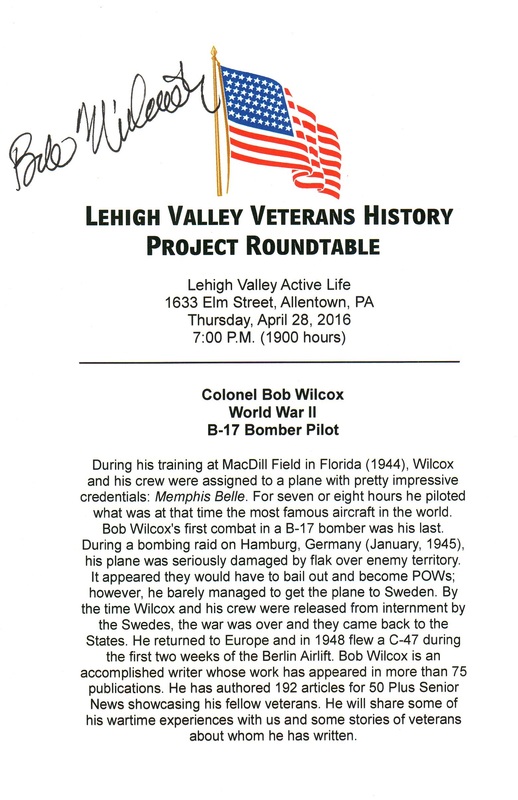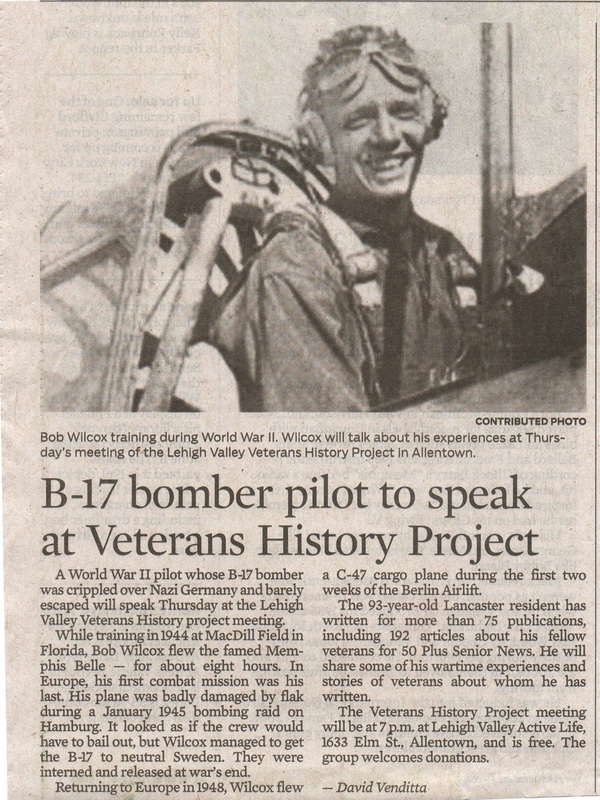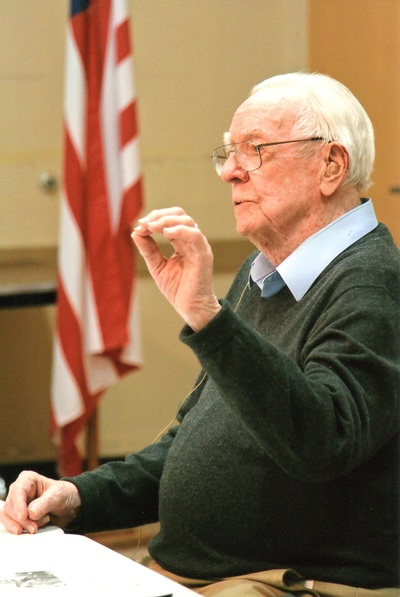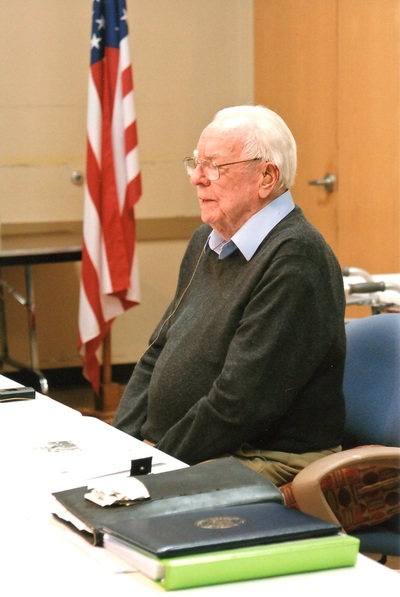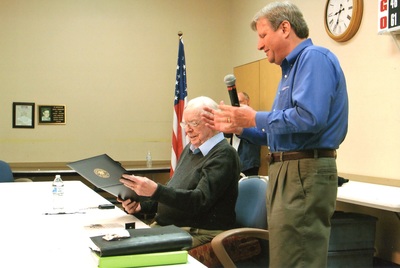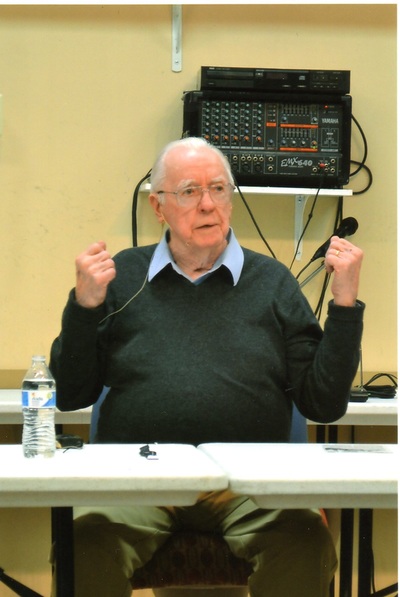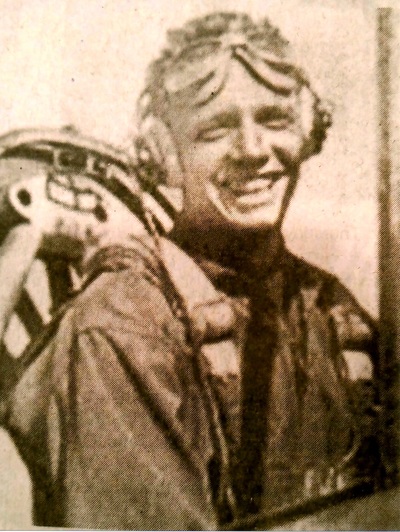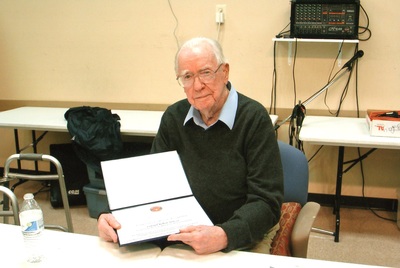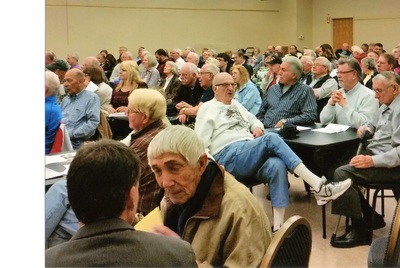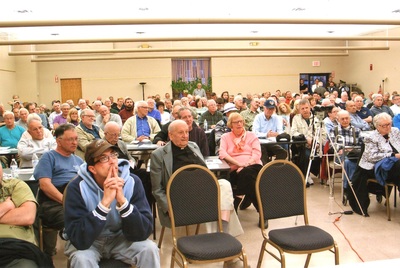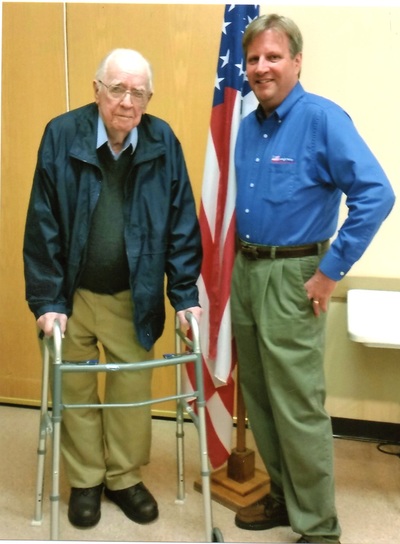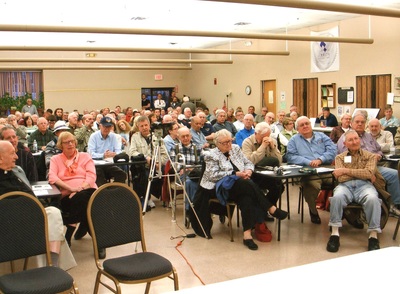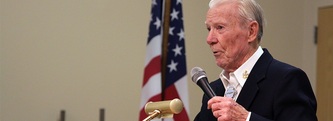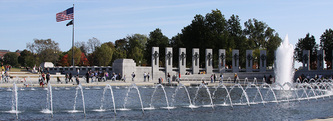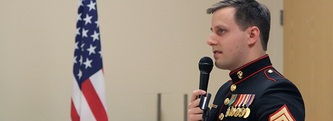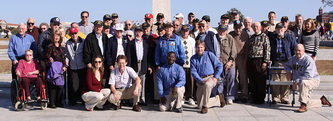Bob Patrick, Director of Veteran’s History Project, Library of Congress
General Anna Mae Hays, Retired
Mike Sewards, Founder and CEO of LV Veteran’s History Project
To find a specific veteran or word on this page, hold the Ctrl + F buttons on your keyboard, then type in the name and hit Enter key. This works in Internet Explorer 11, Google Chrome & Microsoft Edge browsers.
To go back to top of the page, Ctrl + Home.
Lt. Cmdr. Robert Shay (6-26-2025)
Leo Kurtz (4-24-2025)
Harley Wenninger (10-31-2024)
Lieutenant Colonel John Borneman
Staff Sergeant Daryl Kennedy
Lieutenant Colonel John J. McGeehan
Chief Master Sergeant Bobbie Trotter
Lieutenant General Richard Kramlich
Petty Officer 2nd Class Dale L. Sommons
Captain Stephen Hoare
Speaker October 26, 2023
Ralph Timmons
Robert Croft
PFC Jake Ruser & Cpl. Benjamin Berry
Robert Pearce
Lieutenant Dale Kratzer
James C. Sikra, Ph.D.
Nancy Eckert, Vietnam Combat Nurse
Speaker March 30, 2023
| nancy_eckert_mc_article_vietnam_war_memorial.pdf | |
| File Size: | 245 kb |
| File Type: | |
| nancy_eckert_lvhn_nsg._voice_aug94_article.pdf | |
| File Size: | 400 kb |
| File Type: | |
David B. Binder
Matthias Gutman
(Speaker previously 2/27/2014)
Lieutenant Joseph Petro
Corporal David Mills
Tim Gilbert
Hermann Pfisterer
Staff Sgt. Ernie Abe
Richard "Dick" Schimmel died at age of 101. He was a Pearl Harbor Survivor.
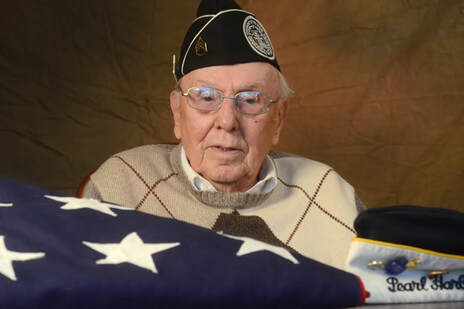
Birth: May 11th, 1922
Death: February 3rd, 2024
Richard G. Schimmel, 101, of Allentown, died on Saturday, February 3, 2024 at Phoebe Nursing Home in Allentown, PA. His wife, Yolanda L. (Cocca) Schimmel, died on May 20, 2010. Born in Allentown, he was the son of the late John and Florence (Schneck) Schimmel. Richard was one of the last Pearl Harbor Survivors, serving in the U.S. Army during World War II. He was a Staff Sergeant with the 581st Signal Aircraft Warning Battalion who set up the first radar that detected the Japanese planes and was the fifth person to know the Japanese were attacking. He was a graduate of Allentown High School and Penn State College Business School. In his civilian life, Richard was a devoted family man with a quick-witted sense of humor. He was a salesman at the former Sears Roebuck and Co. in Whitehall for over thirty years until his retirement, where he was the co-founder and past president of the Sears Retirees Club. He was a devout Catholic and was a member of The Cathedral Church of St. Catharine of Siena, Allentown.
Death: February 3rd, 2024
Richard G. Schimmel, 101, of Allentown, died on Saturday, February 3, 2024 at Phoebe Nursing Home in Allentown, PA. His wife, Yolanda L. (Cocca) Schimmel, died on May 20, 2010. Born in Allentown, he was the son of the late John and Florence (Schneck) Schimmel. Richard was one of the last Pearl Harbor Survivors, serving in the U.S. Army during World War II. He was a Staff Sergeant with the 581st Signal Aircraft Warning Battalion who set up the first radar that detected the Japanese planes and was the fifth person to know the Japanese were attacking. He was a graduate of Allentown High School and Penn State College Business School. In his civilian life, Richard was a devoted family man with a quick-witted sense of humor. He was a salesman at the former Sears Roebuck and Co. in Whitehall for over thirty years until his retirement, where he was the co-founder and past president of the Sears Retirees Club. He was a devout Catholic and was a member of The Cathedral Church of St. Catharine of Siena, Allentown.
Staff Sgt. Richard "Dick" Schimmel
| dick_schimmel_morning_call_story_of_his_death.docx | |
| File Size: | 215 kb |
| File Type: | docx |
Staff Sgt. Robert Thompson
1st Lt Larry E. Ahner
Charles Brooking
Lance Corporal Joseph Prusak
George Jackson
Boatswain's Mate Victor Marulli, Sr.
Cpl. Robert F. Wippel, Jr.
Cpl. Albert Fraind
Tech Sergeant Norvin Vogel, Sr.
Captain LaVerne Arndt
Lieutenant William T. Watkinson, Jr.
Master Chief Petty Officer George Folk, U.S. Navy, WWII & Vietnam
CPO Joseph Milo Sewards
Alexander Horanzy, U.S. Army, WWII (Pearl Harbor Survivor)
Hershel "Woody" Williams, U.S. Marines, WWII
Aviation Mechanic 2nd Class Harry Adams, U.S. Navy, WWII
Sonarman Richard Donald, U.S. Navy, WWII & Korean War
SFC Forrest Taylor, U.S. Army, WWII
Lt. Colonel William Bonelli, U.S. Army Air Corps, WWII
Staff Sgt. Mickey Yonkovig, U.S. Army Air Corps, WWII
Ernie Gross, Auschwitz/Dachau Concentration Camp Survivor
PFC Kenneth Happel, US Army, WWII
Sonarman 3rd Class Kenneth H. Fidler, US Navy, WWII
Rear Admiral Robert Shumaker, US Navy, Vietnam (POW)
PFC Herb Ridyard, US Army, WWII
PO Samuel "Chuck" Kline, US Navy, USS Wasatch LCVP, WWII
Sgt. Howard Patrick, US Army, 1st Air Calvary Division, Vietnam
Sgt. Milton Dienes, US Army Air Corps, 20th AF, 9th Photo Tech Squadron, WWII
Cpl. Raymond DeRaymond, US Army, Co. C, 87th Chemical Mortar Battalion, WWII
David S. Wisnia, Auschwitz/Dachau Concentration Camp Survivor, 101st Airborne Official Interpretor
1st Lt. Ted Rogal, US Army, B-24 Bomber Co-Pilot, European Theater, WWII
Staff Sgt. David Lemal, US Army Air Corps, B-29 Tail Gunner, Pacific Theater, WWII
David Tuck, Holocaust Survivor
Earl Henning, Aviation Machinist Mate Second Class, B-17 Bomber Pilot, U.S. Navy, WWII
Earl Henning served with the Patrol Bombing Squadron (Screaming One "O" Four) at Clarke Field in Luzon, Philippine Islands. He was a mechanic and tail gunner on a B-24 Bomber during 57 combat missions, including the Battle of Leyte Gulf. Earl saw much combat during his eleven months in the Pacific and was credited for shooting down a Japanese Zero. The nine air medals he received include two Presidential Unit Citations and two Distinguished Flying Crosses. His Squadron was the only Naval Squadron ever to receive two Presidential Citations. Earl Henning is another hero from the Greatest Generation!
Brigadier General Anna Mae V. McCabe Hays, 13th Chief, Army Nurse Corps
Private 1st Class Bert Winzer, Special Service Force (Devil's Brigade), WWII Canadian-American Parachute Commando Unit
2nd Lieutenant Evangeline Coeyman, ETO Nurse at D-Day, Battle of the Bulge
Colonel Earl R. "Lee" Leaser, WWII POW, B17 Bomber Pilot flew 18 missions over Europe
PFC Robert F. Kauffman, U.S. Army
1st Lieutenant Gerhard G. Hennes, Communication Specialist, German Army
Corporal Wendall A. Phillips, U.S. Army Air Forces, Radio Operator
Lieutenant Frank Speer, USAAF - 8th Air Force, P-51 Mustang Pilot, WWII Flying Ace
VETERANS OF THE BATTLE OF THE BULGE
Dr. Eugene Richardson, Tuskegee Airmen of Greater Philadelphia
Major Nathan Kline, USAF (Retired), B-26 Bombardier - Navigator
Capt. Vincent Vicari, US Army, WWII, 101st Airborne Division
Col. Harry Yoder, USAF (Retired), WWII, B-17, B-24 & B-25 Bomber Pilot
Radarman 2nd Class Warren "Jake" Fegely, US Navy (USS Intrepid), WWII
Corporal Dan Curatola, US Army, 1st Infantry Division, WWII
Ernie Toth Day - May 28, 2009
Francis J. Ginther, US Navy, POW of USS Pueblo (North Korea)
Lieutenant Colonel Samuel Lombardo, US Army, 99th Inf. Div., 394th Reg., Co. I, WWII-Korea-Vietnam
Sergeant Mark W. Kistler, US Army, Troop A, 3rd Platoon, 4th Calvary Division, WWII
1st Lieutenant Carl Constein, US Army Air Corps, WWII
|
Dr. Carl Frey Constein, 1st
Lieutenant
Carl Constein entered active military service after enlisting in Reading, PA in 1943. He transferred to the Army Air Corps and was accepted as an aviation cadet. After receiving his wings and commission in August 1944, he was trained in the Curtis C-46 “Commando” before being assigned to the Air Transport Command in Chabau, Assam, India in November 1944. In the China-Burma-India theatre, he flew 96 C-46 round trip flights over the treacherous Himalayan “Hump” to China. Carl was awarded the Air Medal with Cluster and the Distinguished Flying Cross. |
Severin Fayerman, Holocaust Survivor
Warrant Officer Robert J. Hutchings, US Army, WWII
Marian Arner Jones, US Army Nurse Corps, Gen. Patton's 3rd Army, WWII
CPO Hank Kudzik, US Navy, USS Nautilus & USS Gar, WWII
James Ewell, US Navy, USS Piranha & USS Gabilan, WWII
Rev., Dr. Manfred Bahmann, German Citizen during WWII, Witness to Dresden Fire Bombing
Sgt. Clyde Hoch, US Marine Corps, Vietnam War
Corporal John (Jack) Leh II, US Army, 82 Airborne Div., WWII - European Theatre
Sergeant Robert Toth, US Marine Corps, Iraq & Afghanistan
Staff Sergeant Tony Zanzinger, US Army, 101st Airborne Division, WWII - European Theatre
Ensign Edward W. McElduff, US Navy, Purple Heart Recipient & Officer on LST981, WWII, D-Day
Tech Sergeant William J. Fili, 15th US Army Air Corps, WWII - Africa, Italy & European Theatres
Colonel Ward B. Nickisch, US Army (Ret.), Vietnam, Former Director of Casualty & Memorial Affairs
Sergeant First Class Craig Haldeman, US Army, Grenada
Corporal Ted Paluch, US Army, WWII, Malmedy Massacre Survivor
Private 1st Class David Mills, US Army, Korean War
Sergeant James Milliken, US Army, Vietnam
Staff Sergeant Mel Schissler, 8th Air Force, WWII
Corporal Salvadore Castro, US Army, WWII - Pacific Theatre
Pearl Harbor Night (4/25/13): Jim Murdy, 95; Joe Moore, 95; Dick Schimmel, 90 -- Survivors
1st Lieutenant Ron Swinfard, MD, US Army, Vietnam
Staff Sergeant Carl A. Schroeter, US Army, WWII
Corporal Gust C. Kraras, US Army, WWII
Technical Sergeant Francis J. McCullough, US Army Air Corps, WWII
Mathias F. Gutman, US Navy, WWII
Mathias F. Gutman
Chief Petty Officer, U.S. Navy Retired
Lieutenant Colonel Kevin P. Stroop, US Army, Chaplain (Ret.)
John Marcin, Jr., US Navy, WWII, USS Wasp
PFC William F. Allen, US Army, WWII, European Theatre
The Filthy Thirteen, US Army, 101st Airborne Division, WWII
Jake McNiece Robert Cone Jack Womer Jack Agnew
Filthy Thirteen
From Wikipedia, the free encyclopedia
The Filthy Thirteen was the name given to the 1st Demolition Section of the Regimental Headquarters Company of the 506th Parachute Infantry Regiment, 101st Airborne Division, of the United States Army, which fought in the European campaign in World War II.
History
The Demolition Section was assigned and trained to demolish enemy targets behind the lines.[1] They were ordered to secure or destroy the bridges over the Douve River during the Normandy Invasion of Europe in June 1944,[1] a mission that cost the lives of most of these men. Half were either killed, wounded or captured but they accomplished their mission. They also participated in the capture of Carentan. The group was airdropped for the mission by aircraft of the 440th Troop Carrier Group of the U.S. Army Air Forces. This unit was best known for the famous photo which appeared in Stars and Stripes, showing two members wearing Indian-style "mohawks" and applying war paint to one another. The inspiration for this came from the unit's leader, Jake McNiece, who was part Choctaw.[1]
During Operation Market Garden, the Demolition Platoon was assigned to defend the three bridges over the Dommel River in Eindhoven, Holland. German bombing of the city killed or wounded half the demolitions men in the platoon and McNiece was promoted to platoon sergeant. Jack Womer took his place as section sergeant. For the rest of the campaign the demolitions men secured the regimental command post or protected wire laying details. On one occasion the survivors of the Demolitions Platoon were assigned as a rifle squad to an under strength company.[2]
After coming back from AWOL to Paris after Holland, McNiece joined the Pathfinders. These were paratroopers sent in ahead of the main force to guide them in or guide in resupply drops. Half the surviving members of the original Filthy Thirteen followed him into the Pathfinders thinking they would sit out the rest of the war training in England. Expecting casualties as high as 80–90%, the pathfinders were dropped into the encircled town of Bastogne at the height of the Battle of the Bulge losing only one man. Their CRN-4 beacon enabled them to guide in subsequent airdrops of supplies crucial to the continued resistance of the trapped 101st Airborne Division.[1]
McNiece considered that any activities not directly concerned with his mission were irrelevant, an attitude that led him to be in constant trouble with the military authorities. Nevertheless, McNiece finished the war as the acting first sergeant and with four combat jumps, a very rare feat for an American paratrooper. His jumps were made in Normandy, the Netherlands as part of Operation Market Garden, the pathfinder jump in to Bastogne, Belgium, during the Battle of the Bulge, then his last jump as an observer with the 17th Airborne Division during Operation Varsity.
Of the activities of the Filthy Thirteen, Jack Agnew once said, "We weren’t murderers or anything, we just didn’t do everything we were supposed to do in some ways and did a whole lot more than they wanted us to do in other ways. We were always in trouble."
The name "Filthy 13" referred to the fact that, while training in England, they washed and shaved once a week and never cleaned their uniforms.[3]
Members
From Wikipedia, the free encyclopedia
The Filthy Thirteen was the name given to the 1st Demolition Section of the Regimental Headquarters Company of the 506th Parachute Infantry Regiment, 101st Airborne Division, of the United States Army, which fought in the European campaign in World War II.
History
The Demolition Section was assigned and trained to demolish enemy targets behind the lines.[1] They were ordered to secure or destroy the bridges over the Douve River during the Normandy Invasion of Europe in June 1944,[1] a mission that cost the lives of most of these men. Half were either killed, wounded or captured but they accomplished their mission. They also participated in the capture of Carentan. The group was airdropped for the mission by aircraft of the 440th Troop Carrier Group of the U.S. Army Air Forces. This unit was best known for the famous photo which appeared in Stars and Stripes, showing two members wearing Indian-style "mohawks" and applying war paint to one another. The inspiration for this came from the unit's leader, Jake McNiece, who was part Choctaw.[1]
During Operation Market Garden, the Demolition Platoon was assigned to defend the three bridges over the Dommel River in Eindhoven, Holland. German bombing of the city killed or wounded half the demolitions men in the platoon and McNiece was promoted to platoon sergeant. Jack Womer took his place as section sergeant. For the rest of the campaign the demolitions men secured the regimental command post or protected wire laying details. On one occasion the survivors of the Demolitions Platoon were assigned as a rifle squad to an under strength company.[2]
After coming back from AWOL to Paris after Holland, McNiece joined the Pathfinders. These were paratroopers sent in ahead of the main force to guide them in or guide in resupply drops. Half the surviving members of the original Filthy Thirteen followed him into the Pathfinders thinking they would sit out the rest of the war training in England. Expecting casualties as high as 80–90%, the pathfinders were dropped into the encircled town of Bastogne at the height of the Battle of the Bulge losing only one man. Their CRN-4 beacon enabled them to guide in subsequent airdrops of supplies crucial to the continued resistance of the trapped 101st Airborne Division.[1]
McNiece considered that any activities not directly concerned with his mission were irrelevant, an attitude that led him to be in constant trouble with the military authorities. Nevertheless, McNiece finished the war as the acting first sergeant and with four combat jumps, a very rare feat for an American paratrooper. His jumps were made in Normandy, the Netherlands as part of Operation Market Garden, the pathfinder jump in to Bastogne, Belgium, during the Battle of the Bulge, then his last jump as an observer with the 17th Airborne Division during Operation Varsity.
Of the activities of the Filthy Thirteen, Jack Agnew once said, "We weren’t murderers or anything, we just didn’t do everything we were supposed to do in some ways and did a whole lot more than they wanted us to do in other ways. We were always in trouble."
The name "Filthy 13" referred to the fact that, while training in England, they washed and shaved once a week and never cleaned their uniforms.[3]
Members
- Jack Agnew
- Roland "Frenchy" R. Baribeau
- Robert S. "Ragsman" Cone
- James F. "Piccadilly Willy" Green
- John "Peepnuts" Hale
- James E. "LaLa" Leech
- Louis "LouLip" Lipp
- Thomas "Old Man" Lonergan
- Michael "Mike" Marquez
- Charles Mellen
- Jake McNiece
- John H. "Dinty" Mohr
- Joseph "Joe" Oleskiewicz
- Frank Palys
- Herb "Herby" Pierce
- Charles "Chuck" Plauda
- George "GoogGoo" Radeka
- Andrew "Andy" Rasmussen
- Brincely Stroup
- Clarence Ware
- Jack "Hawkeye" Womer
Francis J. Sullivan, US Army, WWII
Axel Schuette, WWII German Veteran - Army & U-Boat
Cpl. Mahlon L. Fink, Marines, WWII, First Wave at Iwo Jima
Flight Lieutenant Richard E. Boyd, Royal Air Force (RAF), WWII
Harold W. Billow, U.S. Army, WWII, Malmedy Massacre Survivor
Posted: Sunday, December 14, 2014 6:00 am | Updated: 9:42 am, Sun Dec 14, 2014.
Veteran recalls Malmedy Massacre during World War II By LARRY ALEXANDER | Staff Writer TownNews.com
Every year when Dec. 17 rolls around, Mount Joy native Harold W. Billow relives the day he almost he almost lost his life during one of the most notorious war crimes of World War II.
It was Sunday, Dec. 17, 1944, when Billow, then 21 and a member of Battery B, 285th Field Artillery Observation Battalion, was riding in a convoy of jeeps and trucks en route for the Belgian town of St. Vith. A day earlier the Germans launched an attack known to history as the Battle of the Bulge. It was a desperate gamble to drive a wedge through the Allied armies advancing eastward toward Germany, and Billow and his friends were about to run head-on into it.
Moving out of Malmedy on the Hedomont Road, the convoy reached the crossroad village of Baugnez at about 1 p.m. Turning south onto the N23, they were suddenly attacked by tanks and half-tracks of Kampfgruppe Peiper, a tough SS unit led by the aggressive Lt. Col. Jochen Peiper.
“The Germans were coming up from our left and shooting up our vehicles,” Billow, now 91, recalled.
Some Americans in the lead vehicles got away but the rest were trapped and the men, about 130 of them, were gathered up as prisoners by the SS troopers. Disarmed and hands in the air, the GIs were herded into a field on the east side of the N23 behind the Café Bodarwe which sits in the intersection in Baugnez. There they stood in a mass, waiting and helpless. It was now around 2 p.m.
Billow remembered two Germans setting up two machine guns atop a tank. Then an officer rolled up in a staff car, stood and drew his pistol.
“He shot a guy to the right of me,” Billow said. “Then he shot a guy to my left.”
The officer yelled a command to the two Germans on the tank, Billow remembered, and “they opened up where all us guys were standing.”
“They were trying to kill everybody because they weren’t (supposed) to take any prisoners,” Billow said.
Other Germans soon joined the killing spree, firing machine guns and small arms into the mass of prisoners. Wounded men were shown no mercy. Billow saw a medic, Cpl. Ralph Indelicato, bandage a wounded man. Then both patient and medic were shot in the head.
As the firing began, some men, like Robert “Sketch” Mearig, one of several Lancaster County men in the 285th besides Billow, scampered safely away. But many, like Billow, simply dropped face down on the snowy ground and played dead. Some got away with it. Some did not.
“The Germans went through the field and everybody who showed any signs of life they point blank shot them through the head,” Billow recalled.
Billow laid in the show for what seemed like forever, he said, but was in fact, several hours.
“I was thinking, ‘I hope I survive so I can get back and tell people what they did to us,’” he recalled.
Then another Lancaster County man, James Mattera of Marietta, lying nearby, said, “Come on, guys, let’s get out of here,” and a number of men jumped up and ran. Billow ran, too. He recalled German bullets chewing up the ground around him as he fled.
Billow and several others ran into the nearby café. Then he realized the Germans saw them enter and he quickly left. He crossed the Hedomont Road and ran west. He was later picked up by American soldiers of an engineering battalion. Billow was correct about the Germans seeing men enter the café, for shortly after he left, they set the building on fire and killed the GIs as they emerged from the flames.
Eighty-seven American died in the Malmedy Massacre, including at least two Lancaster County men, Luke Swartz and George Steffy.
Billow recalled that earlier in the day, Swartz of the Stevens/Reinholds area, told Ernie Bechtold, who had been his neighbor back home, “Ermie, something terrible is going to happen today.” Bechtold, Billow remembered, told Swartz “not to talk so dumb” but Swartz insisted. Swartz died, shot in the head, but Bechtold survived. Steffy had also been a neighbor of Swartz’s.
Miraculously, about 40 men escaped, and many – but not Billow – traveled to Nuremburg after the war to testify in the war crimes trials of Germans who took part in the killings. Today, Billow is one of only two men from the 285th known to still be alive.
To acknowledge the sacrifice of his fallen comrades, every year on Fourth of July, Memorial Day and Veteran’s Day, the front lawn of Billow’s home is festooned with 87 American flags.
“People ask me about the significance of the 87 flags,” Billow said. “There is a flag to represent each guy who fell that day.”
Posted in News, Local on Sunday, December 14, 2014 6:00 am. Updated: 9:42 am. | Tags: World War II, Harold Billow, Malmeday Massacre
Veteran recalls Malmedy Massacre during World War II By LARRY ALEXANDER | Staff Writer TownNews.com
Every year when Dec. 17 rolls around, Mount Joy native Harold W. Billow relives the day he almost he almost lost his life during one of the most notorious war crimes of World War II.
It was Sunday, Dec. 17, 1944, when Billow, then 21 and a member of Battery B, 285th Field Artillery Observation Battalion, was riding in a convoy of jeeps and trucks en route for the Belgian town of St. Vith. A day earlier the Germans launched an attack known to history as the Battle of the Bulge. It was a desperate gamble to drive a wedge through the Allied armies advancing eastward toward Germany, and Billow and his friends were about to run head-on into it.
Moving out of Malmedy on the Hedomont Road, the convoy reached the crossroad village of Baugnez at about 1 p.m. Turning south onto the N23, they were suddenly attacked by tanks and half-tracks of Kampfgruppe Peiper, a tough SS unit led by the aggressive Lt. Col. Jochen Peiper.
“The Germans were coming up from our left and shooting up our vehicles,” Billow, now 91, recalled.
Some Americans in the lead vehicles got away but the rest were trapped and the men, about 130 of them, were gathered up as prisoners by the SS troopers. Disarmed and hands in the air, the GIs were herded into a field on the east side of the N23 behind the Café Bodarwe which sits in the intersection in Baugnez. There they stood in a mass, waiting and helpless. It was now around 2 p.m.
Billow remembered two Germans setting up two machine guns atop a tank. Then an officer rolled up in a staff car, stood and drew his pistol.
“He shot a guy to the right of me,” Billow said. “Then he shot a guy to my left.”
The officer yelled a command to the two Germans on the tank, Billow remembered, and “they opened up where all us guys were standing.”
“They were trying to kill everybody because they weren’t (supposed) to take any prisoners,” Billow said.
Other Germans soon joined the killing spree, firing machine guns and small arms into the mass of prisoners. Wounded men were shown no mercy. Billow saw a medic, Cpl. Ralph Indelicato, bandage a wounded man. Then both patient and medic were shot in the head.
As the firing began, some men, like Robert “Sketch” Mearig, one of several Lancaster County men in the 285th besides Billow, scampered safely away. But many, like Billow, simply dropped face down on the snowy ground and played dead. Some got away with it. Some did not.
“The Germans went through the field and everybody who showed any signs of life they point blank shot them through the head,” Billow recalled.
Billow laid in the show for what seemed like forever, he said, but was in fact, several hours.
“I was thinking, ‘I hope I survive so I can get back and tell people what they did to us,’” he recalled.
Then another Lancaster County man, James Mattera of Marietta, lying nearby, said, “Come on, guys, let’s get out of here,” and a number of men jumped up and ran. Billow ran, too. He recalled German bullets chewing up the ground around him as he fled.
Billow and several others ran into the nearby café. Then he realized the Germans saw them enter and he quickly left. He crossed the Hedomont Road and ran west. He was later picked up by American soldiers of an engineering battalion. Billow was correct about the Germans seeing men enter the café, for shortly after he left, they set the building on fire and killed the GIs as they emerged from the flames.
Eighty-seven American died in the Malmedy Massacre, including at least two Lancaster County men, Luke Swartz and George Steffy.
Billow recalled that earlier in the day, Swartz of the Stevens/Reinholds area, told Ernie Bechtold, who had been his neighbor back home, “Ermie, something terrible is going to happen today.” Bechtold, Billow remembered, told Swartz “not to talk so dumb” but Swartz insisted. Swartz died, shot in the head, but Bechtold survived. Steffy had also been a neighbor of Swartz’s.
Miraculously, about 40 men escaped, and many – but not Billow – traveled to Nuremburg after the war to testify in the war crimes trials of Germans who took part in the killings. Today, Billow is one of only two men from the 285th known to still be alive.
To acknowledge the sacrifice of his fallen comrades, every year on Fourth of July, Memorial Day and Veteran’s Day, the front lawn of Billow’s home is festooned with 87 American flags.
“People ask me about the significance of the 87 flags,” Billow said. “There is a flag to represent each guy who fell that day.”
Posted in News, Local on Sunday, December 14, 2014 6:00 am. Updated: 9:42 am. | Tags: World War II, Harold Billow, Malmeday Massacre
PFC Donald W. Burdick, U.S. Army, WWII, Battle of the Bulge
Sgt. Thomas W. "Wally" Clarke, U.S. Army, WWII, Battle of the Bulge
PFC Calvin Summers, U.S. Army, WWII
Captain George Stauffer, U.S. Army Air Corps, WWII, Ploiesti Oil Field Raids
Corporal Dick Brown, U.S. Marine Corps, WWII, Iwo Jima Survivor
Lieutenant Art Staymates, U.S. Army, WWII, Big Red 1, Omaha Beach, Nuremberg War Trials
Staff Seargeant Alexander Deusa, U.S. Army, WWII, Omaha Beach & Battle of the Bulge, Purple Heart Recipient
Honor Guard Michael O'Dell, U.S. Army, Tomb of the Unknown Soldier
Colonel Bob Wilcox, WWII, B-17 Bomber Pilot
Copyright © 2014 Lehigh Valley Veterans History Project. All Rights Reserved | Web Hosting by iPage


